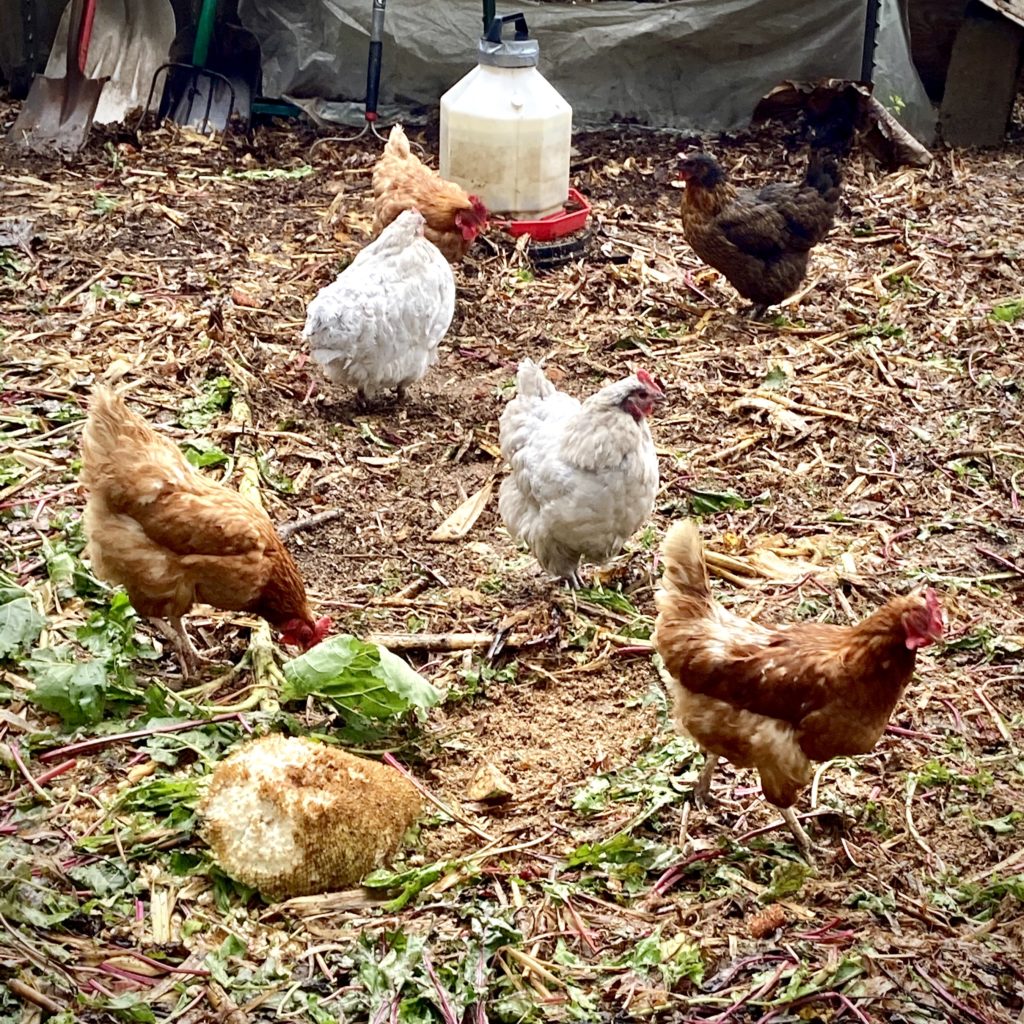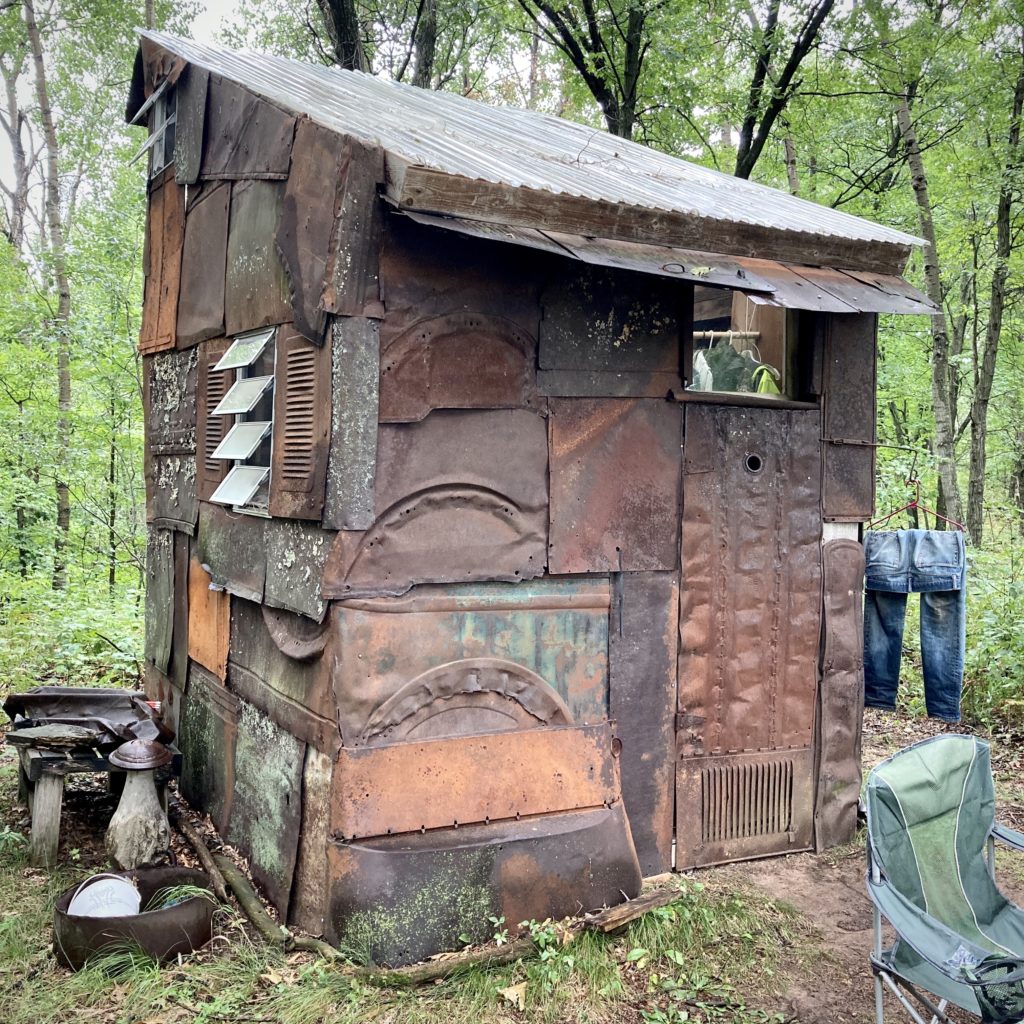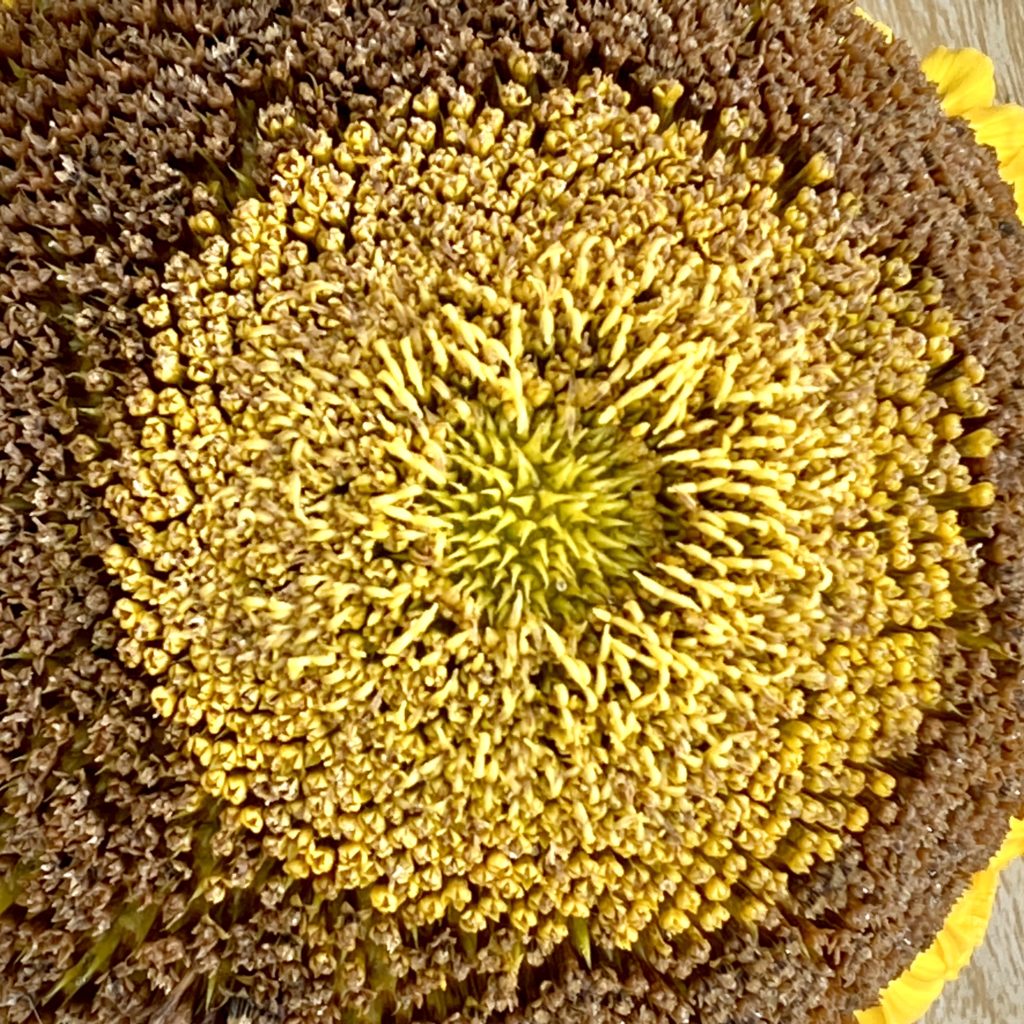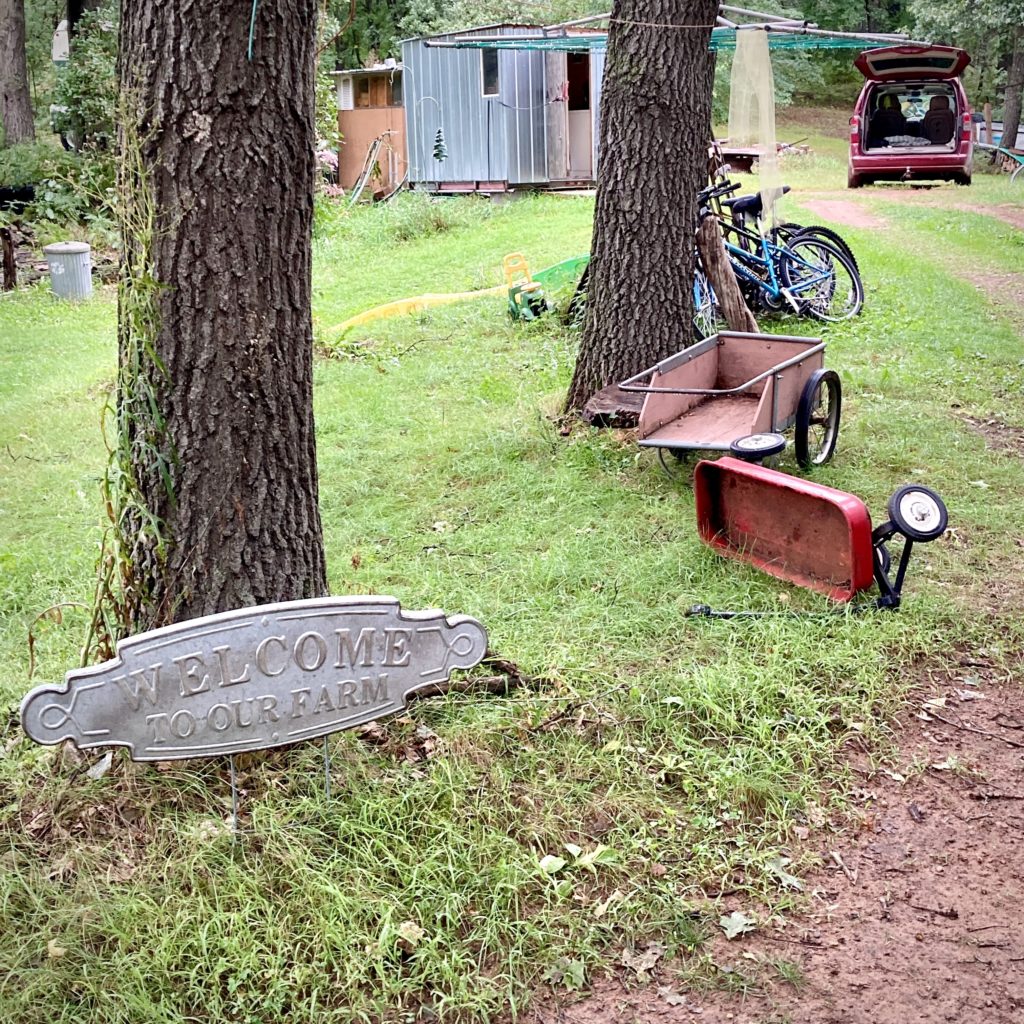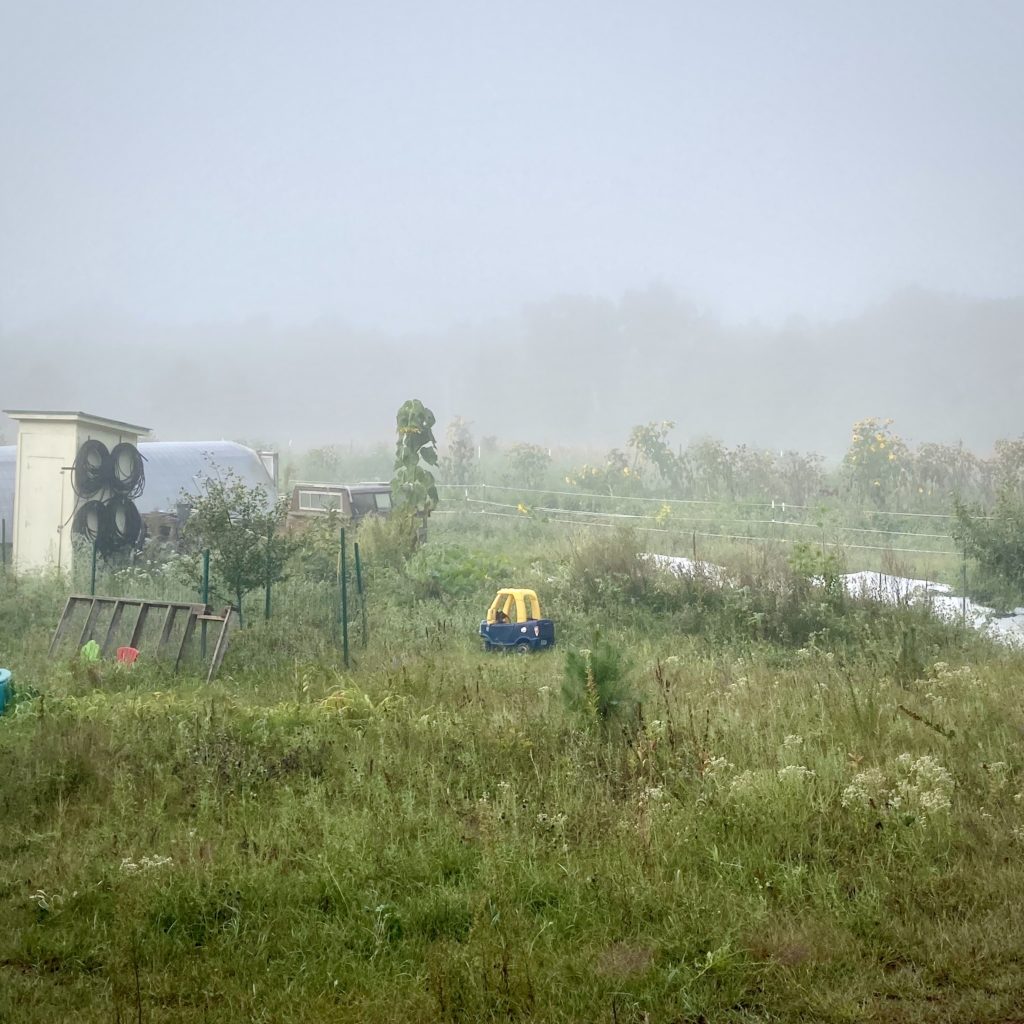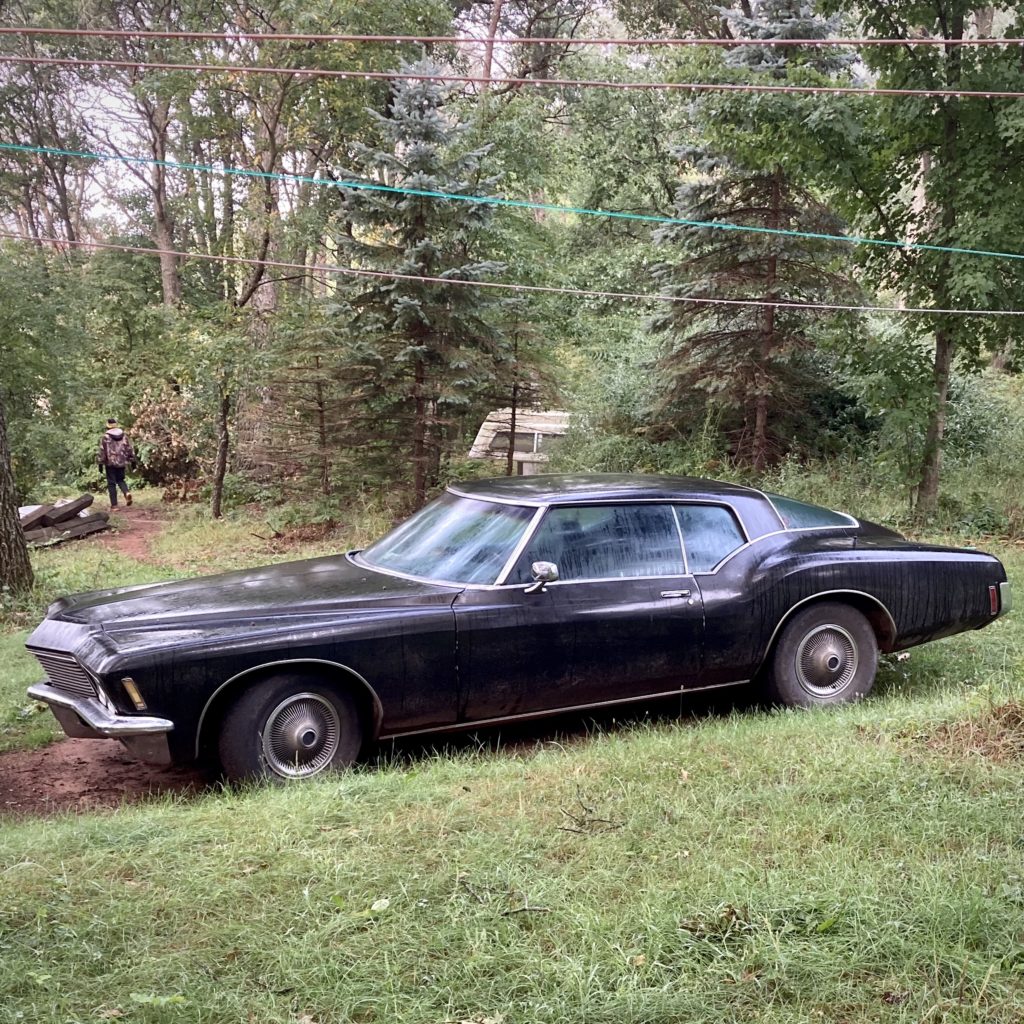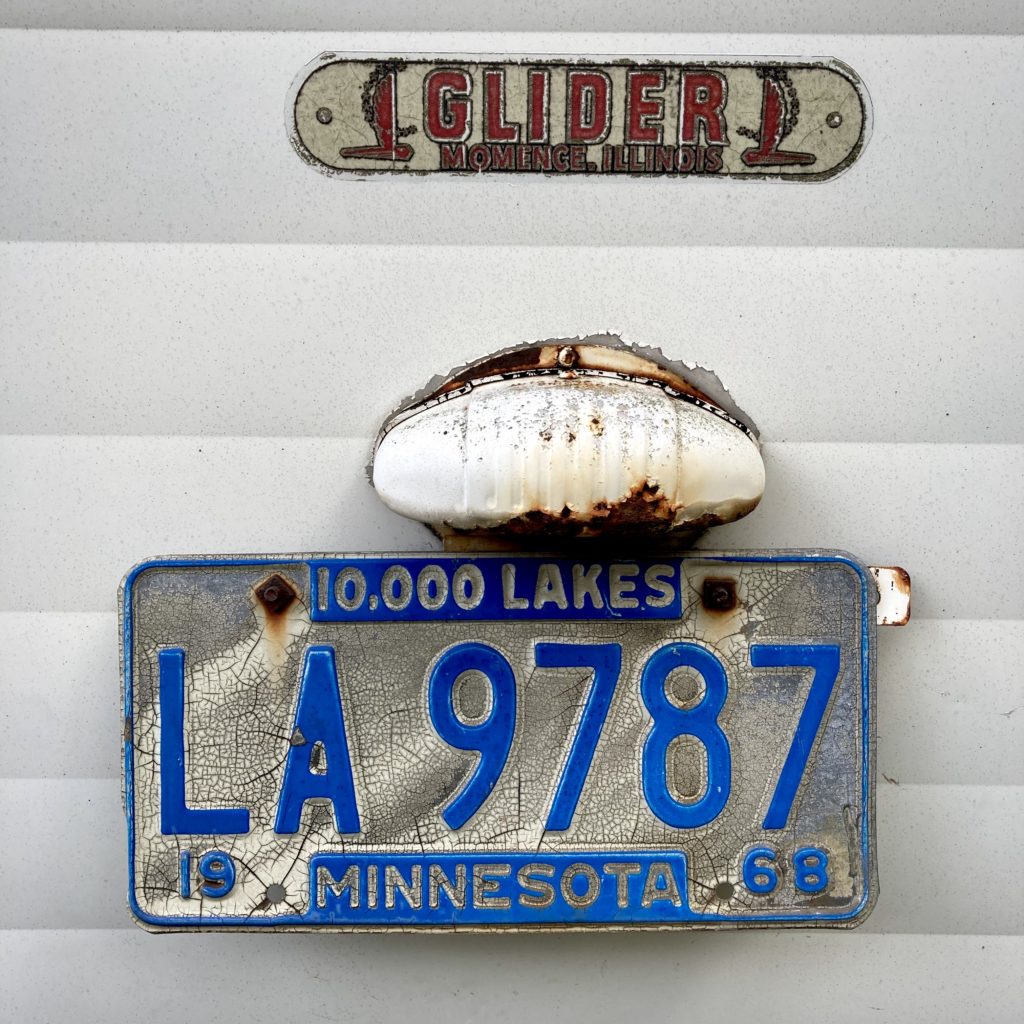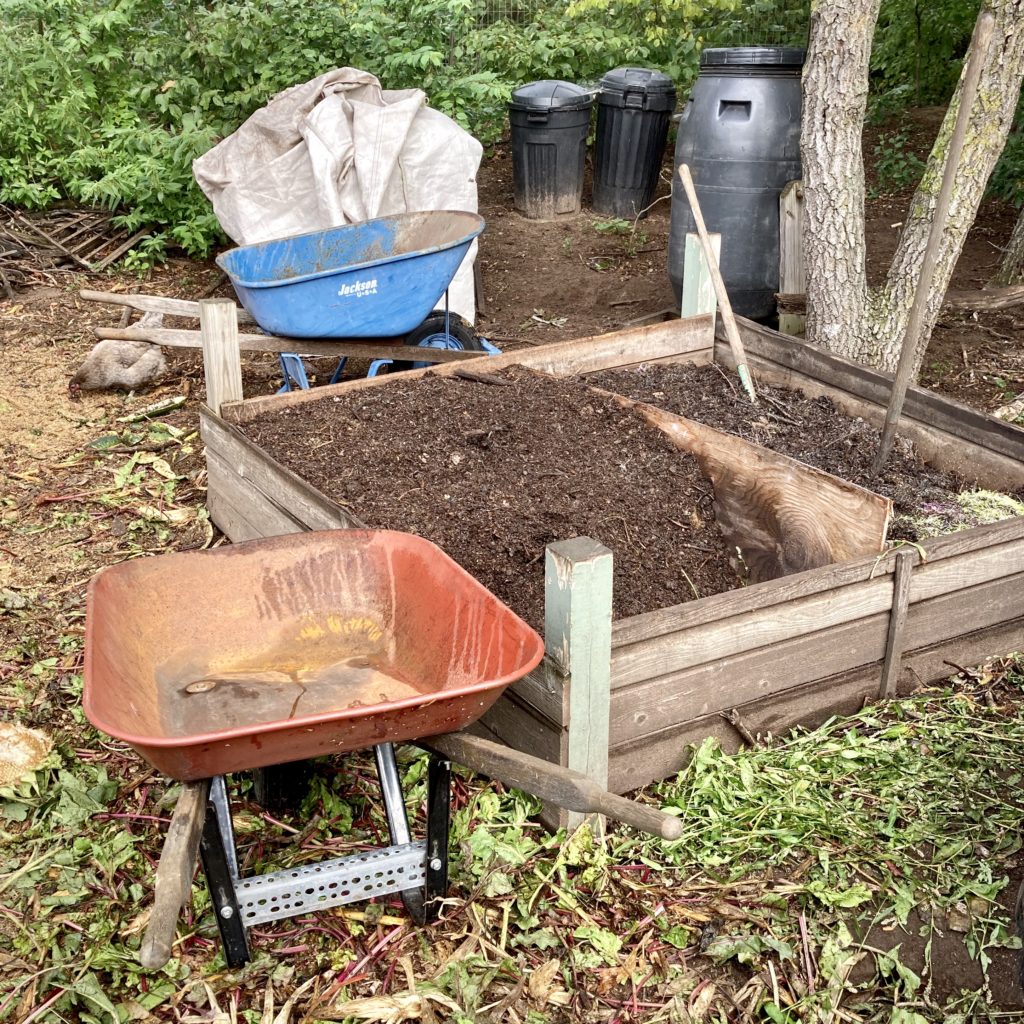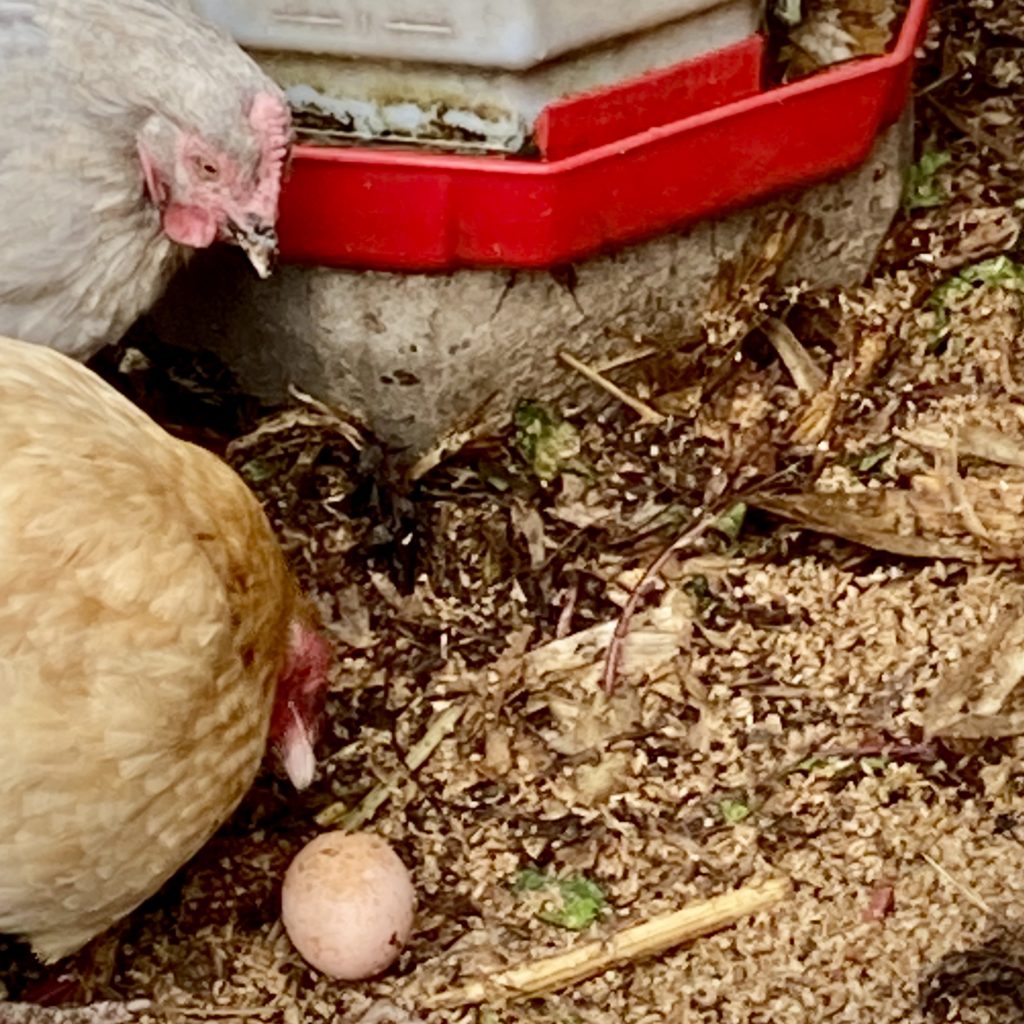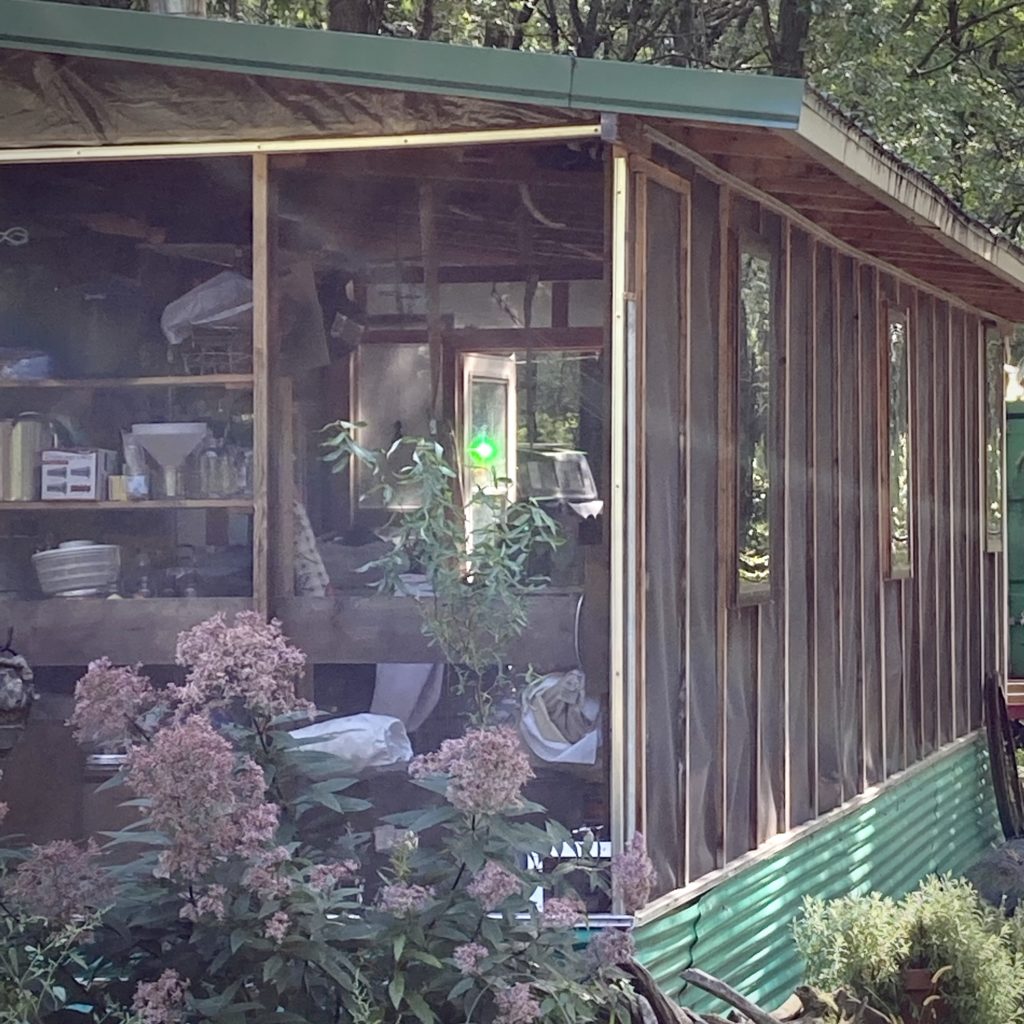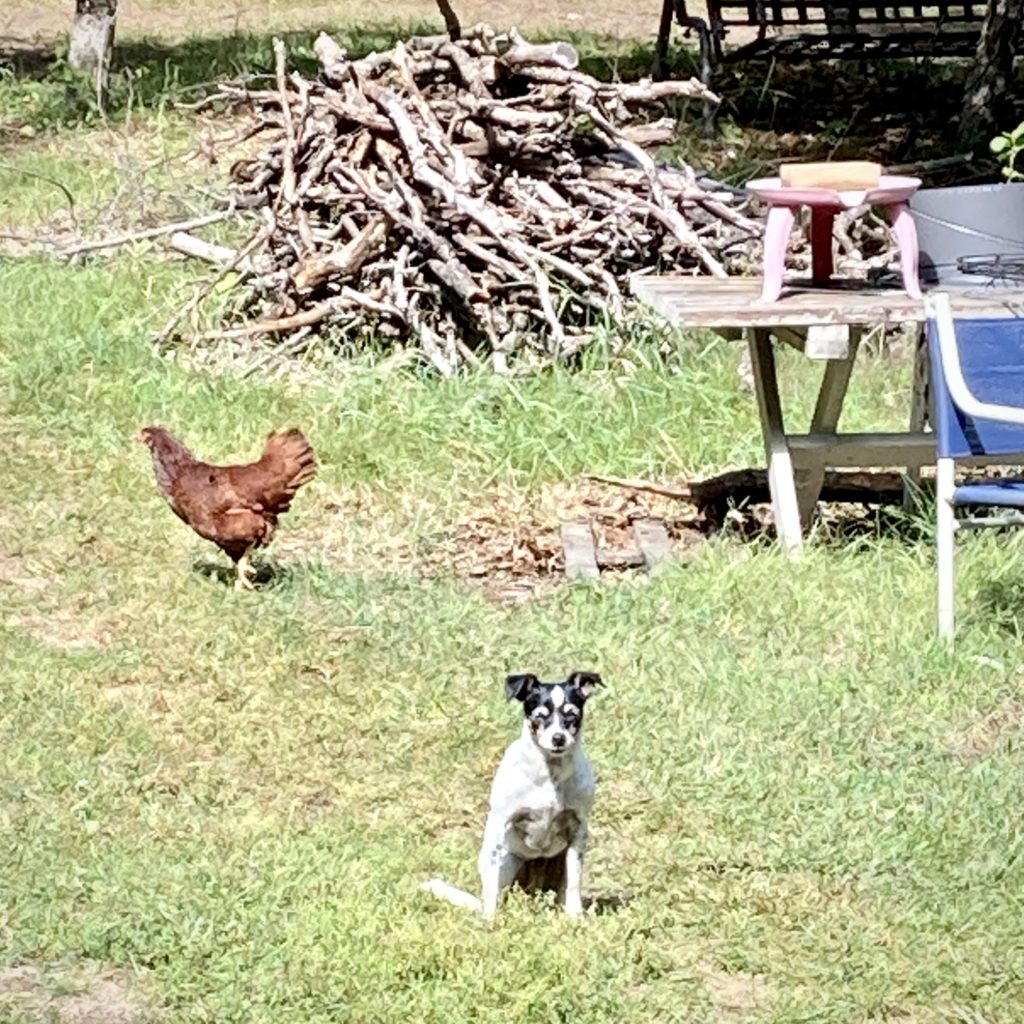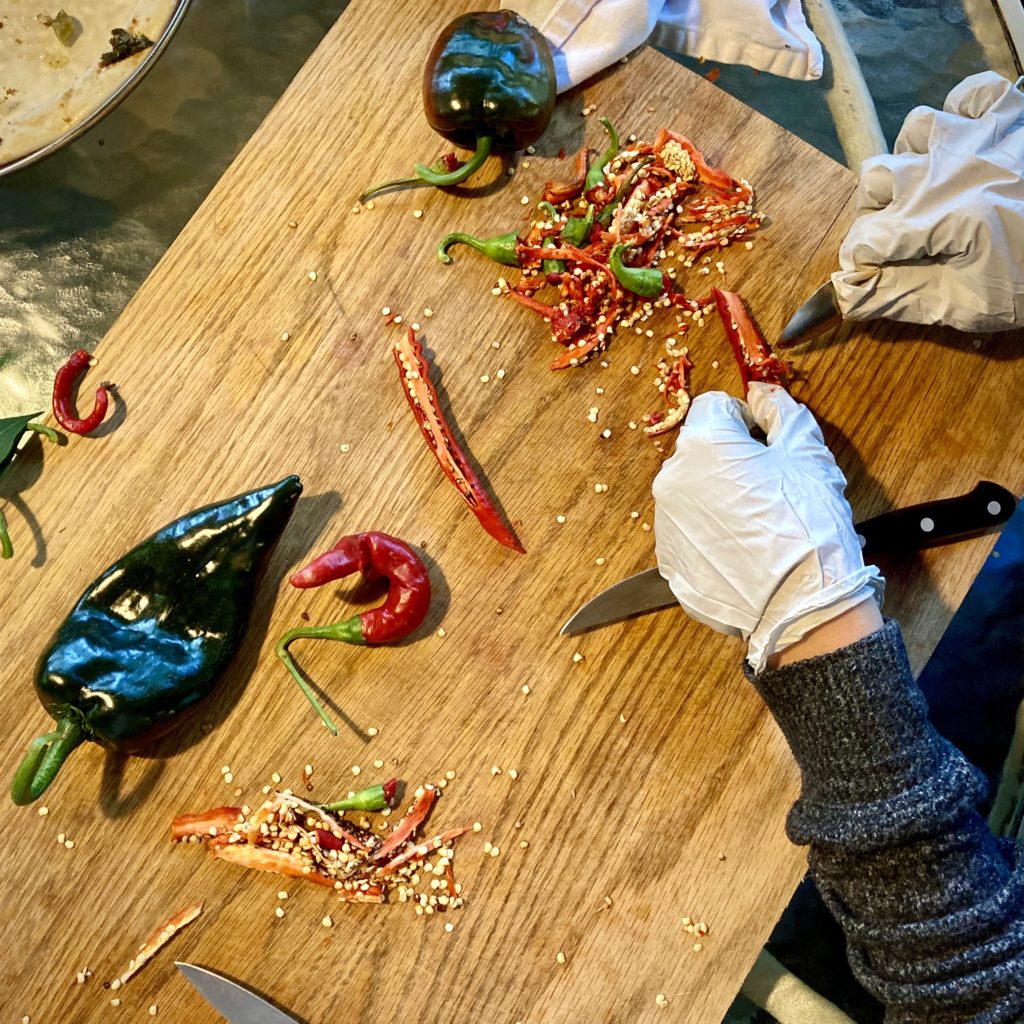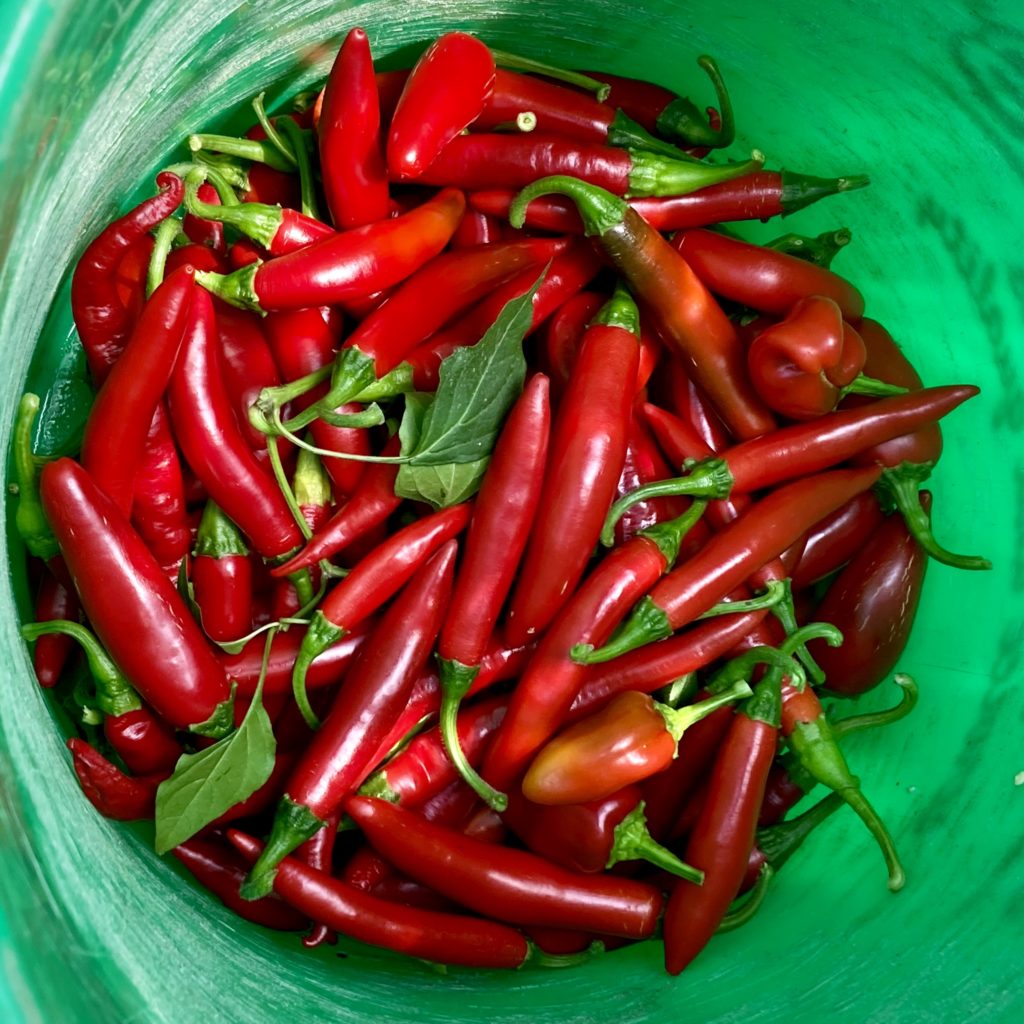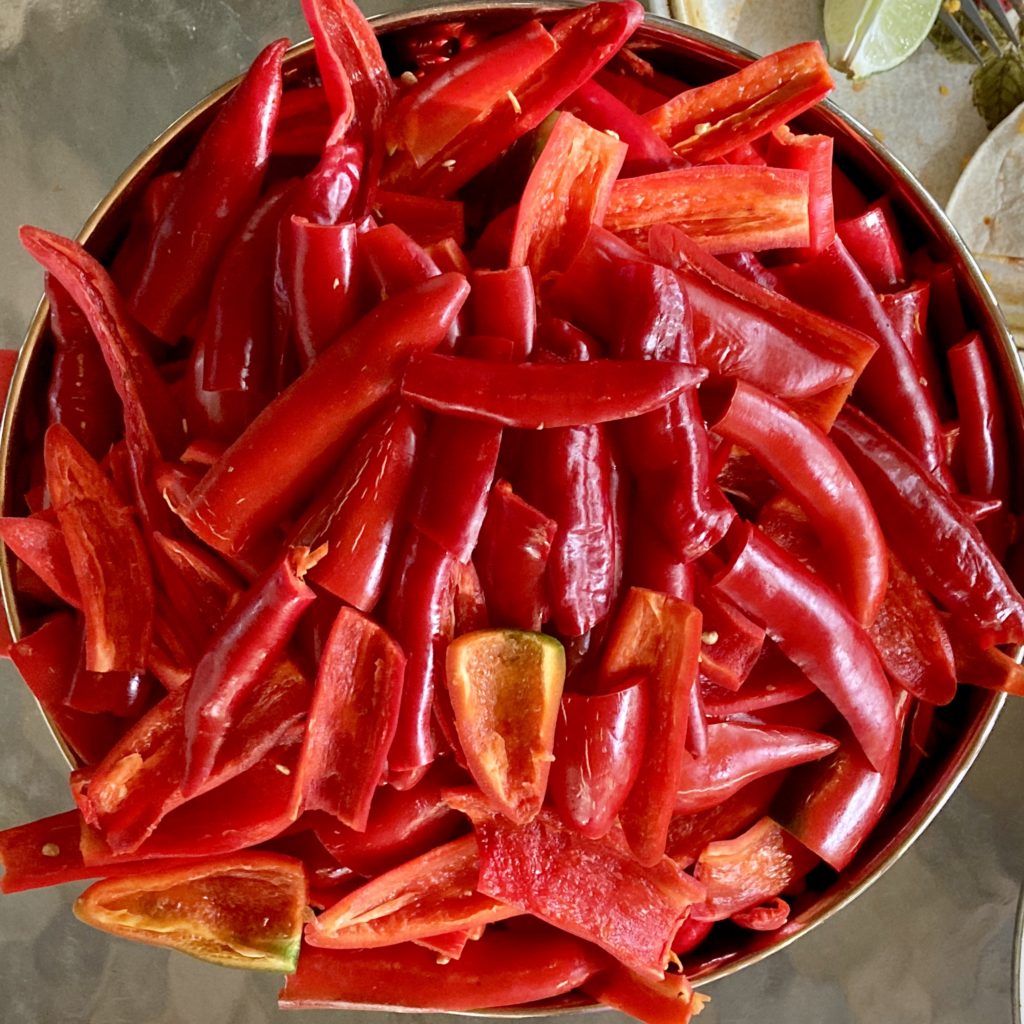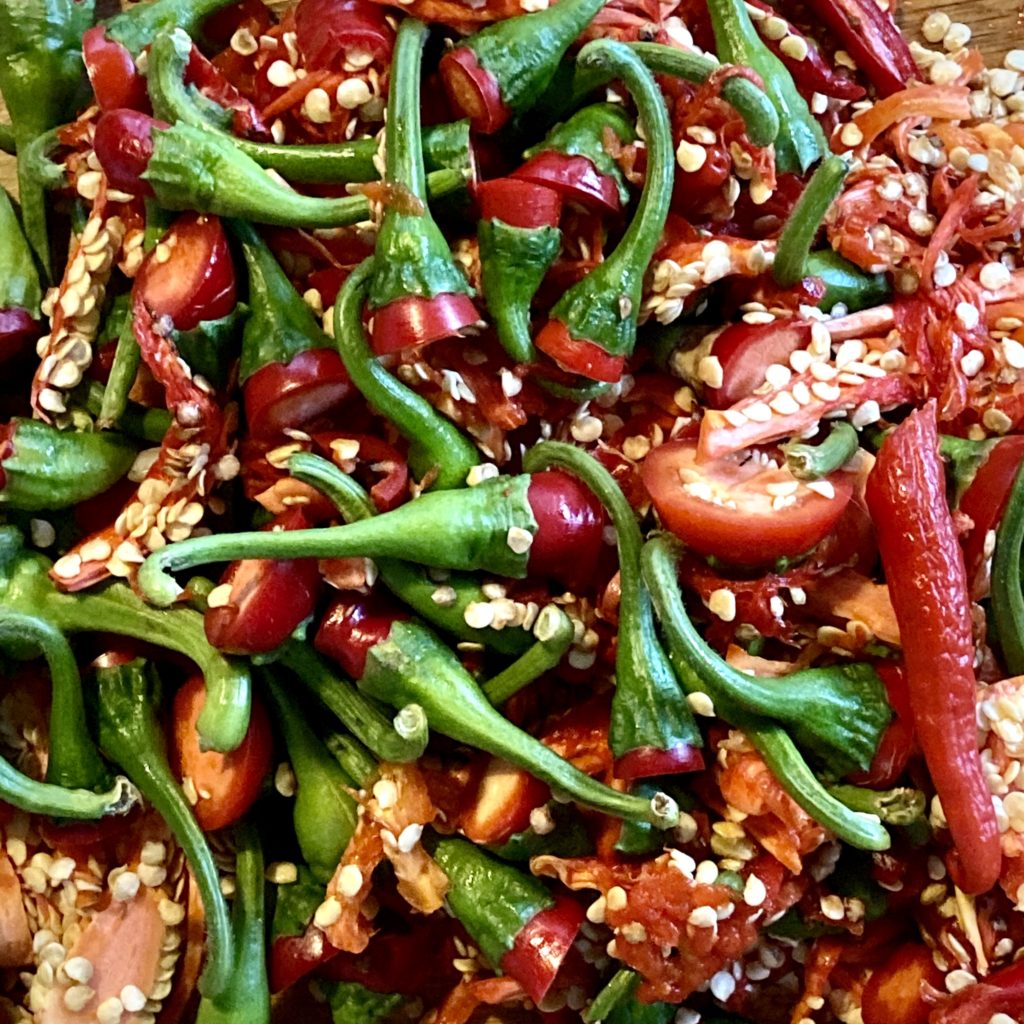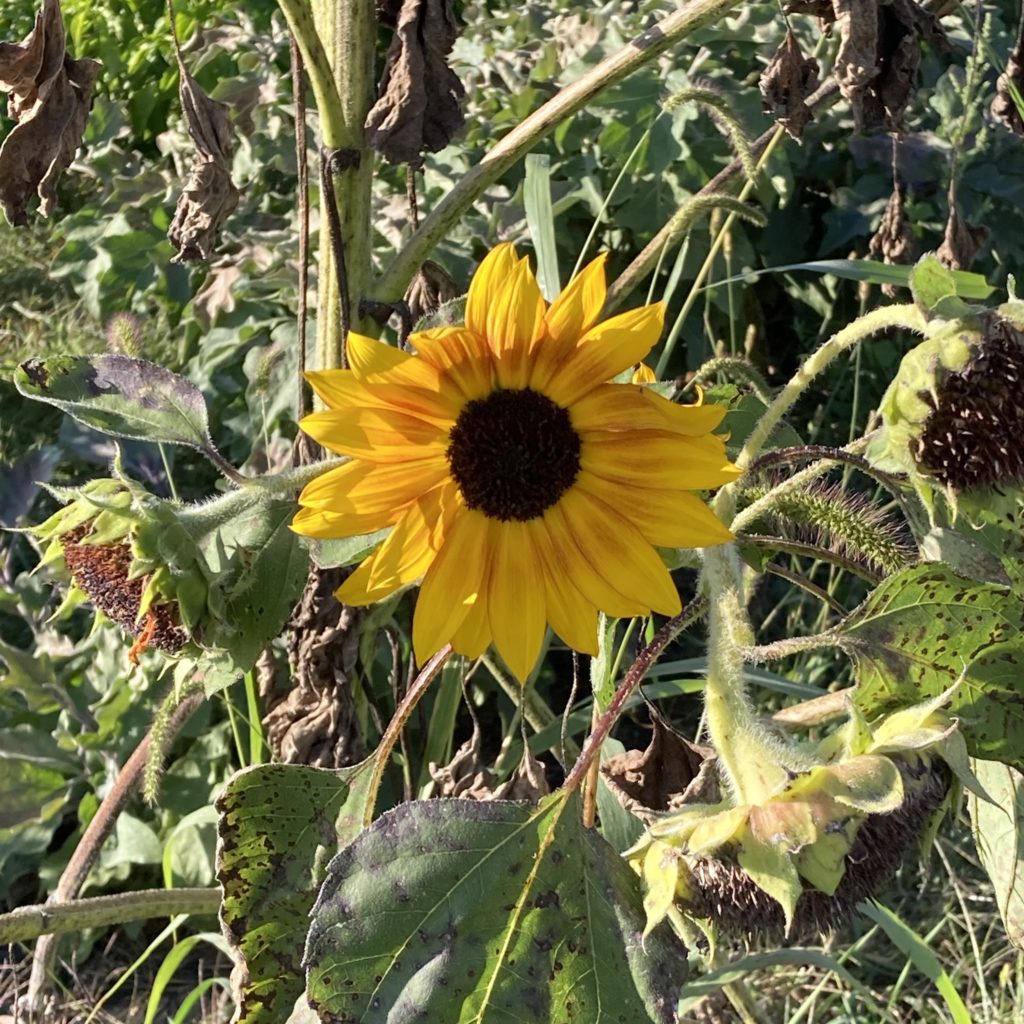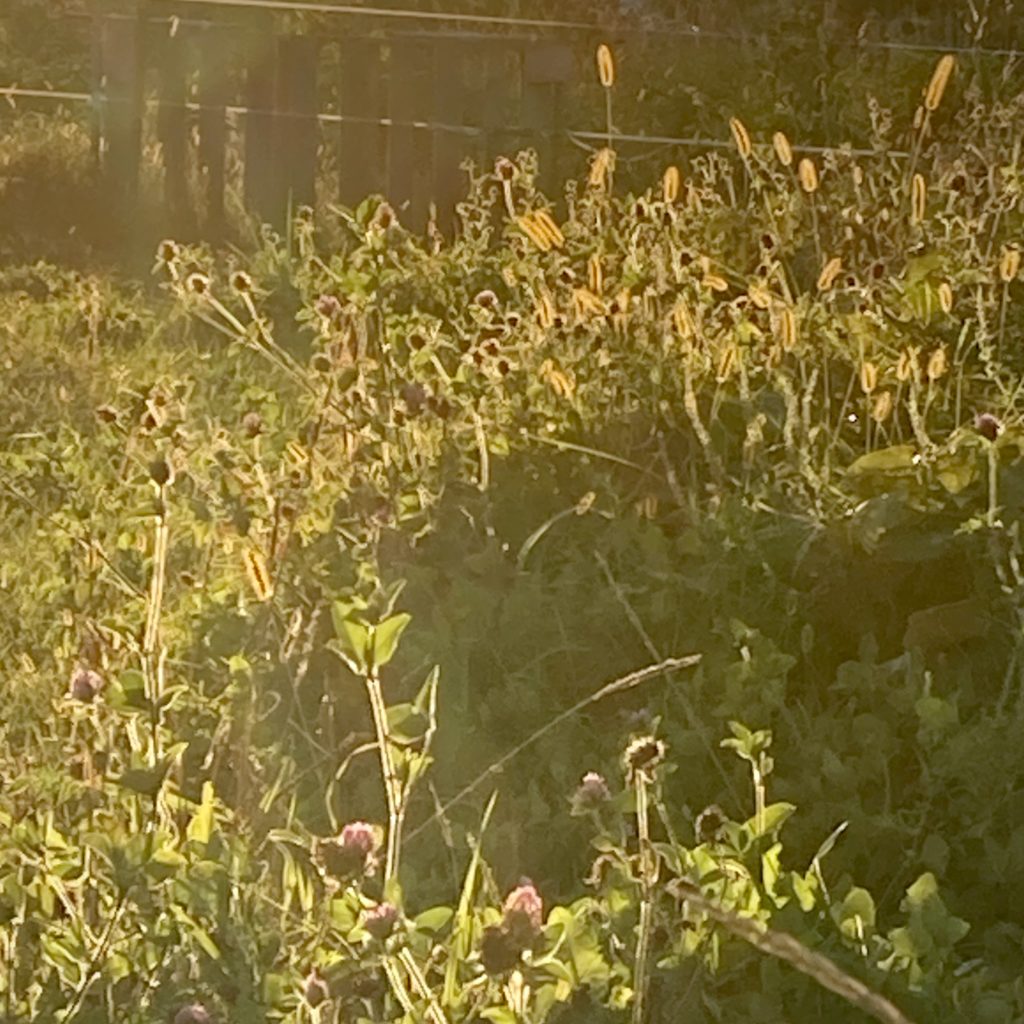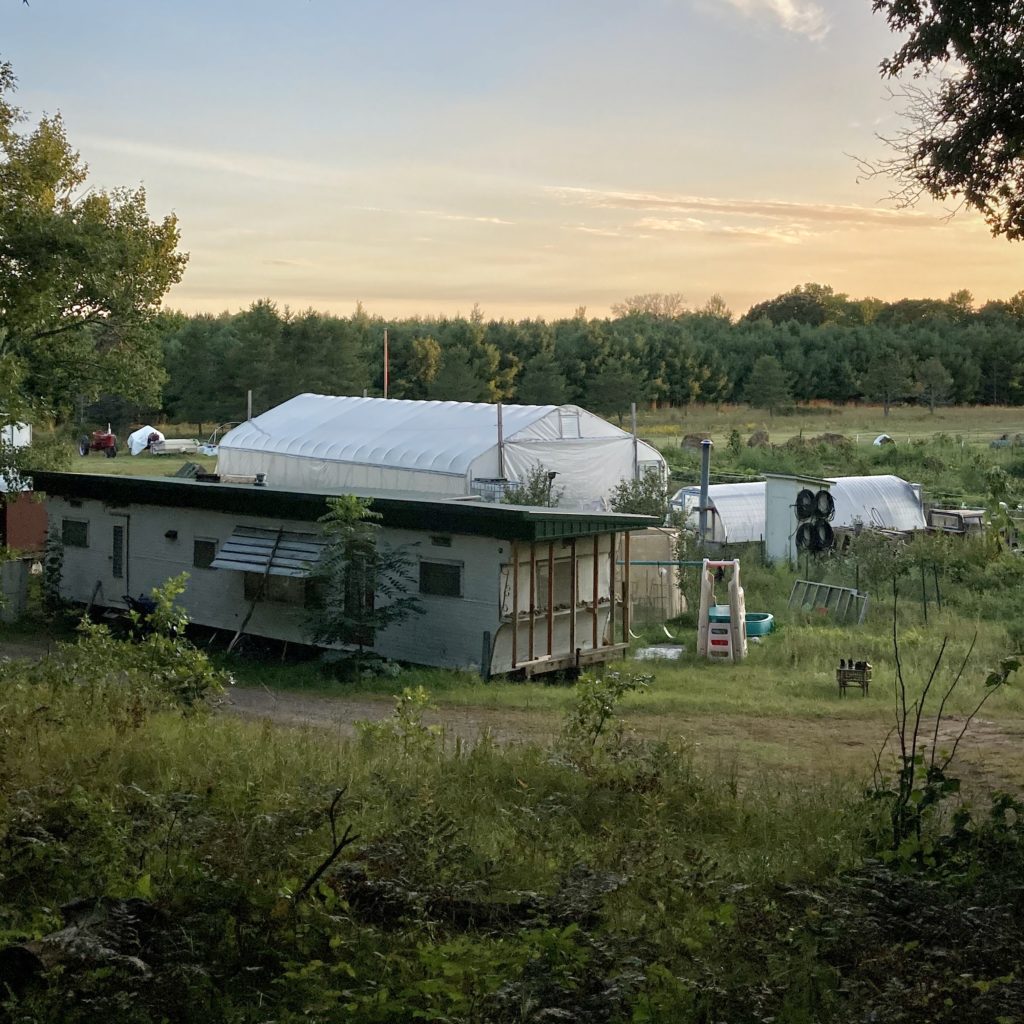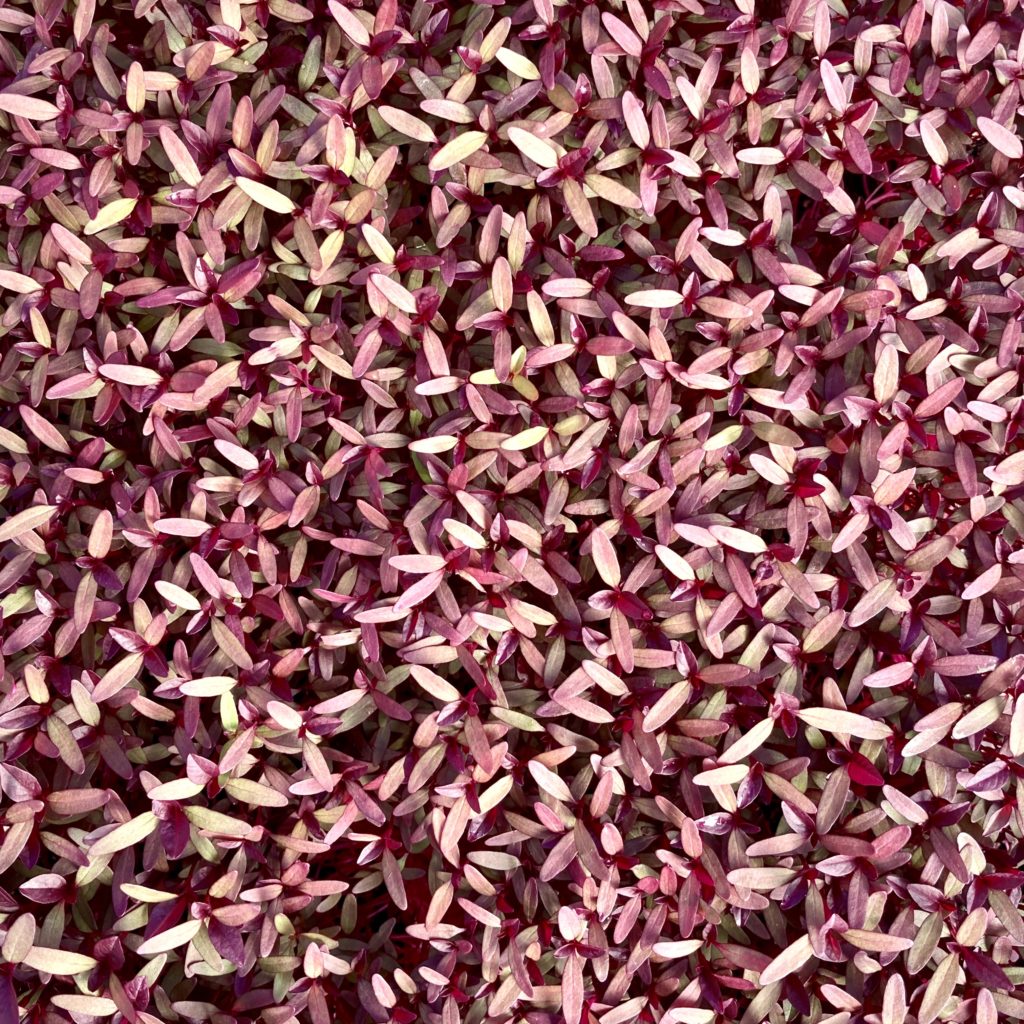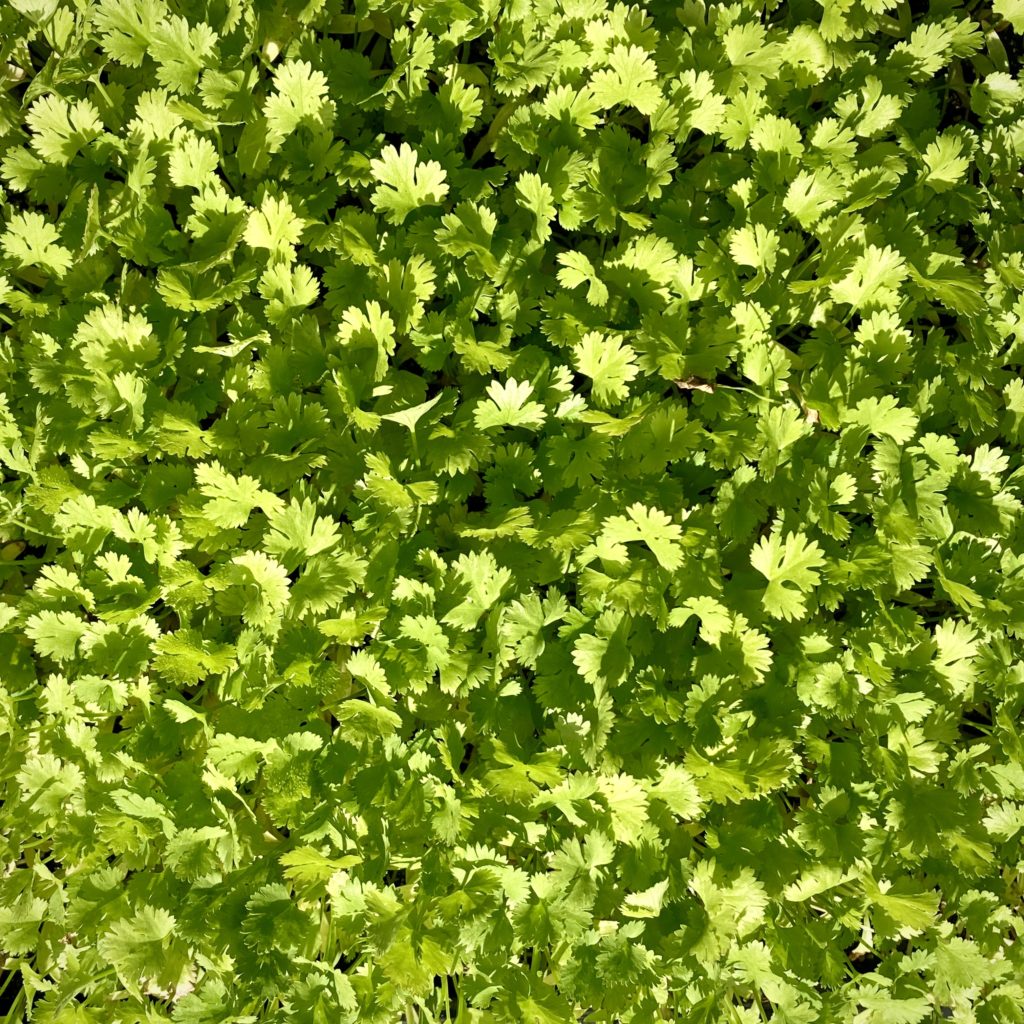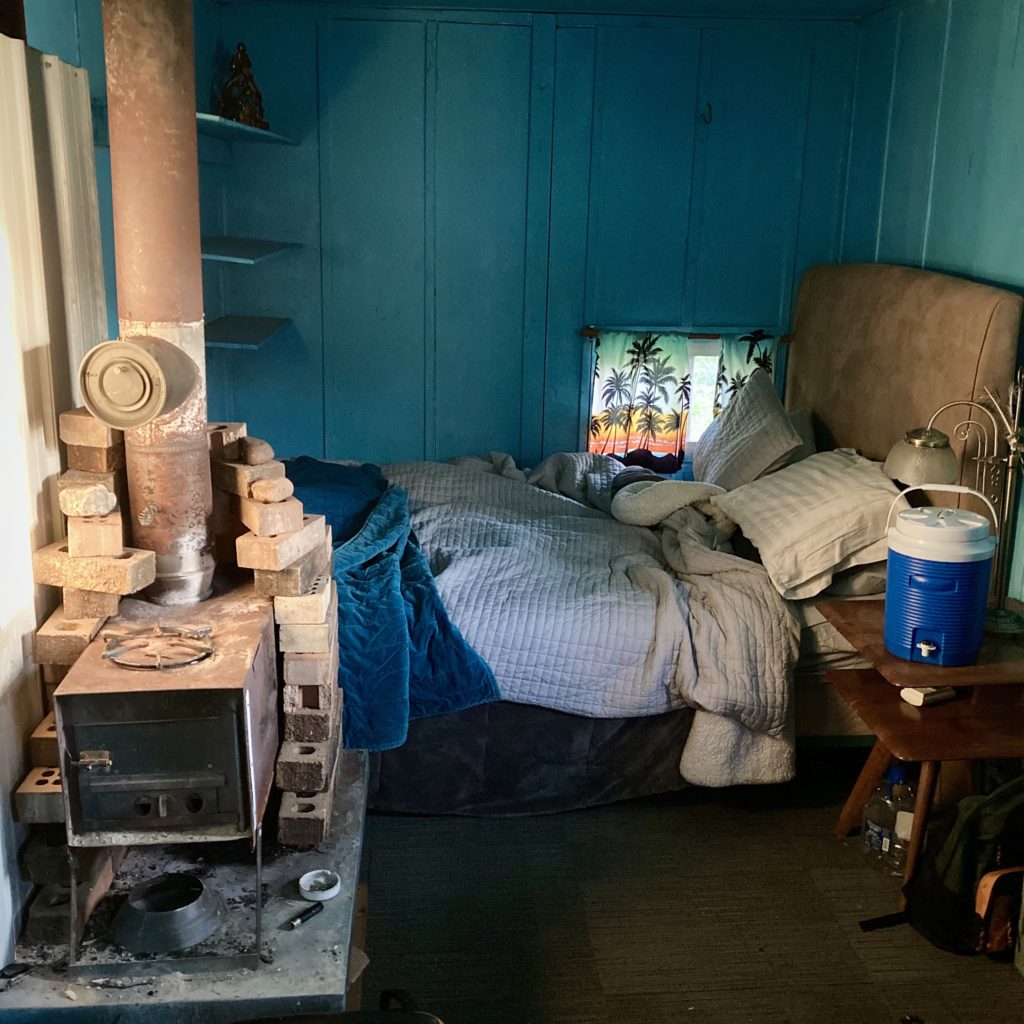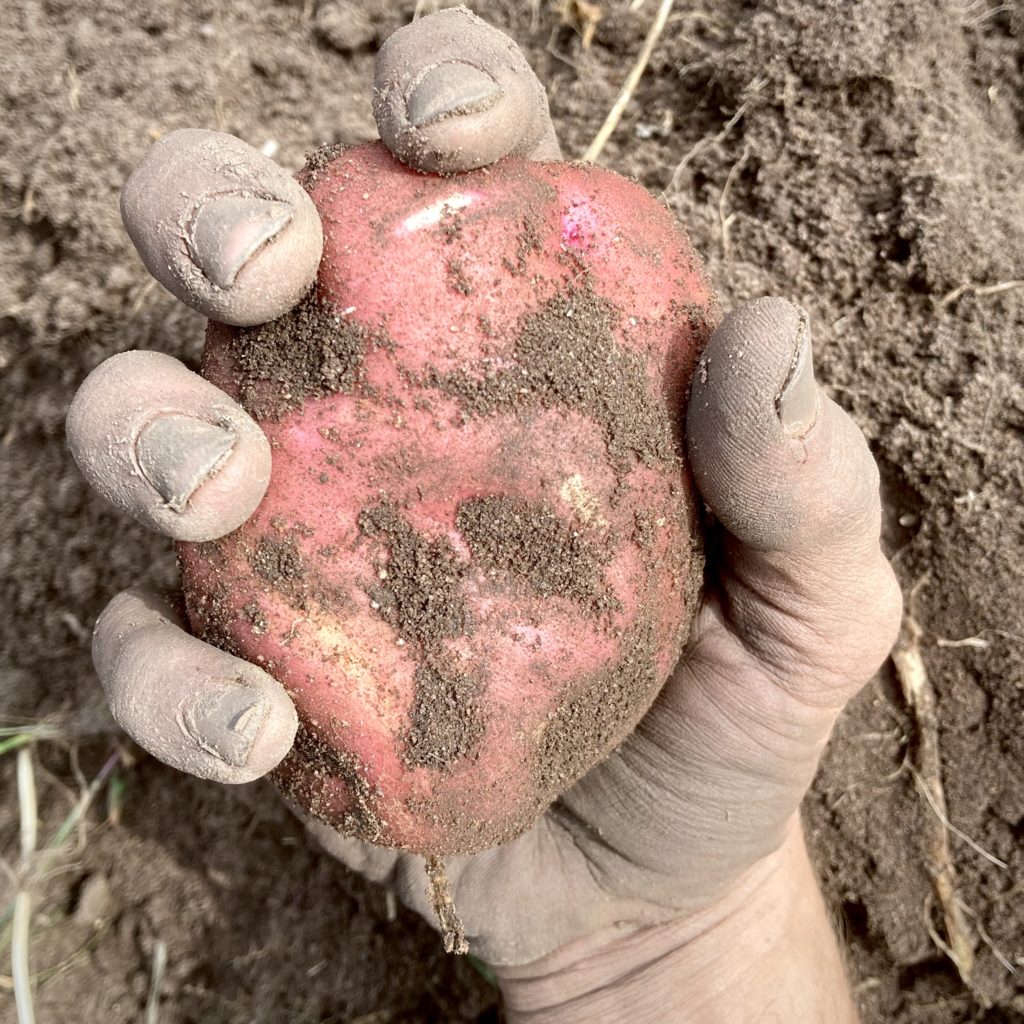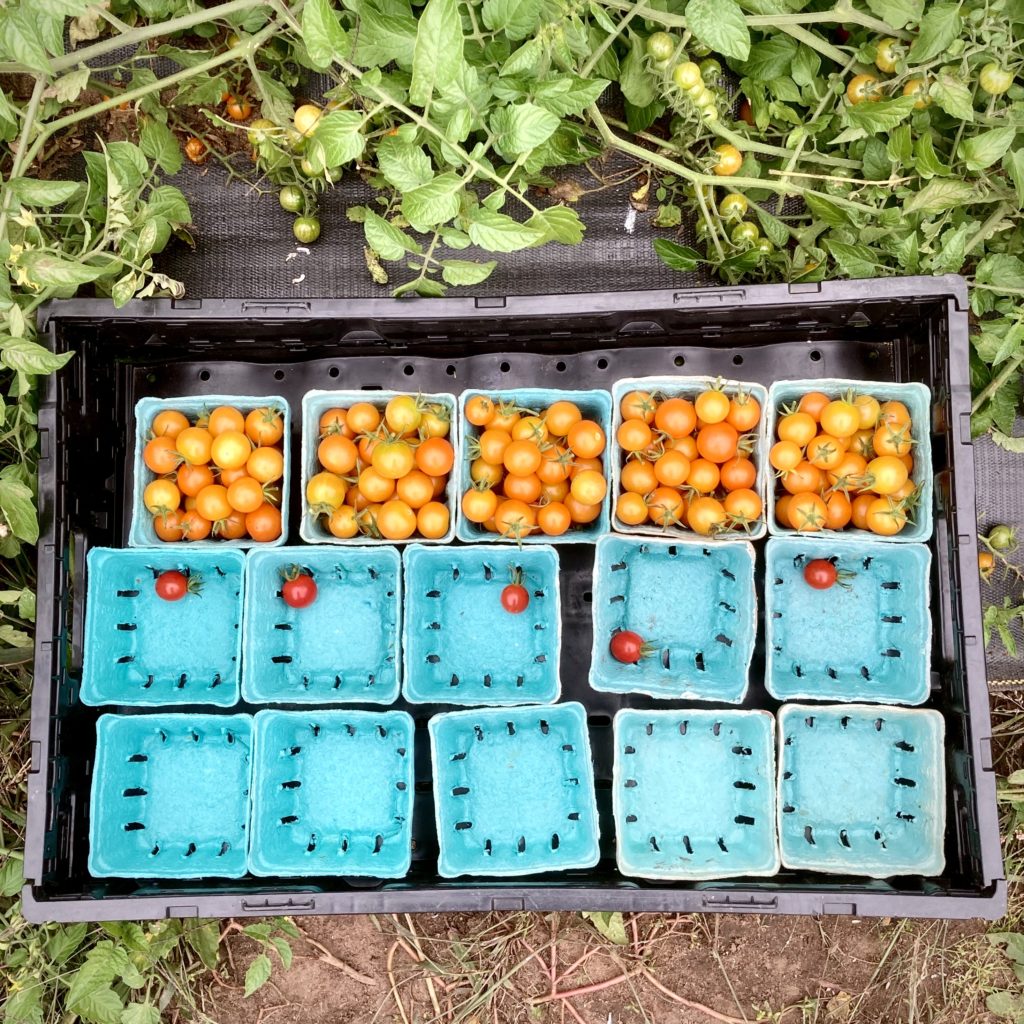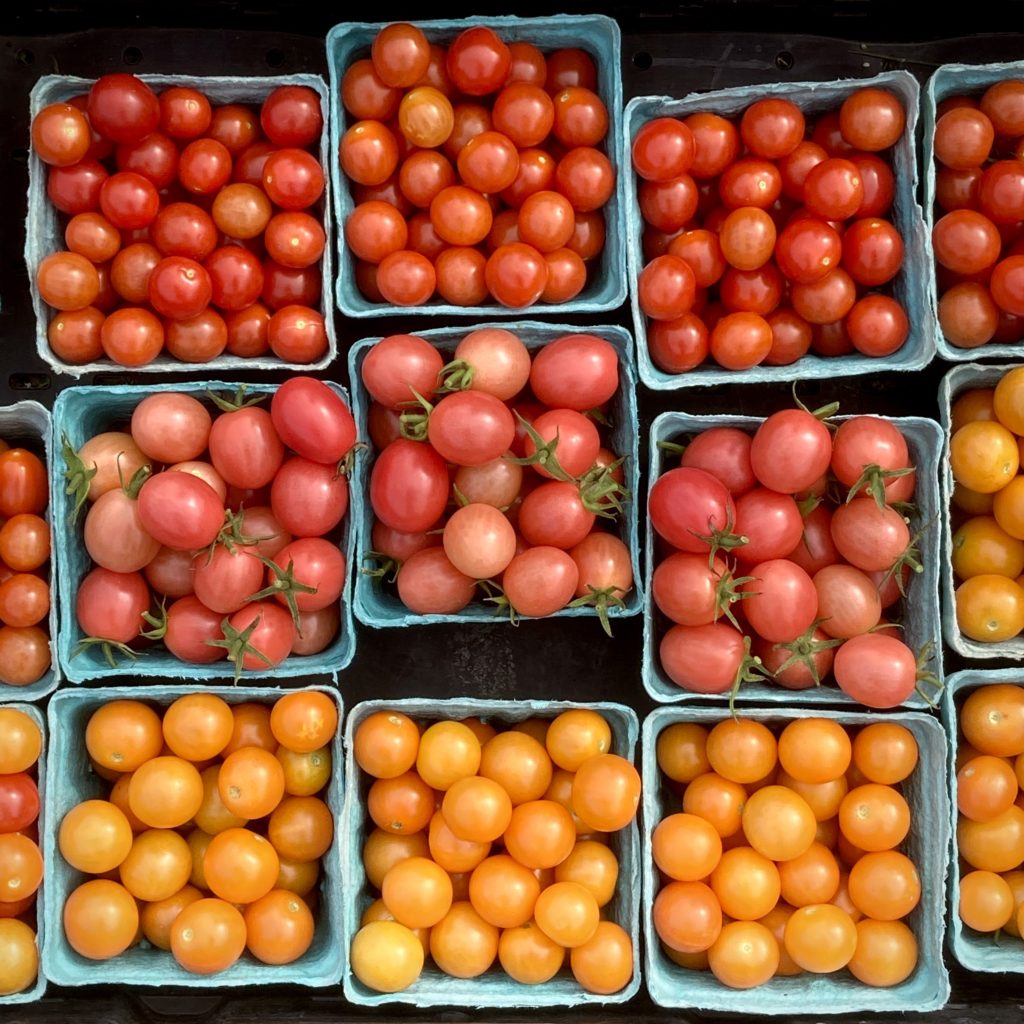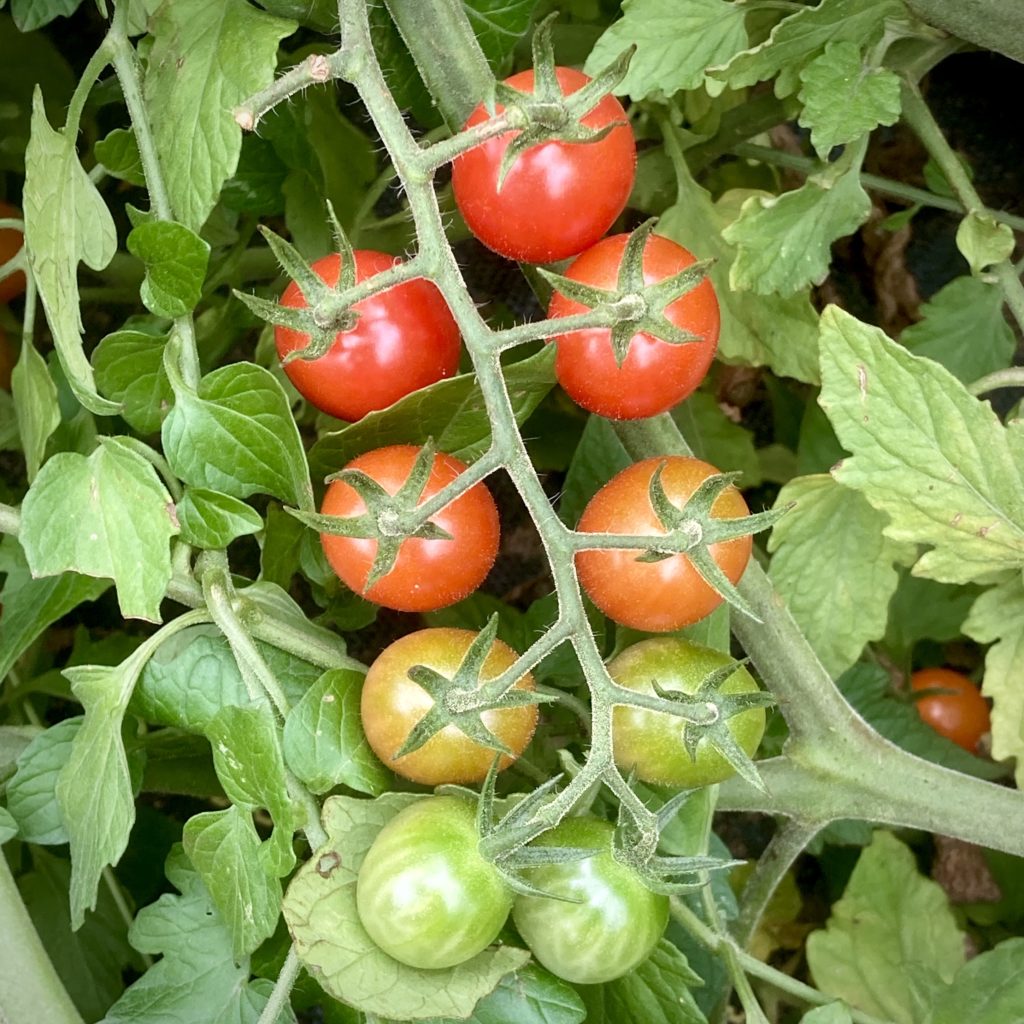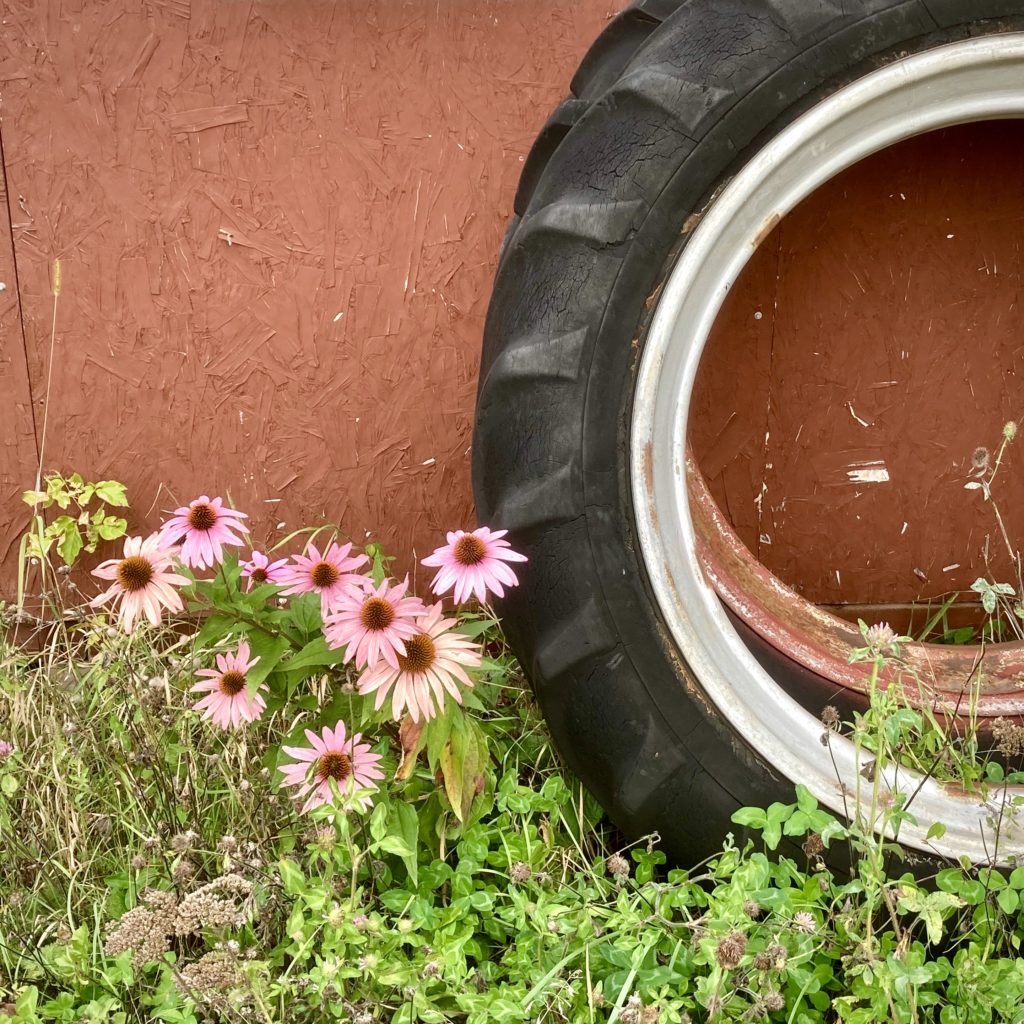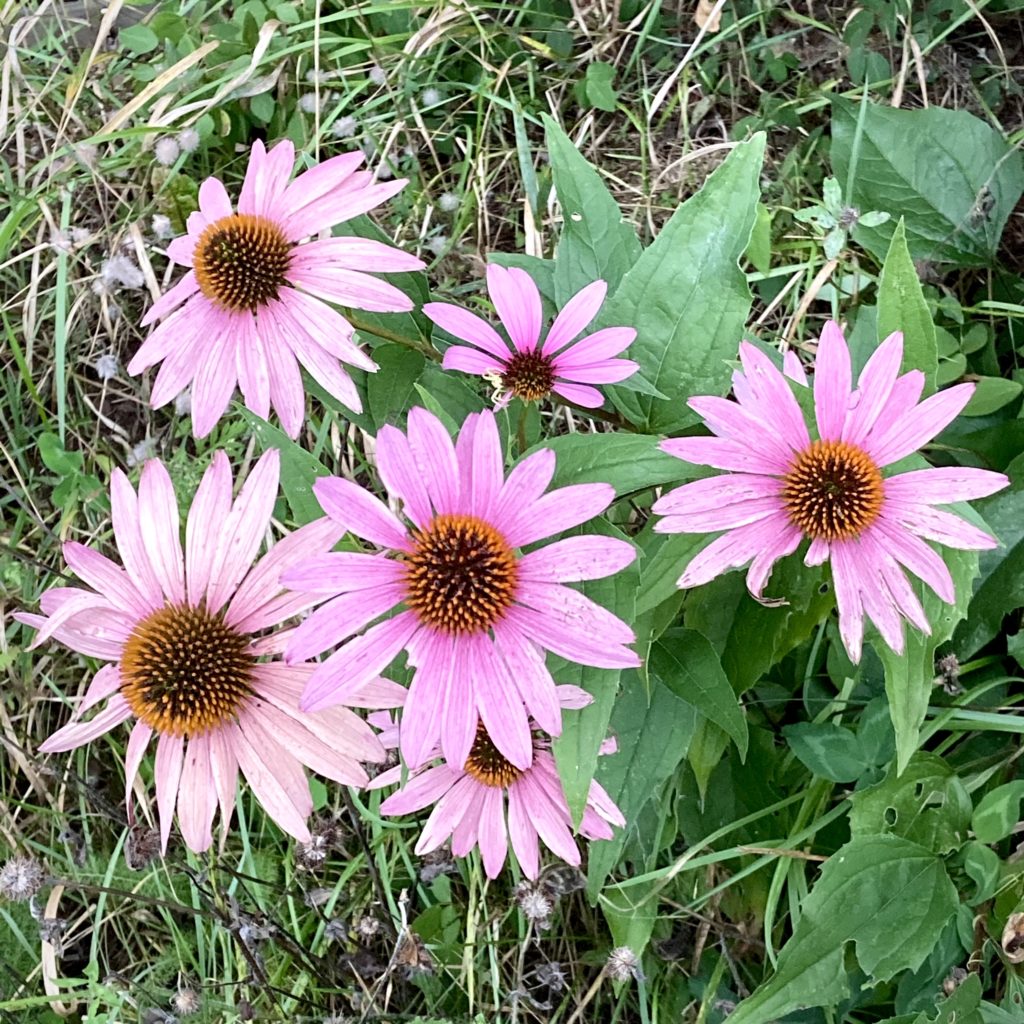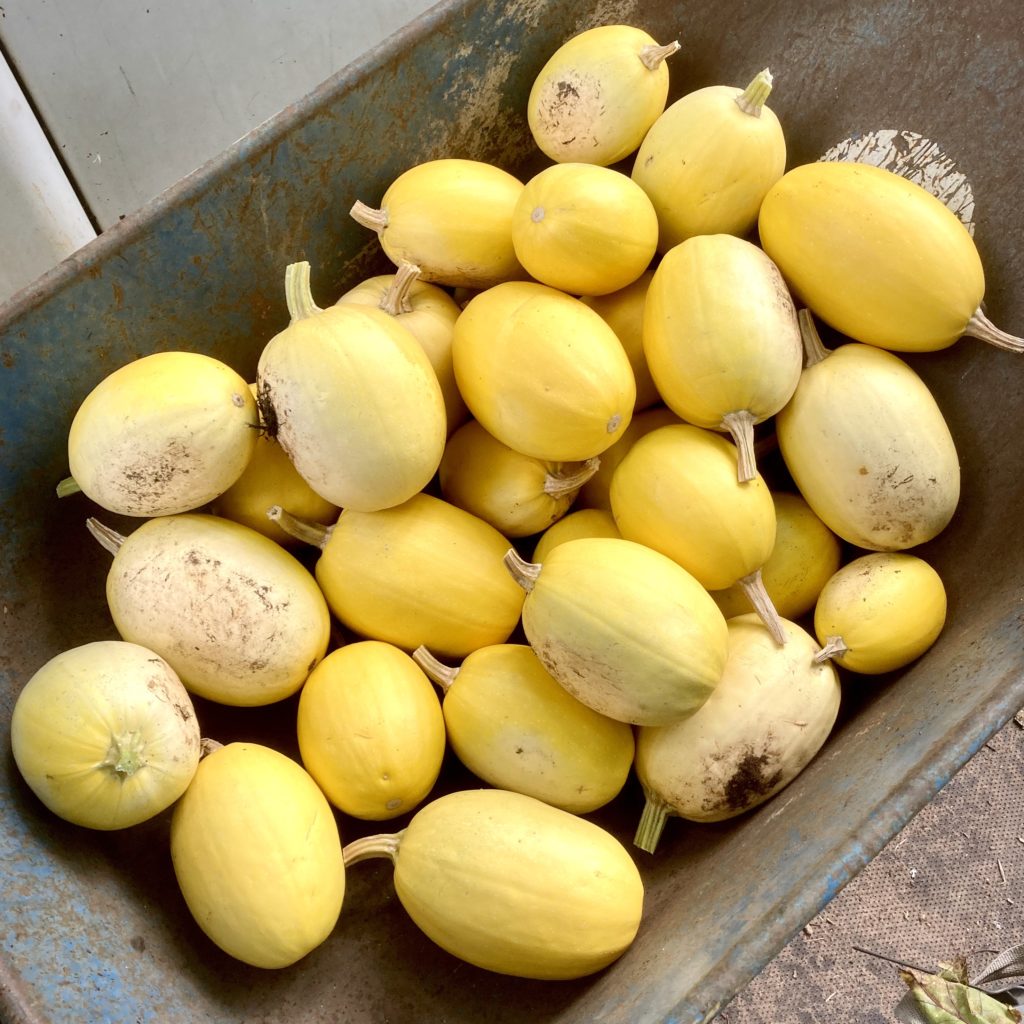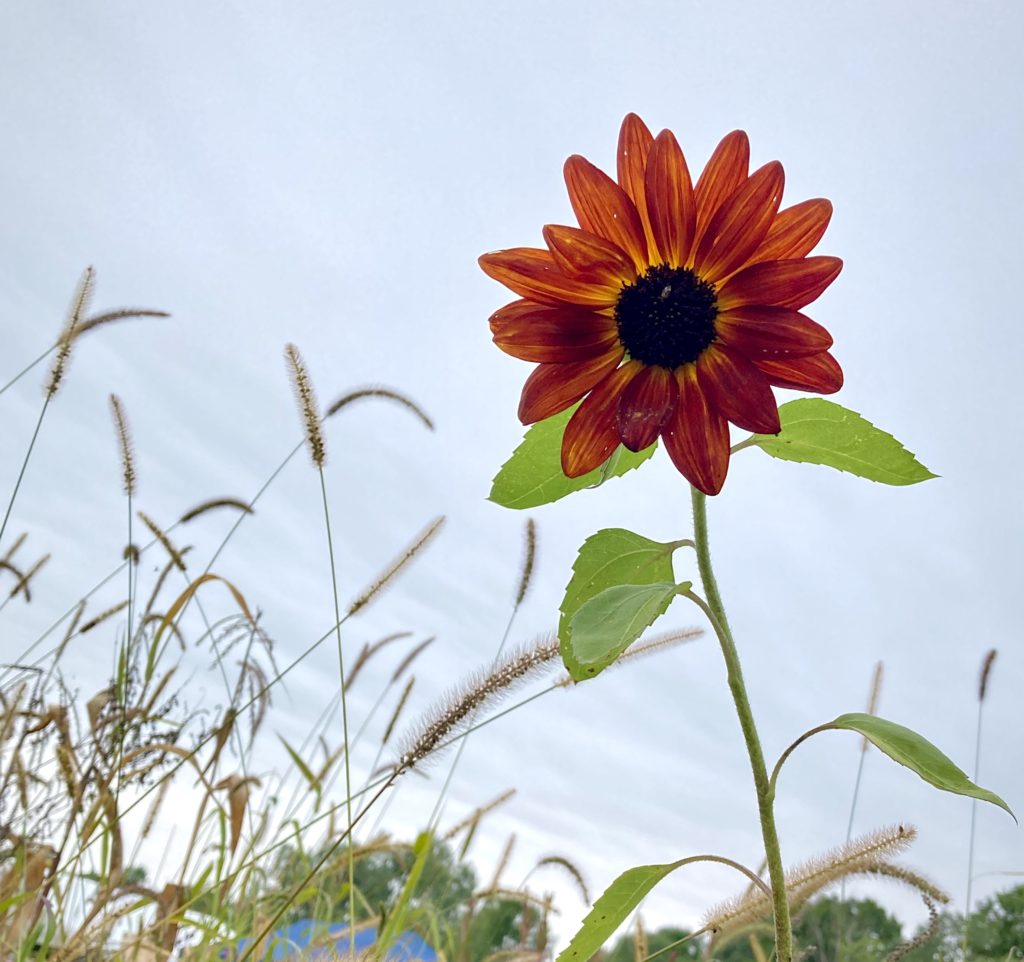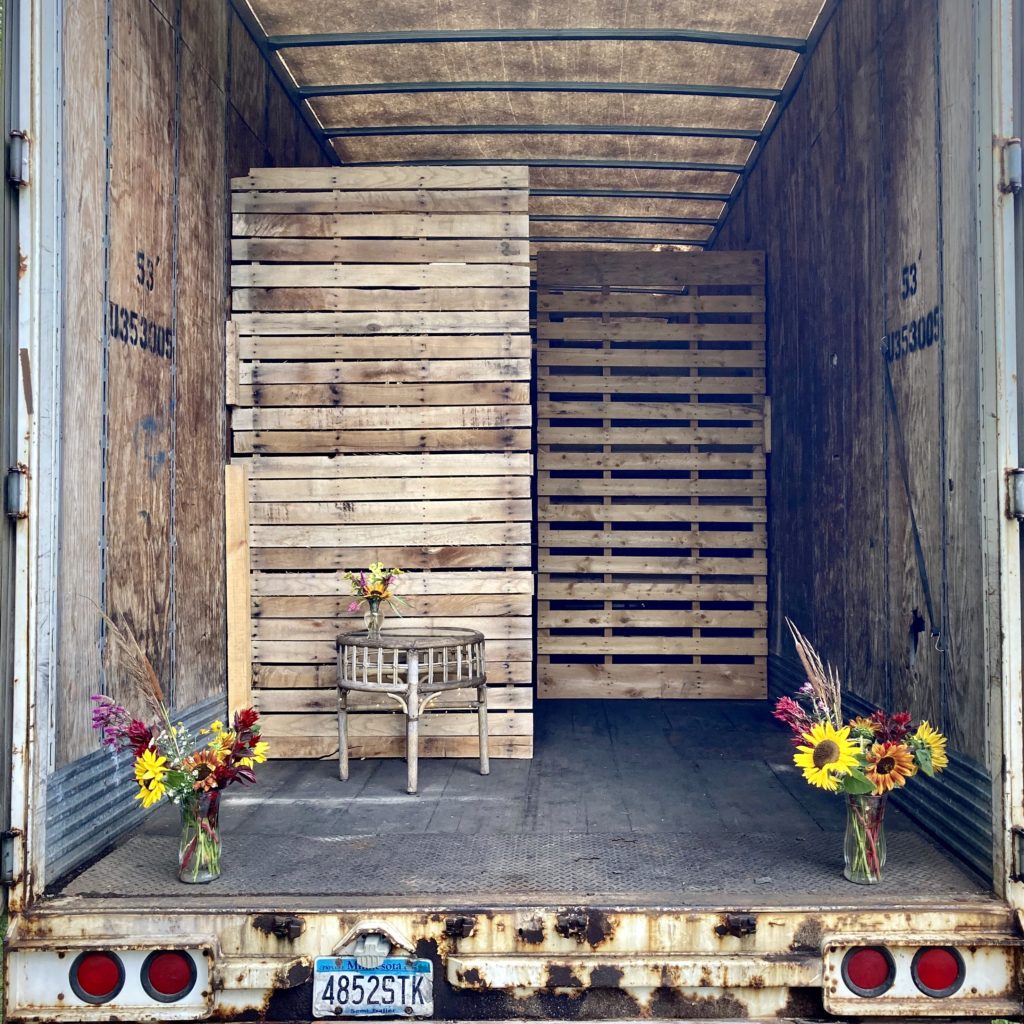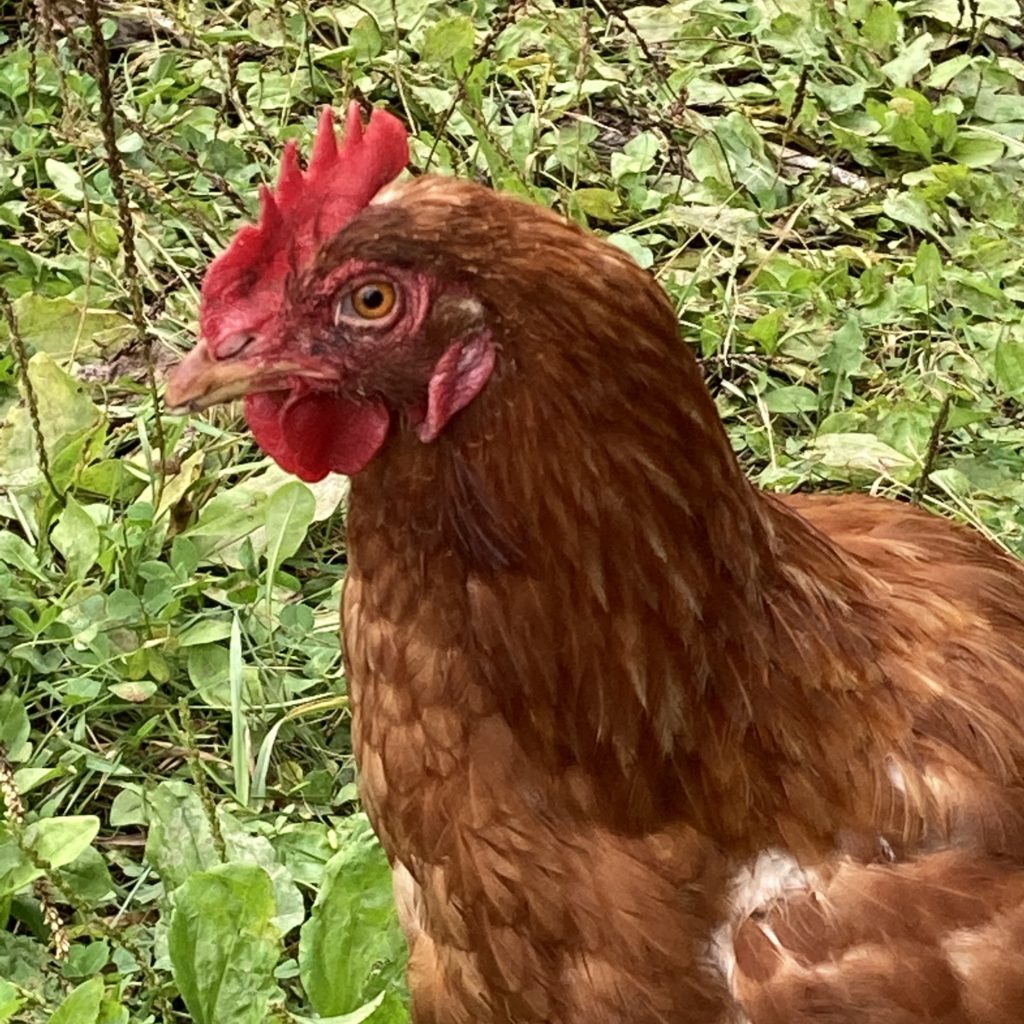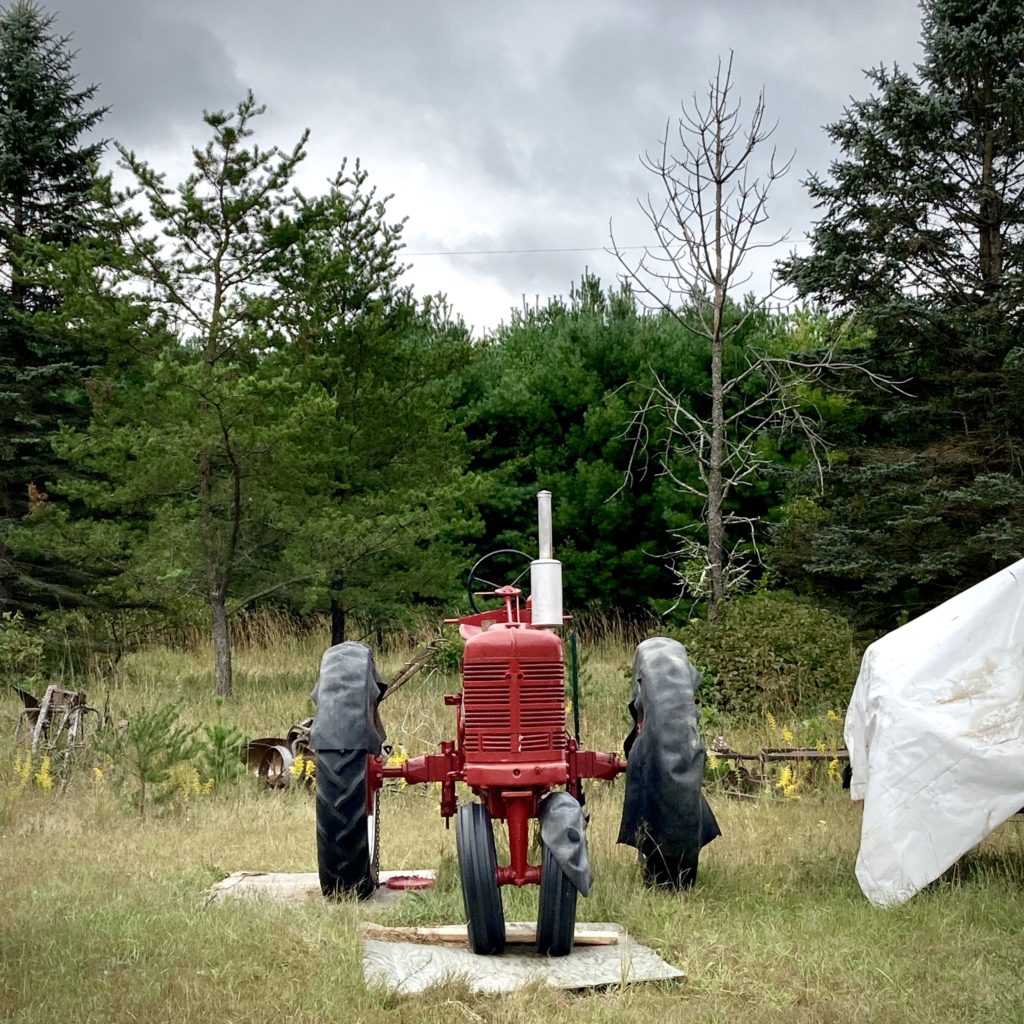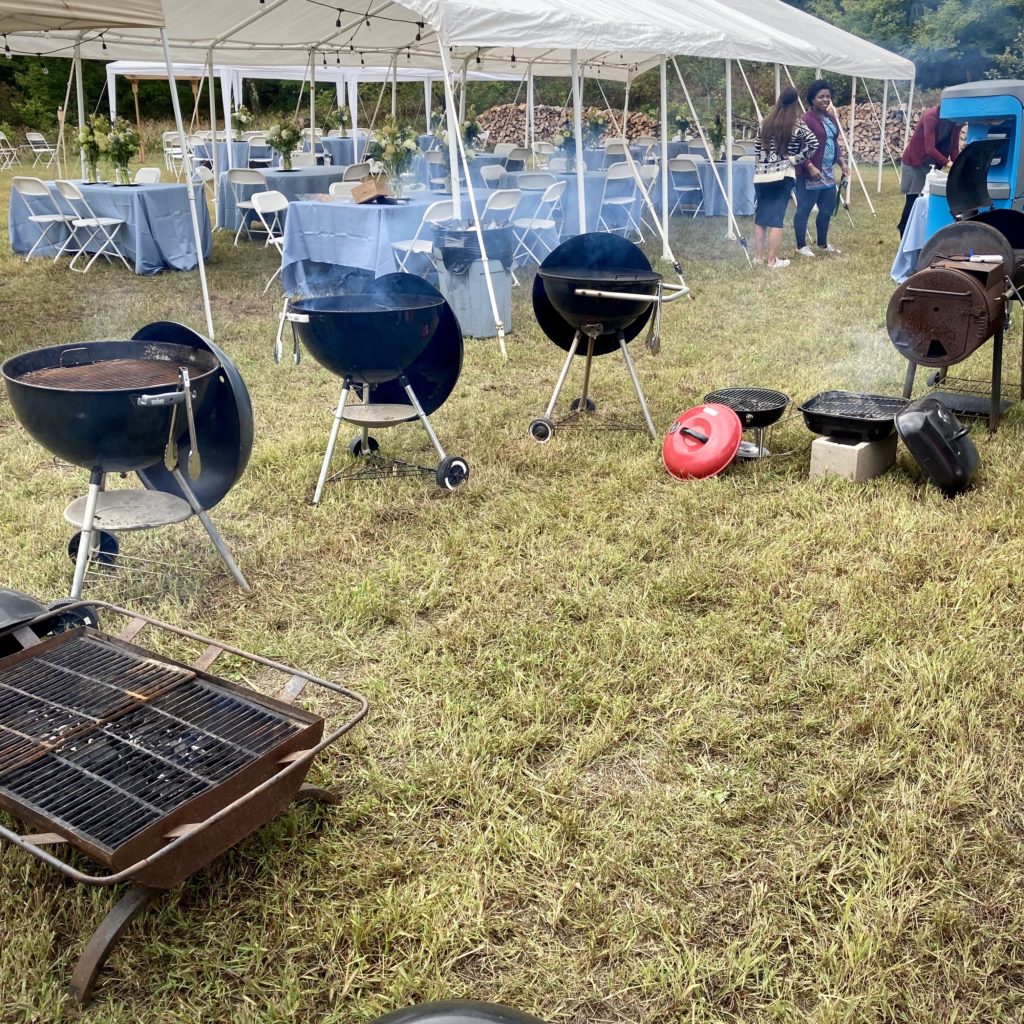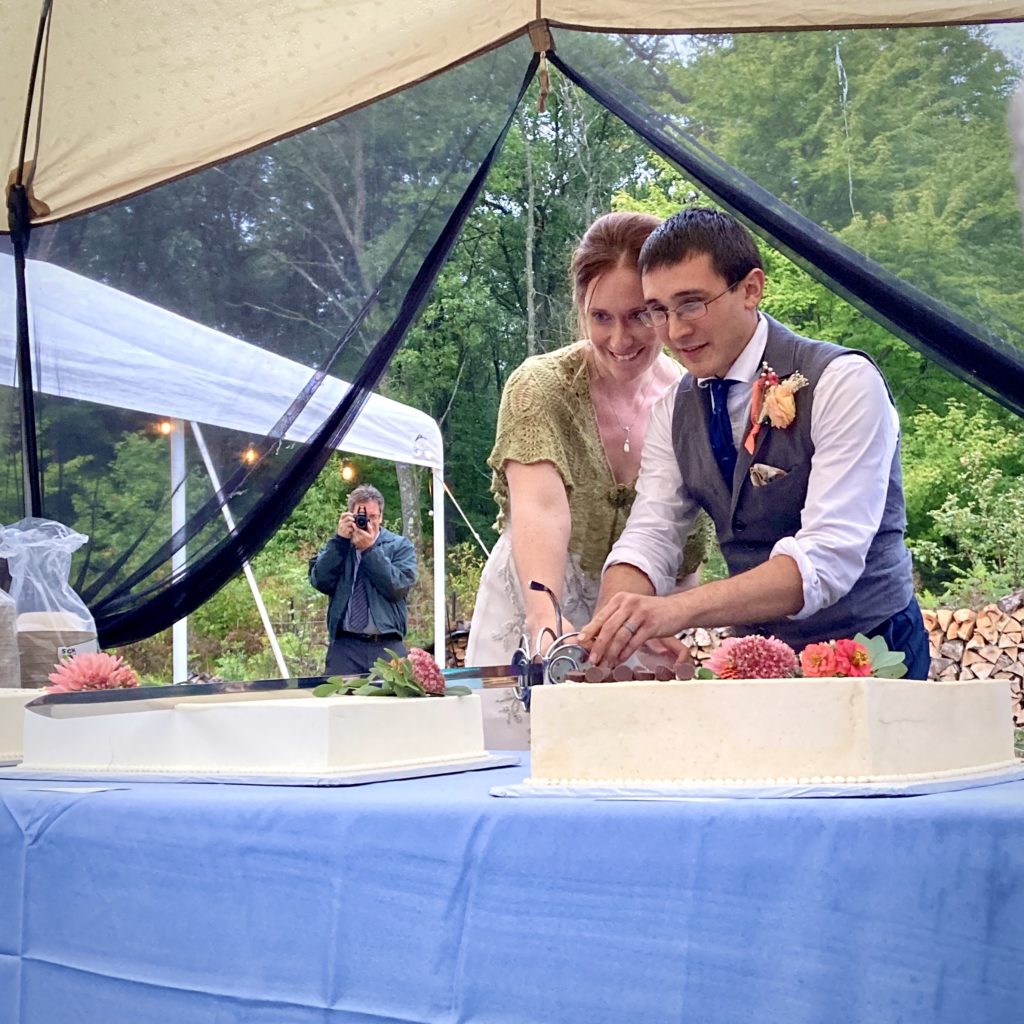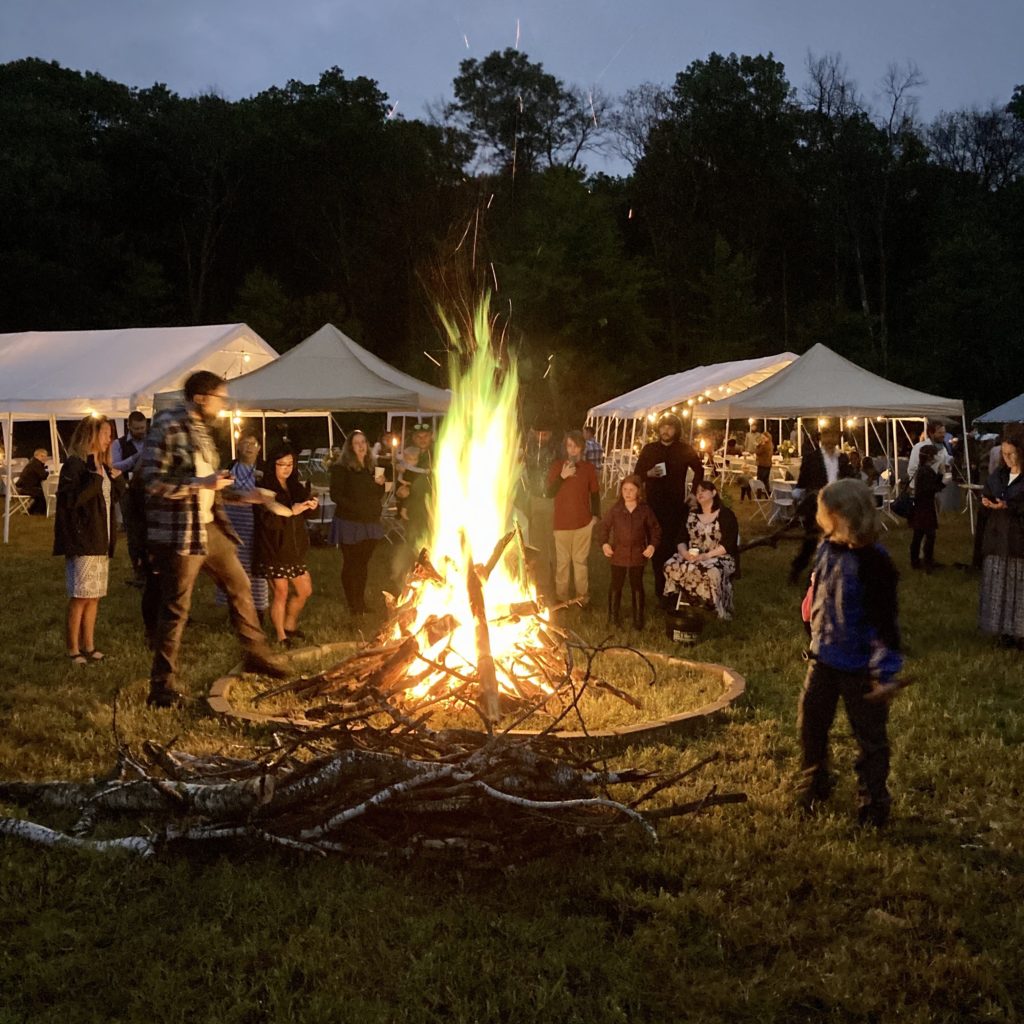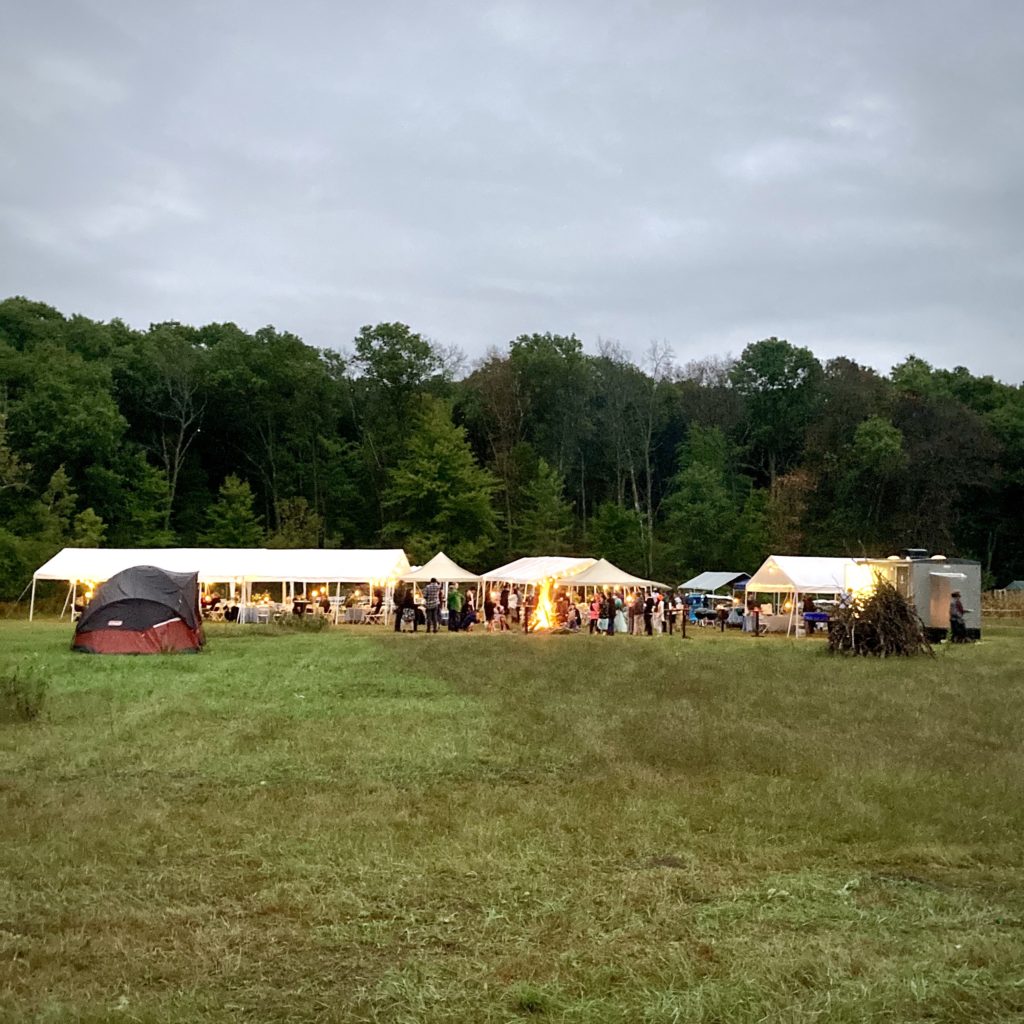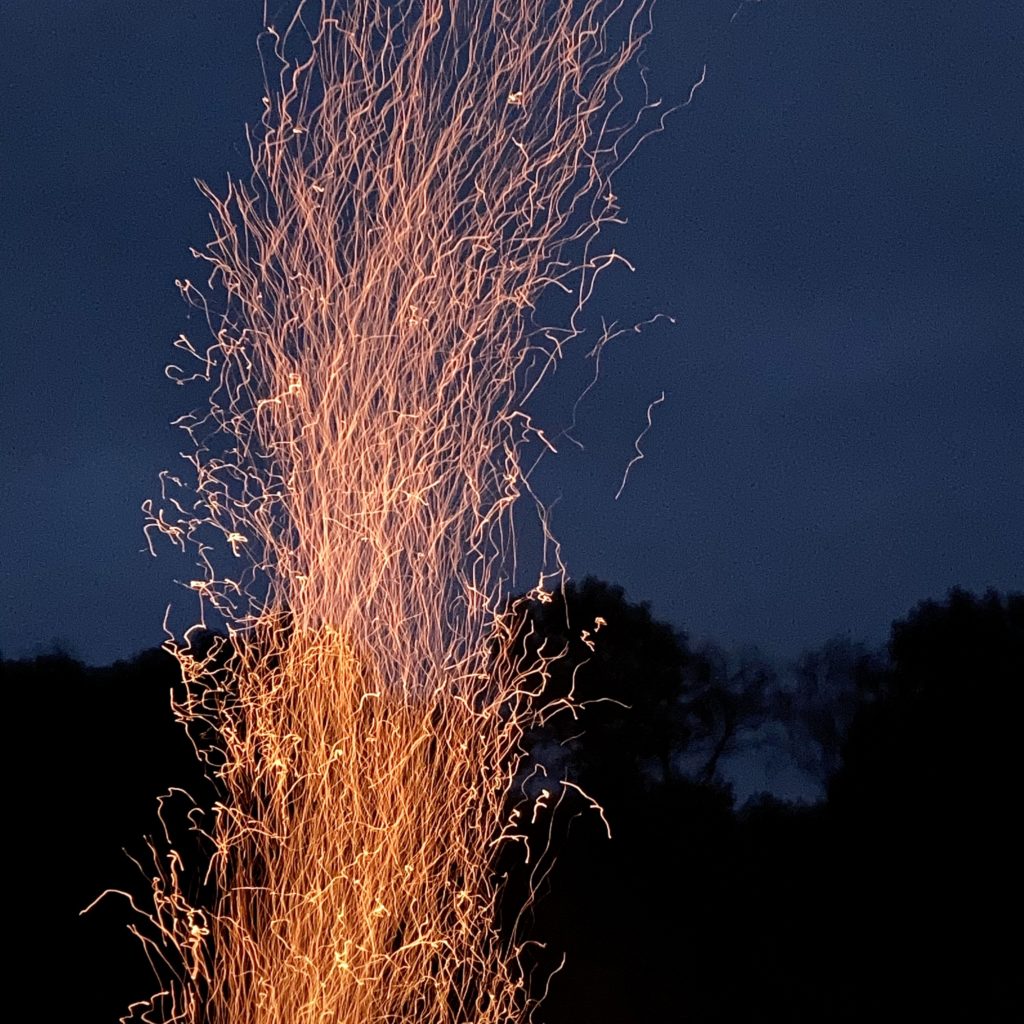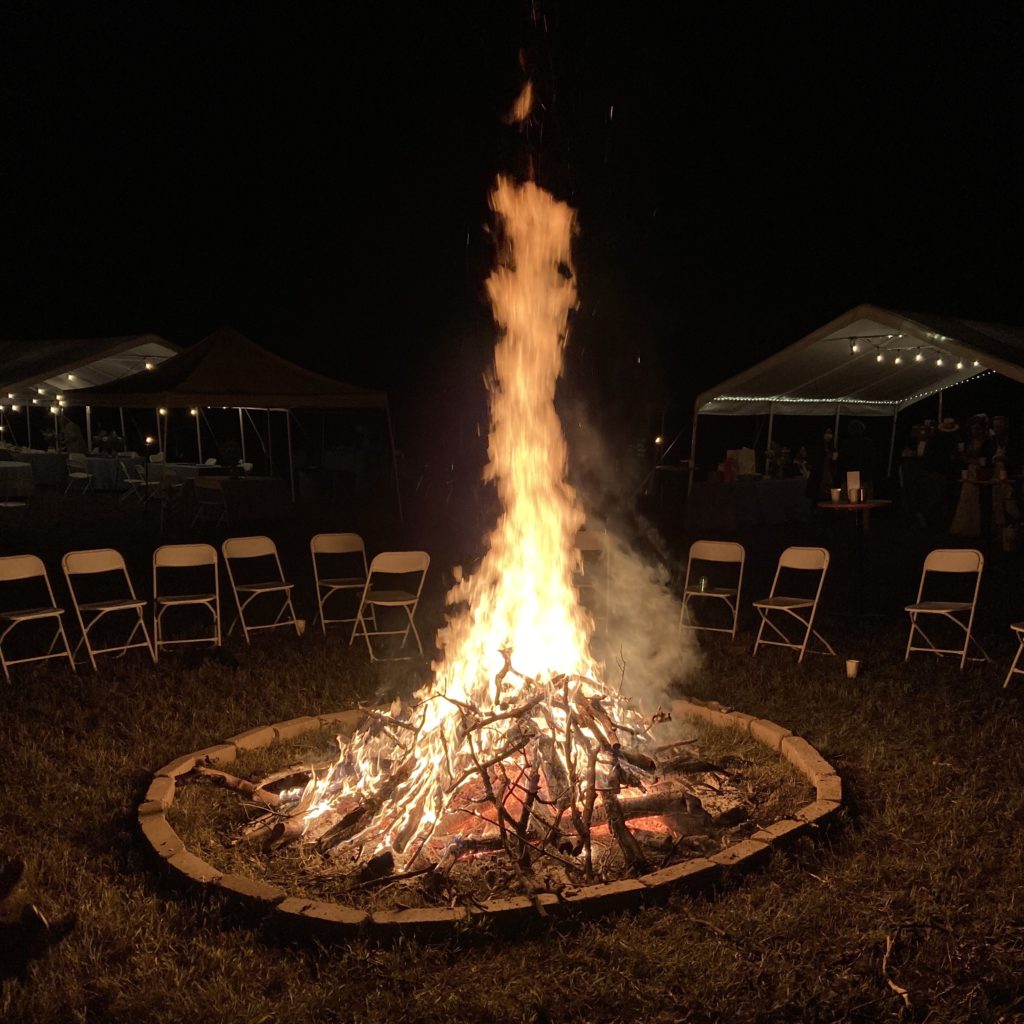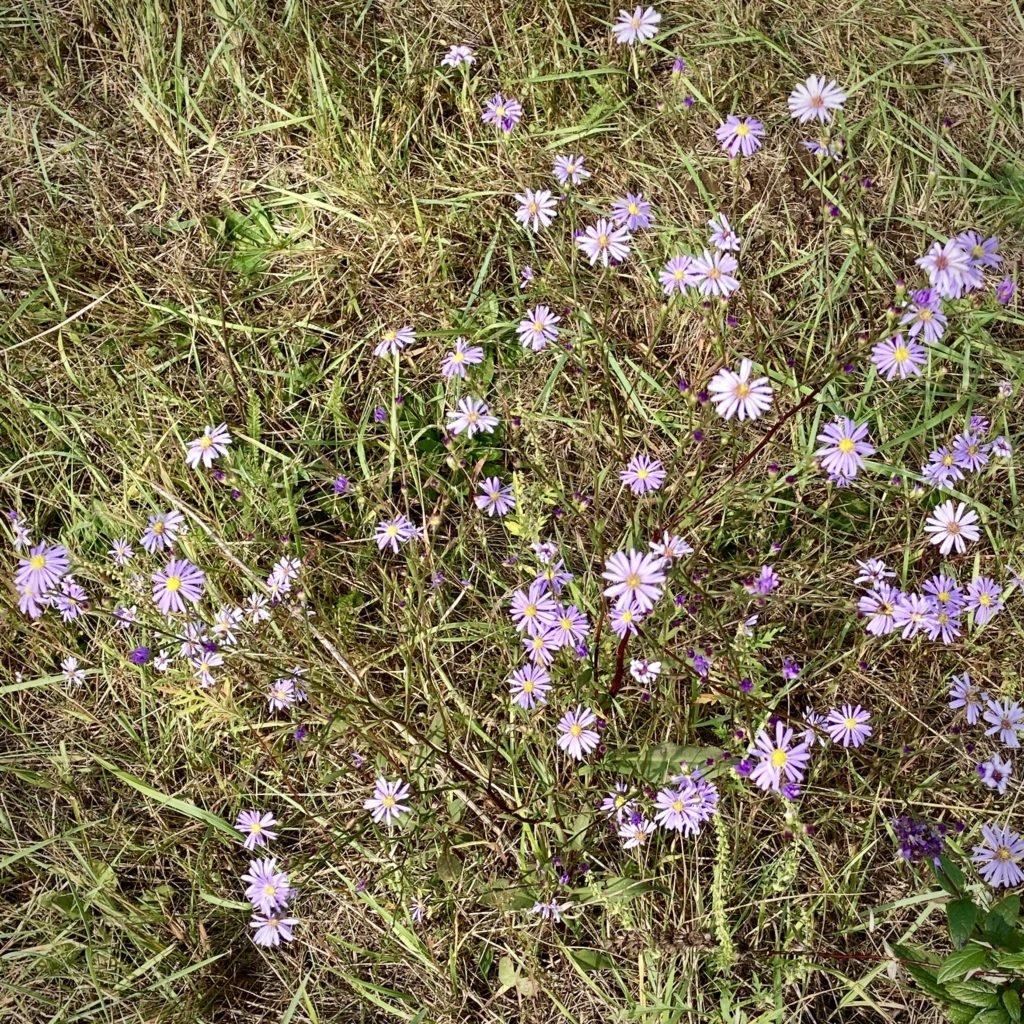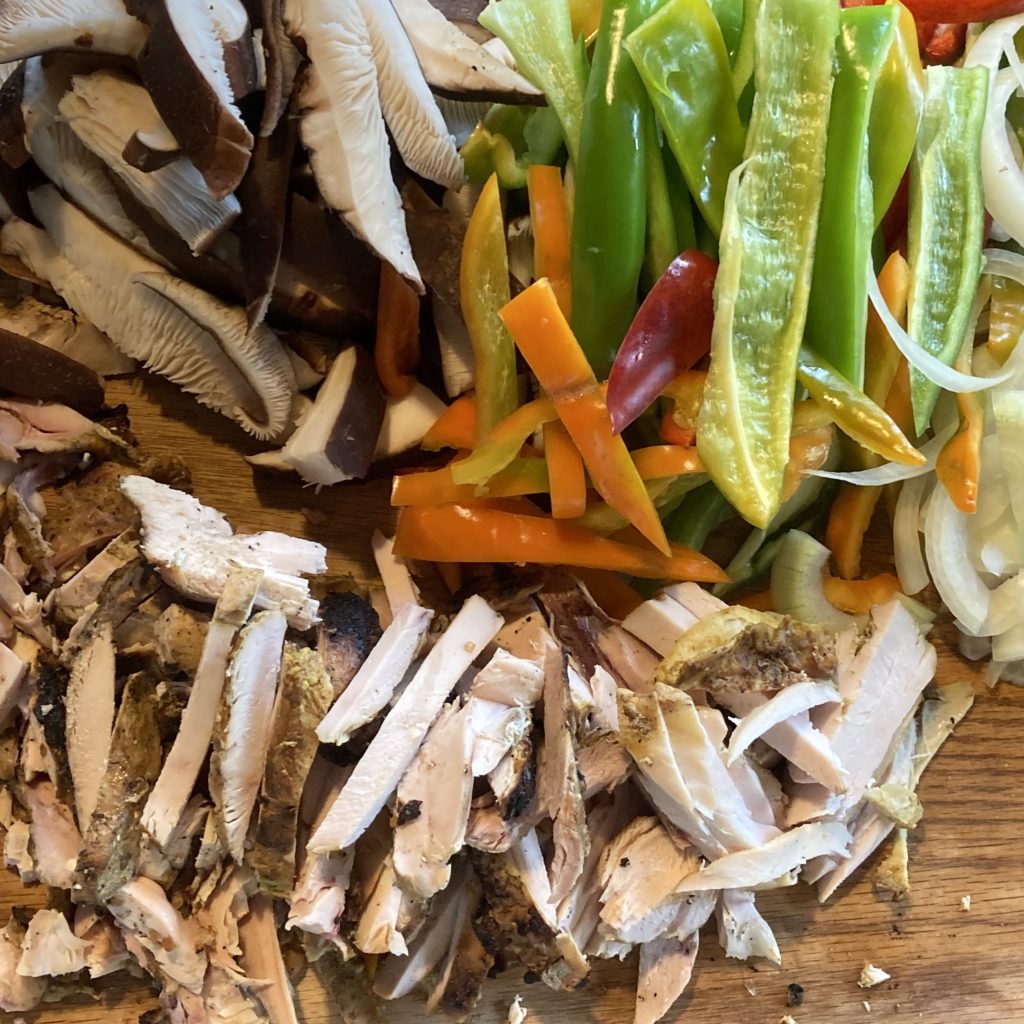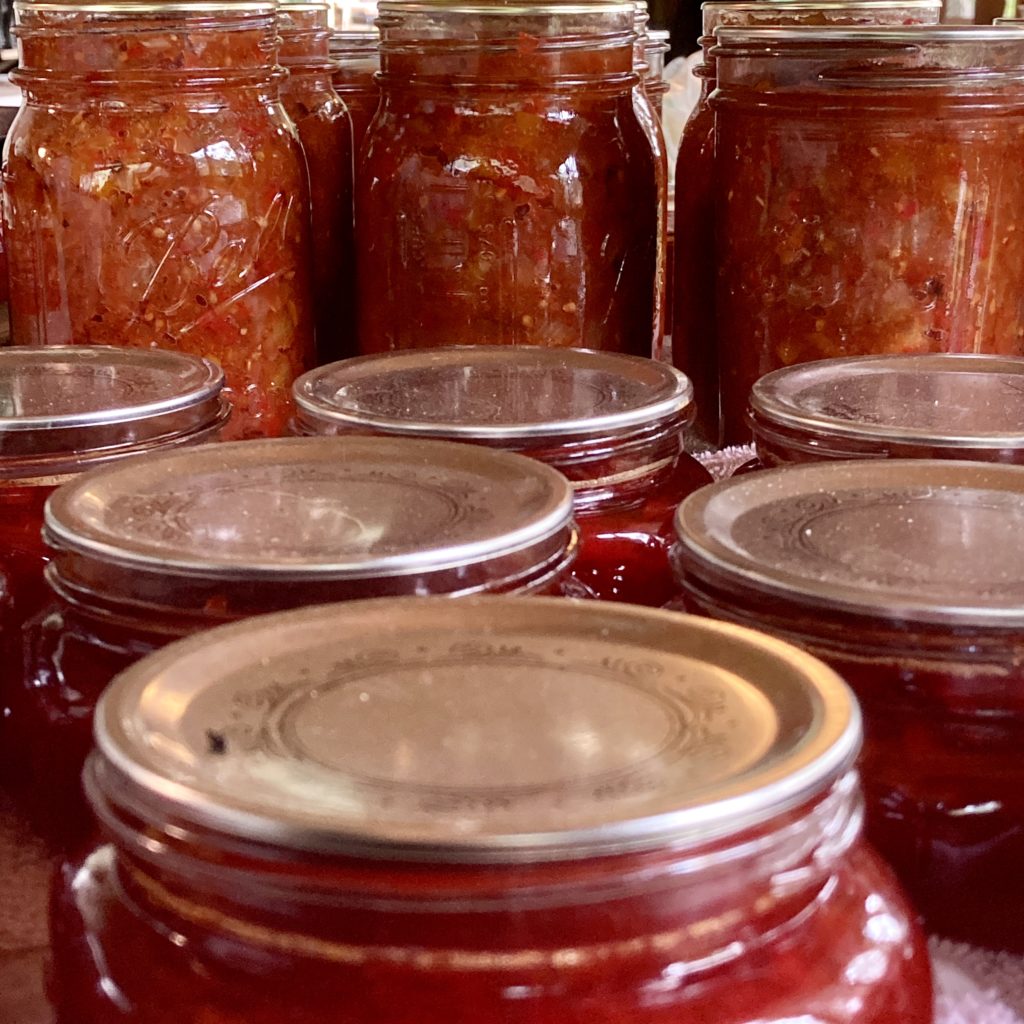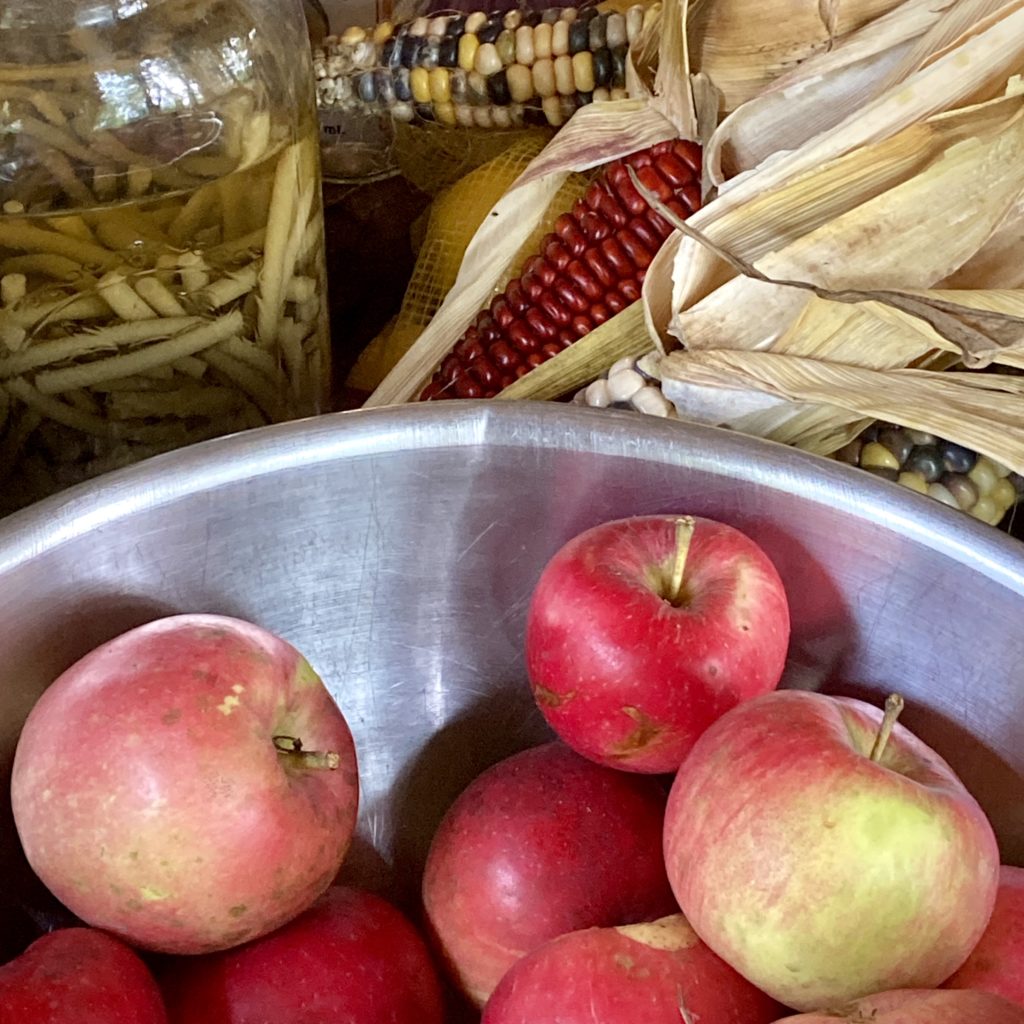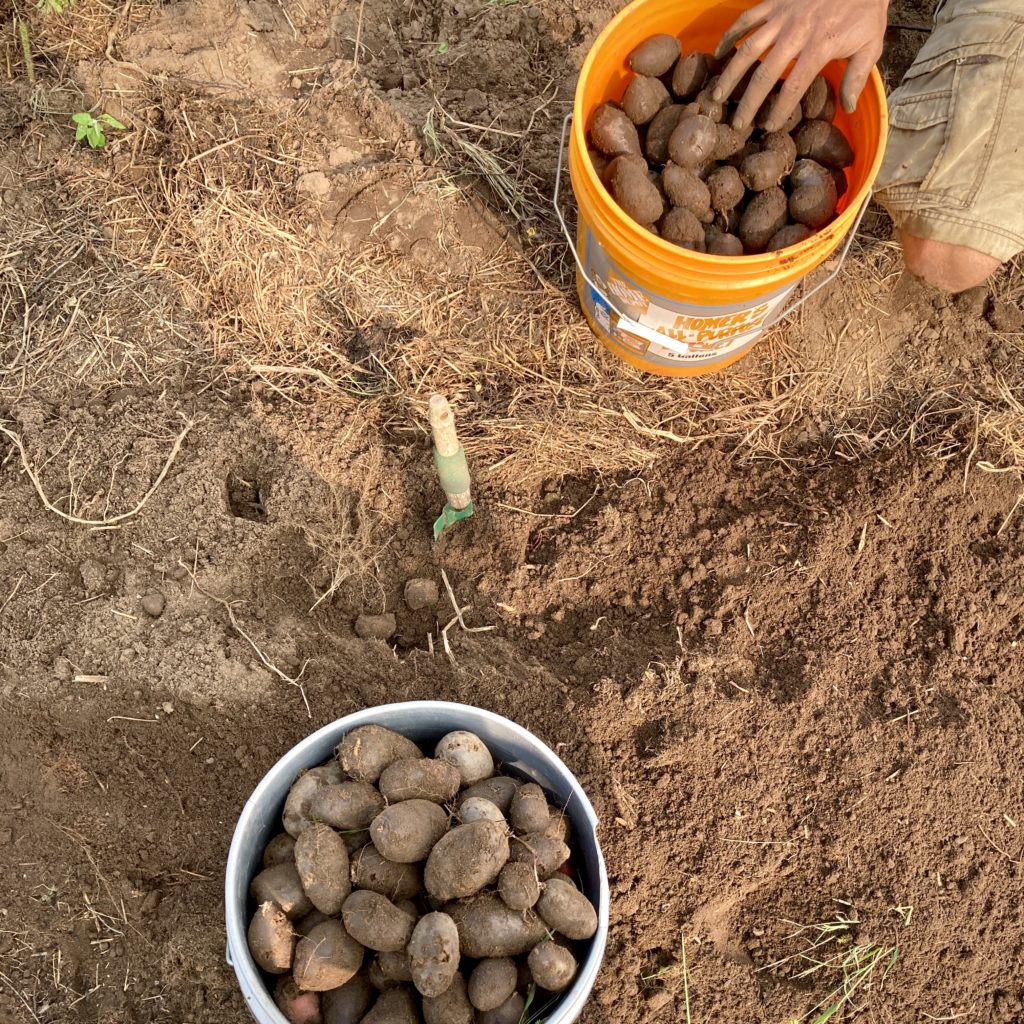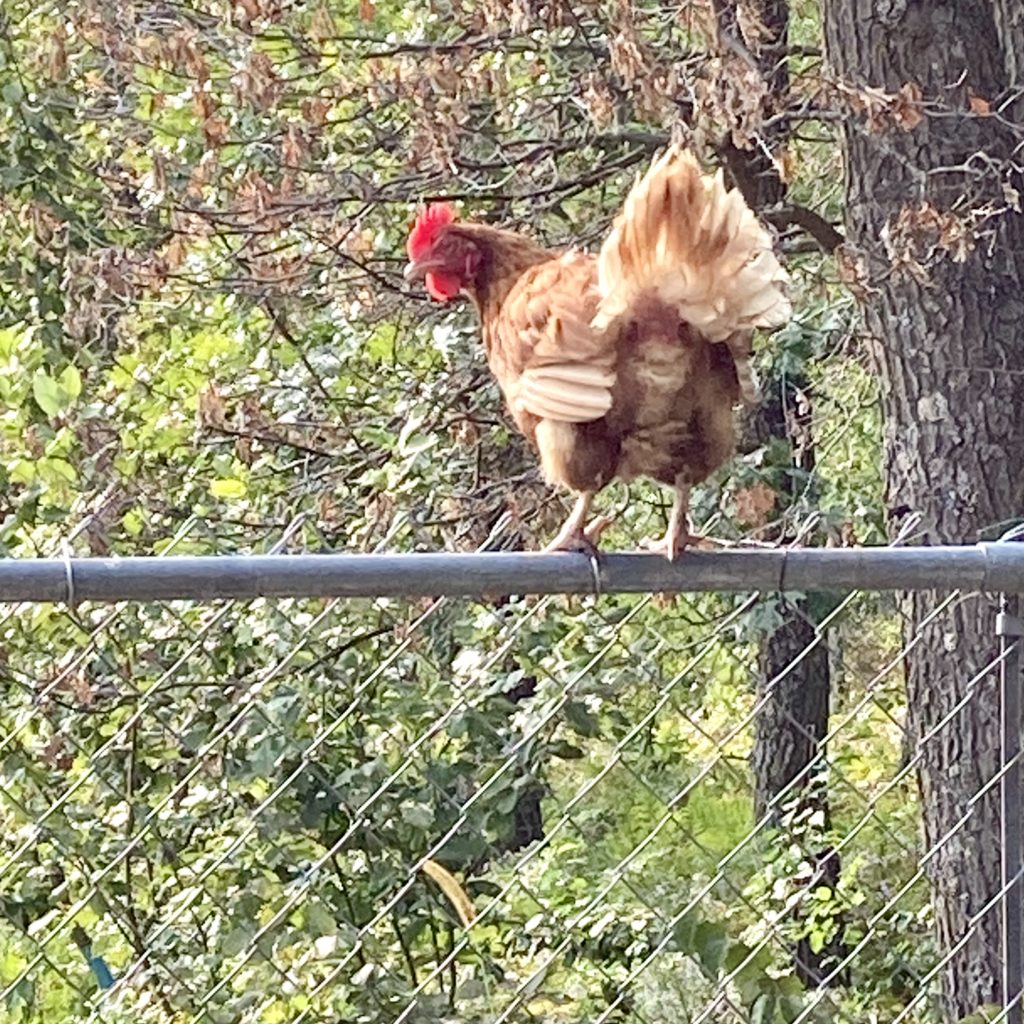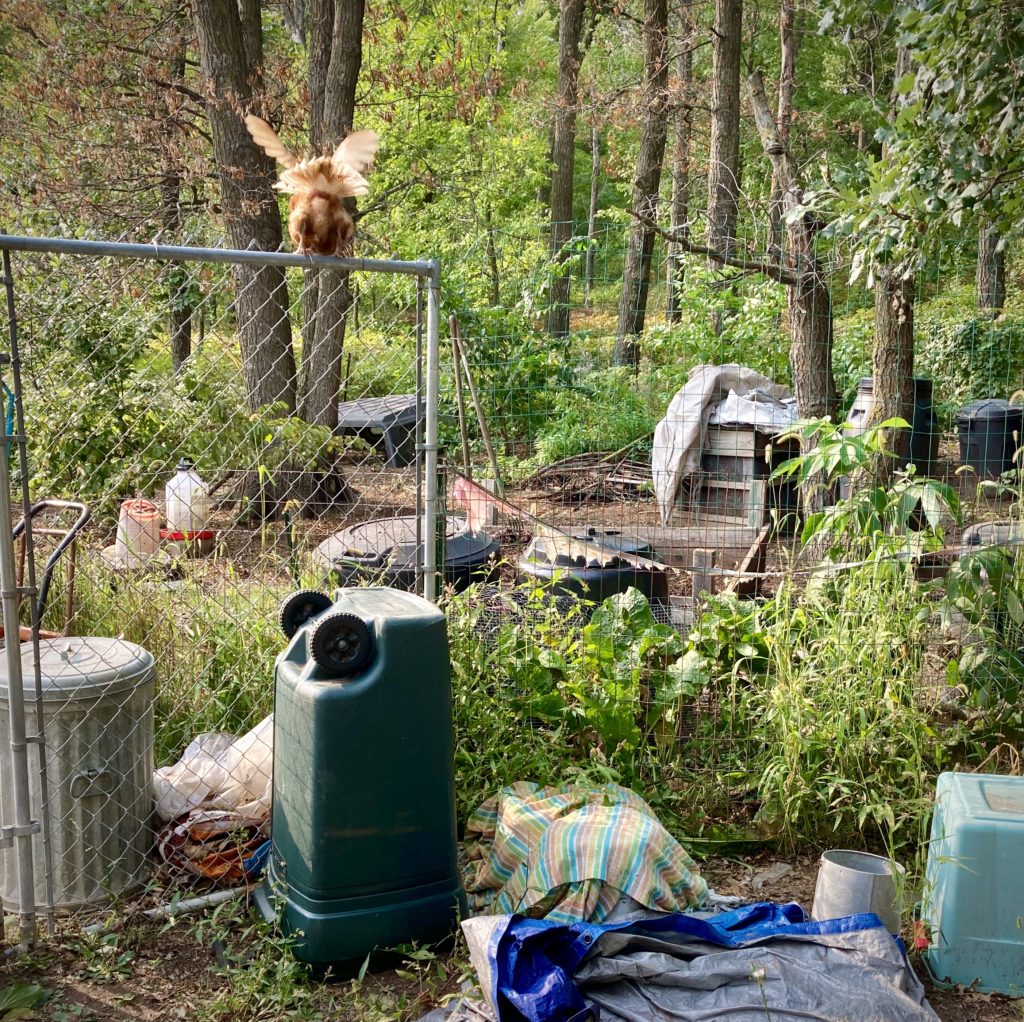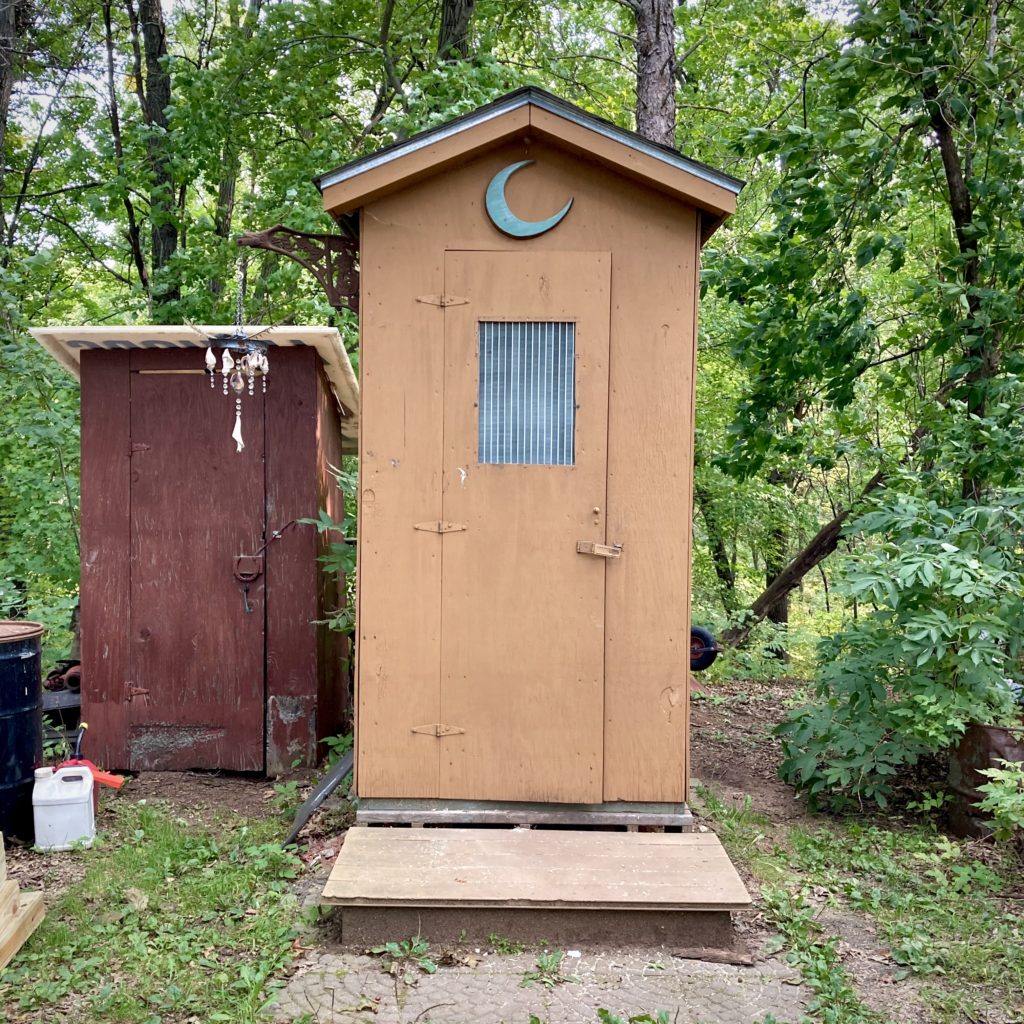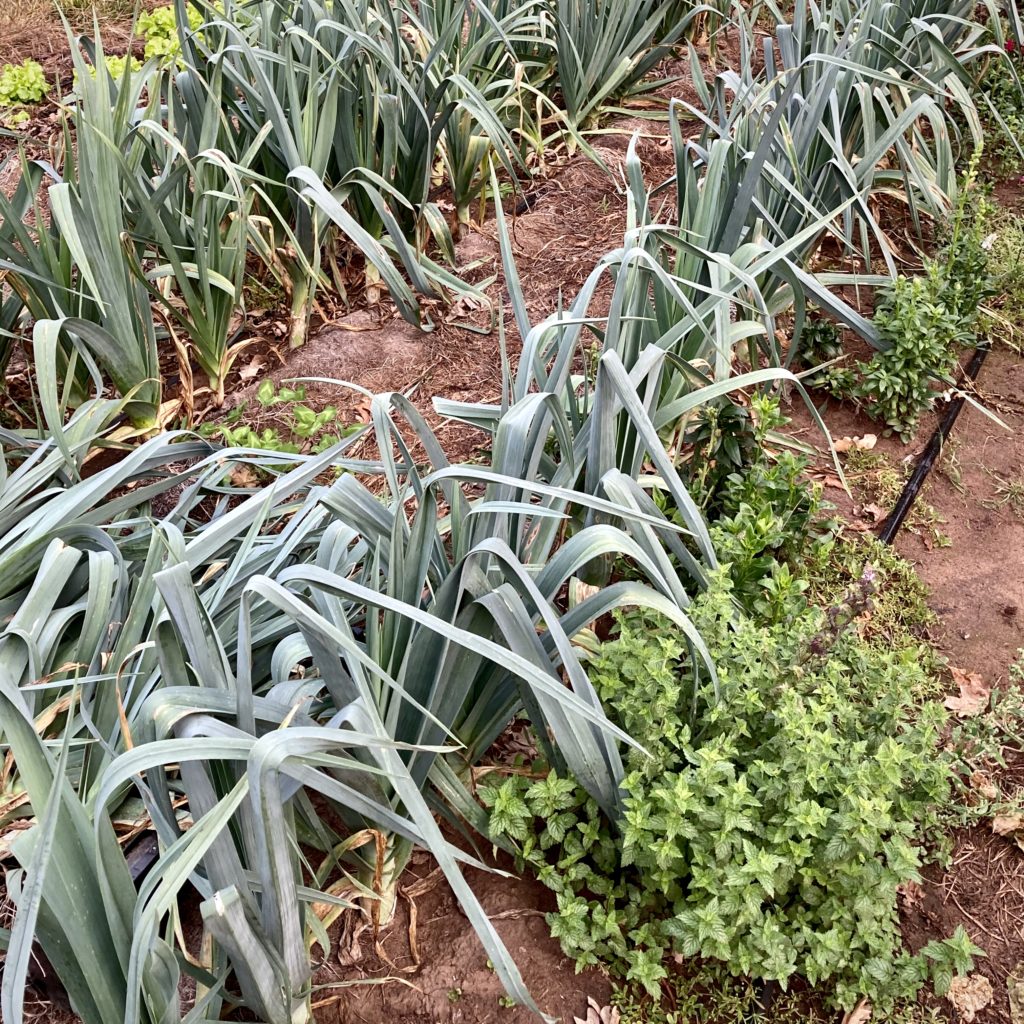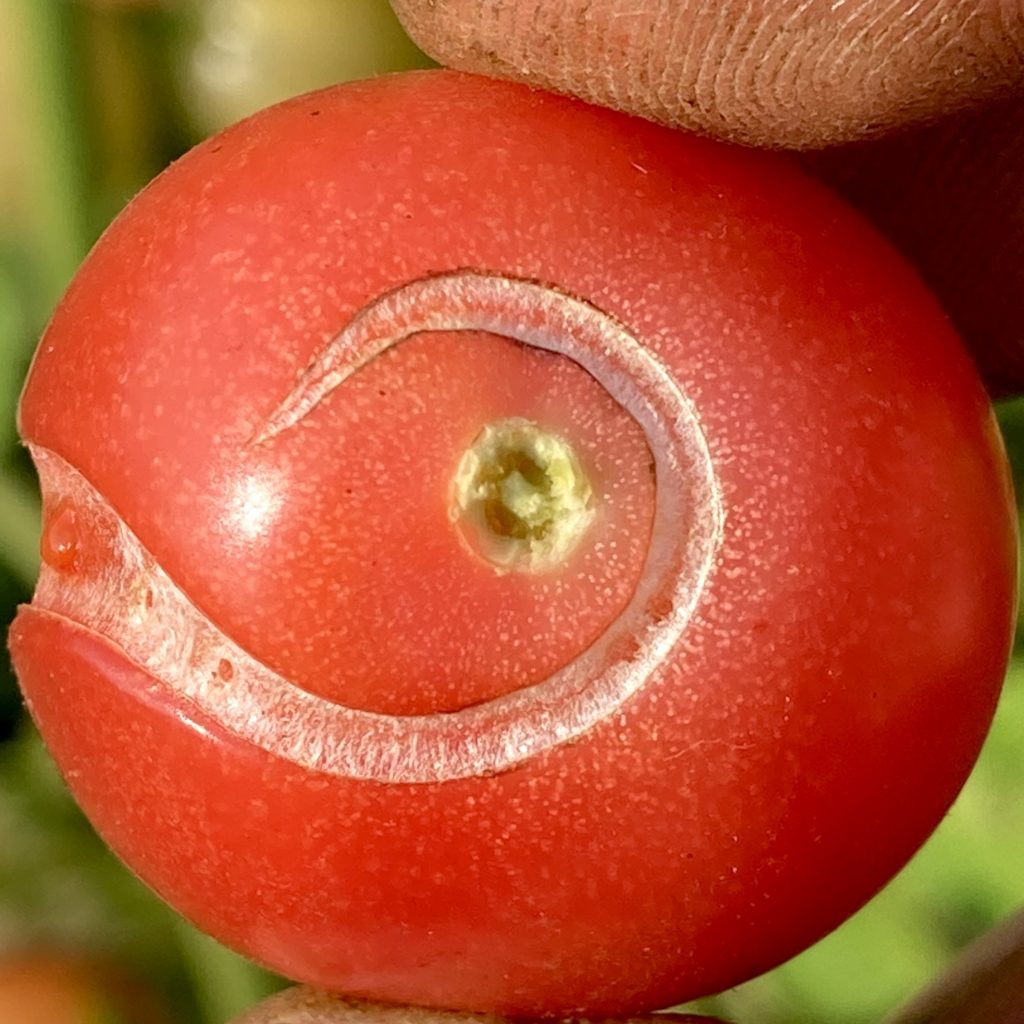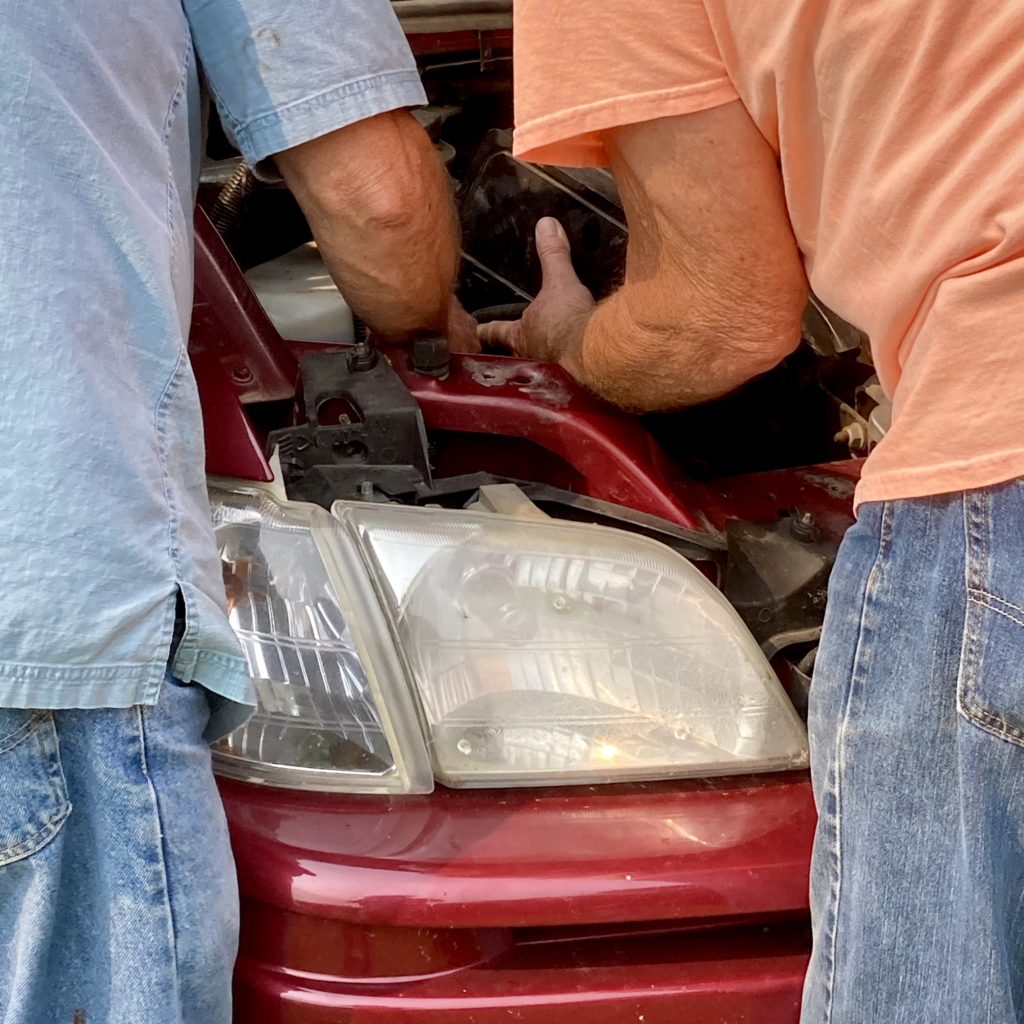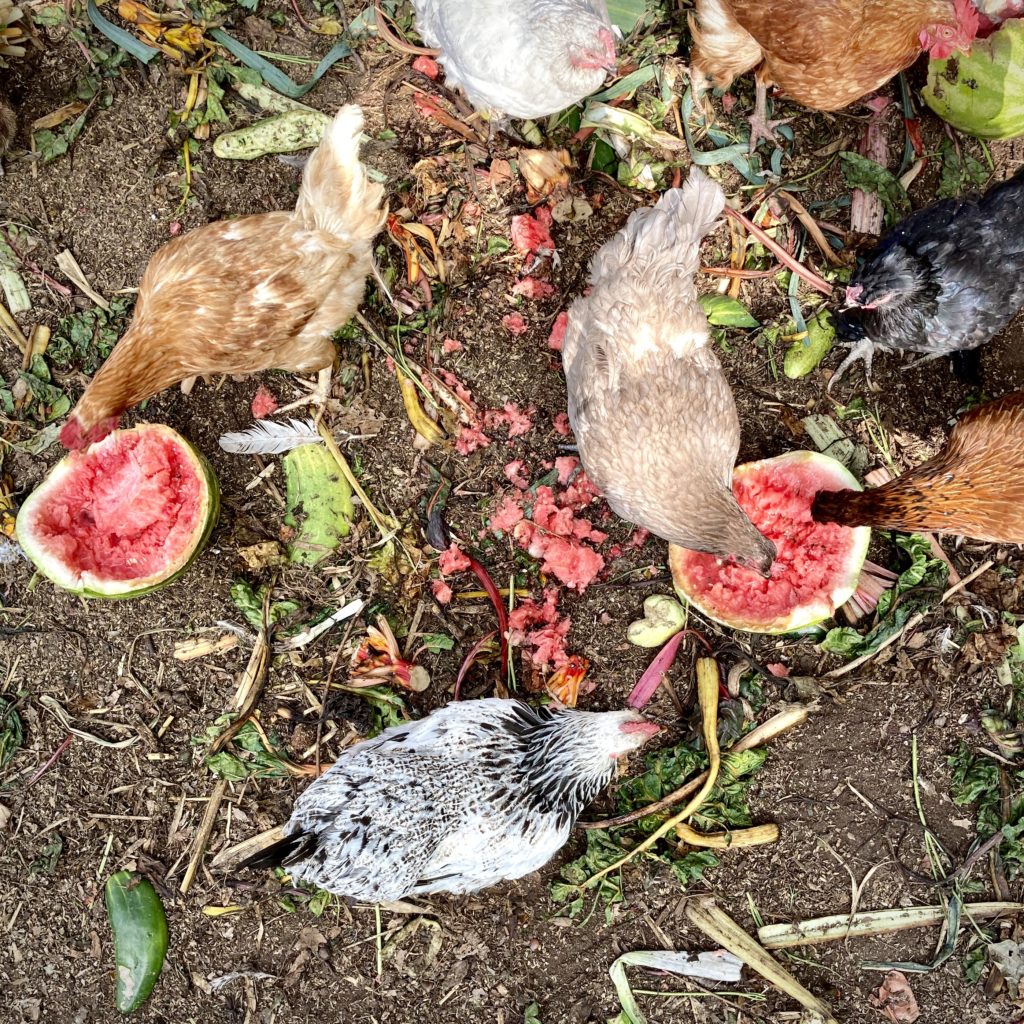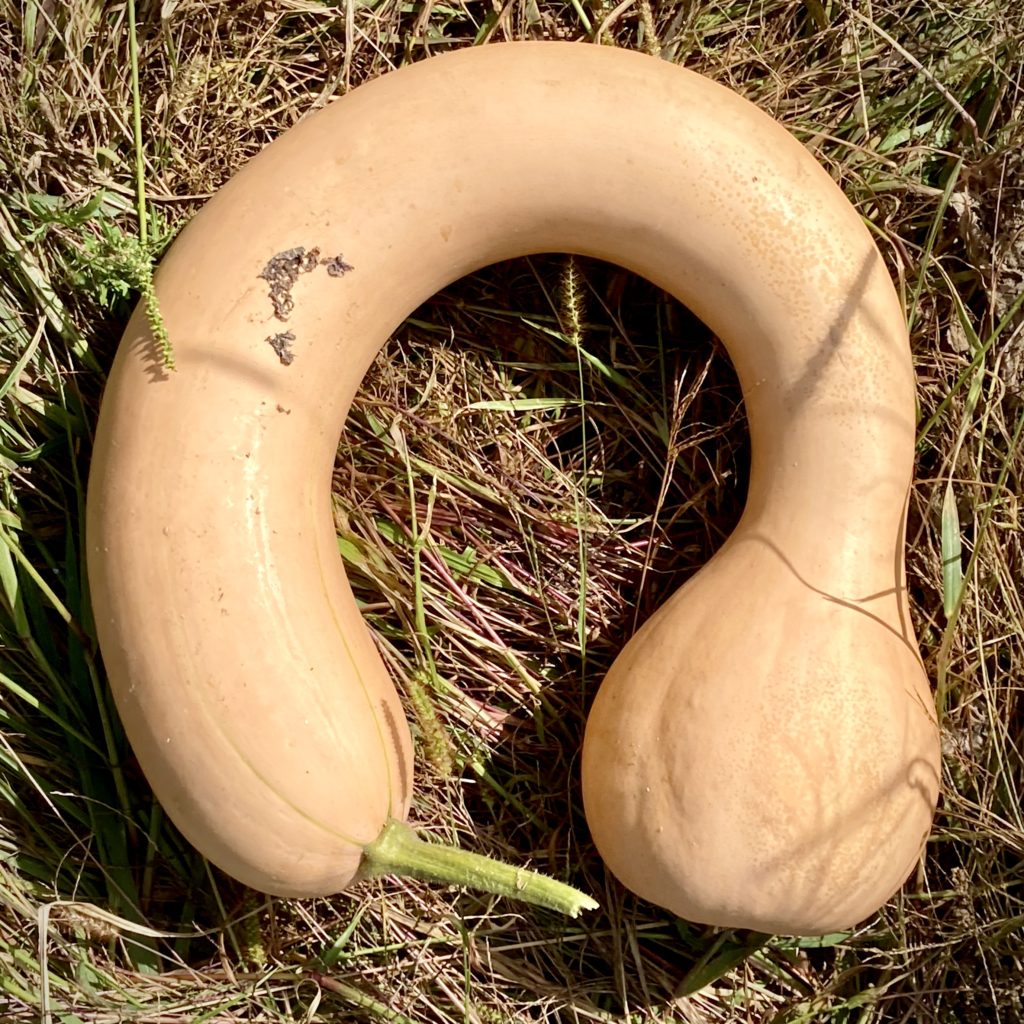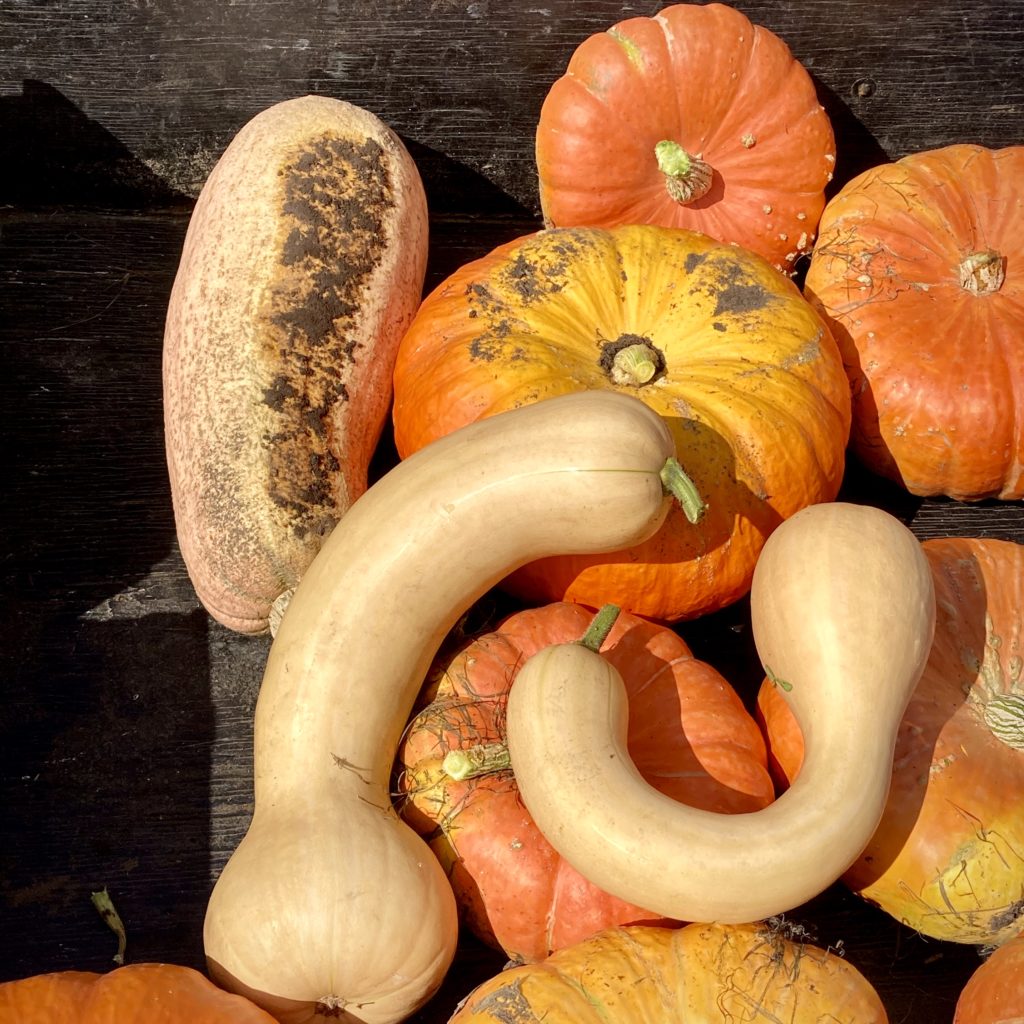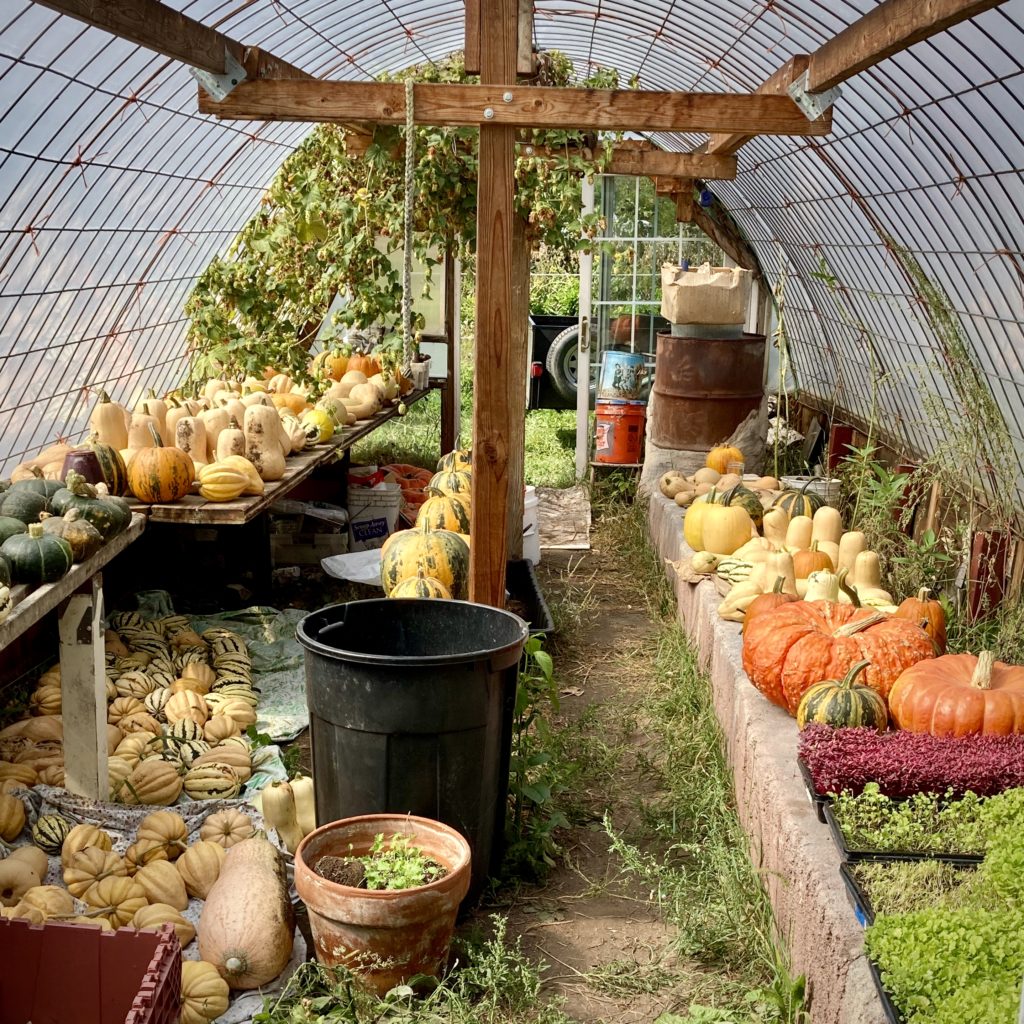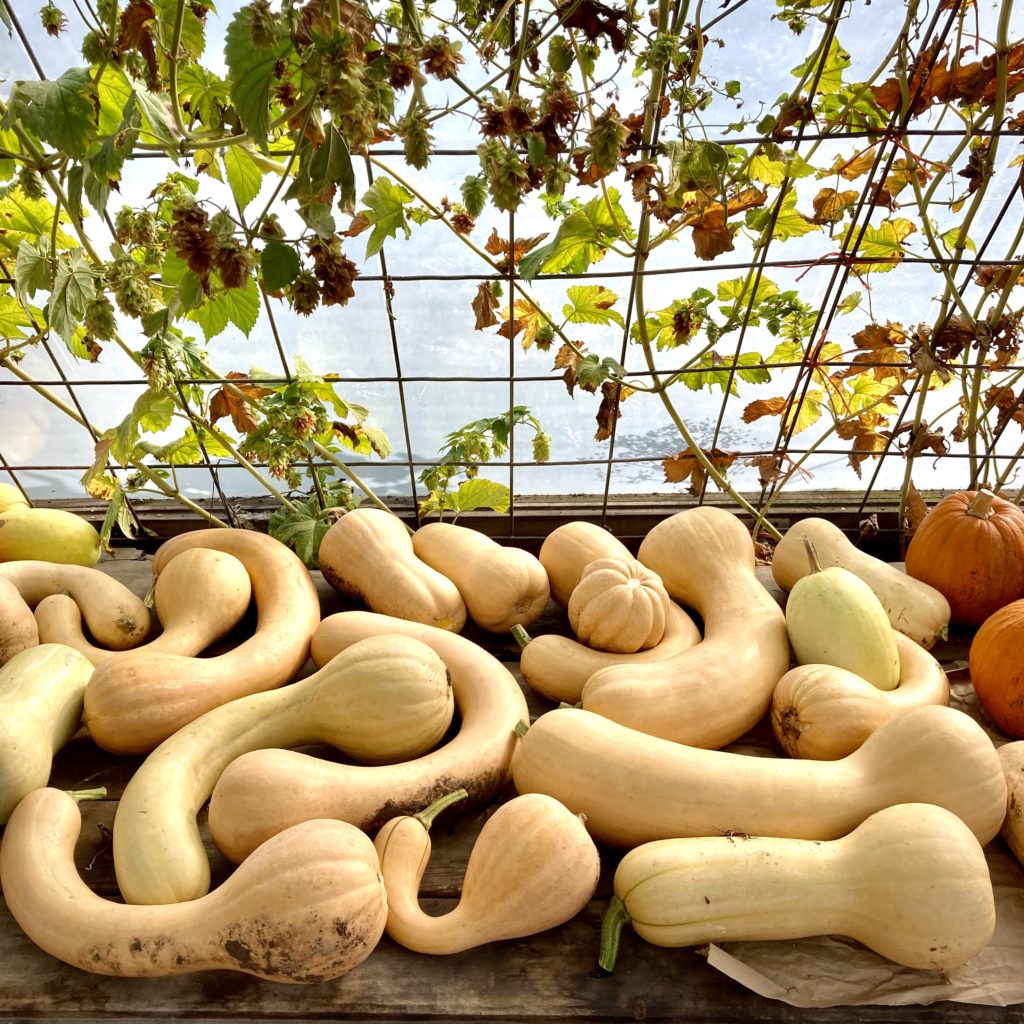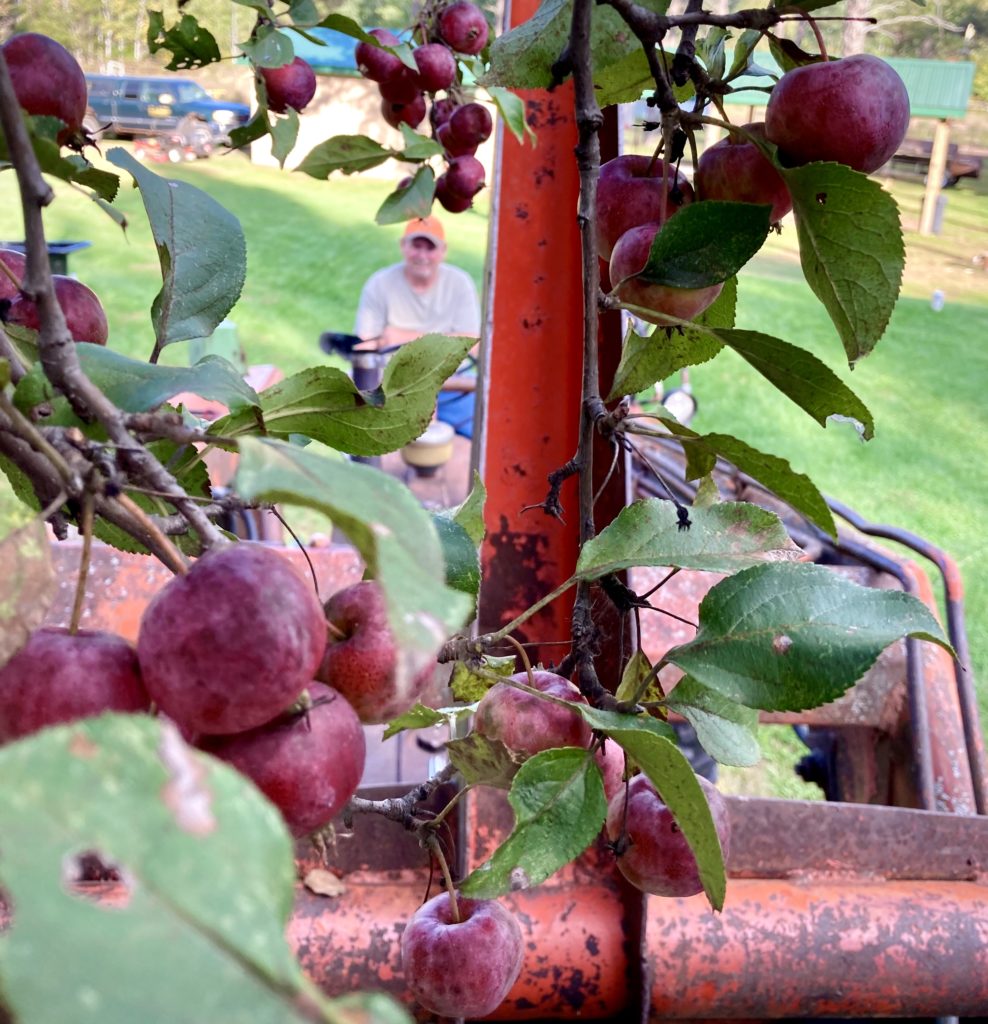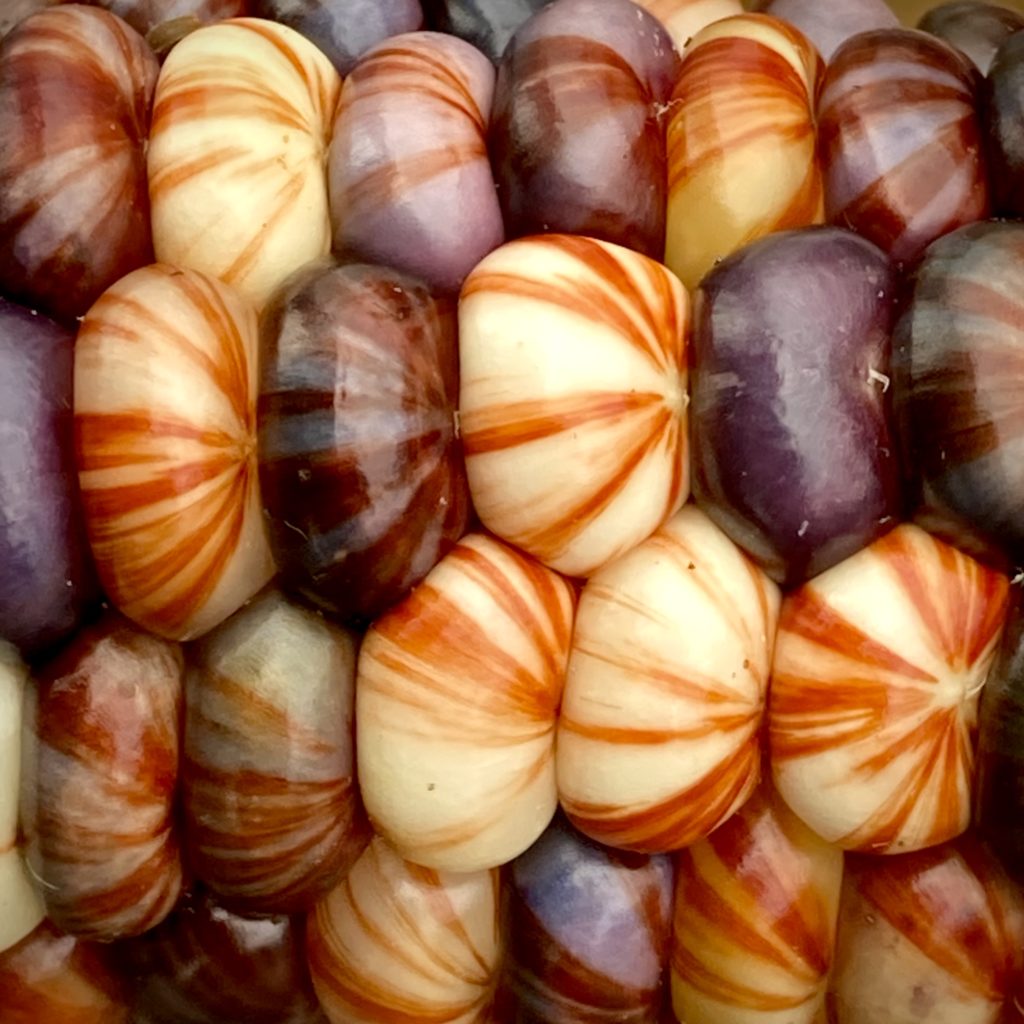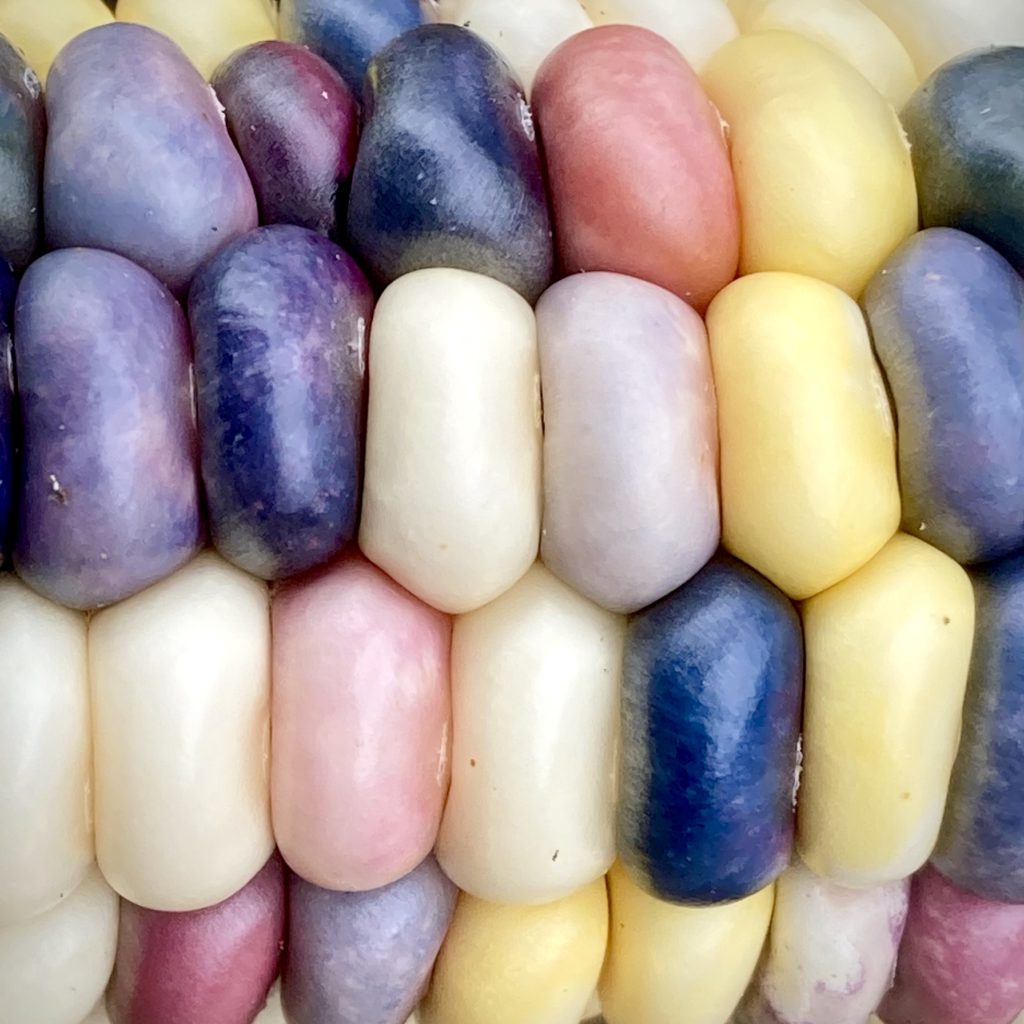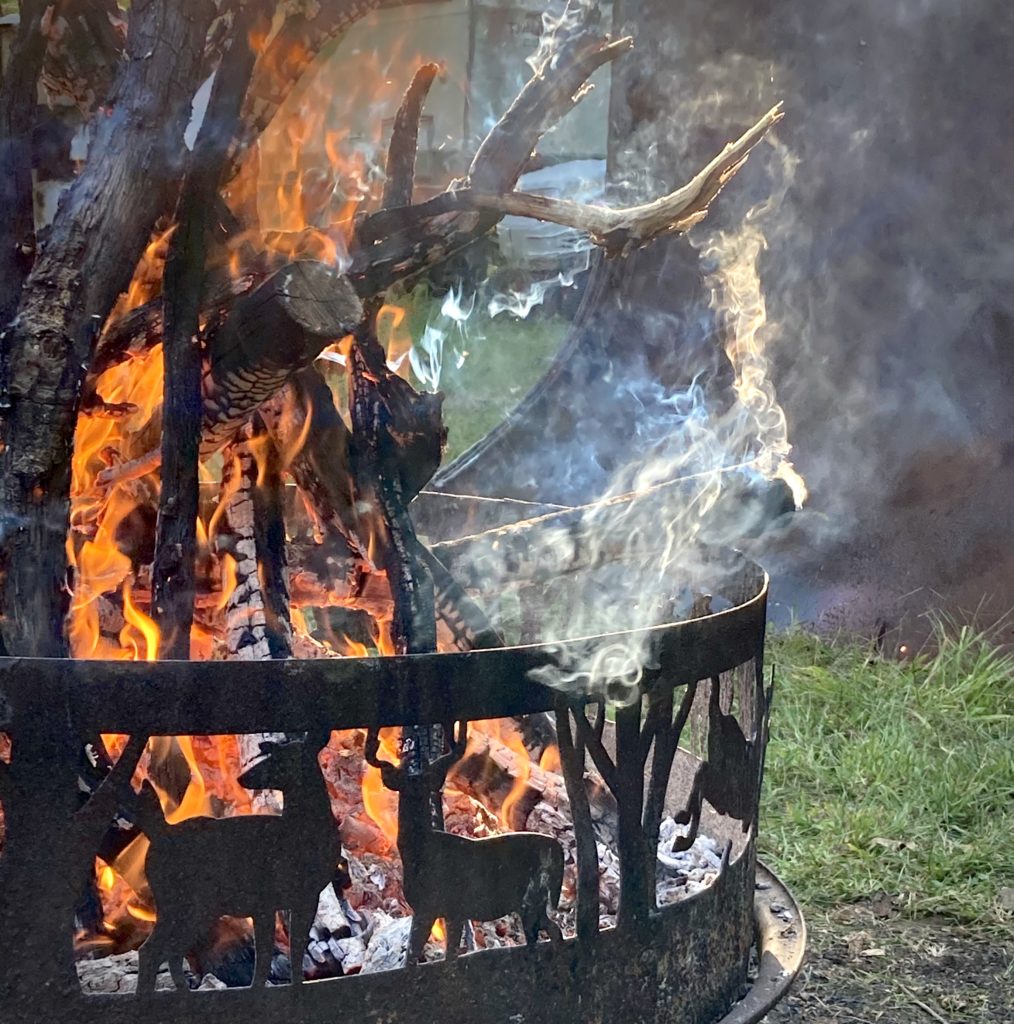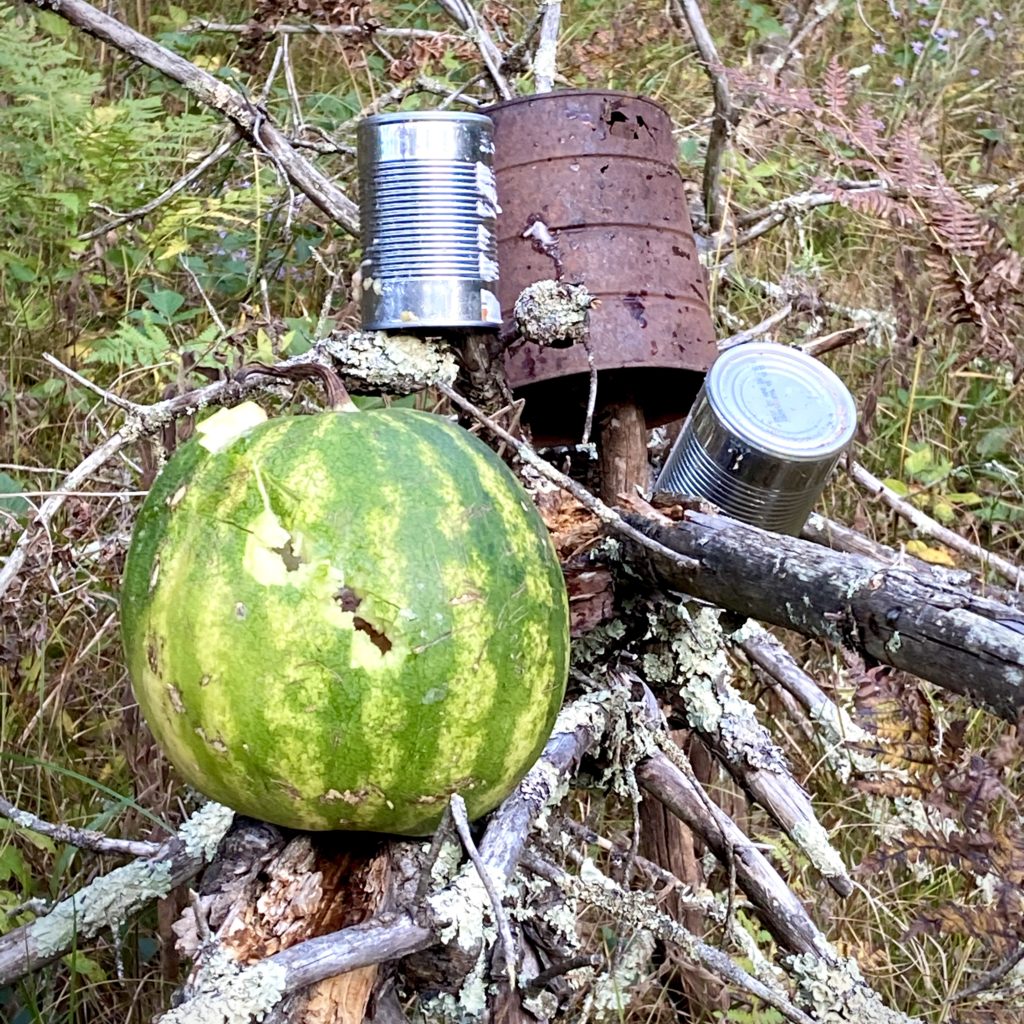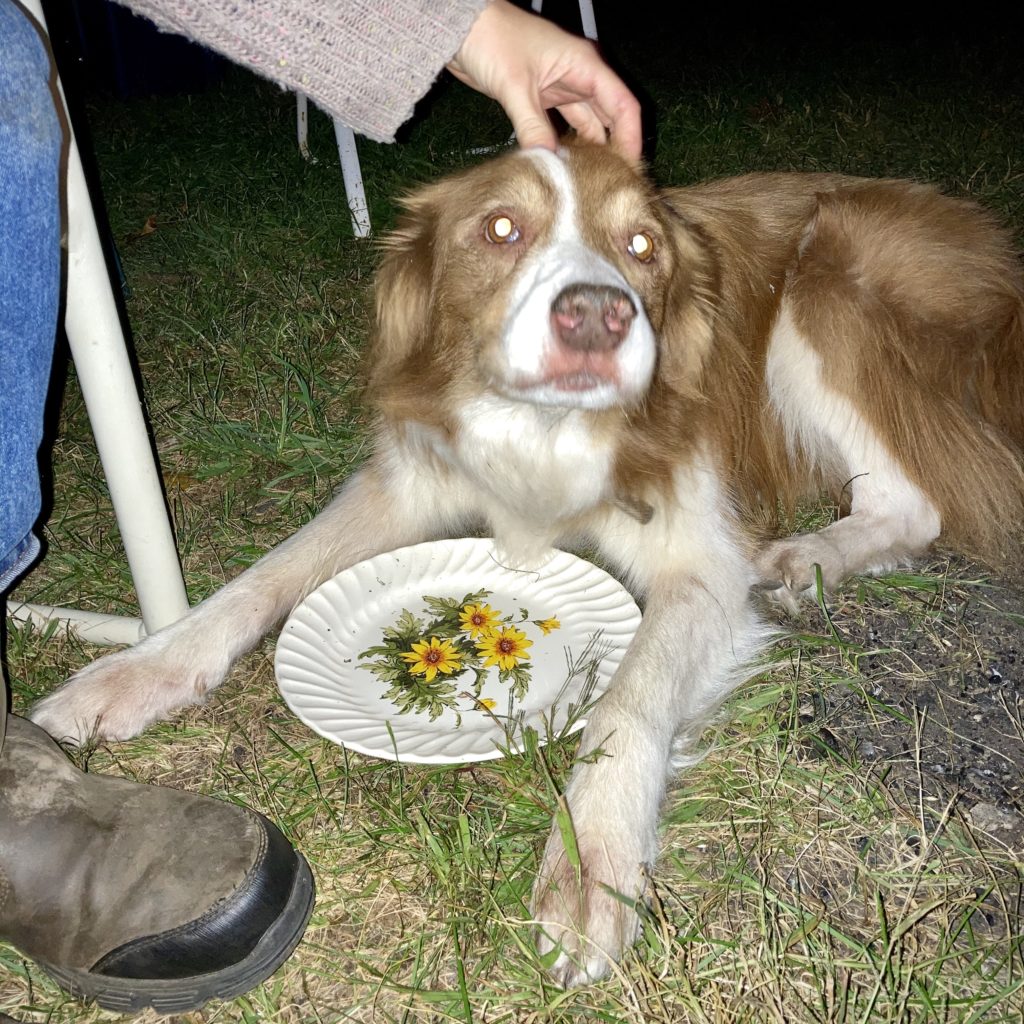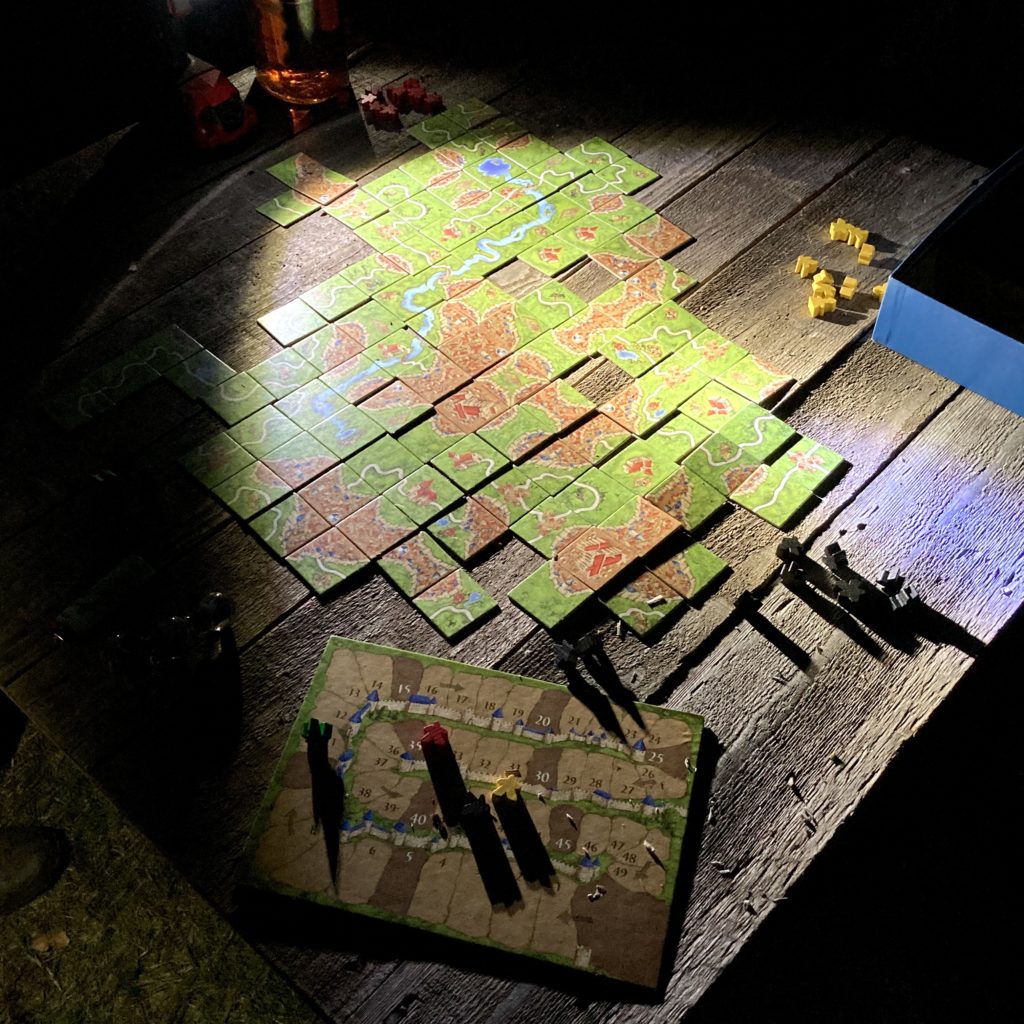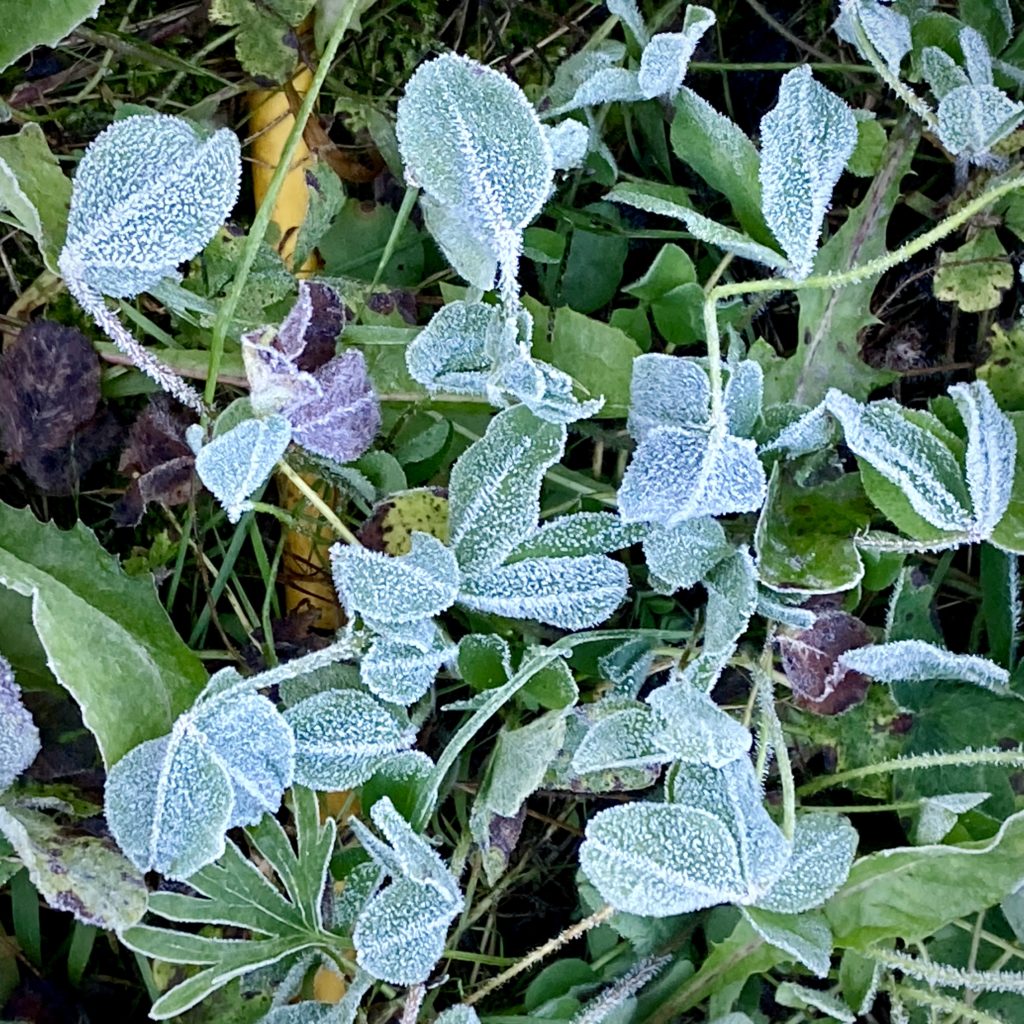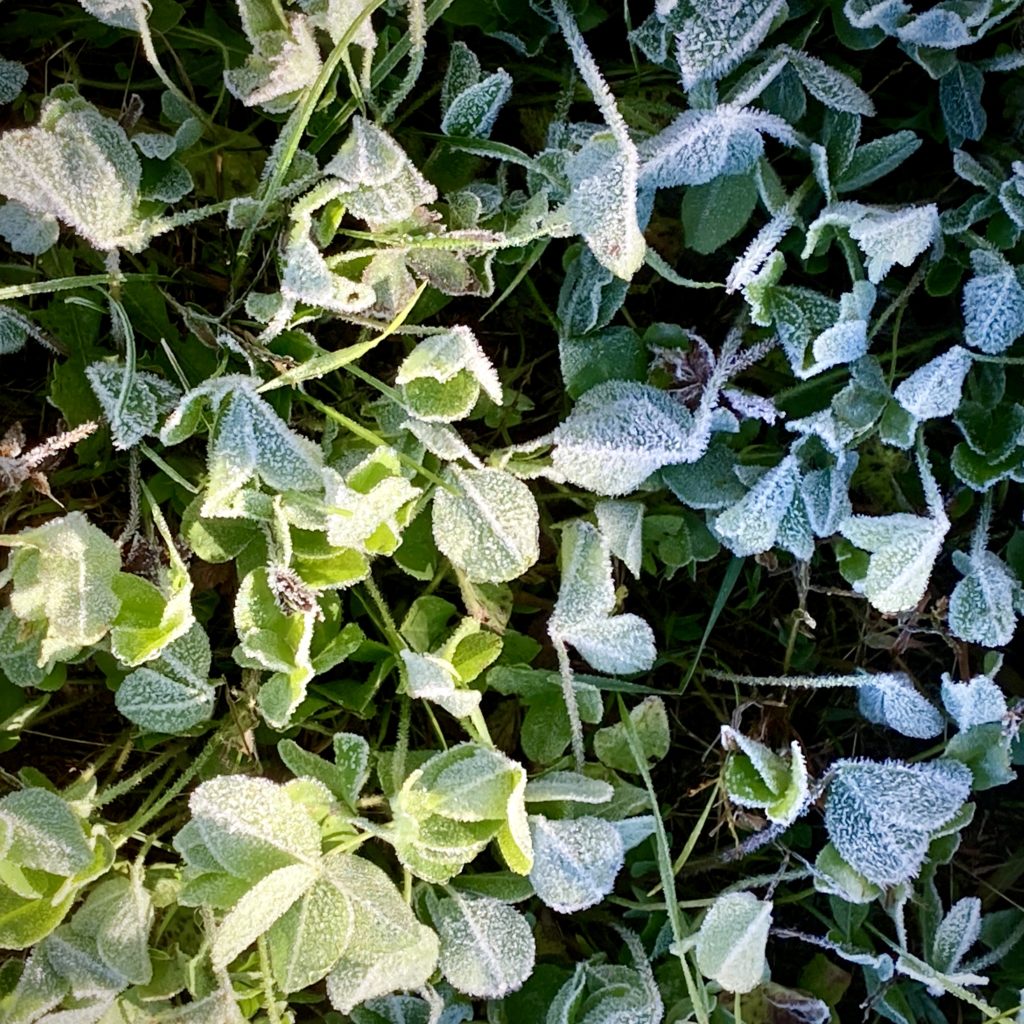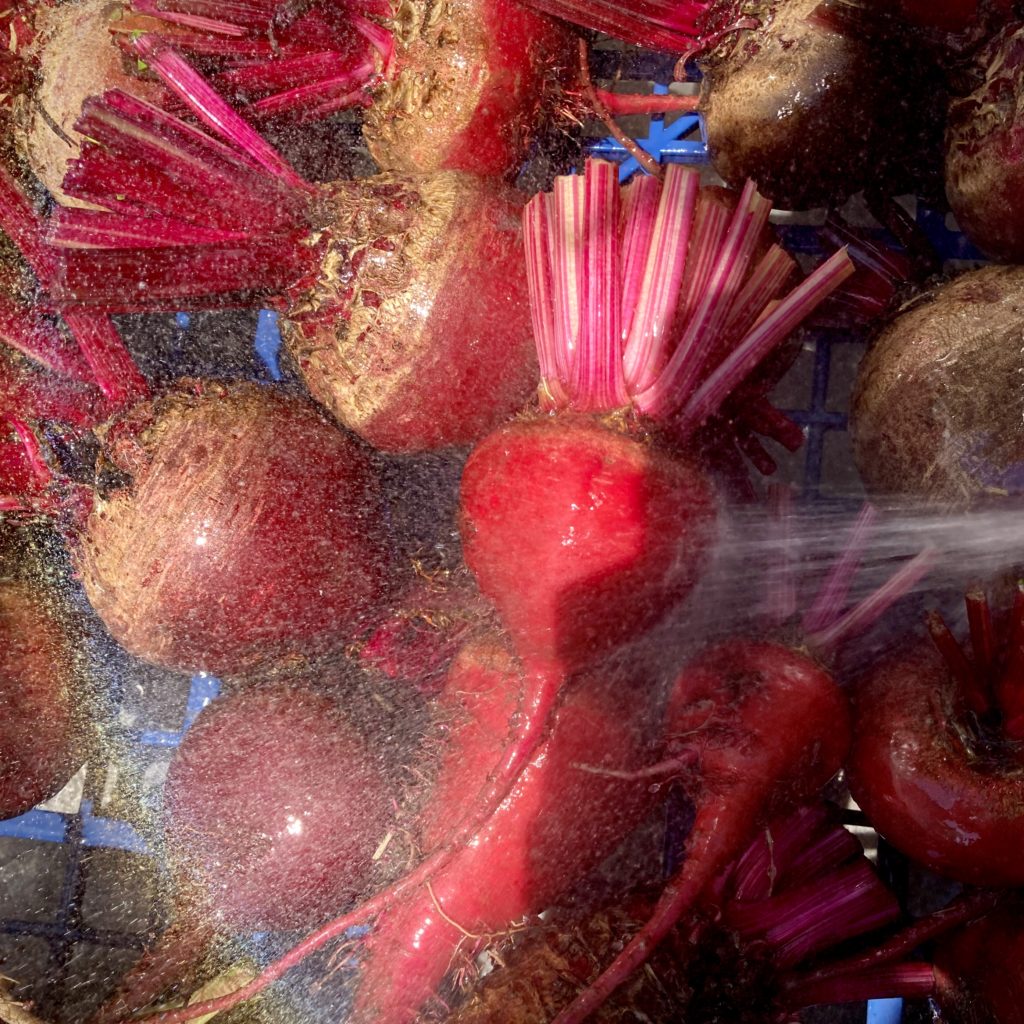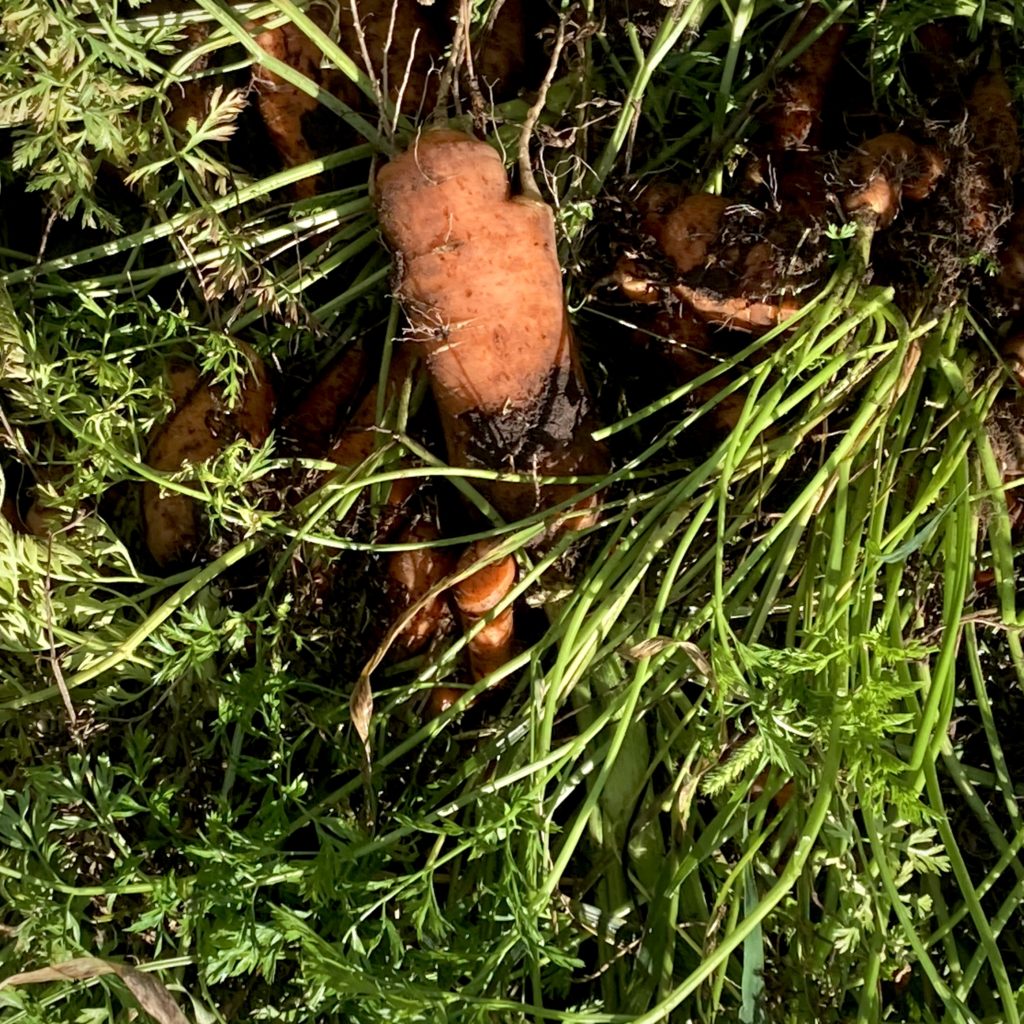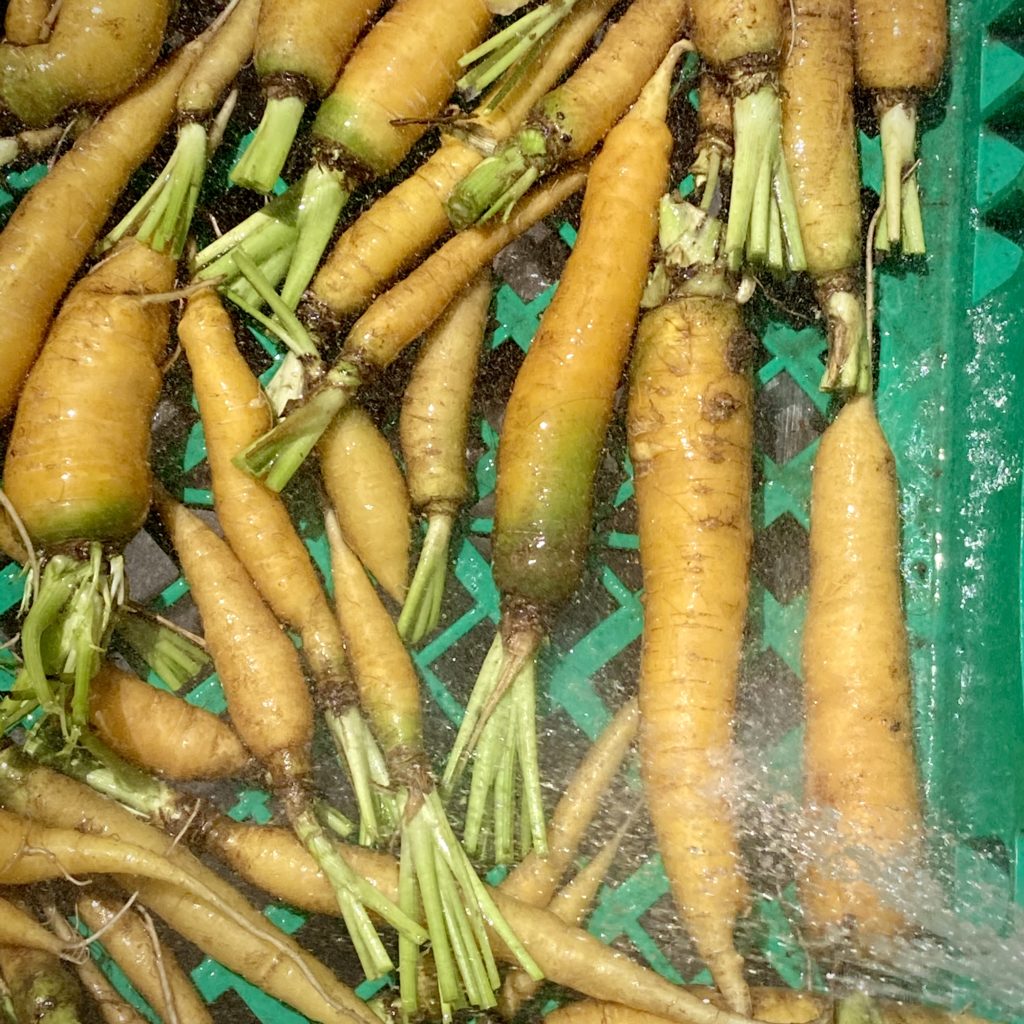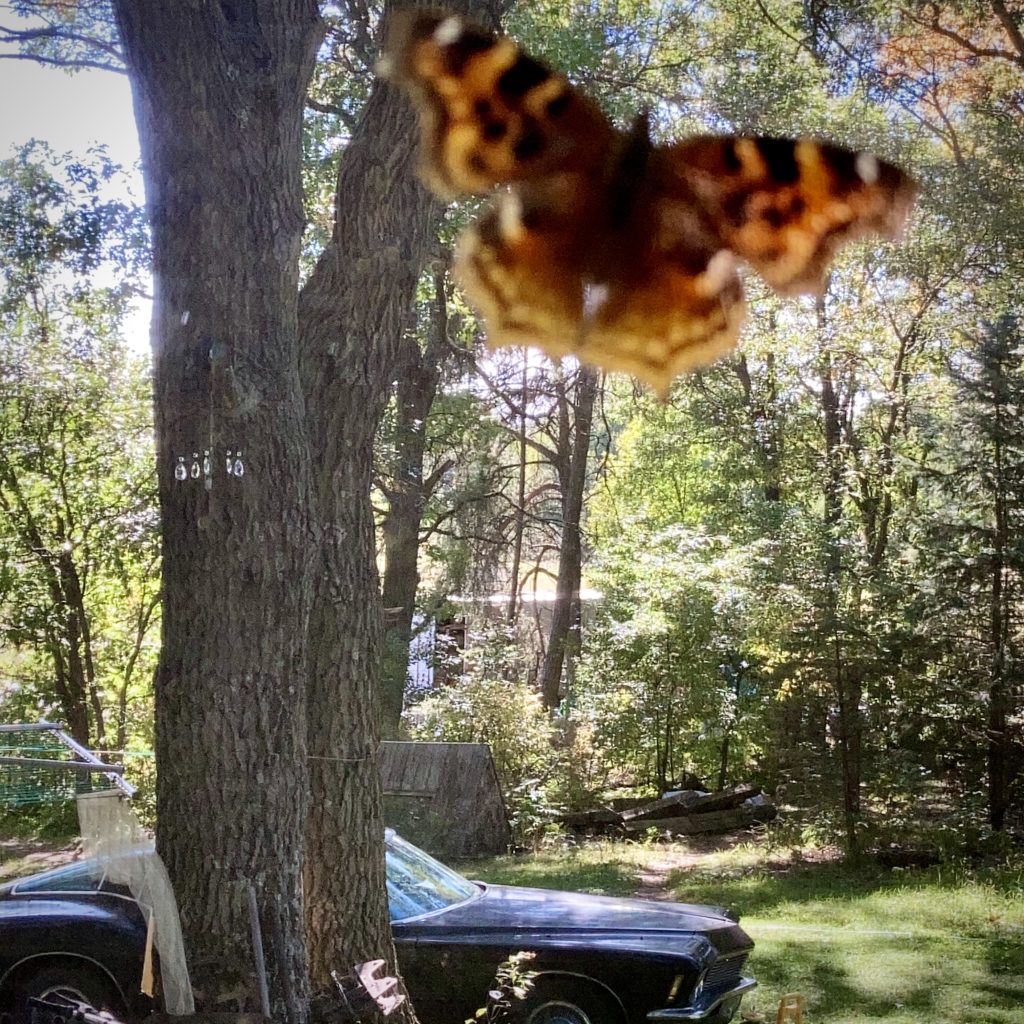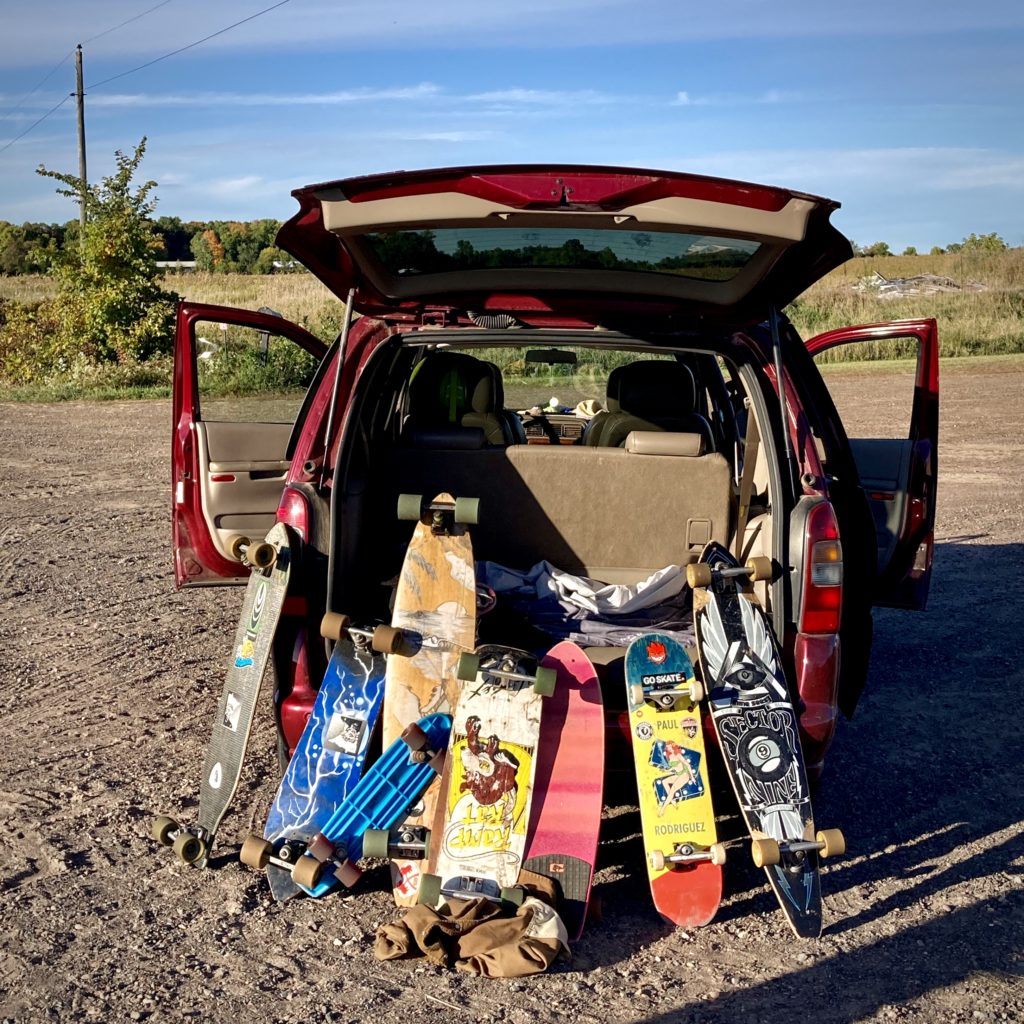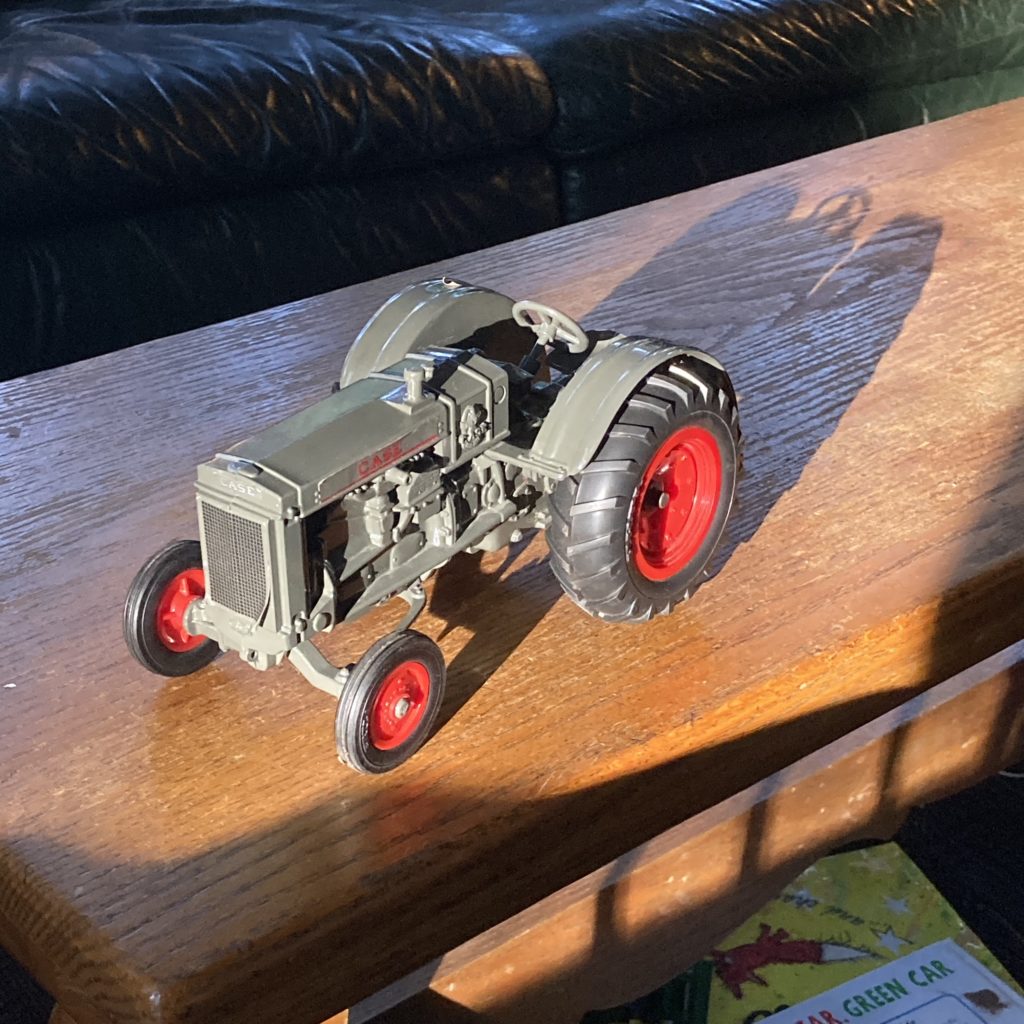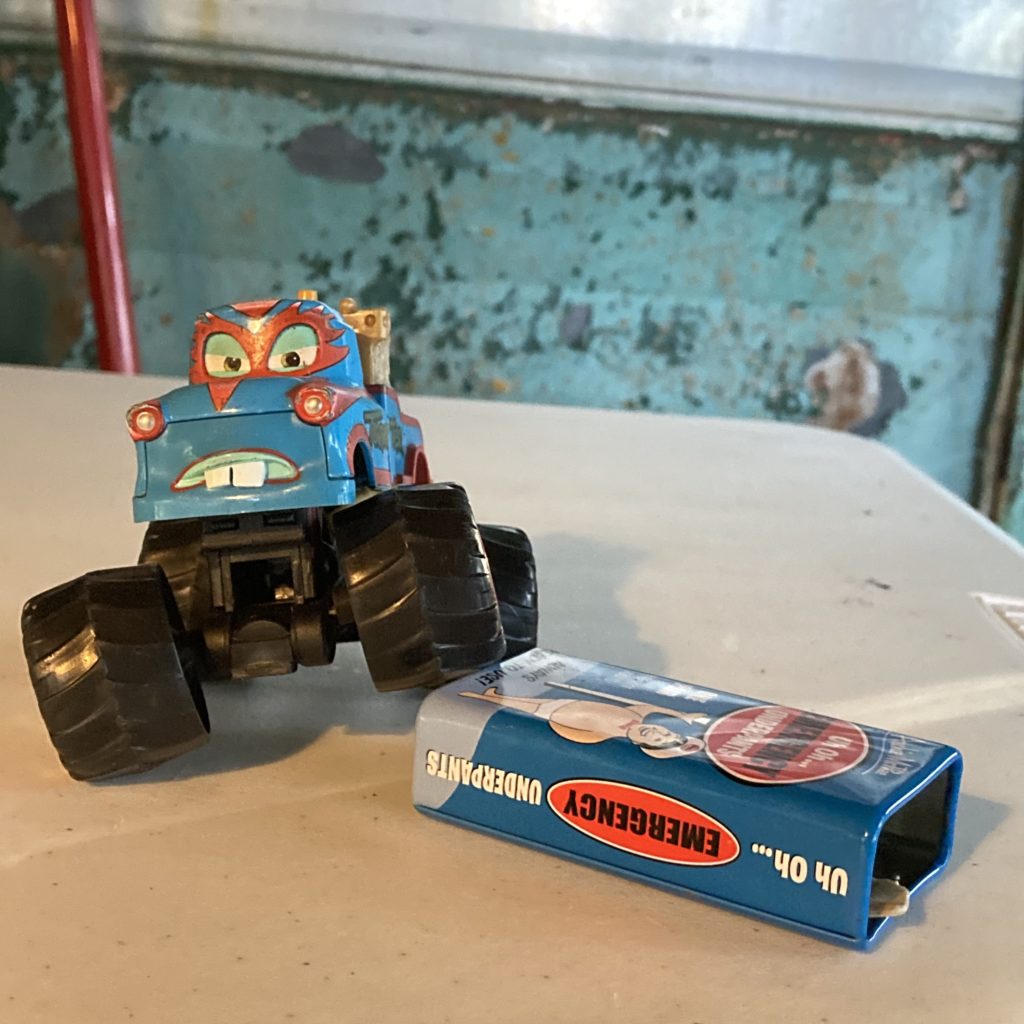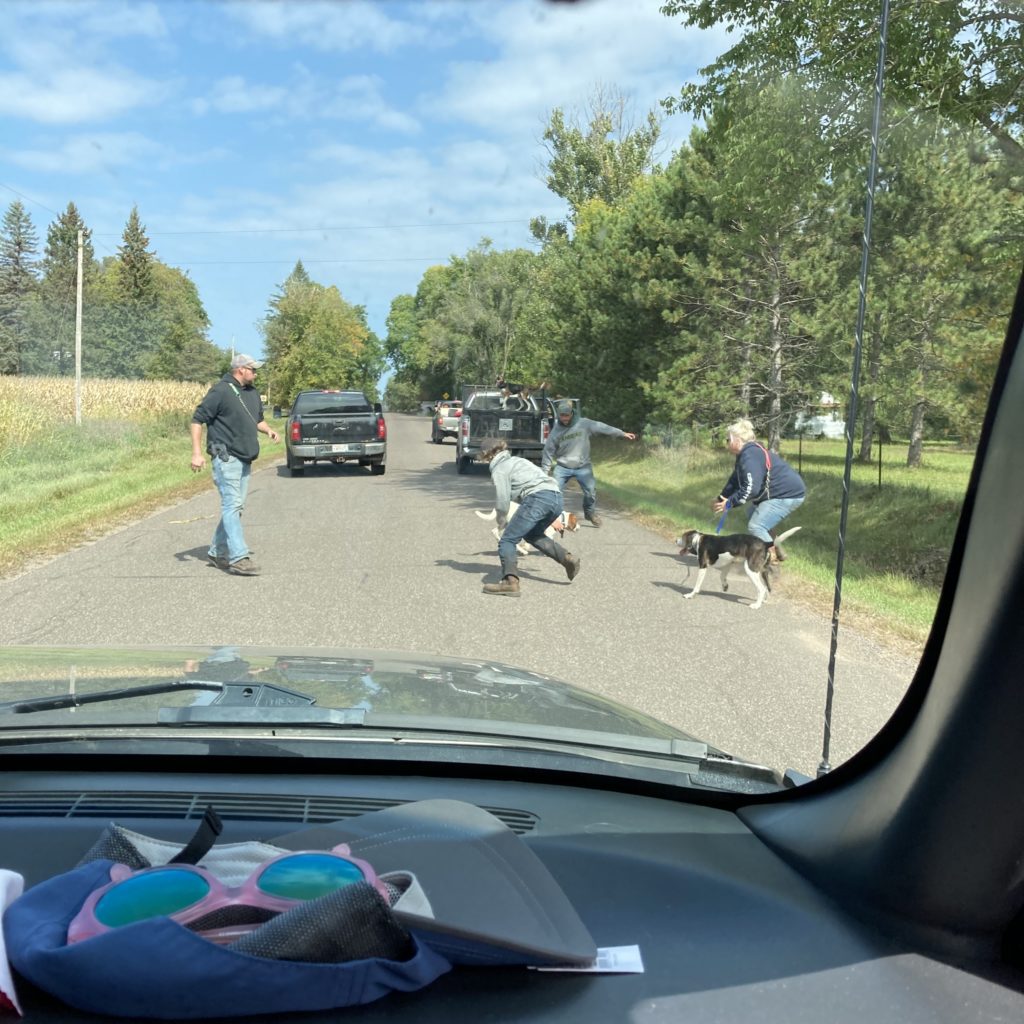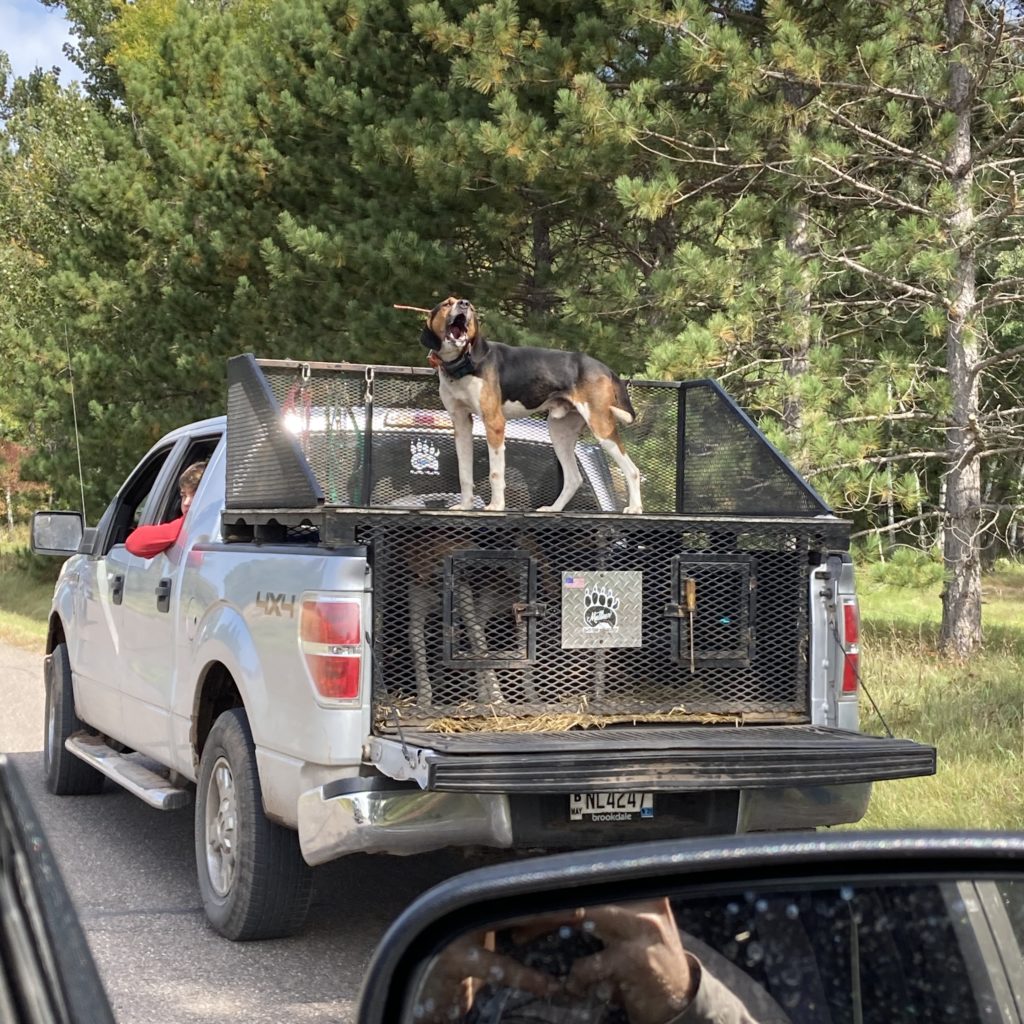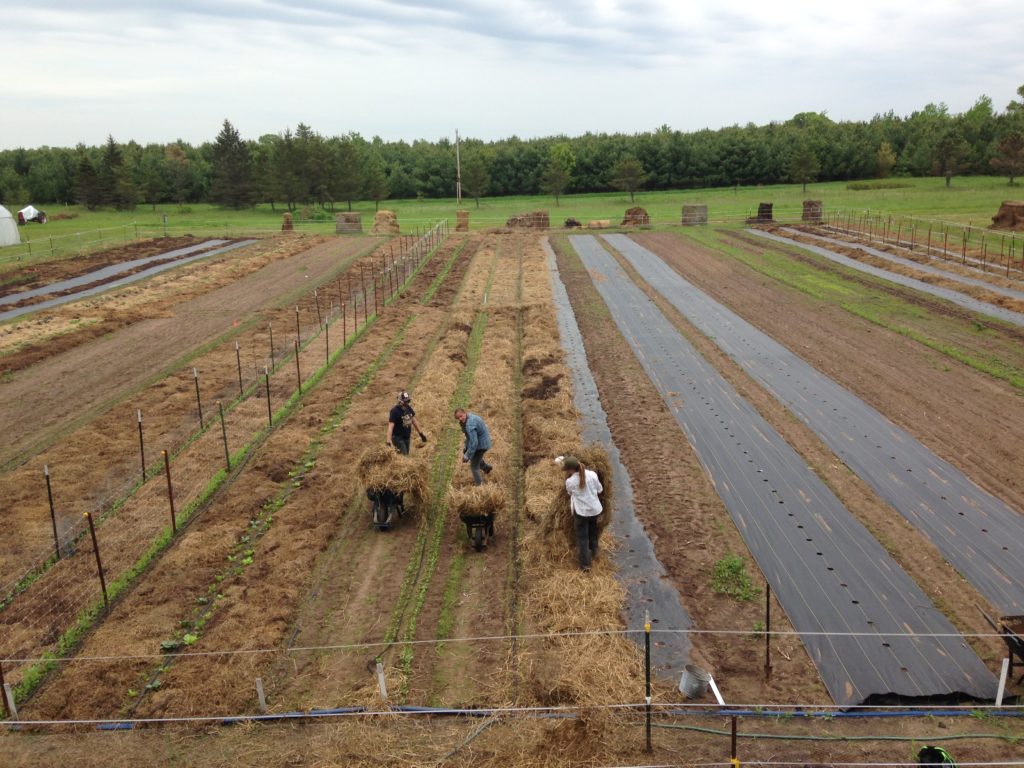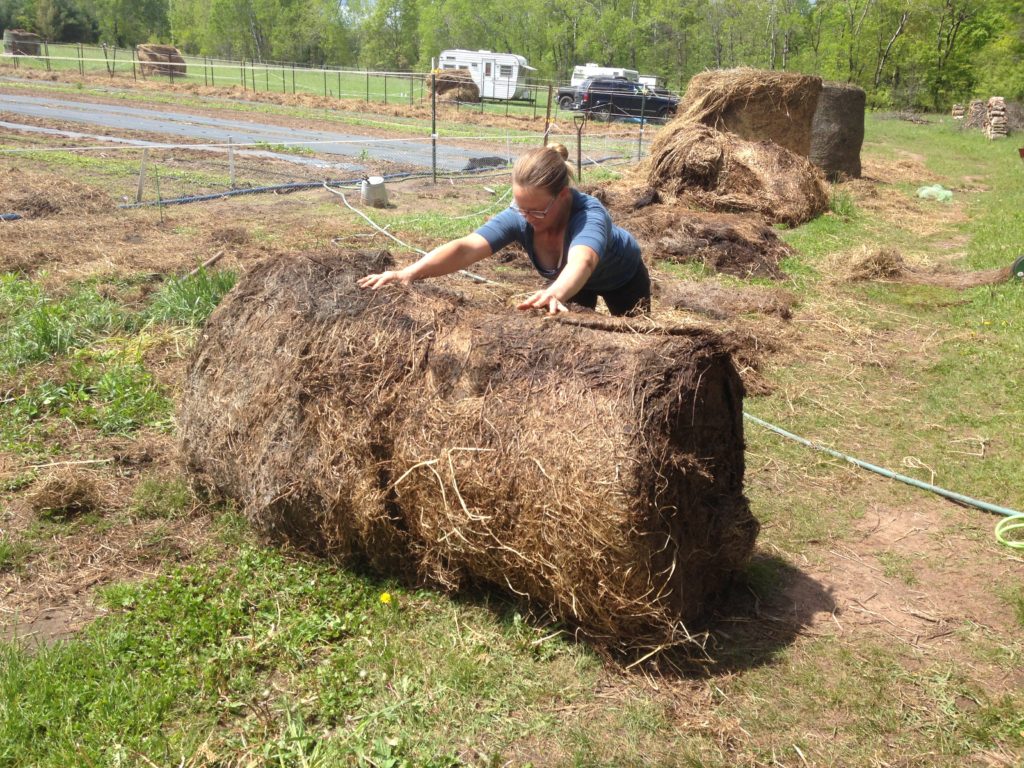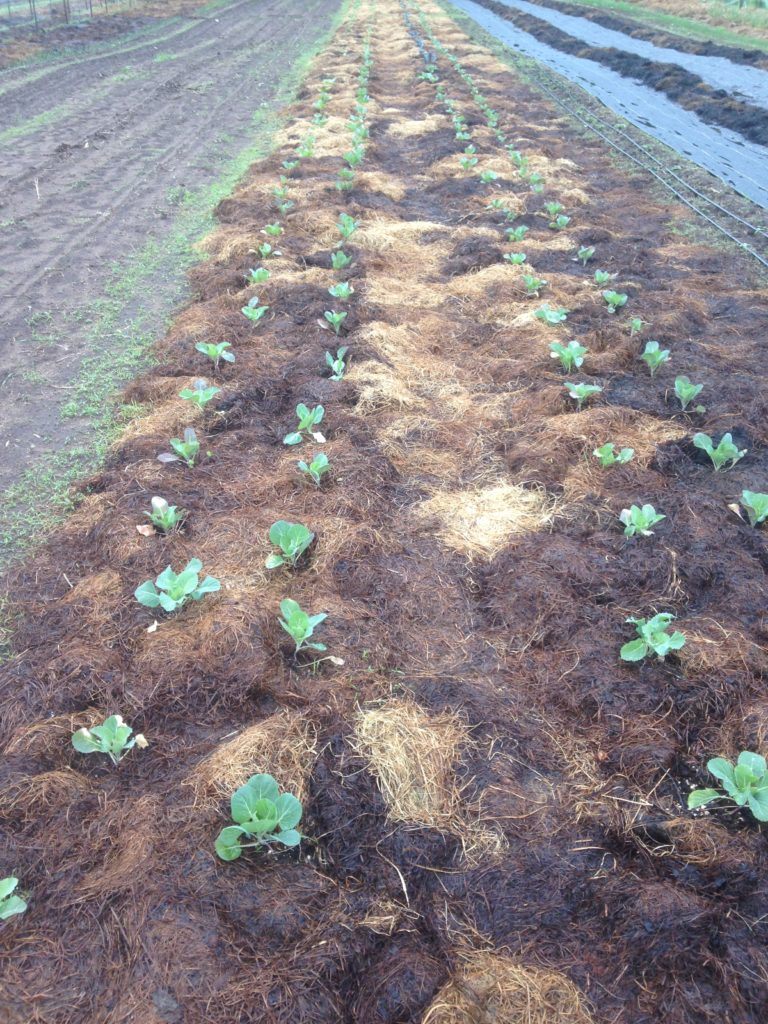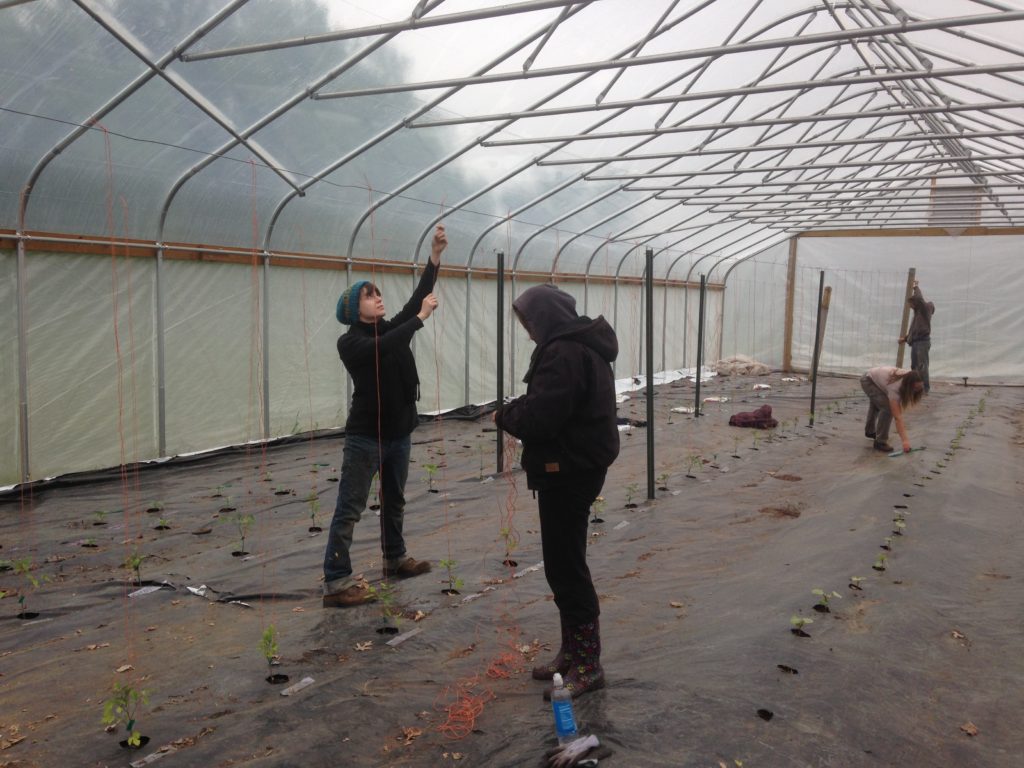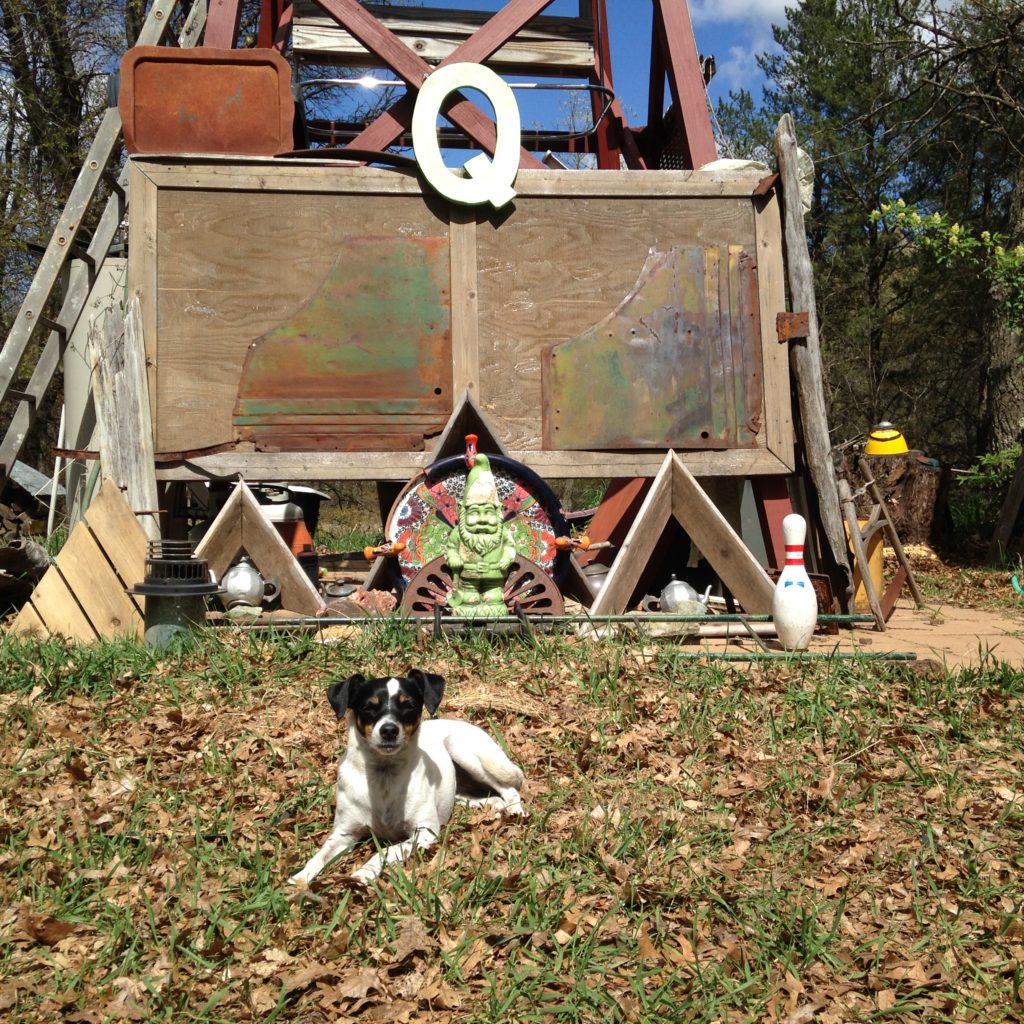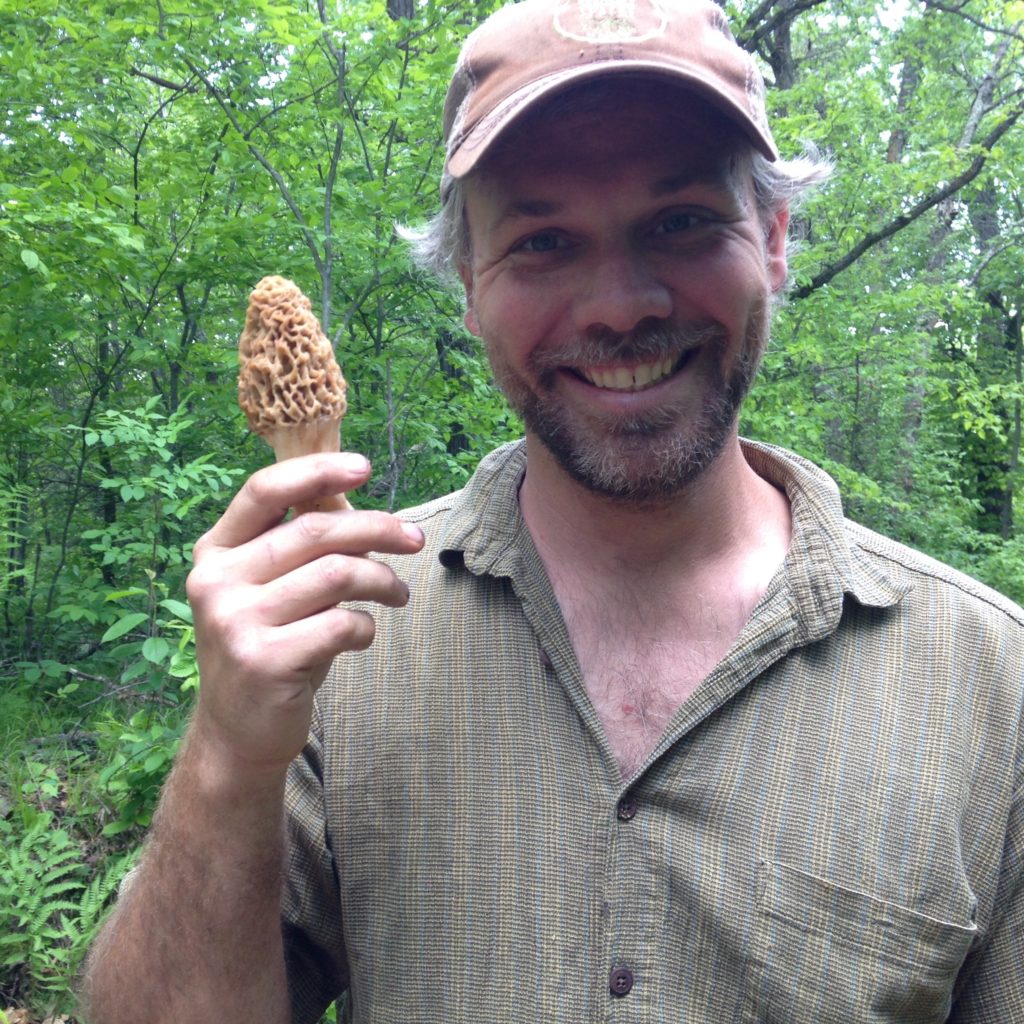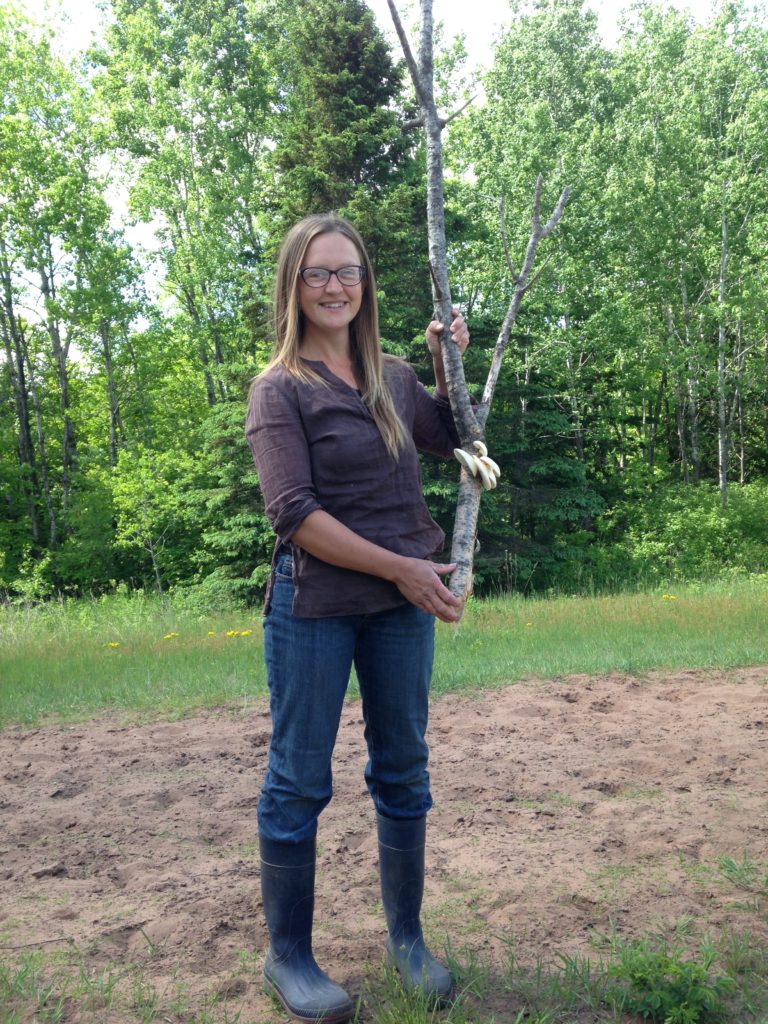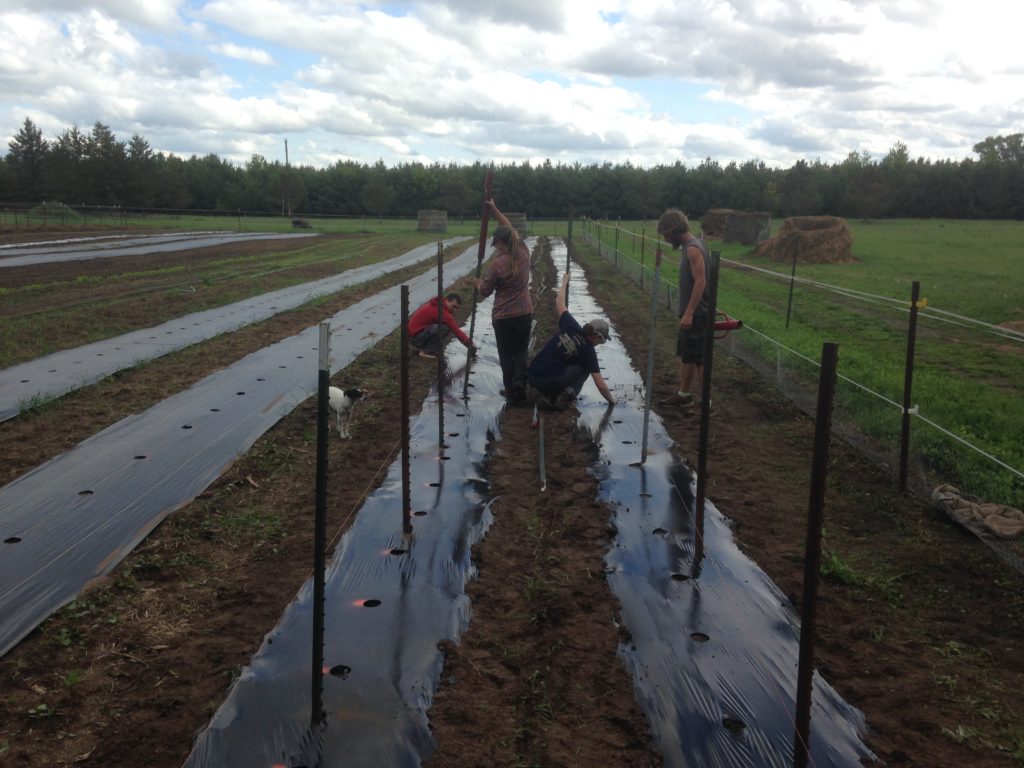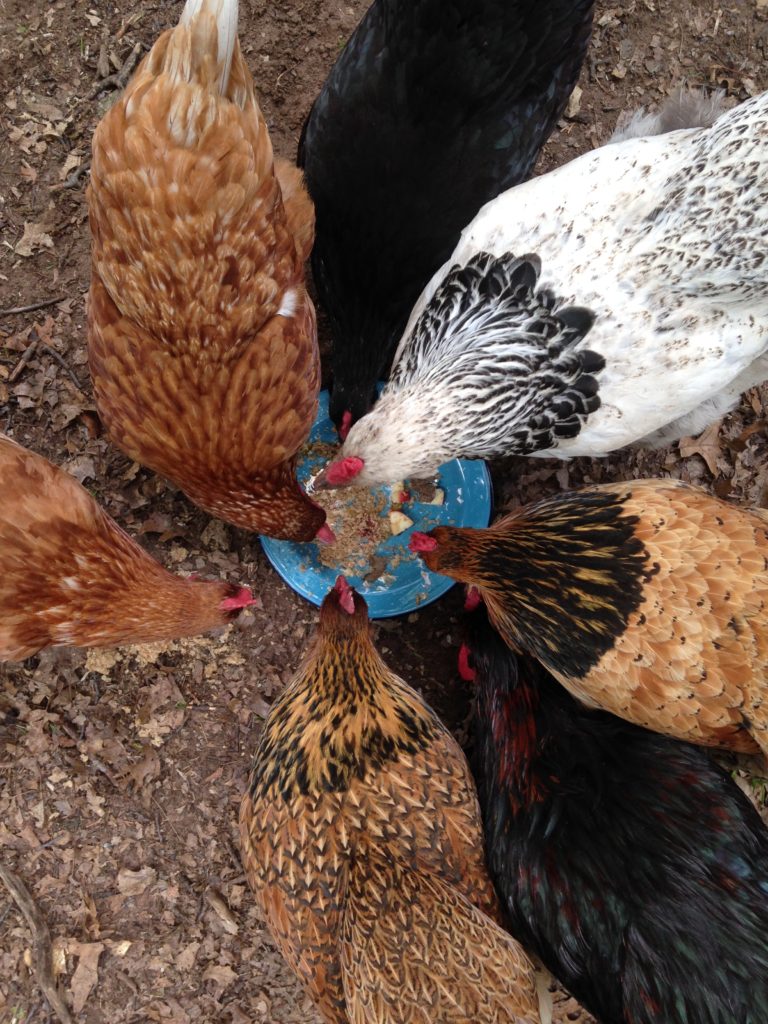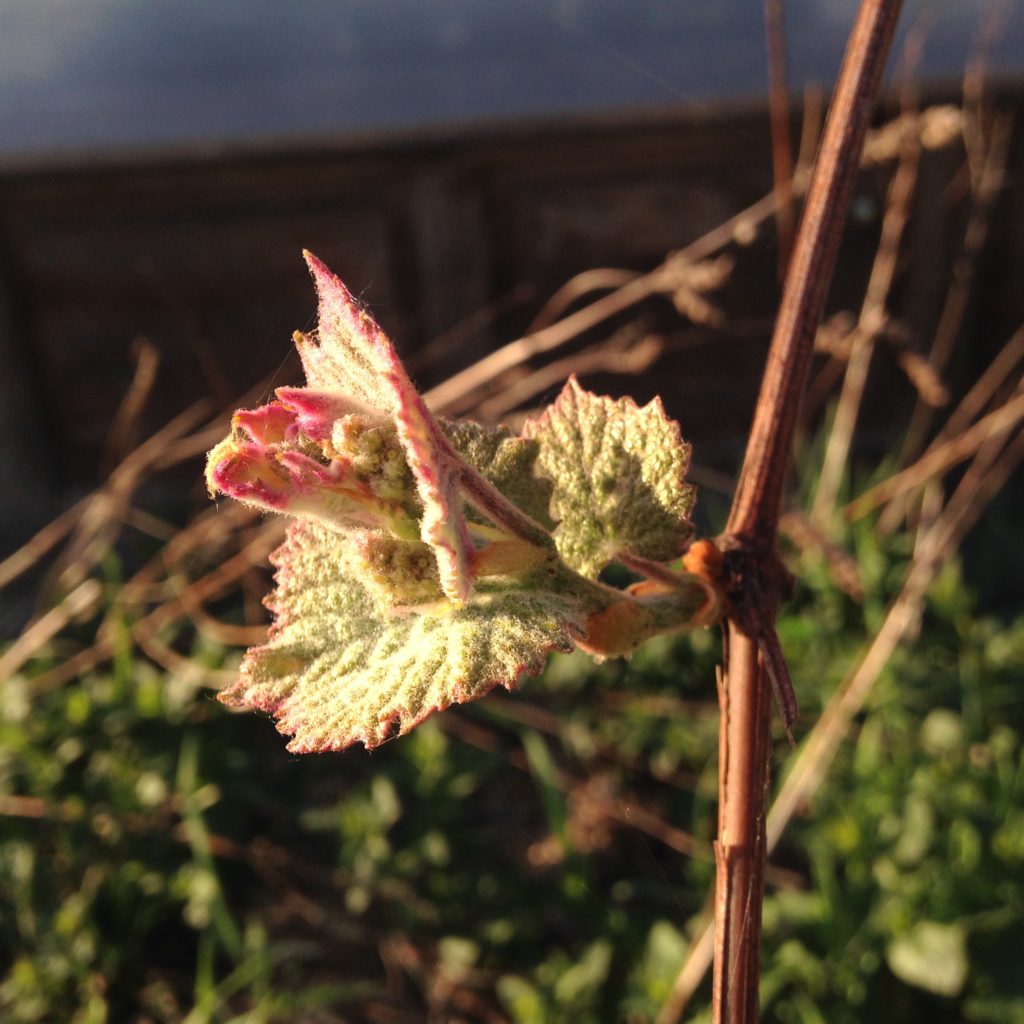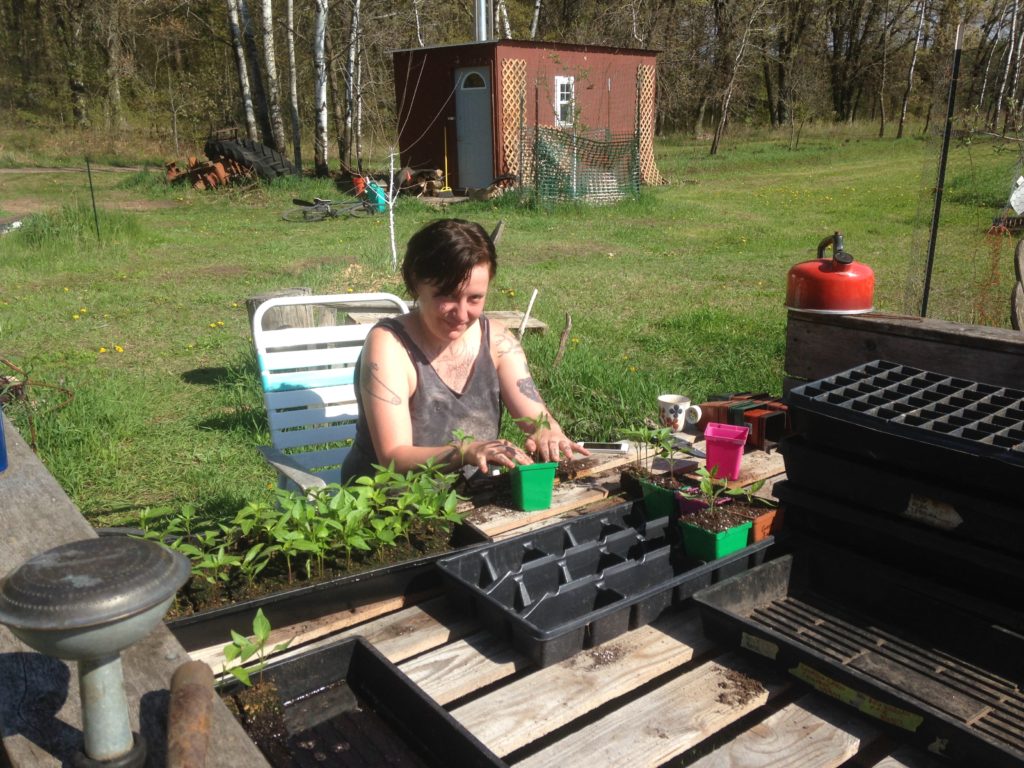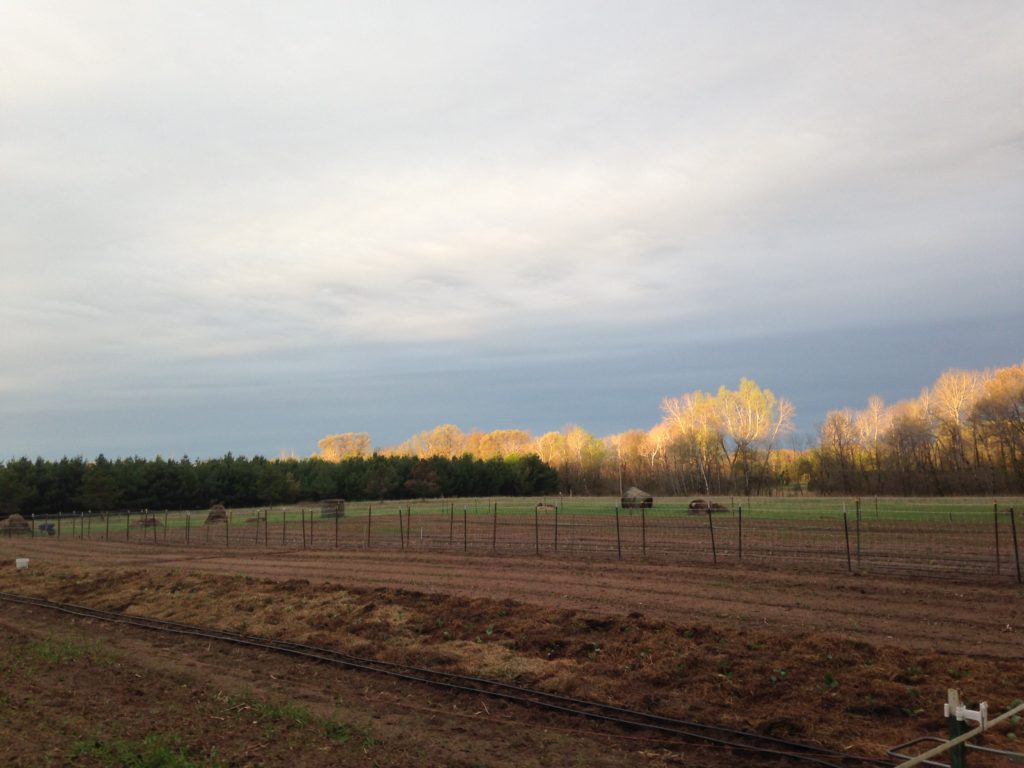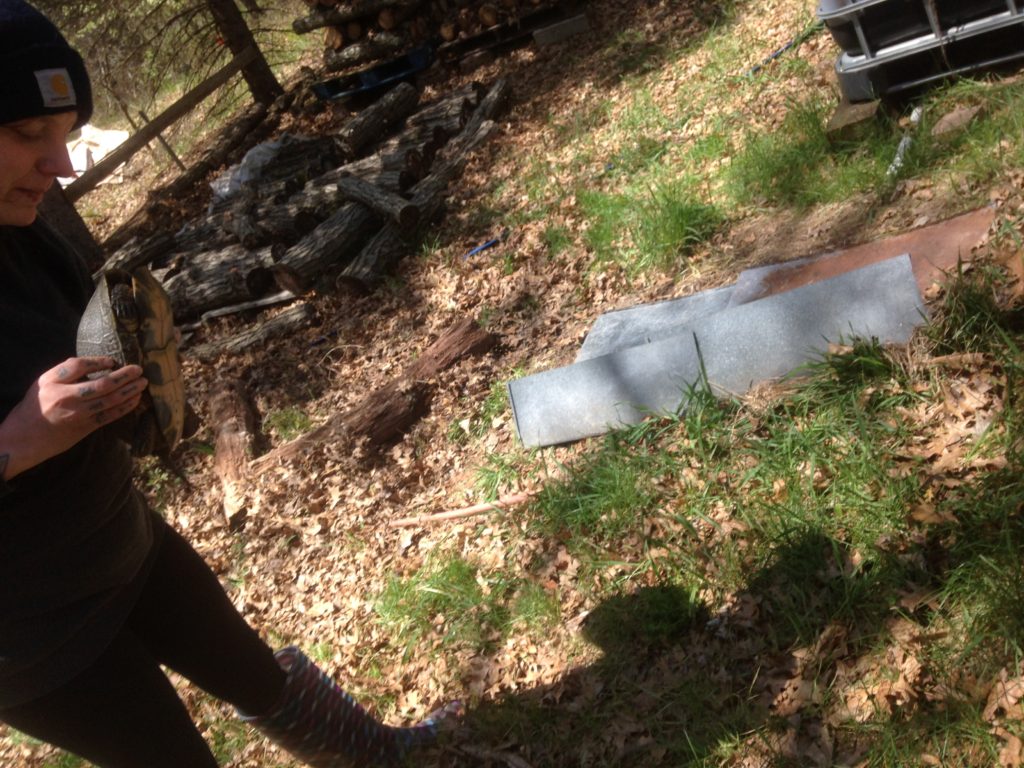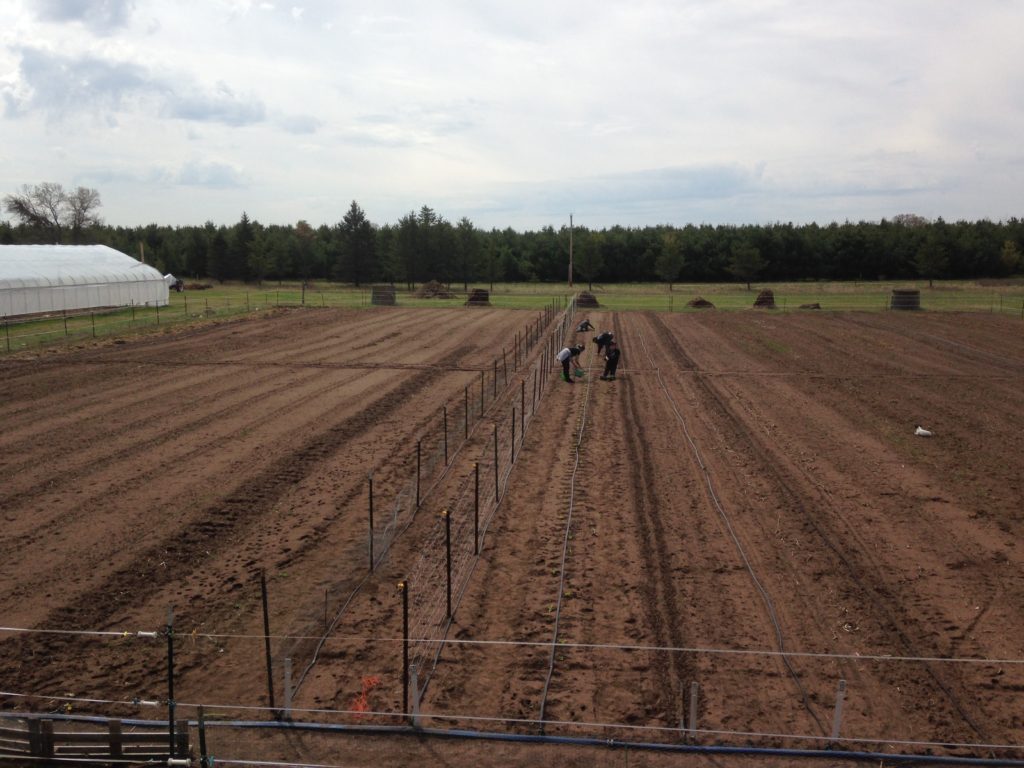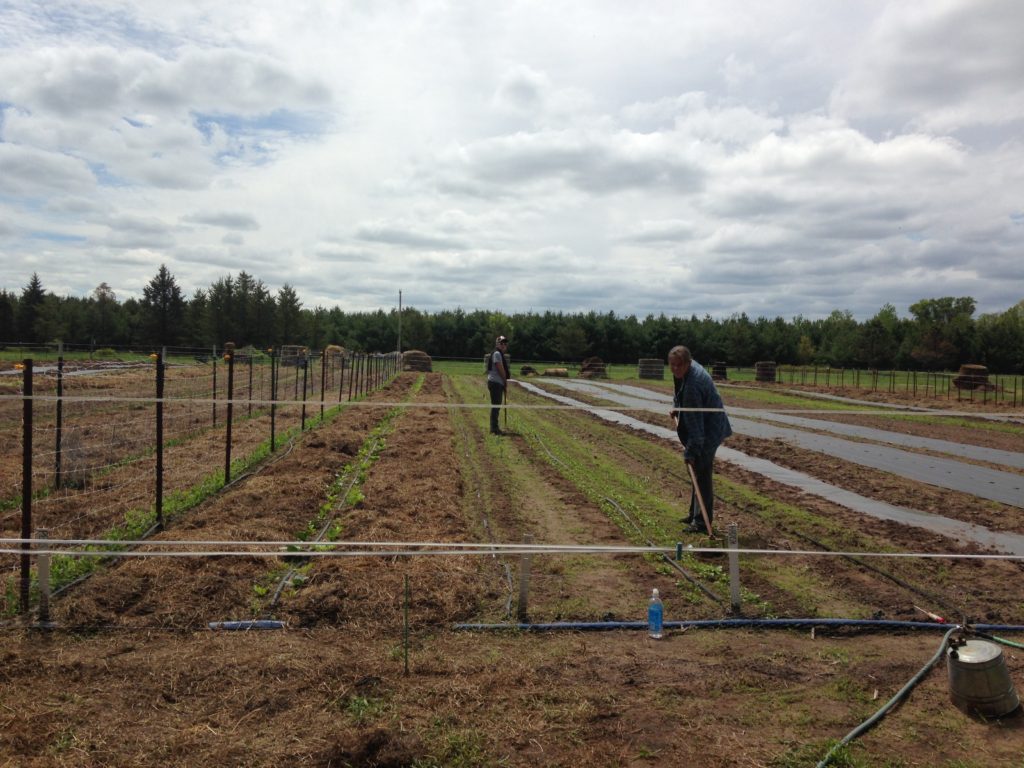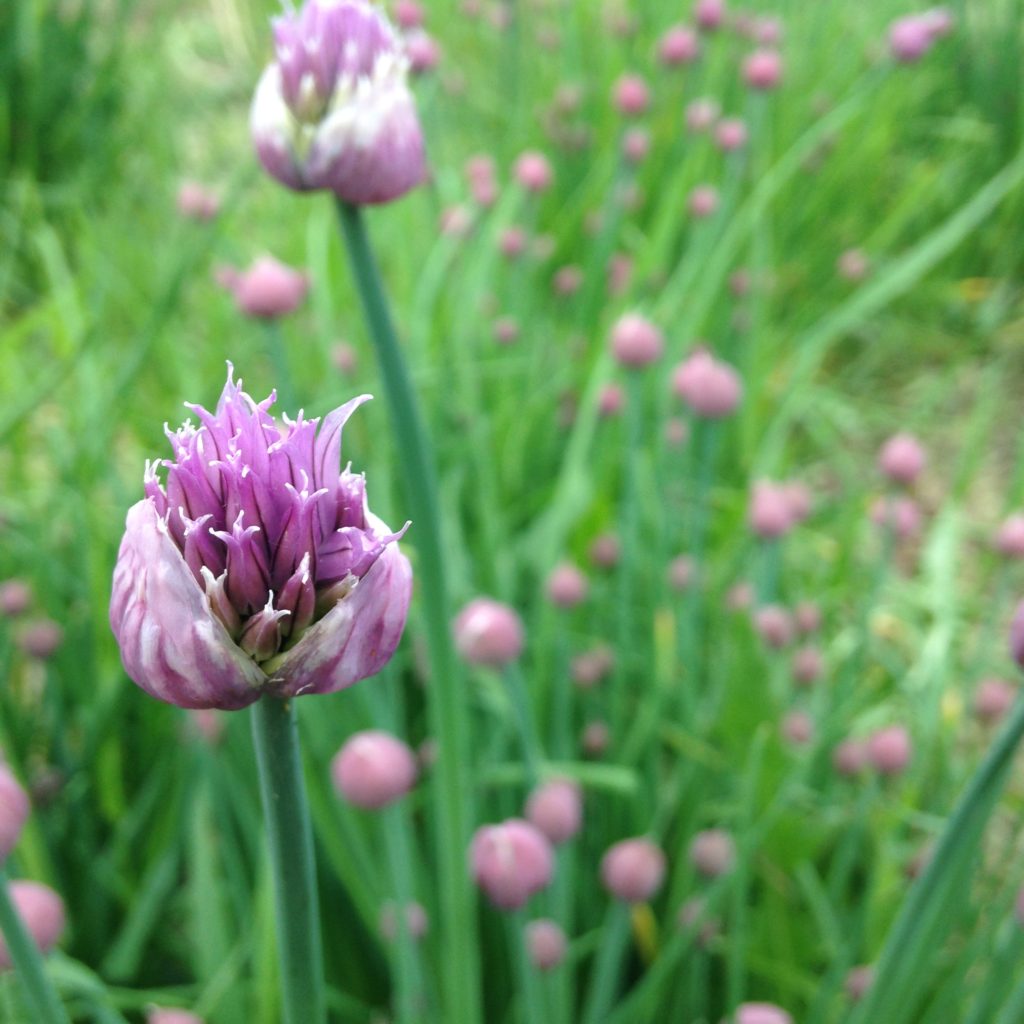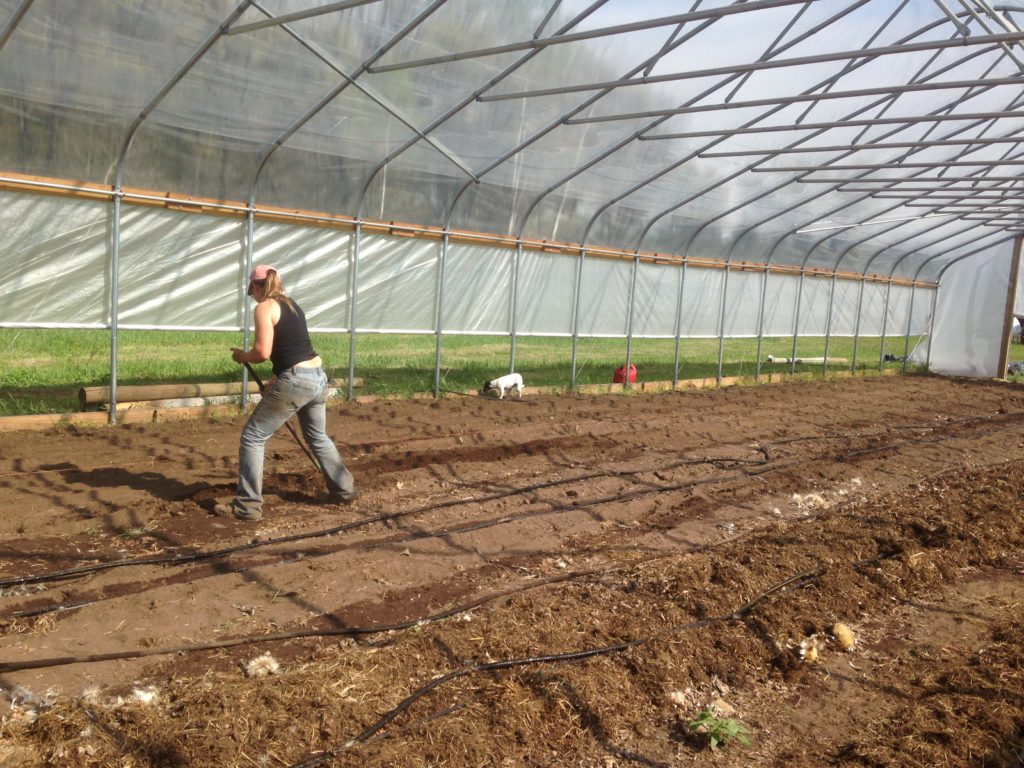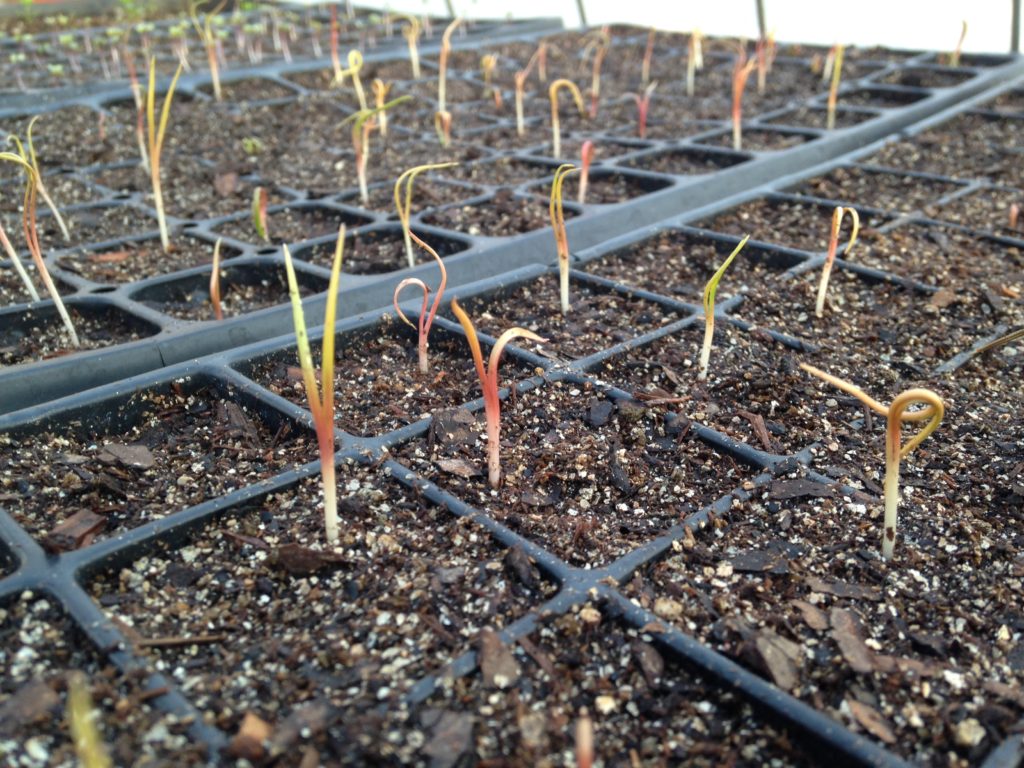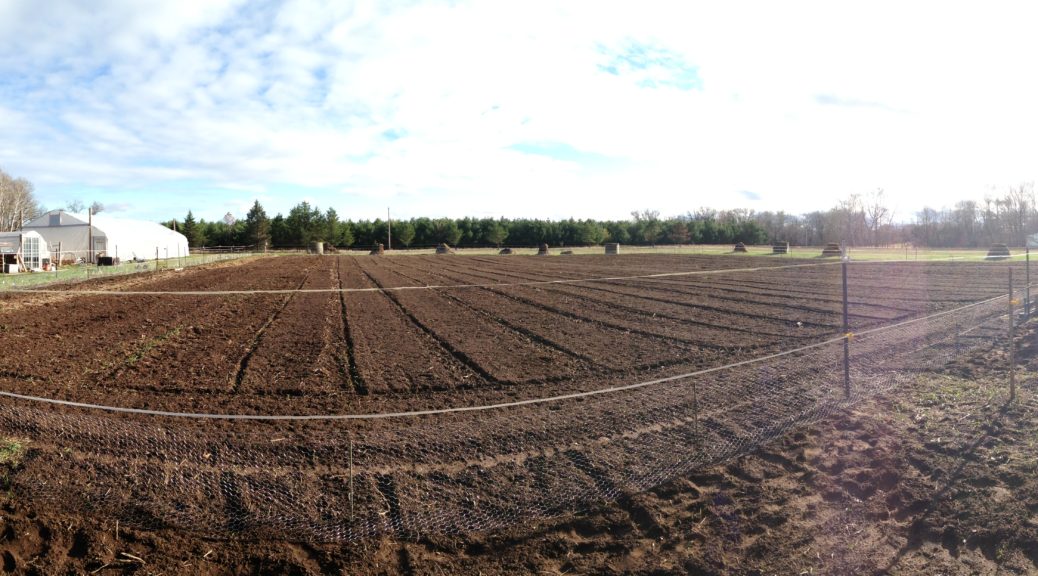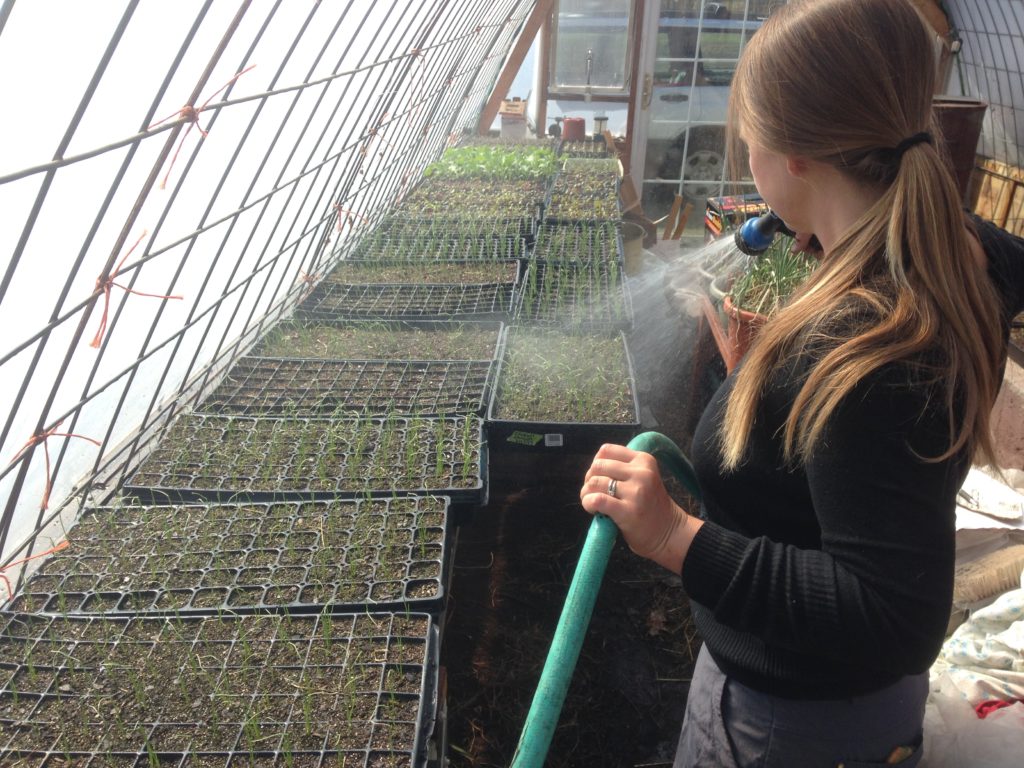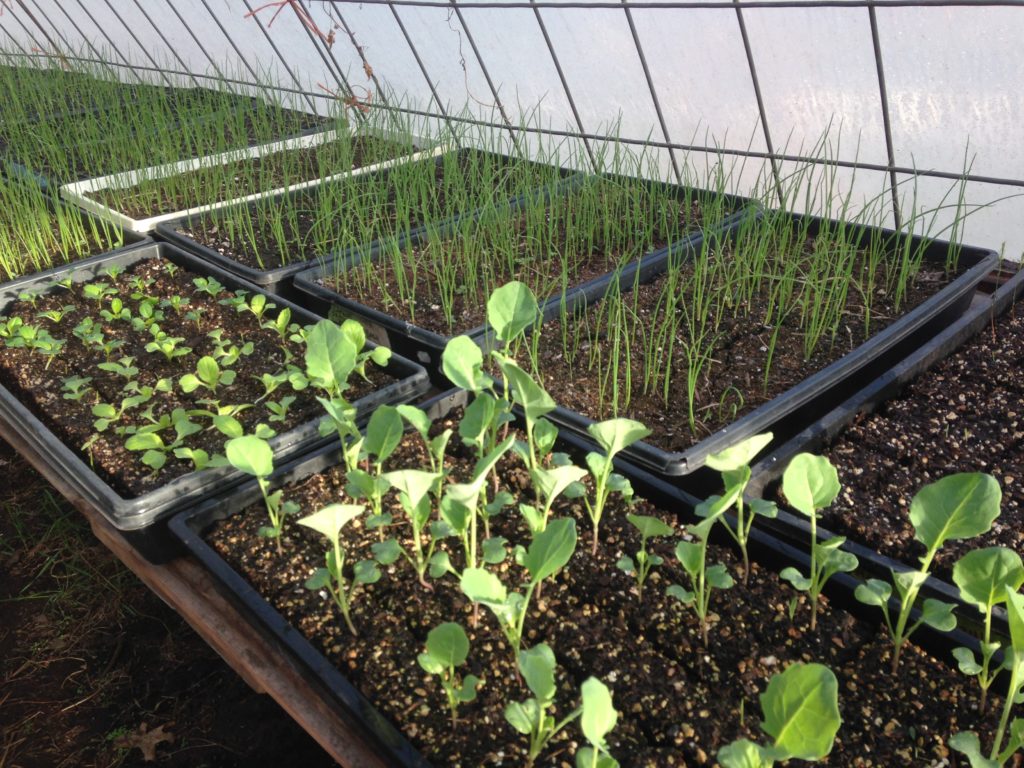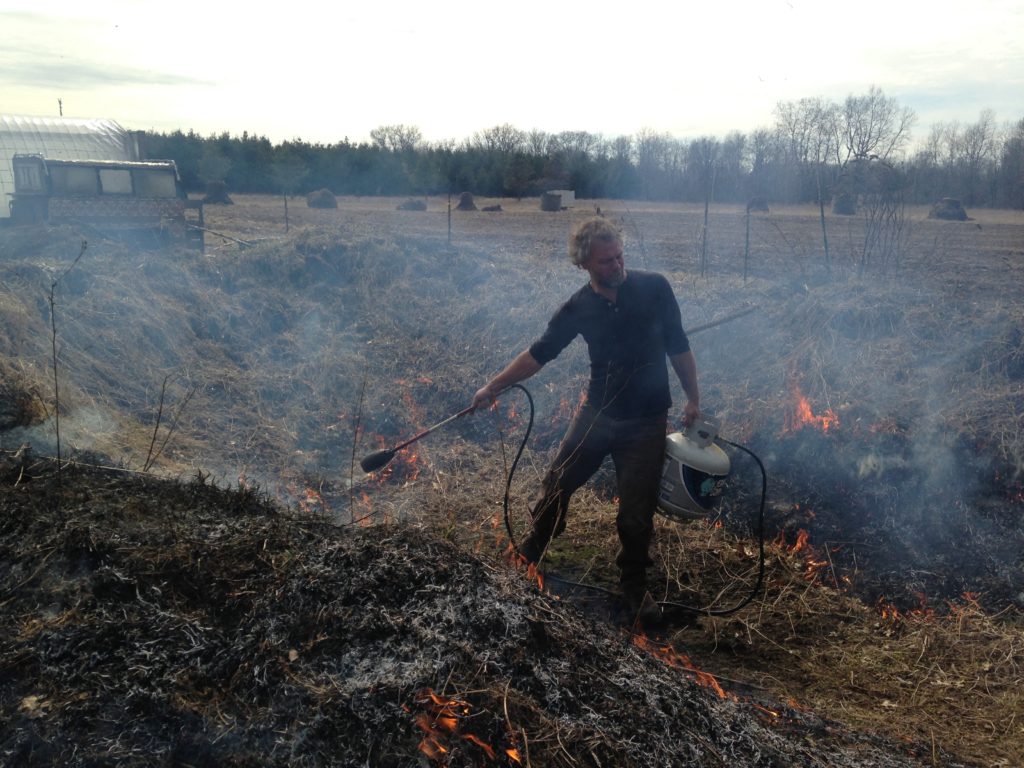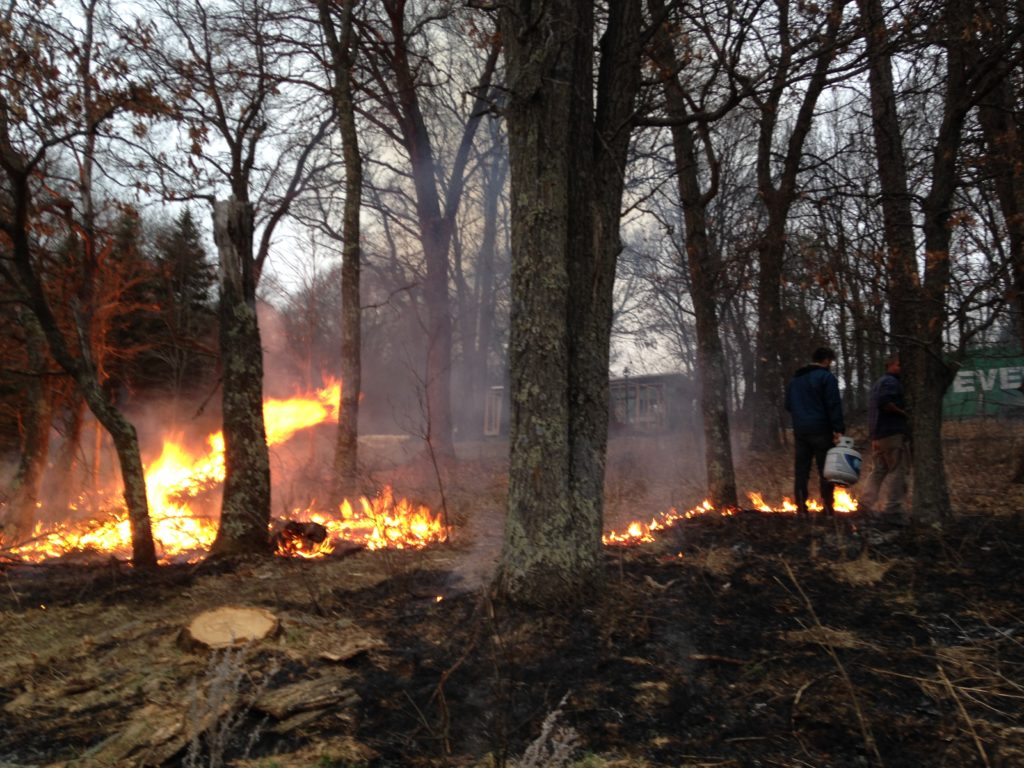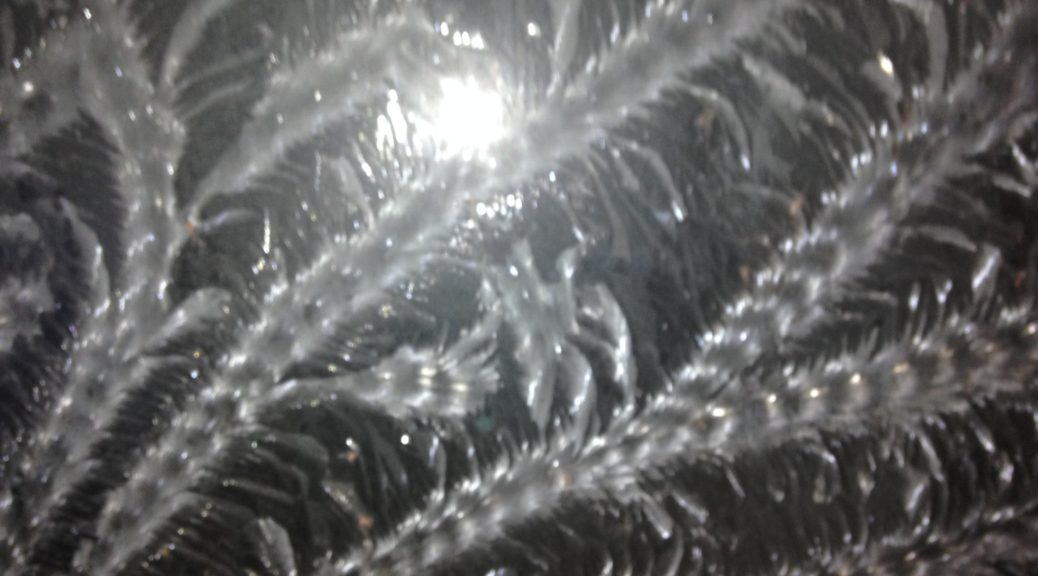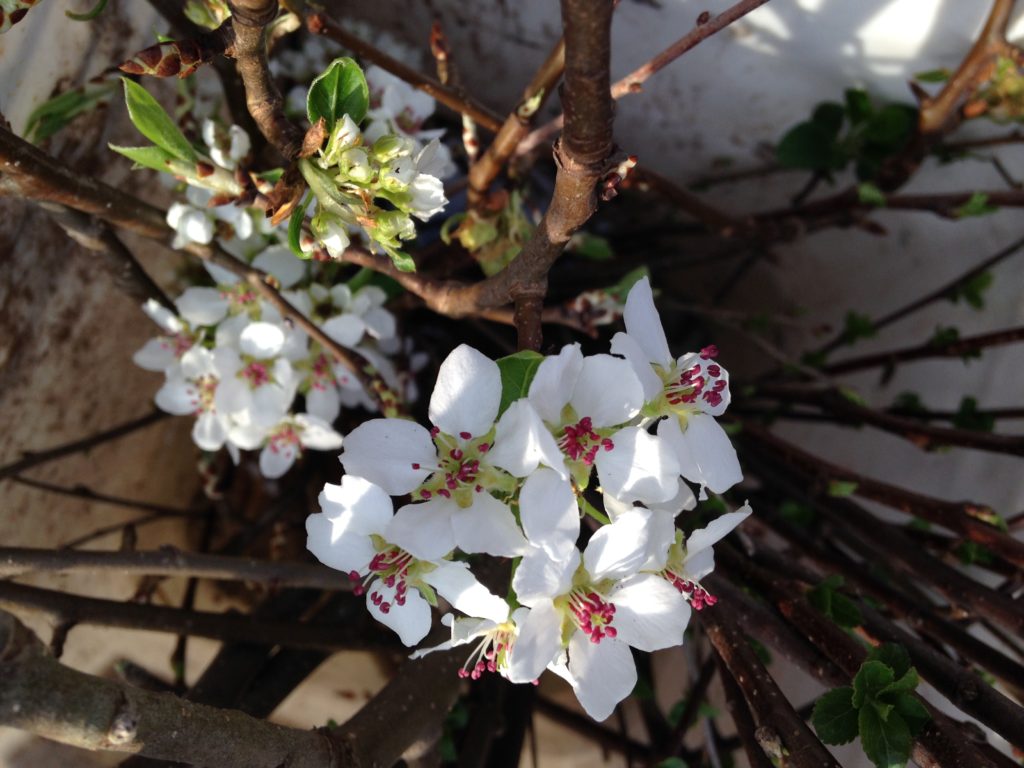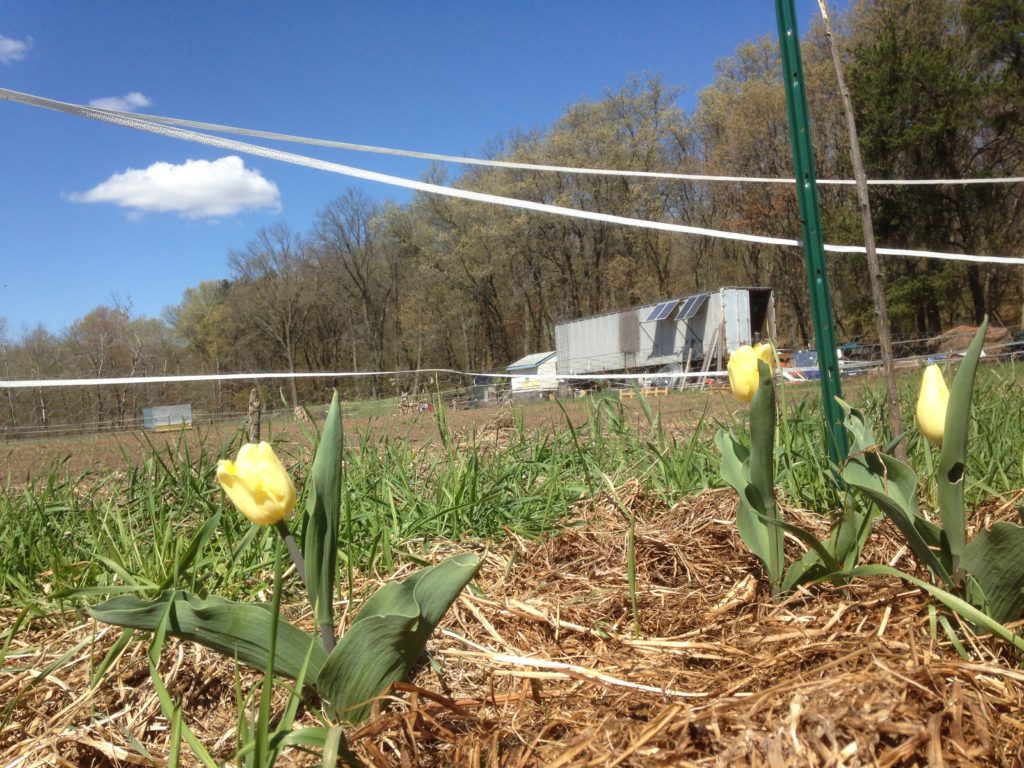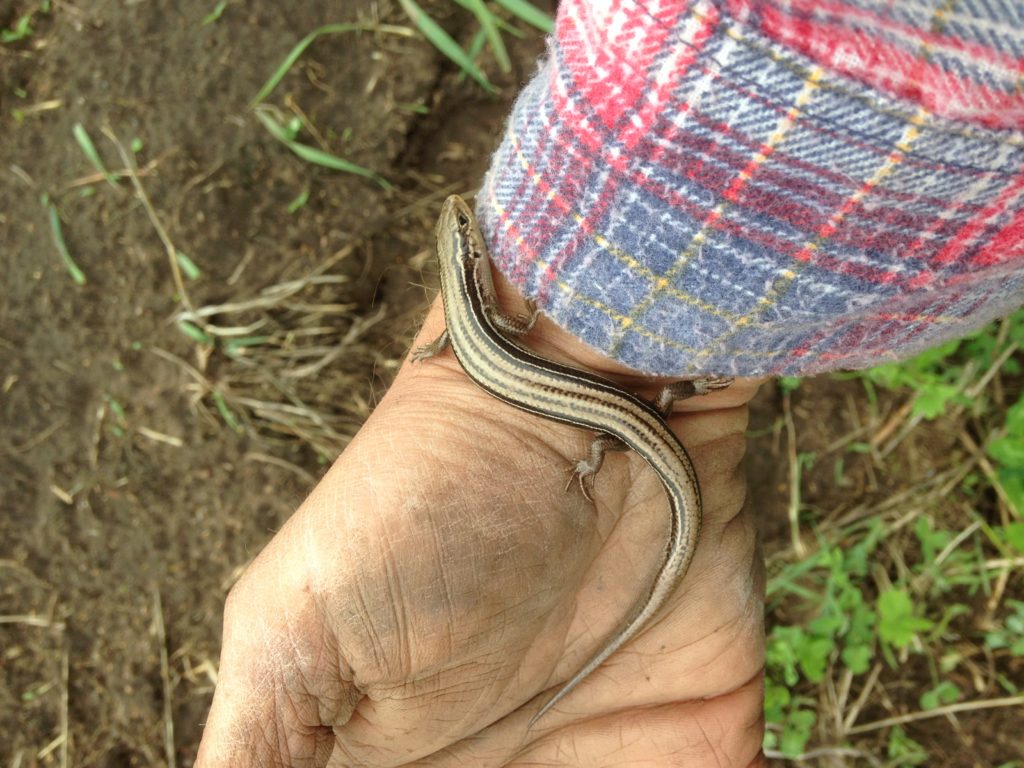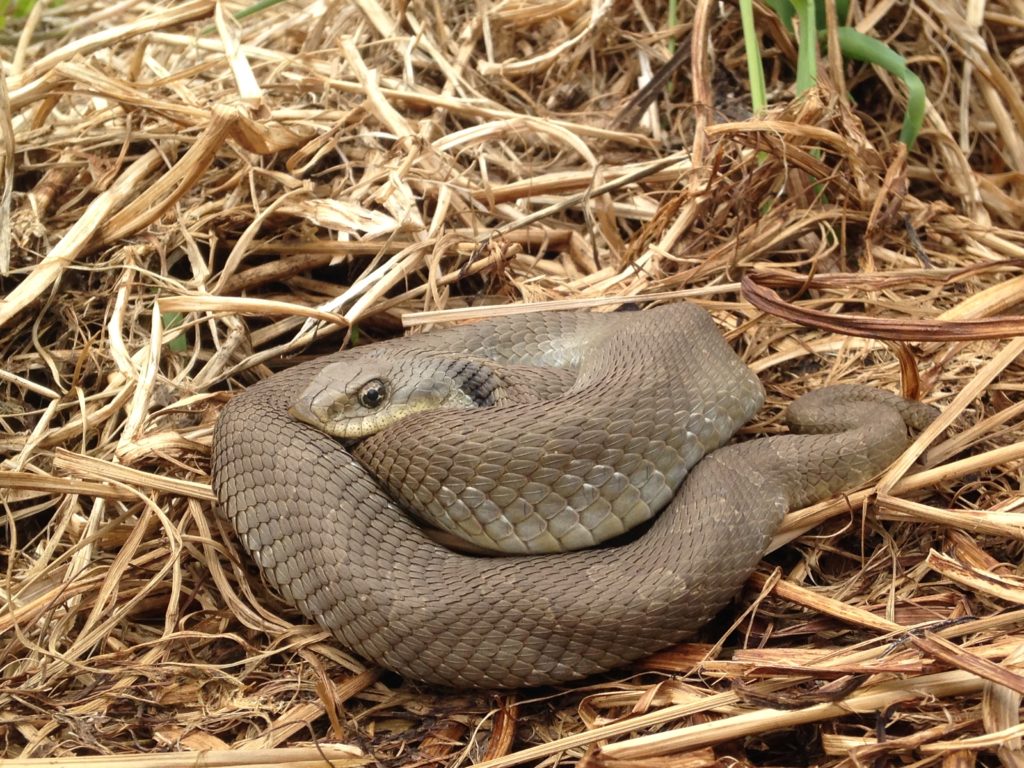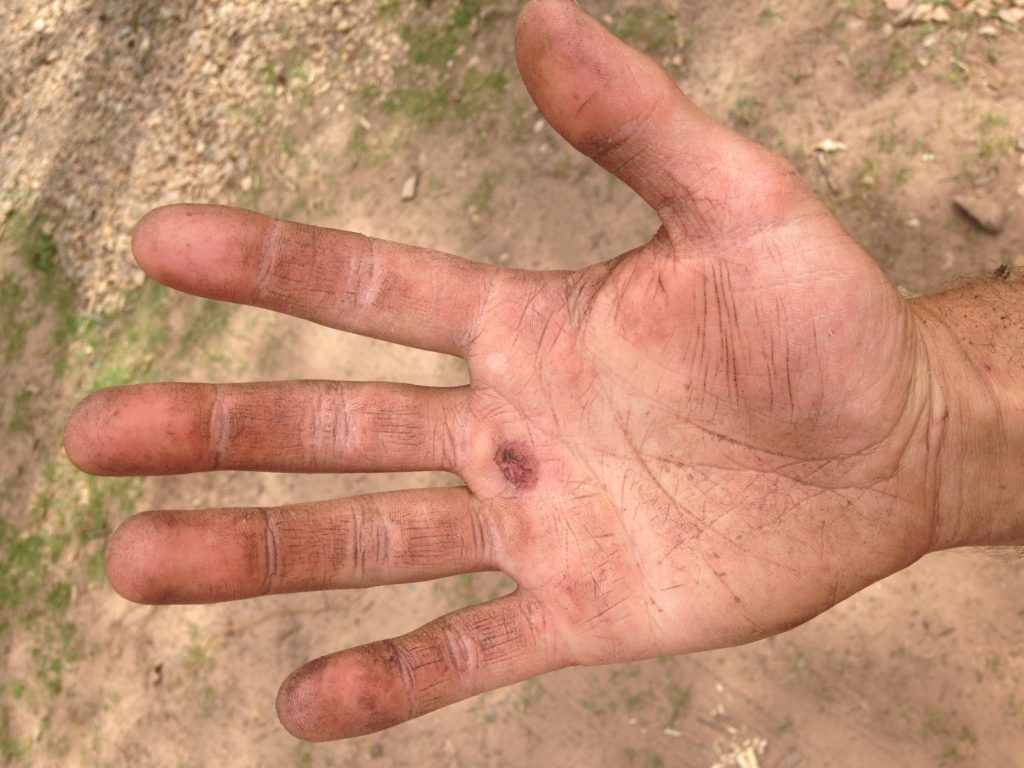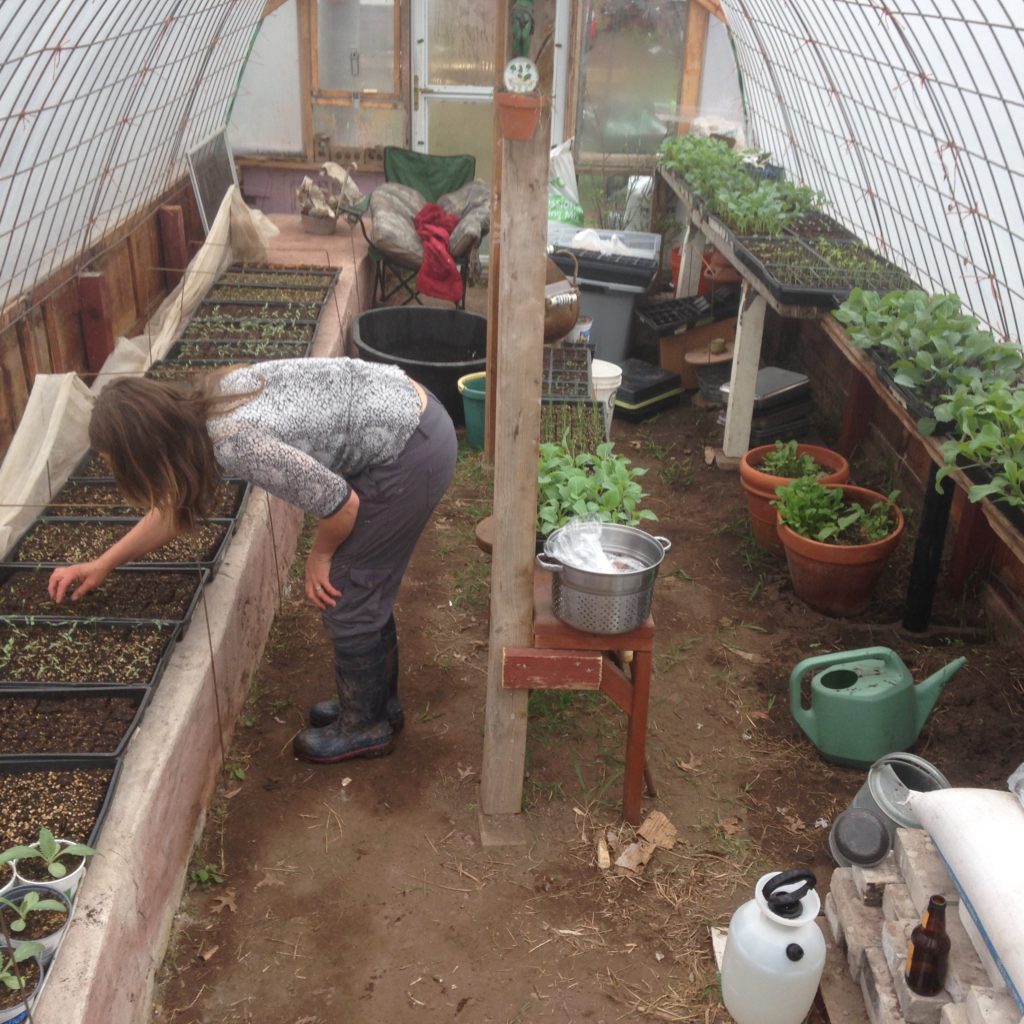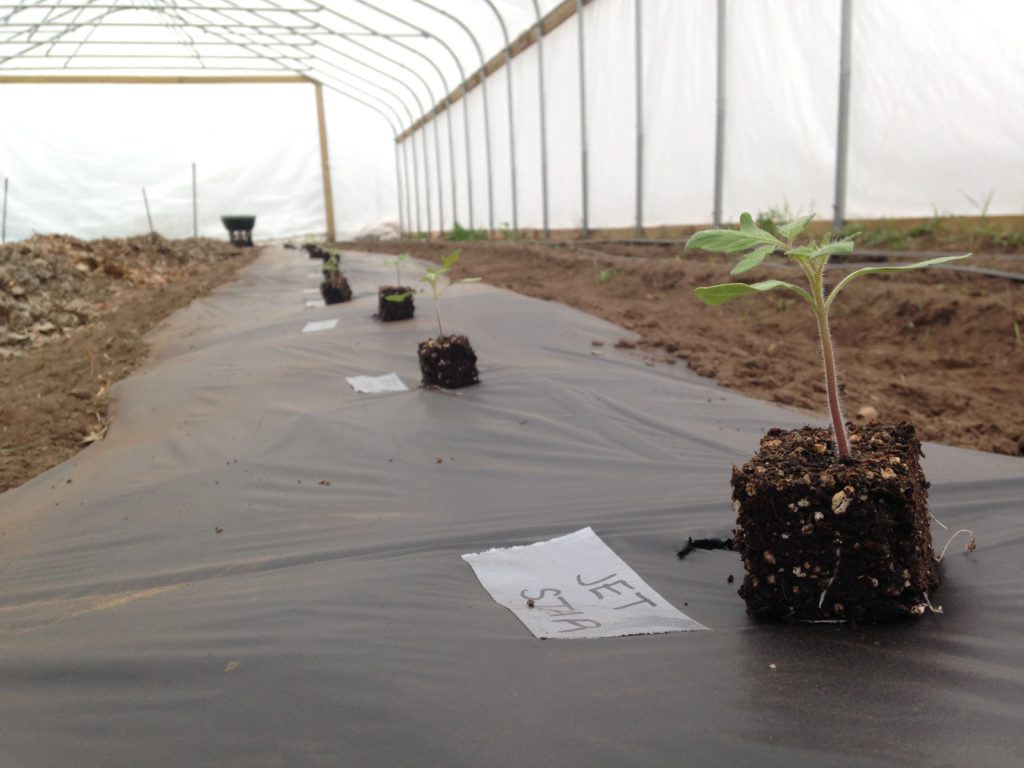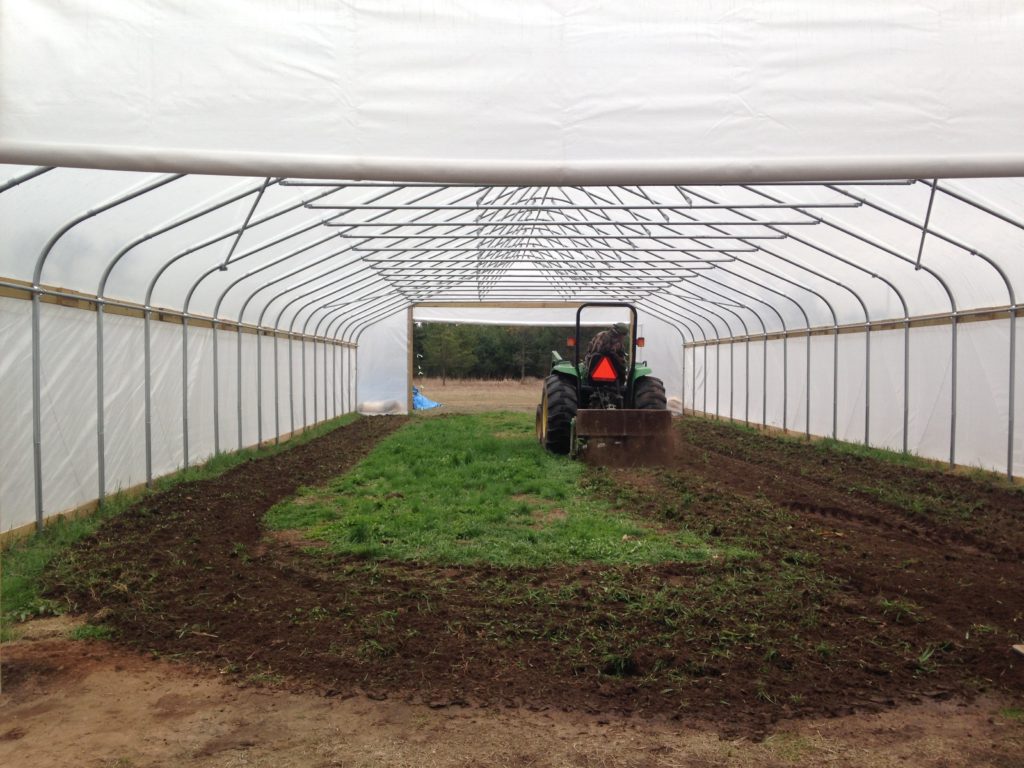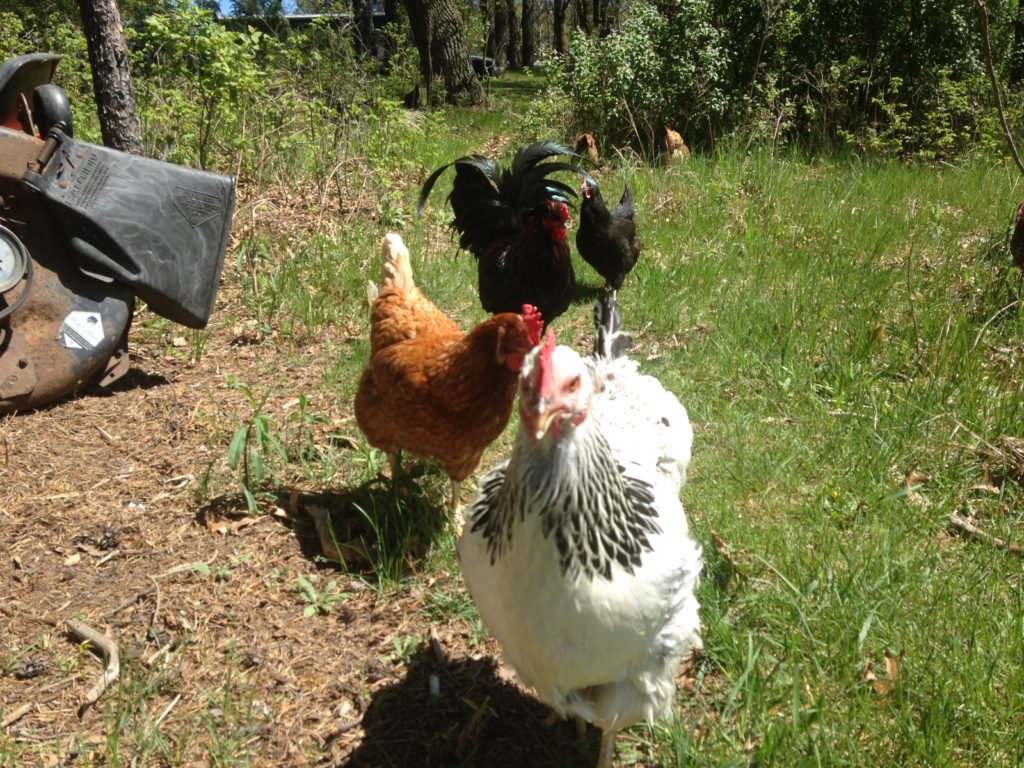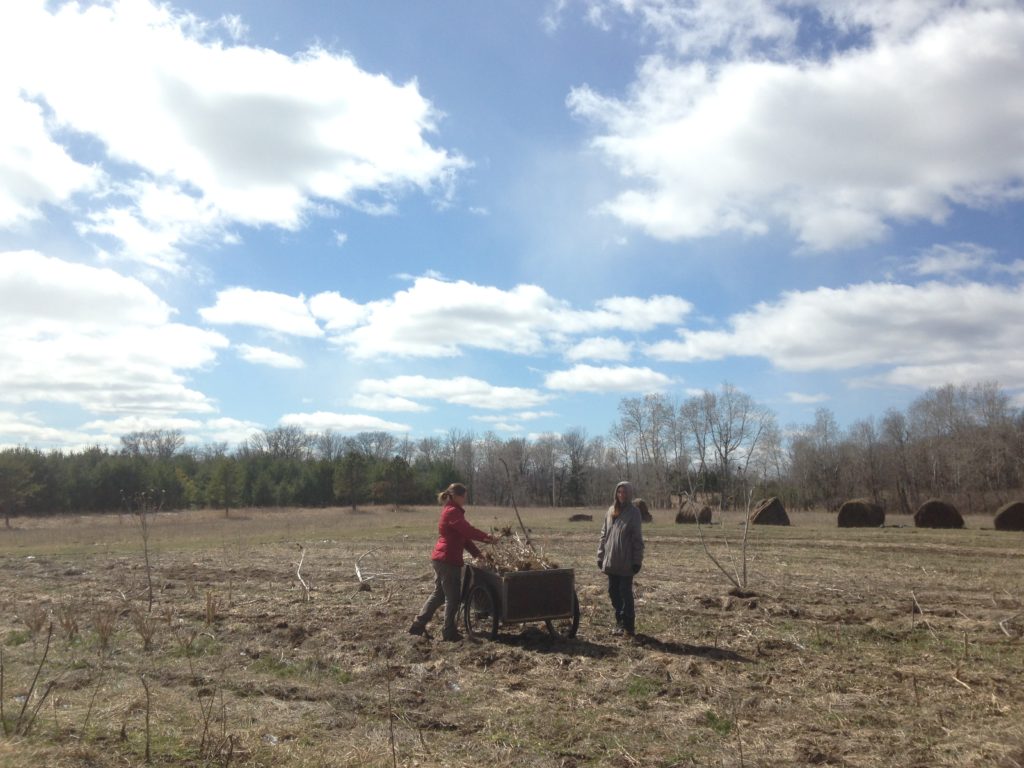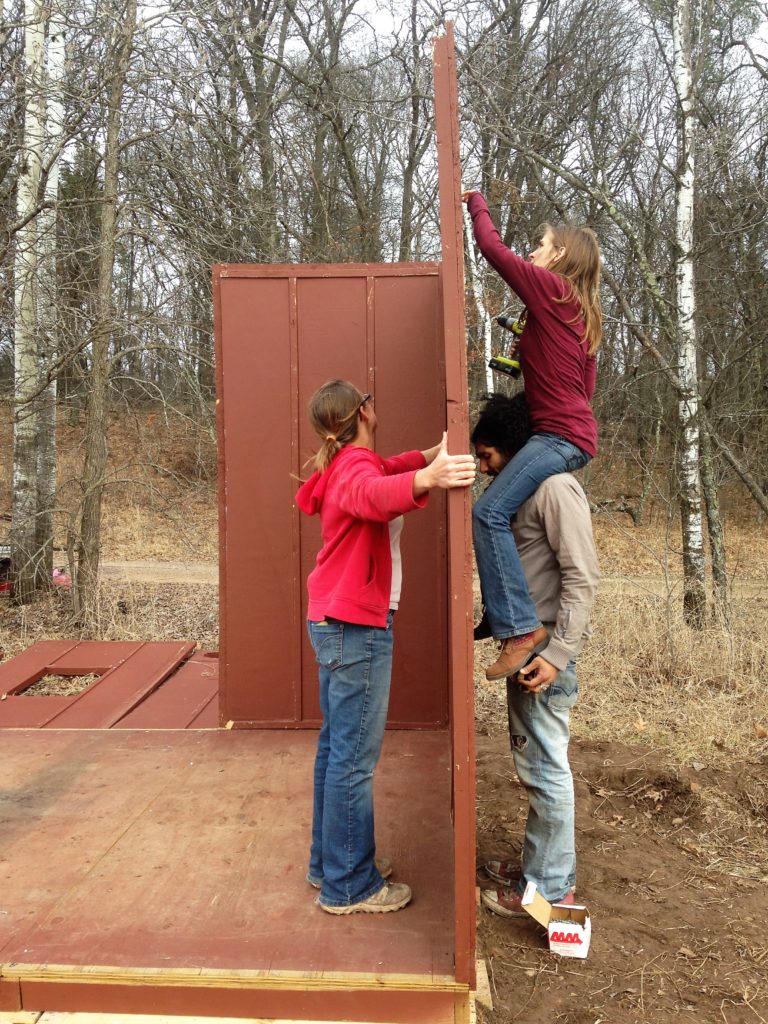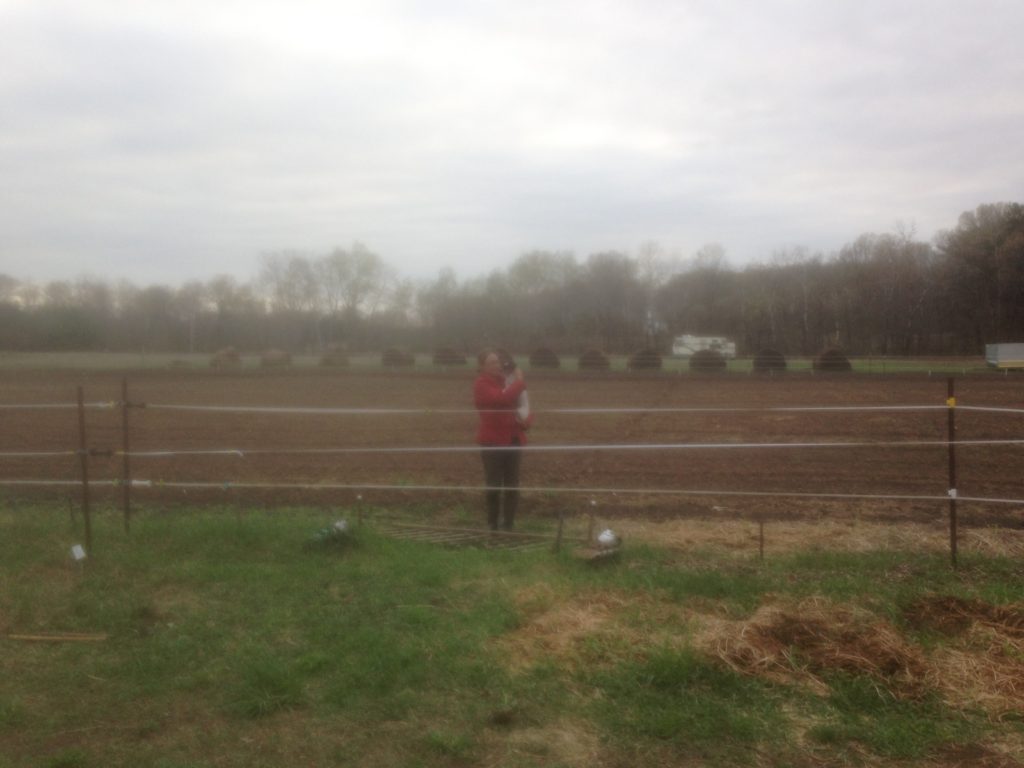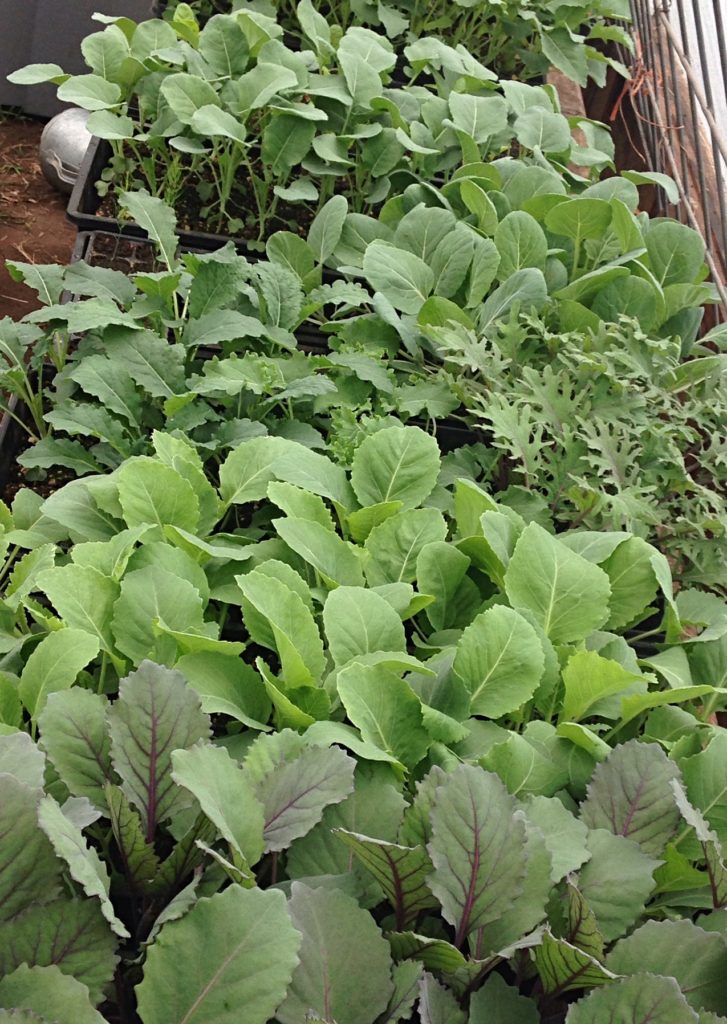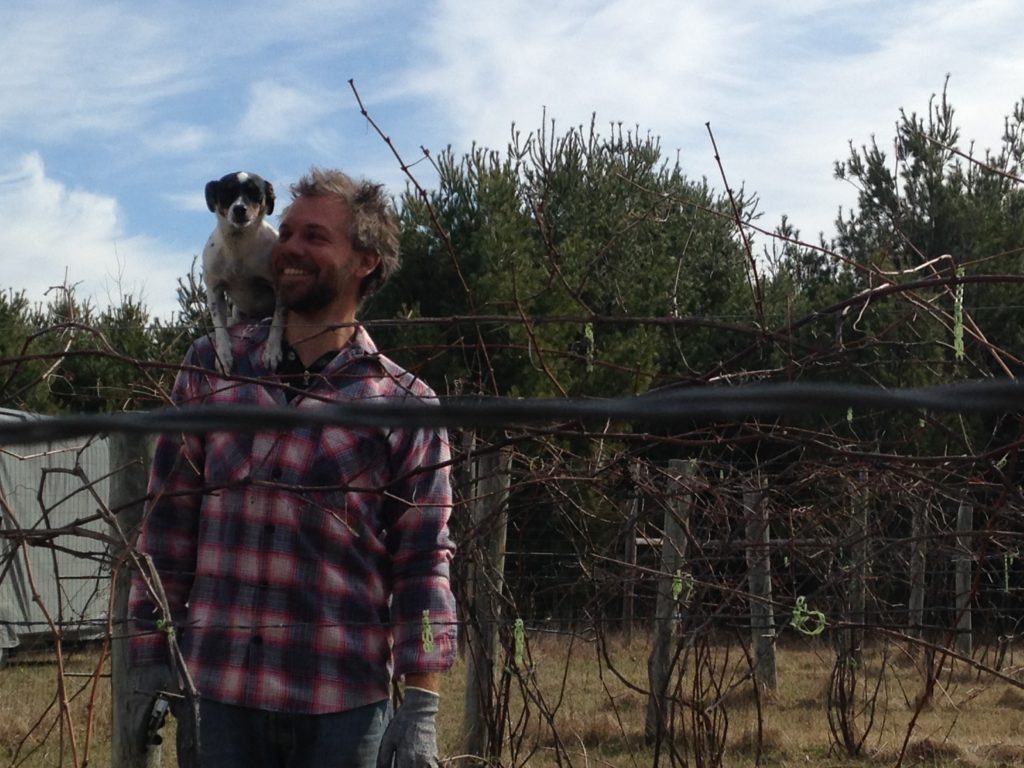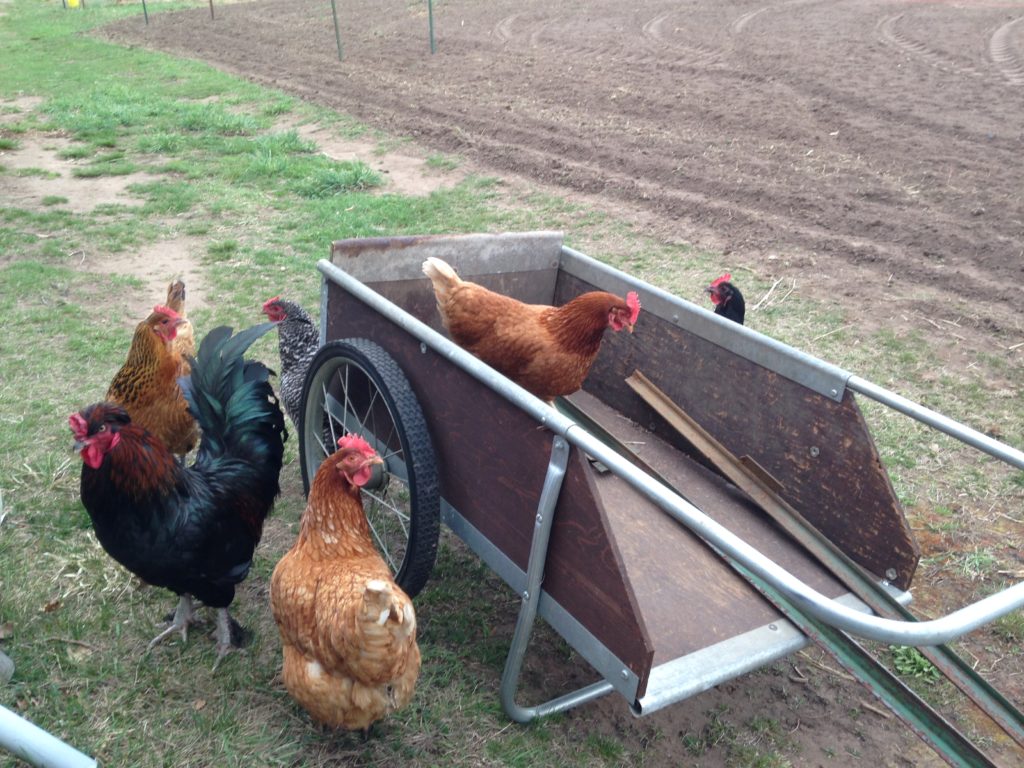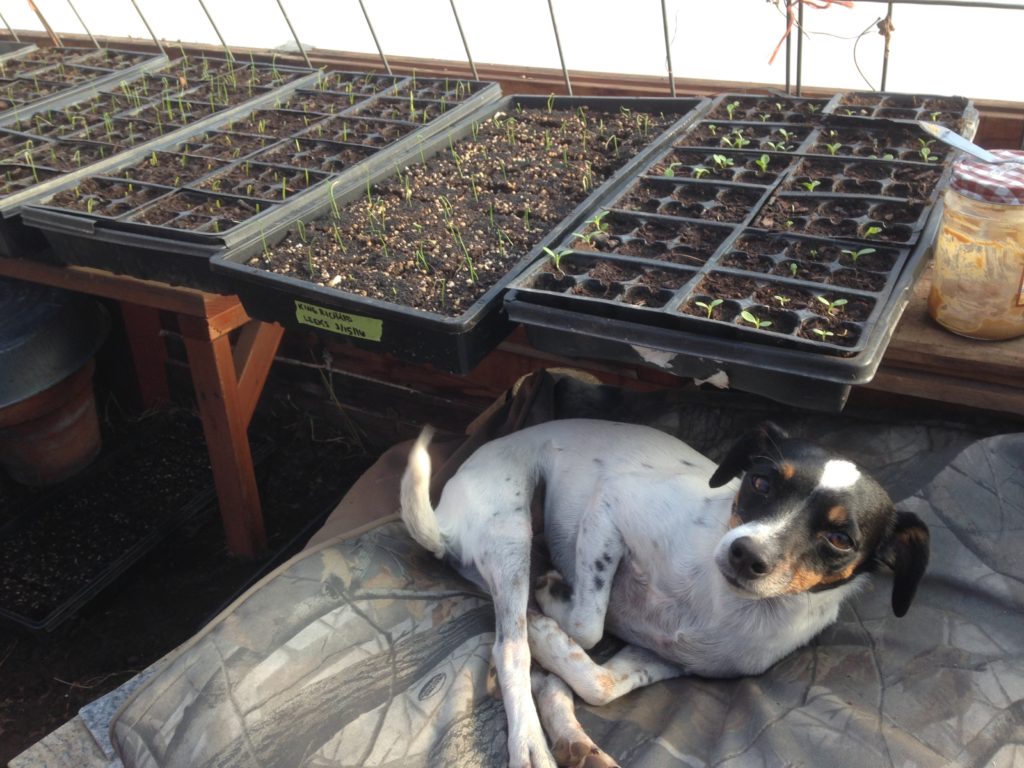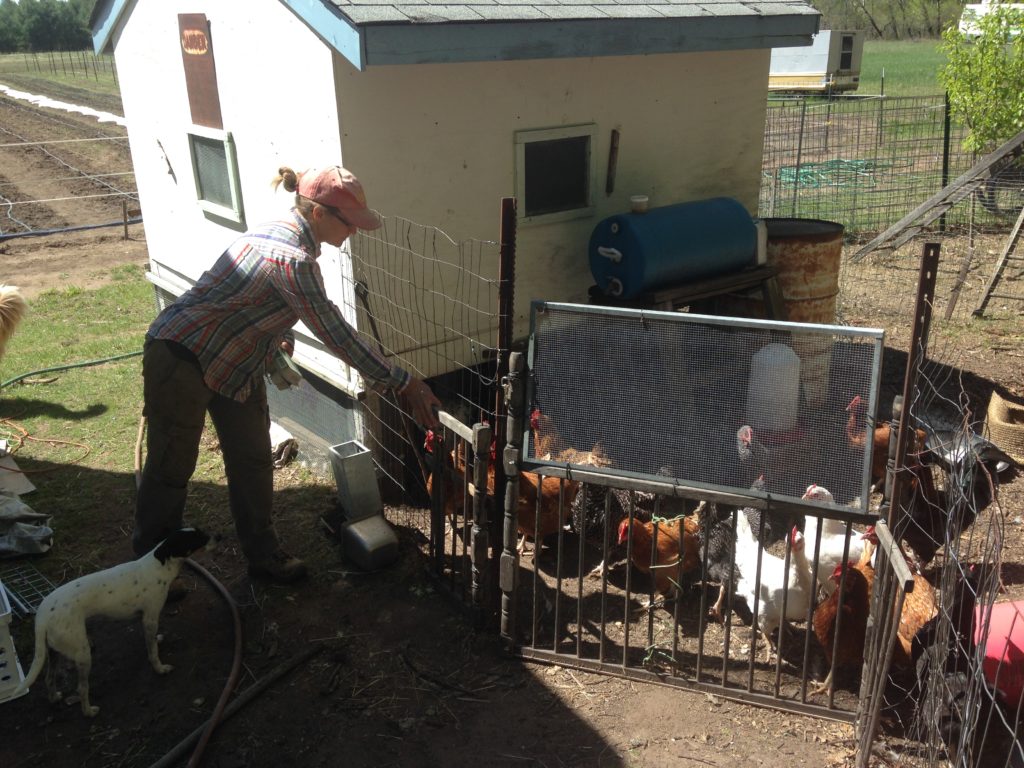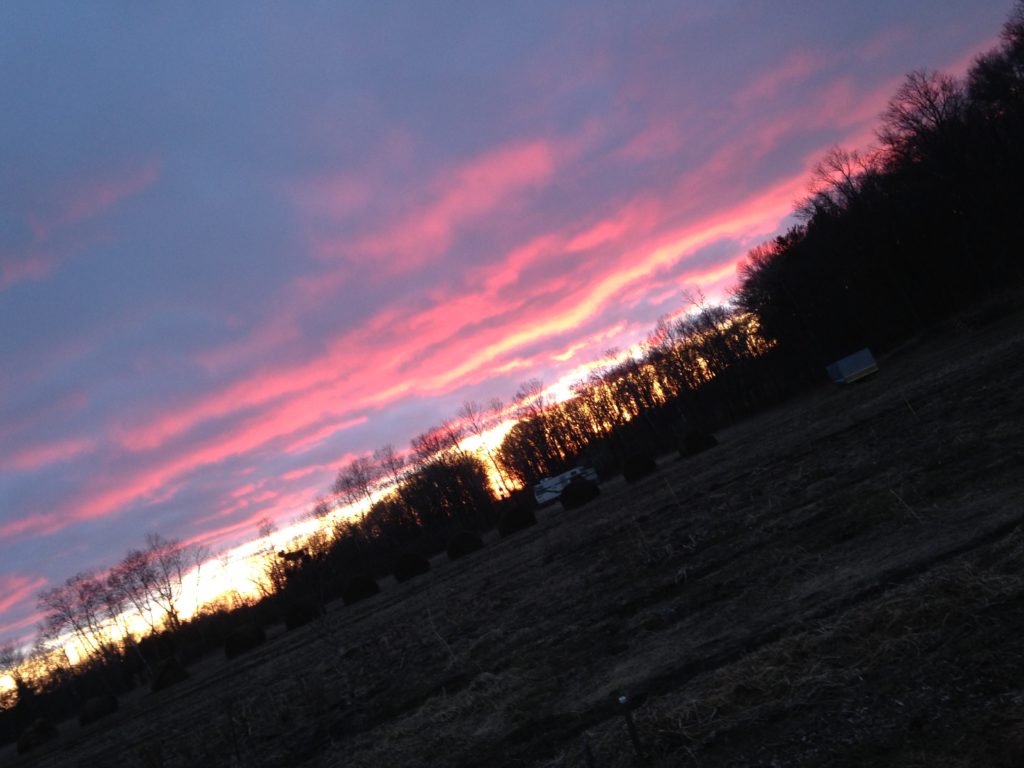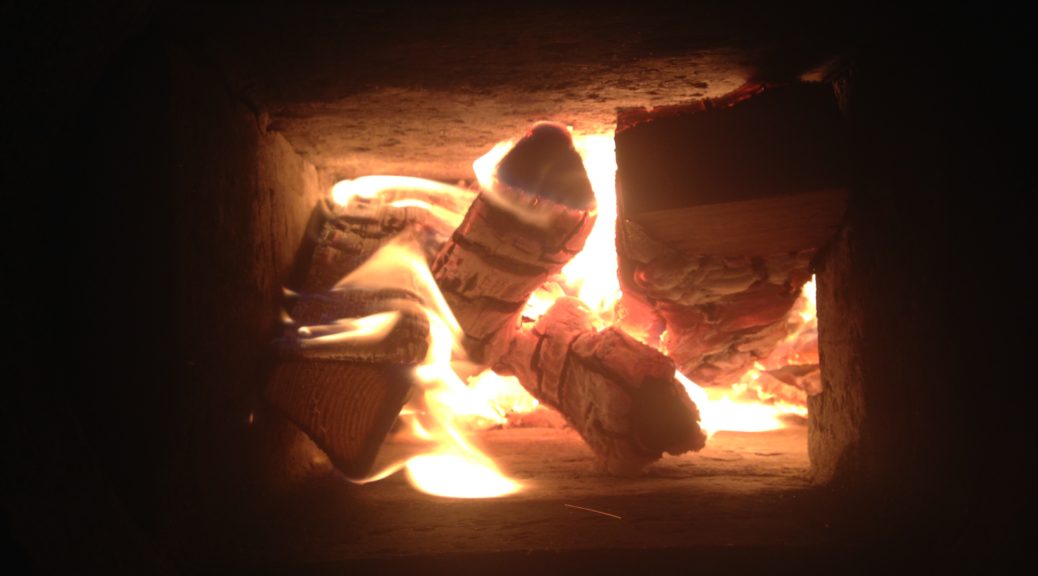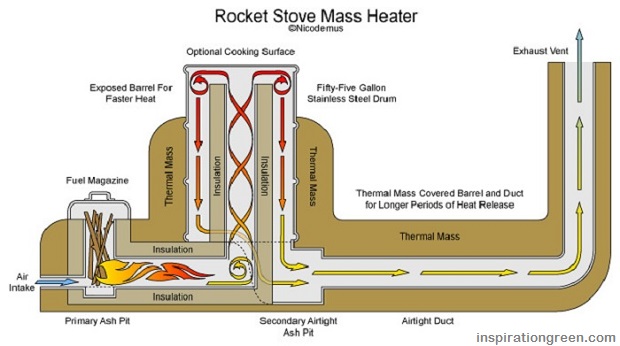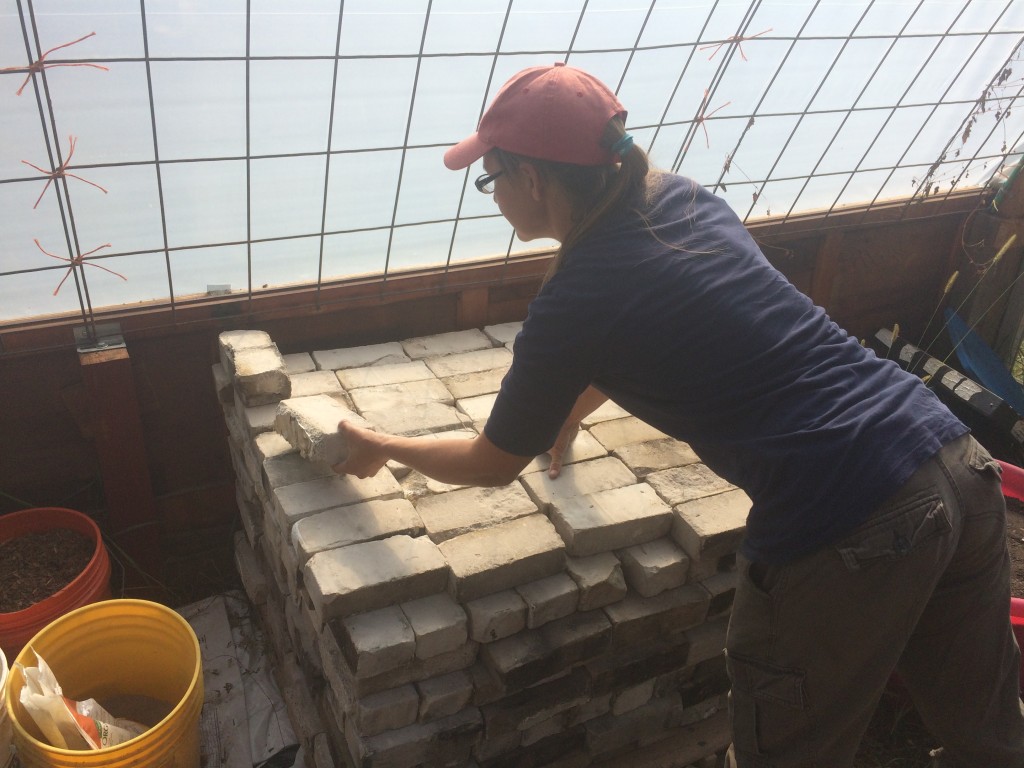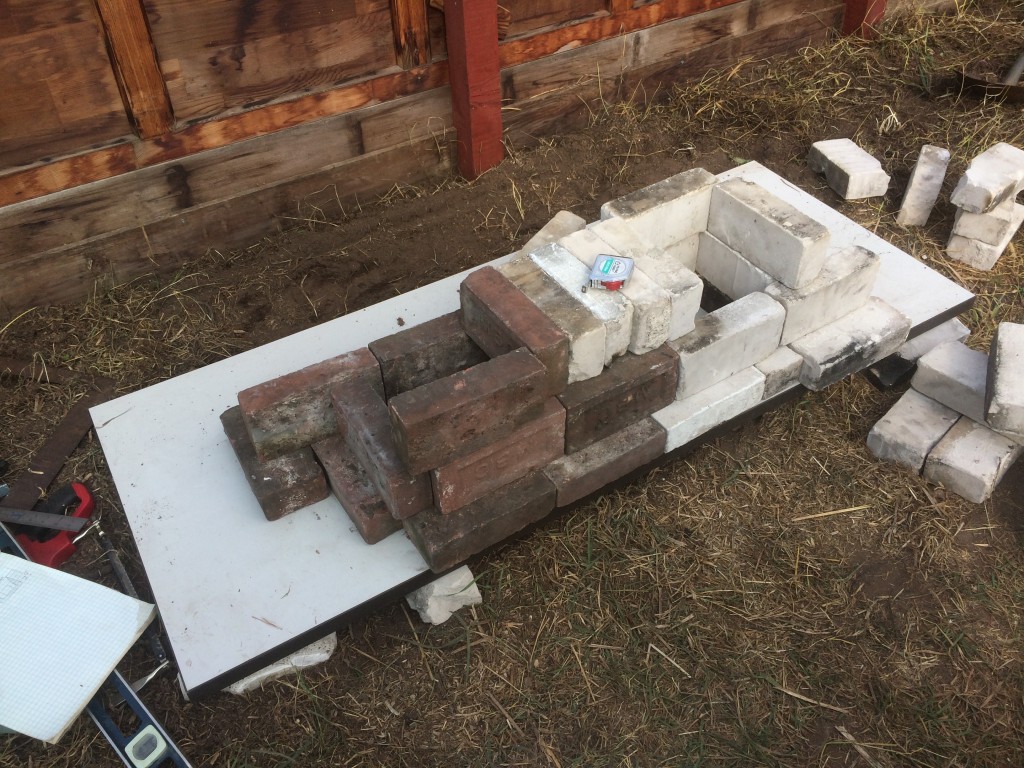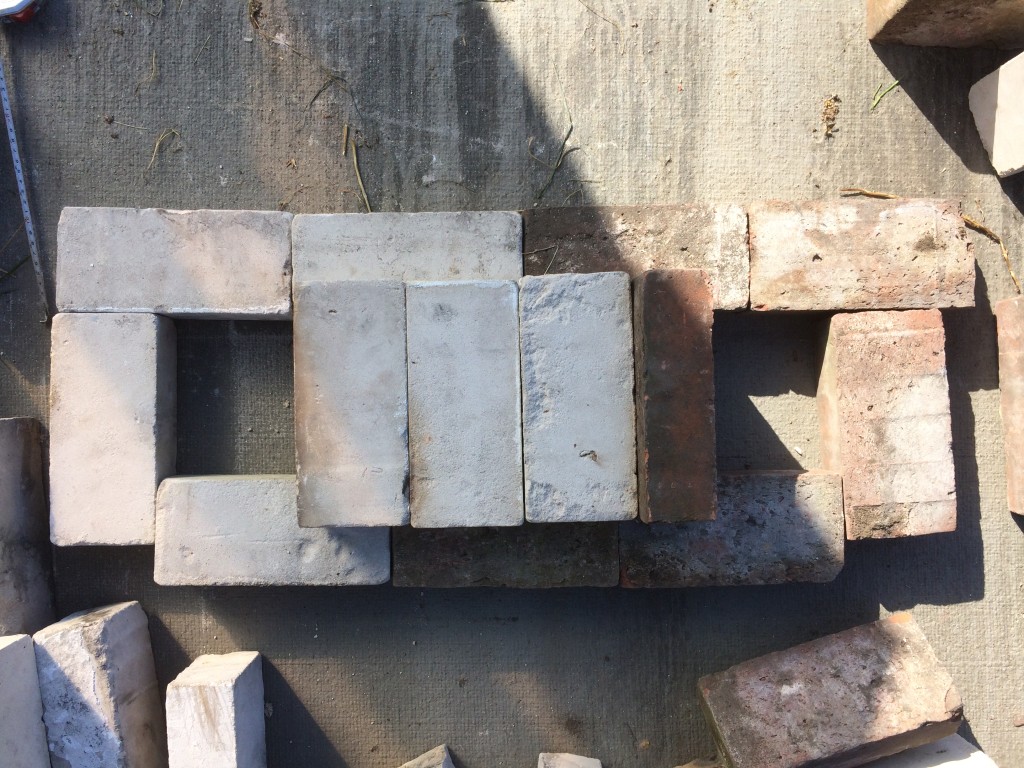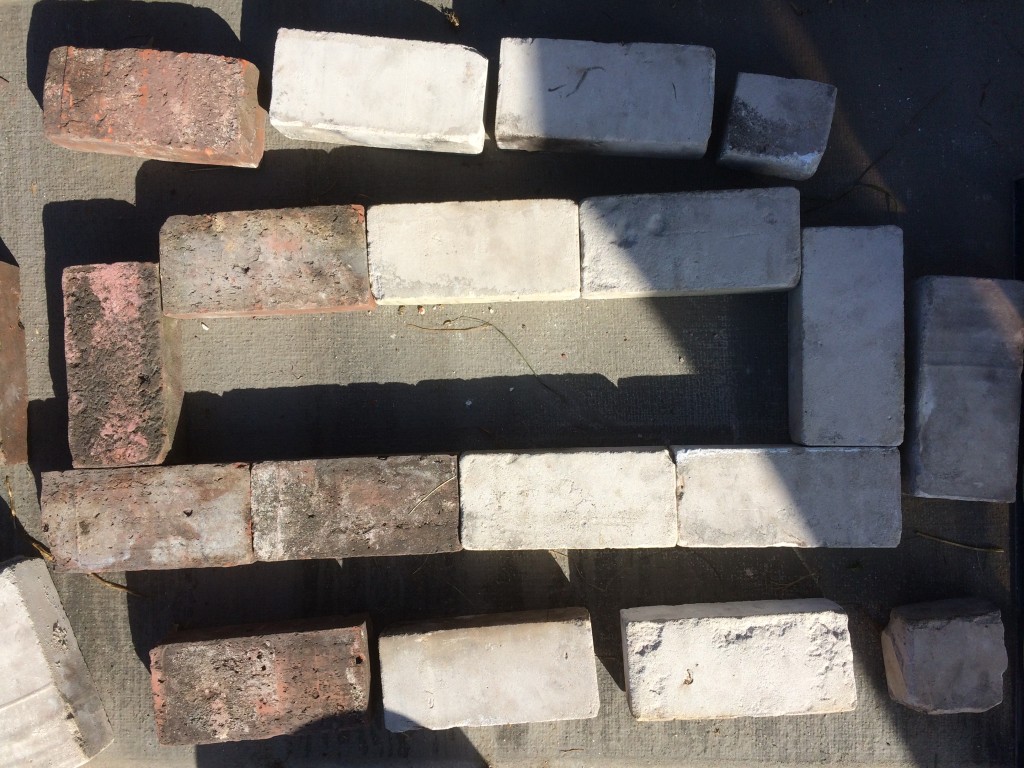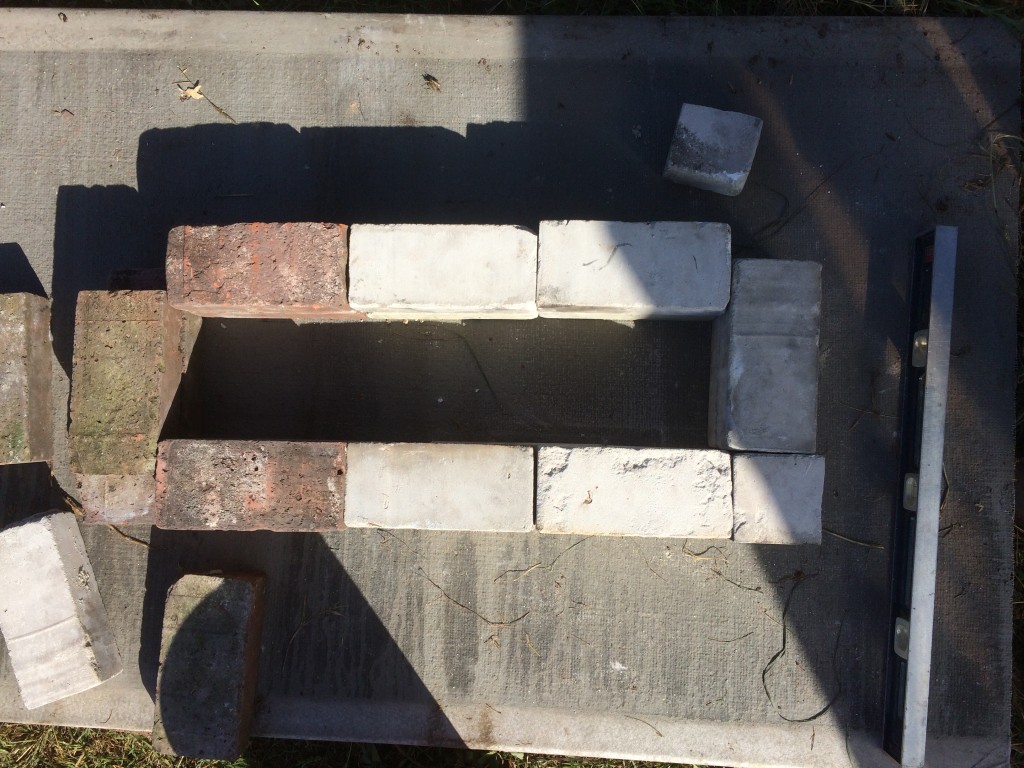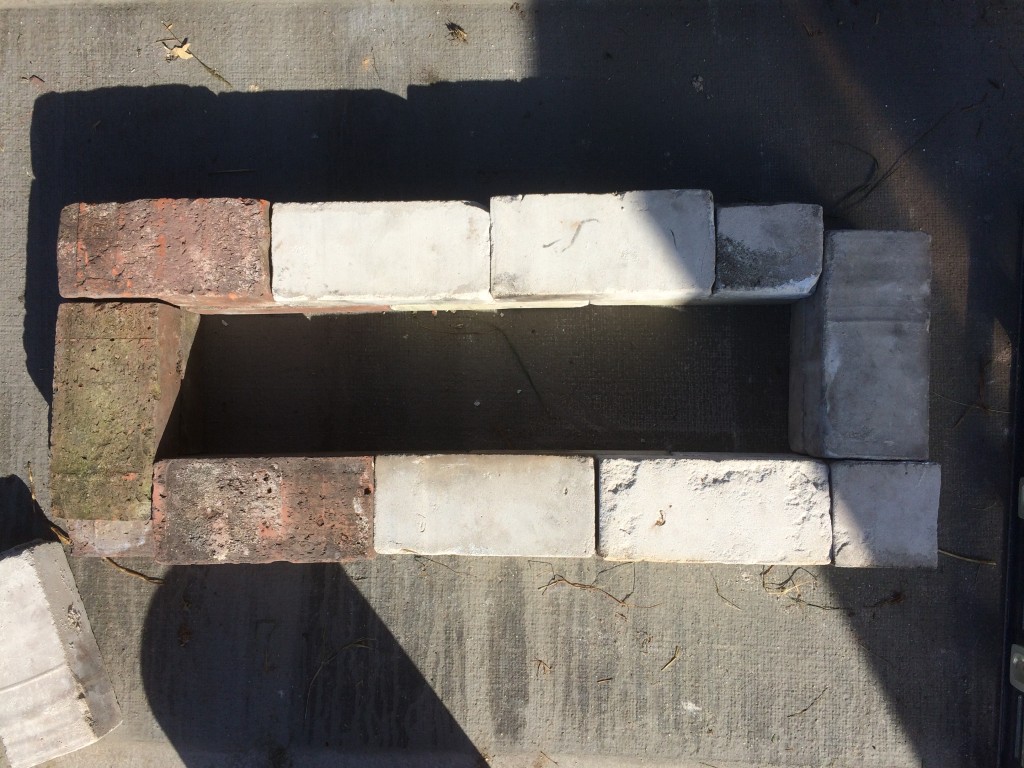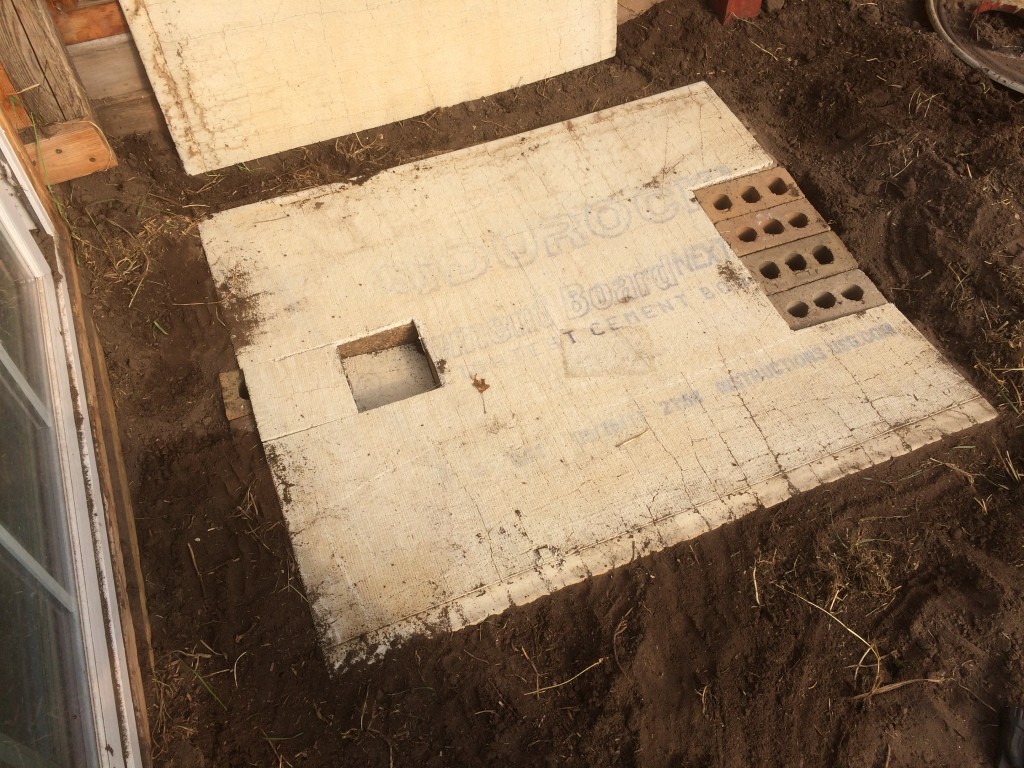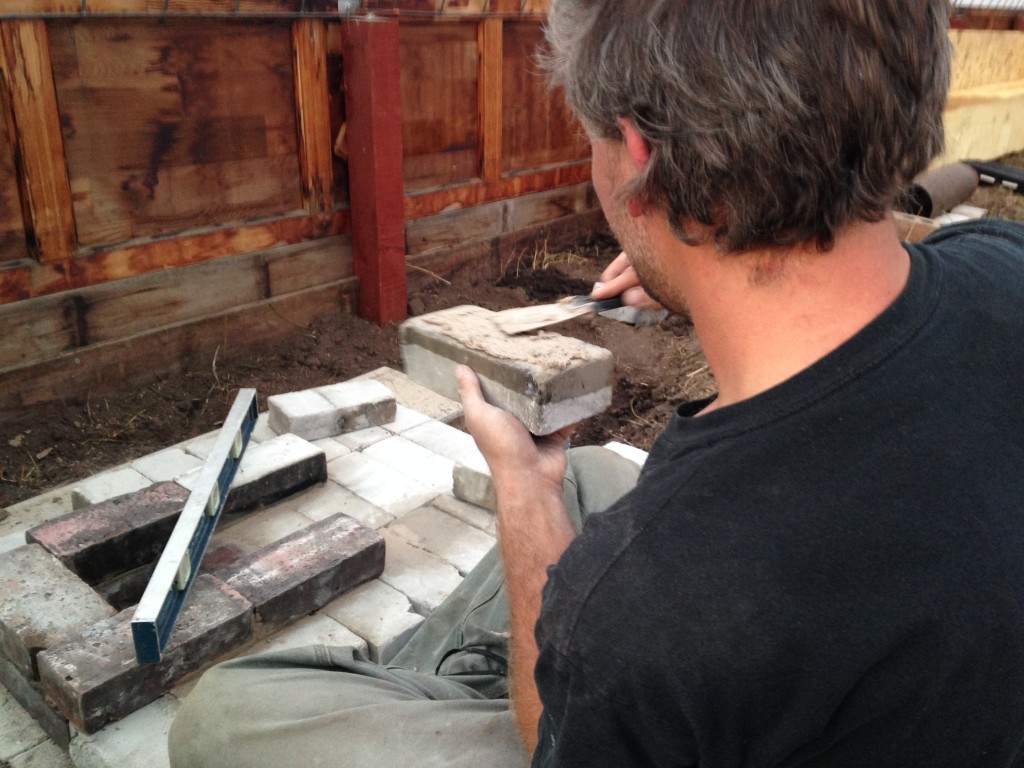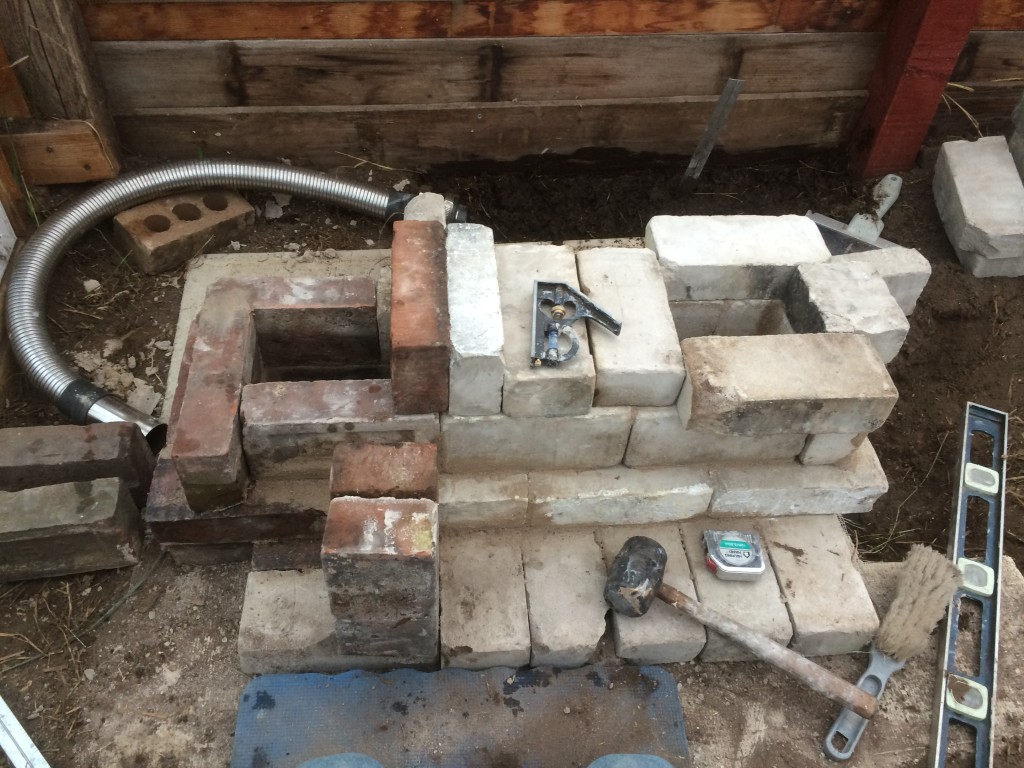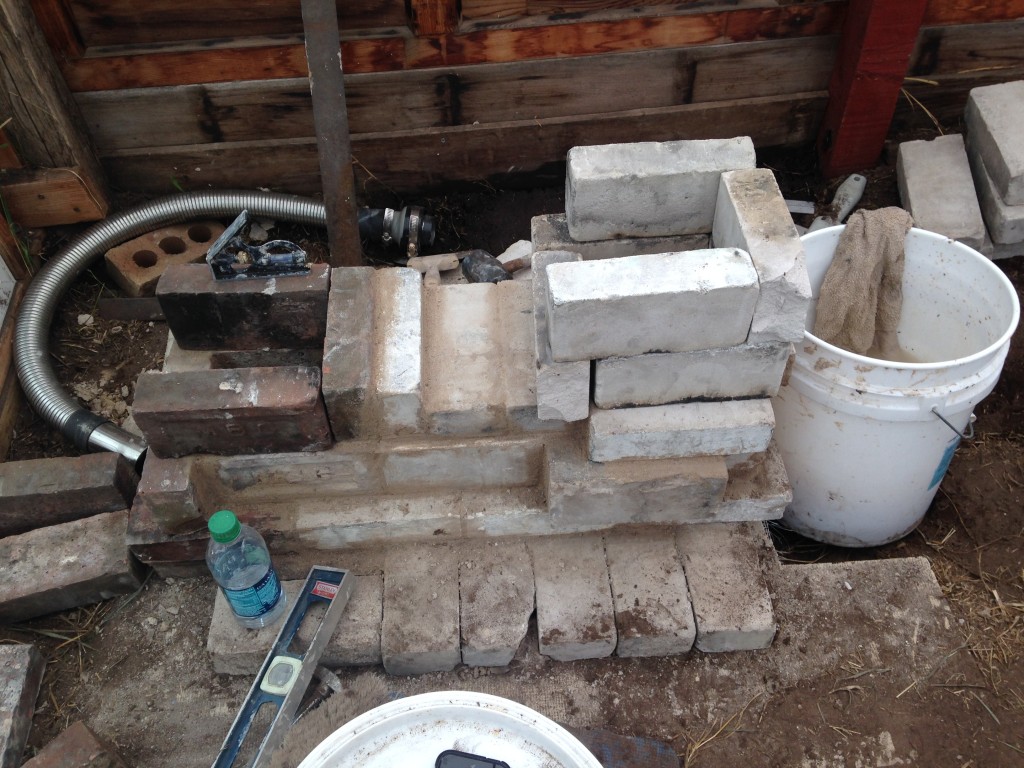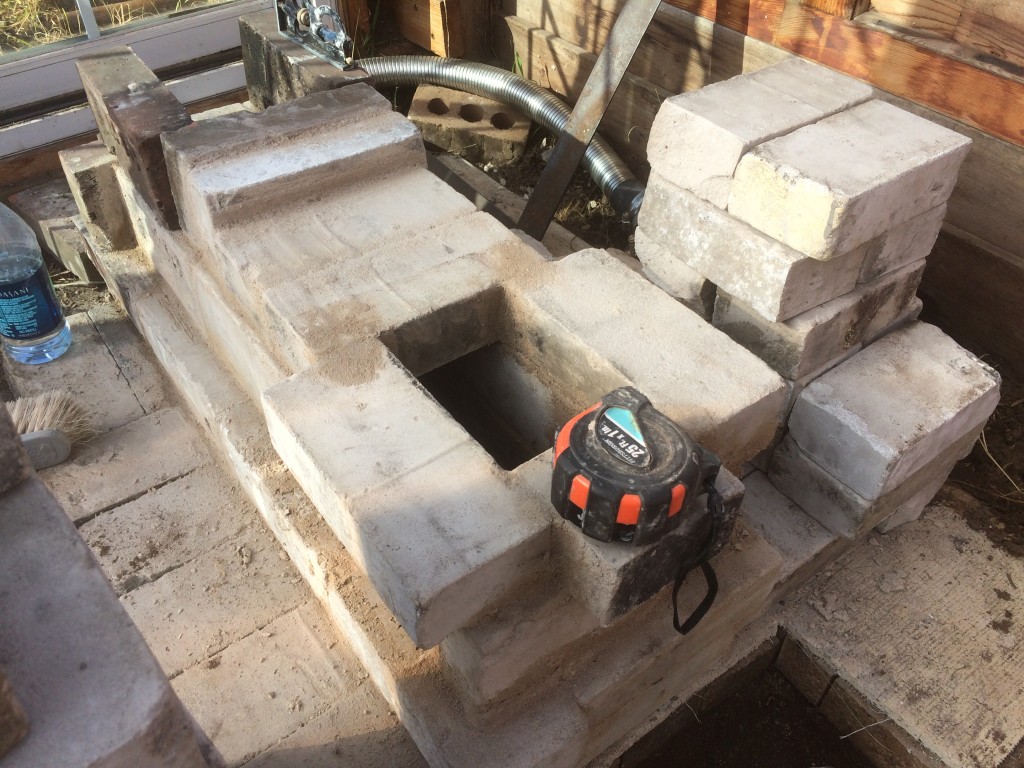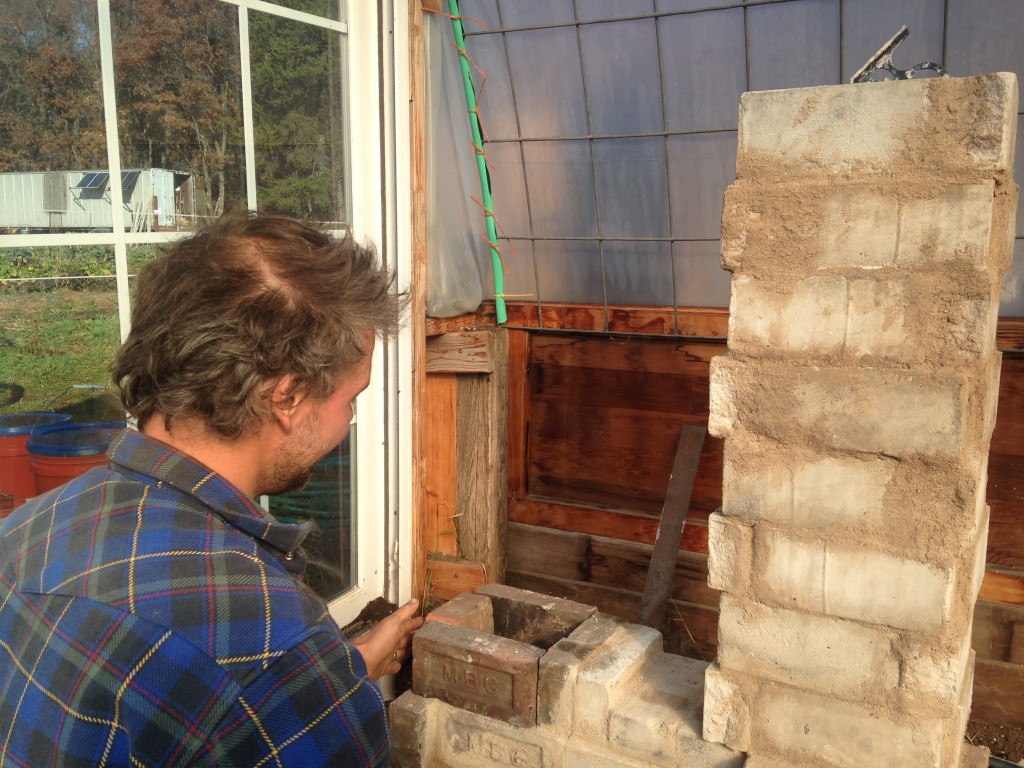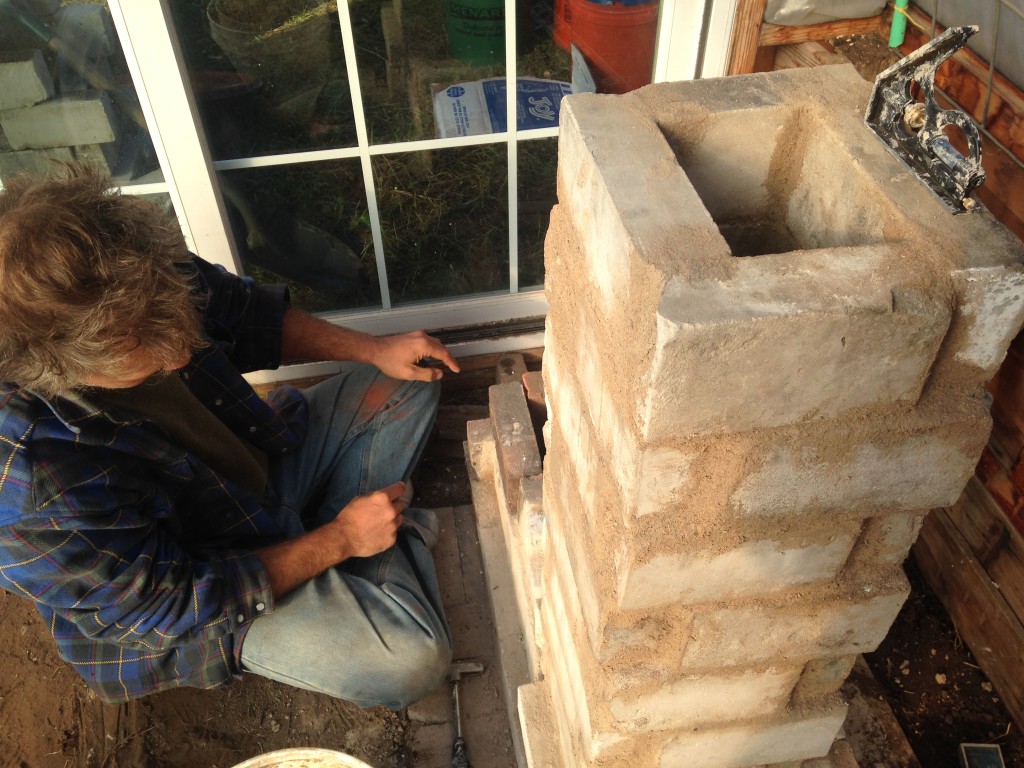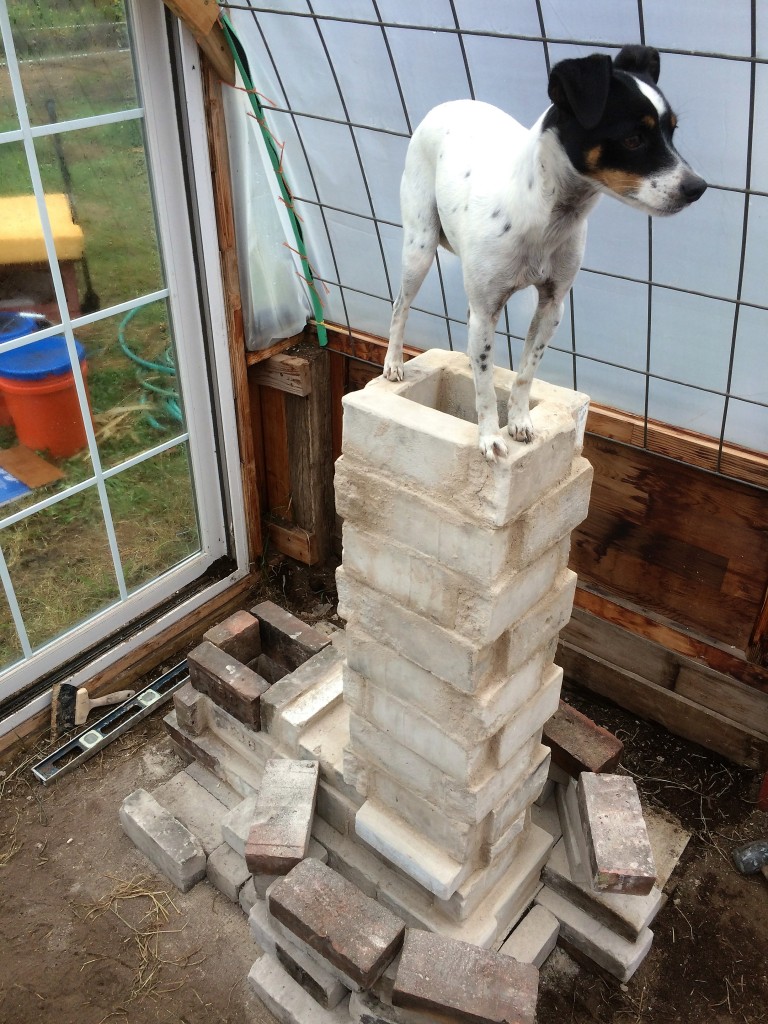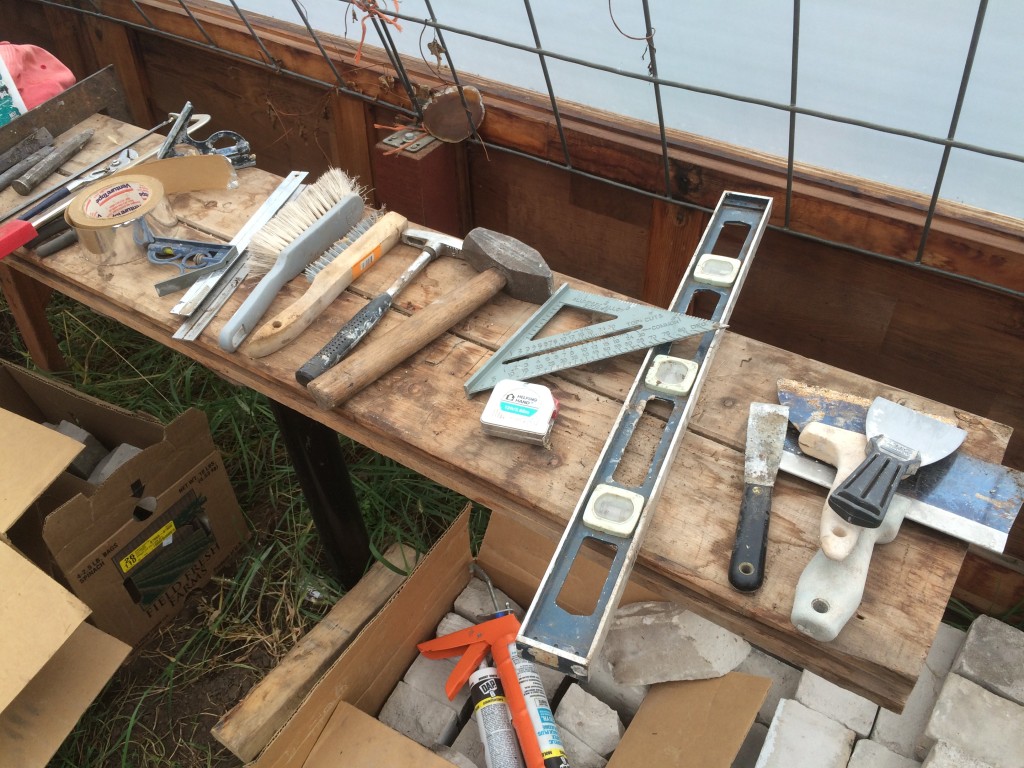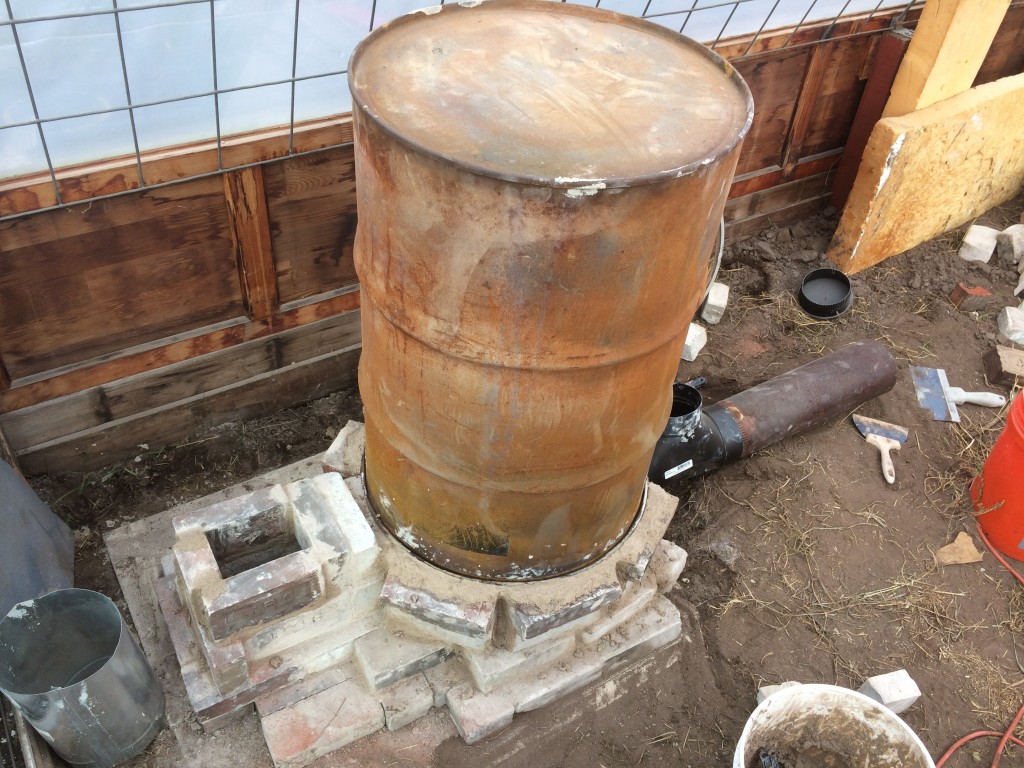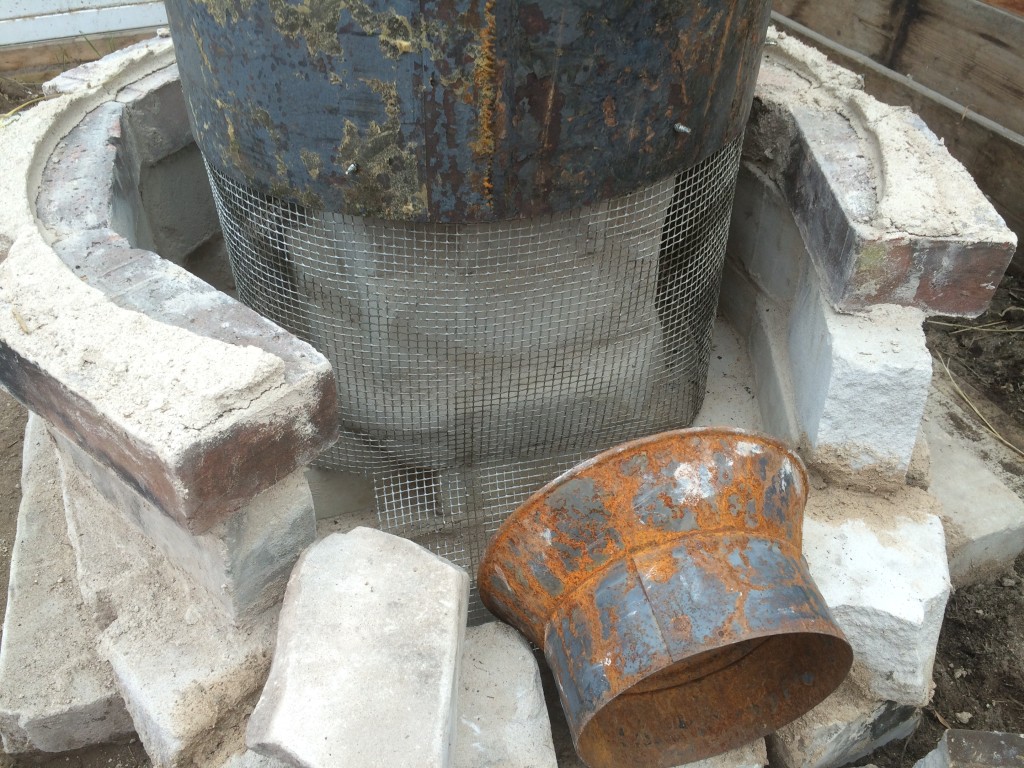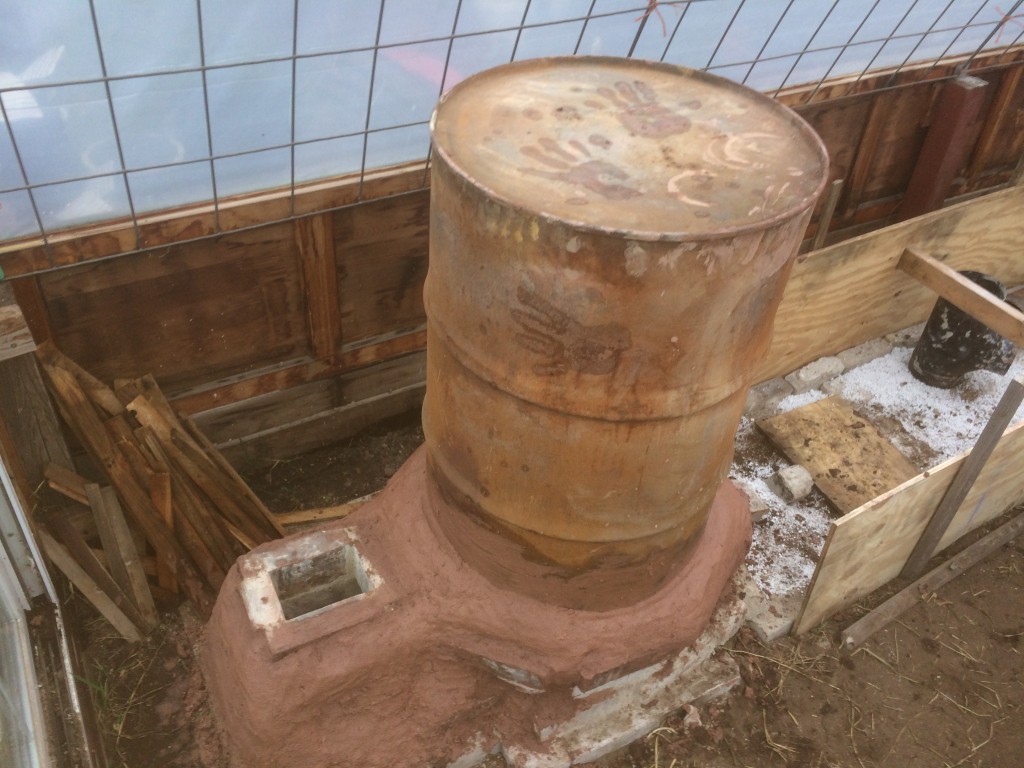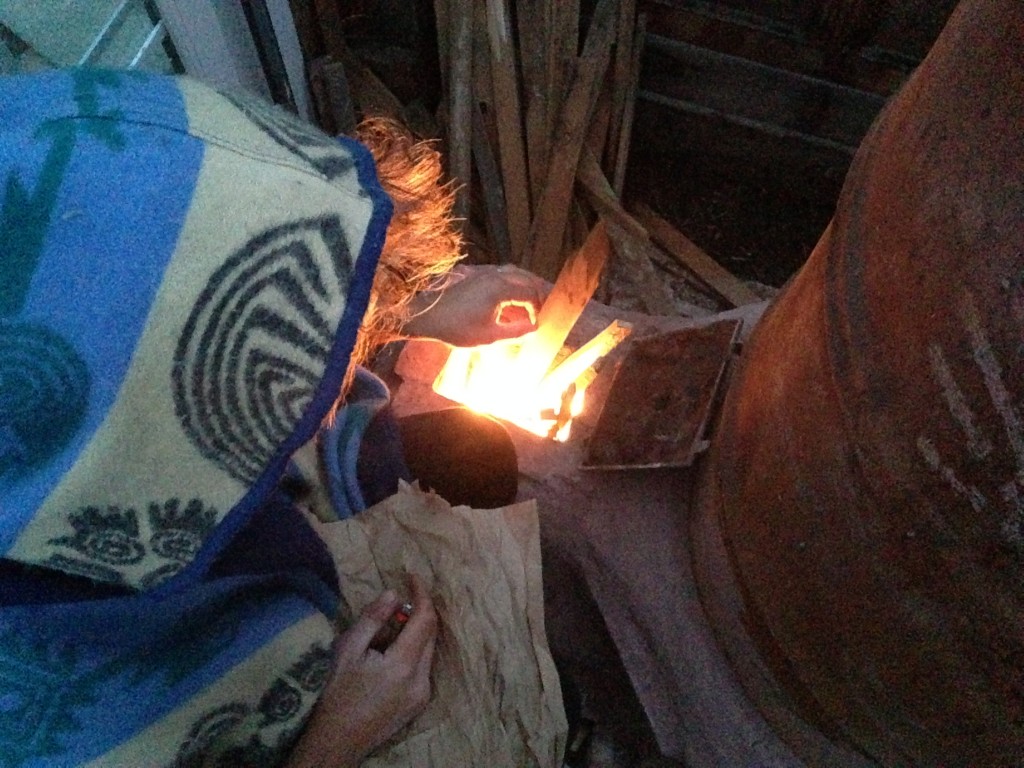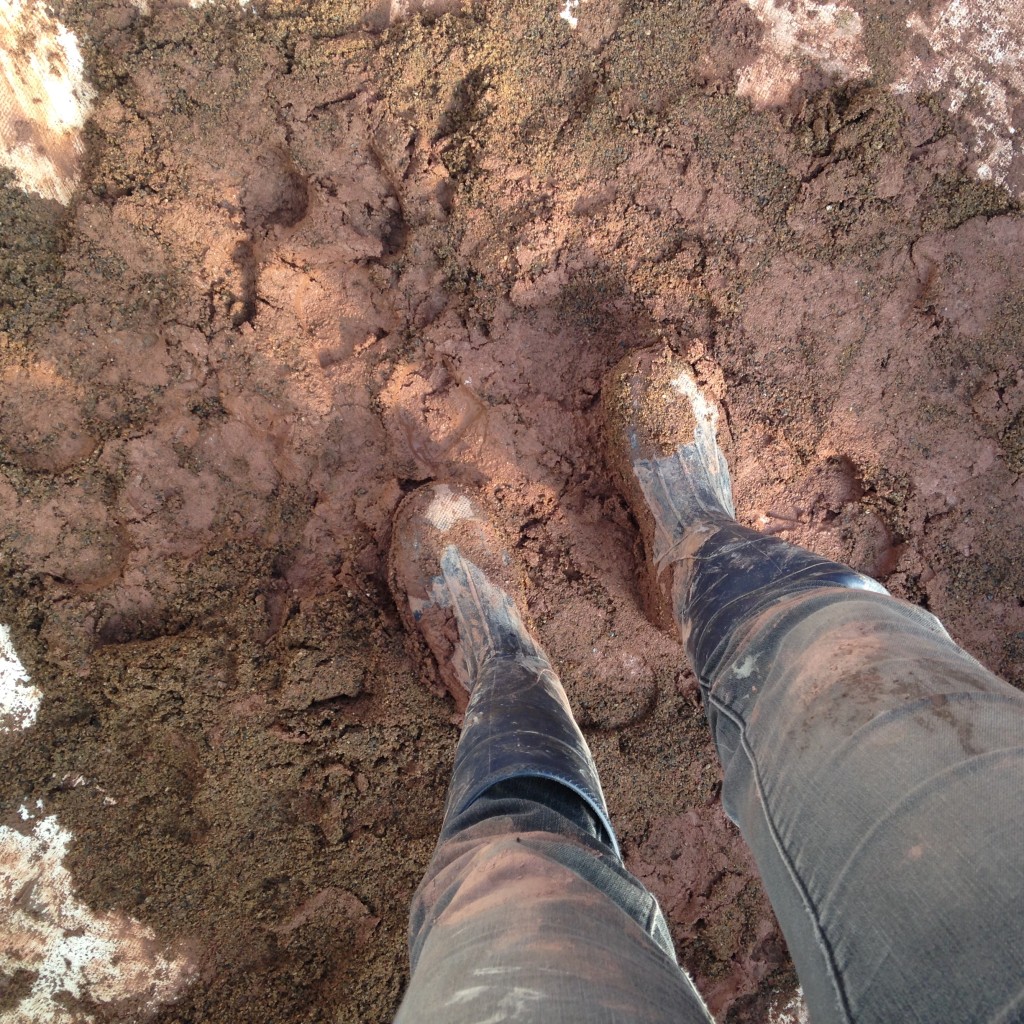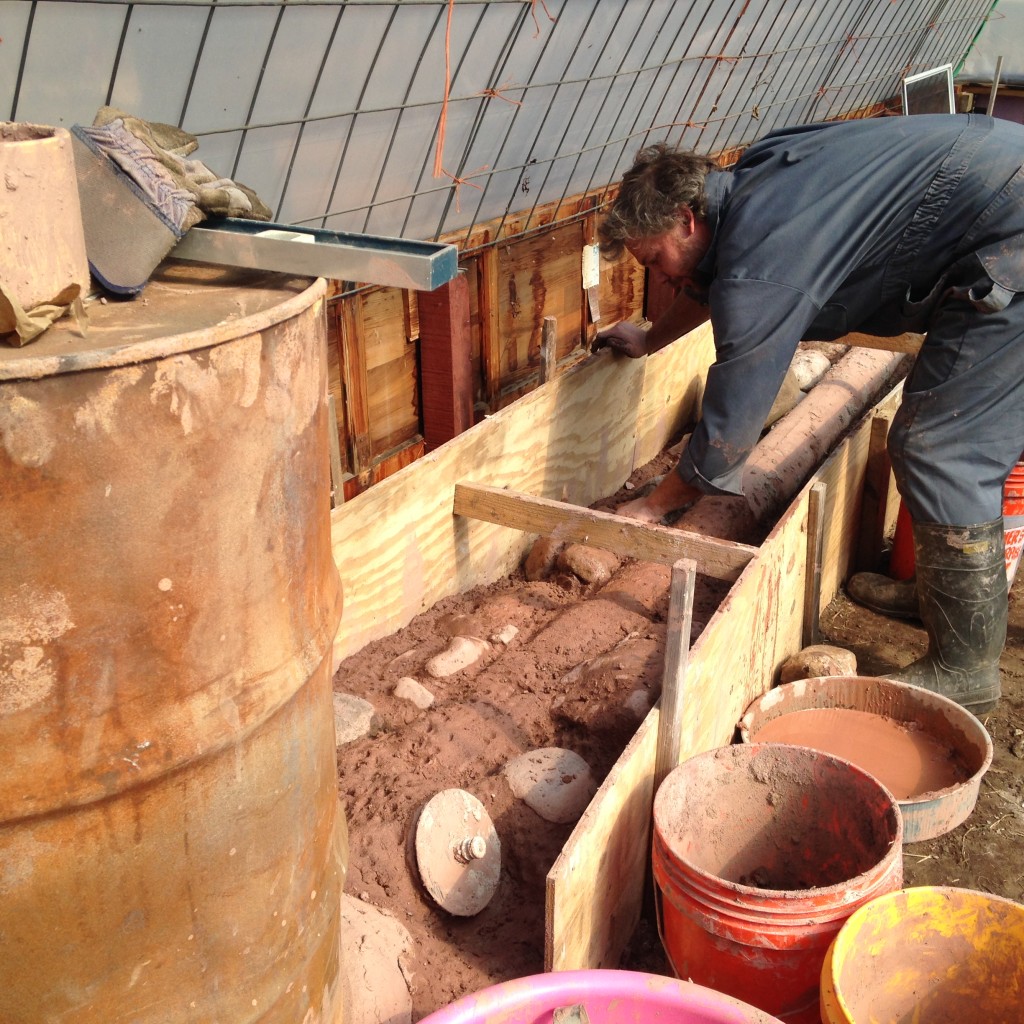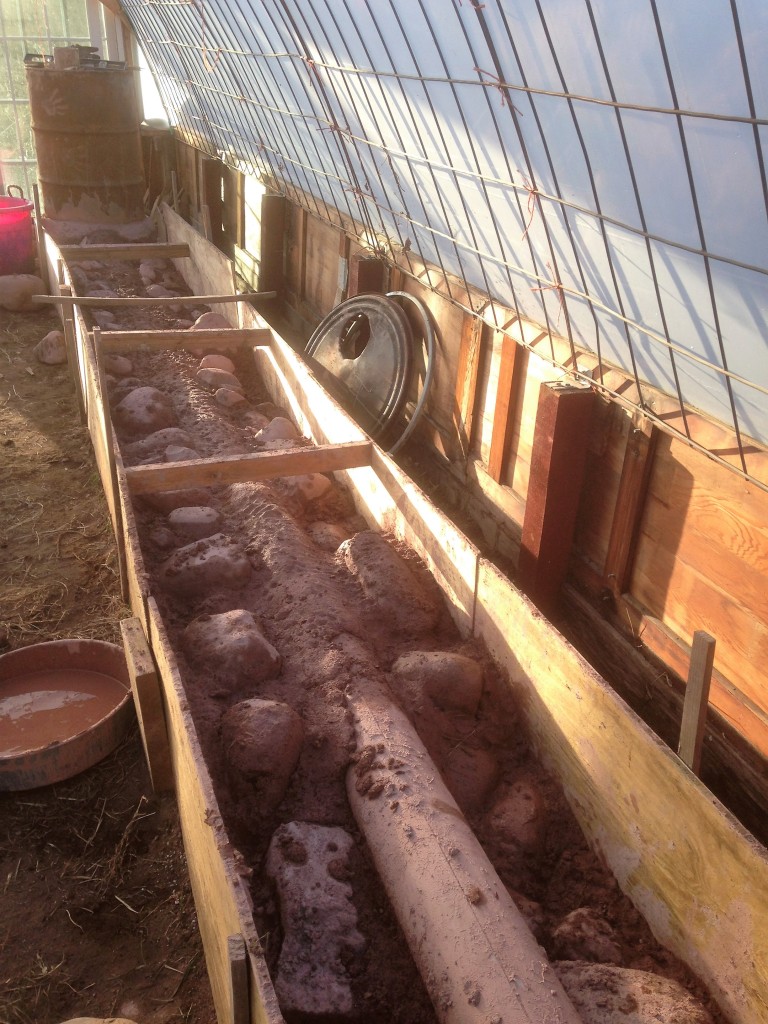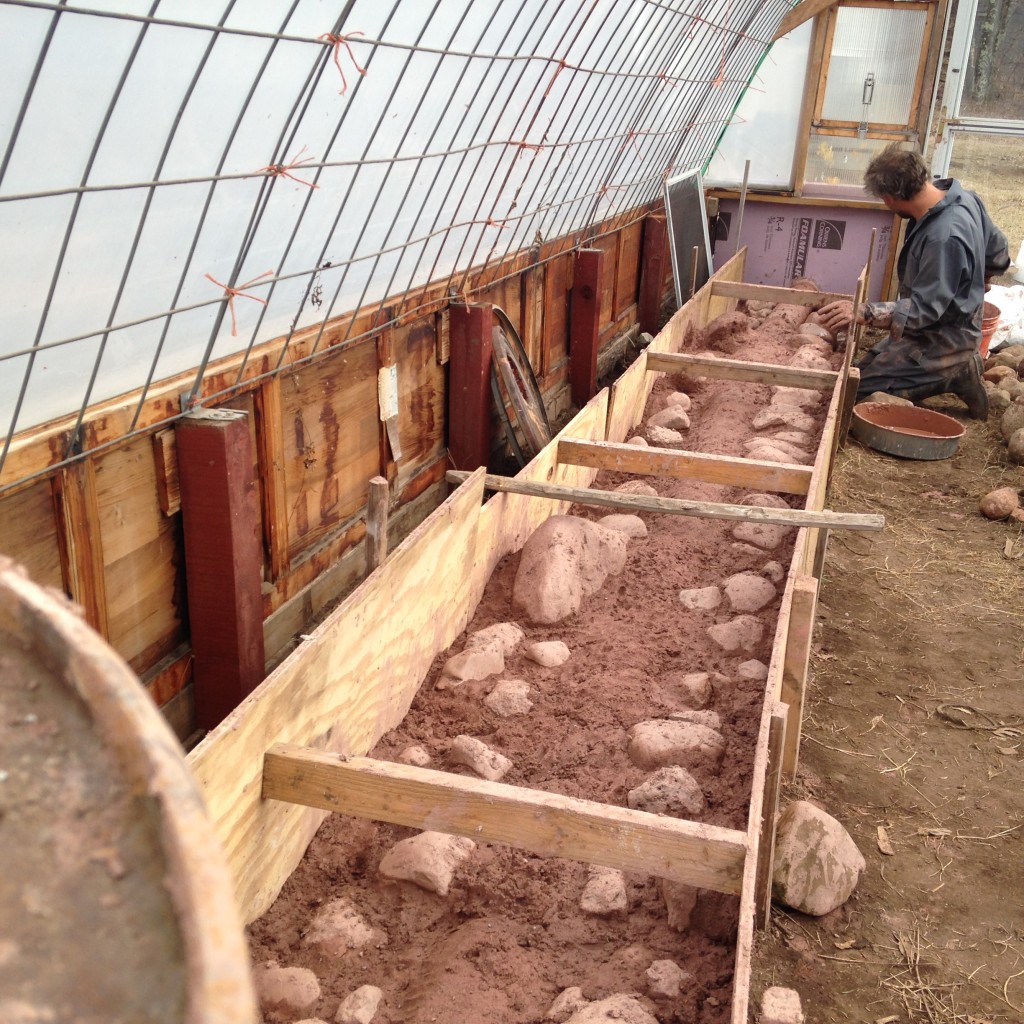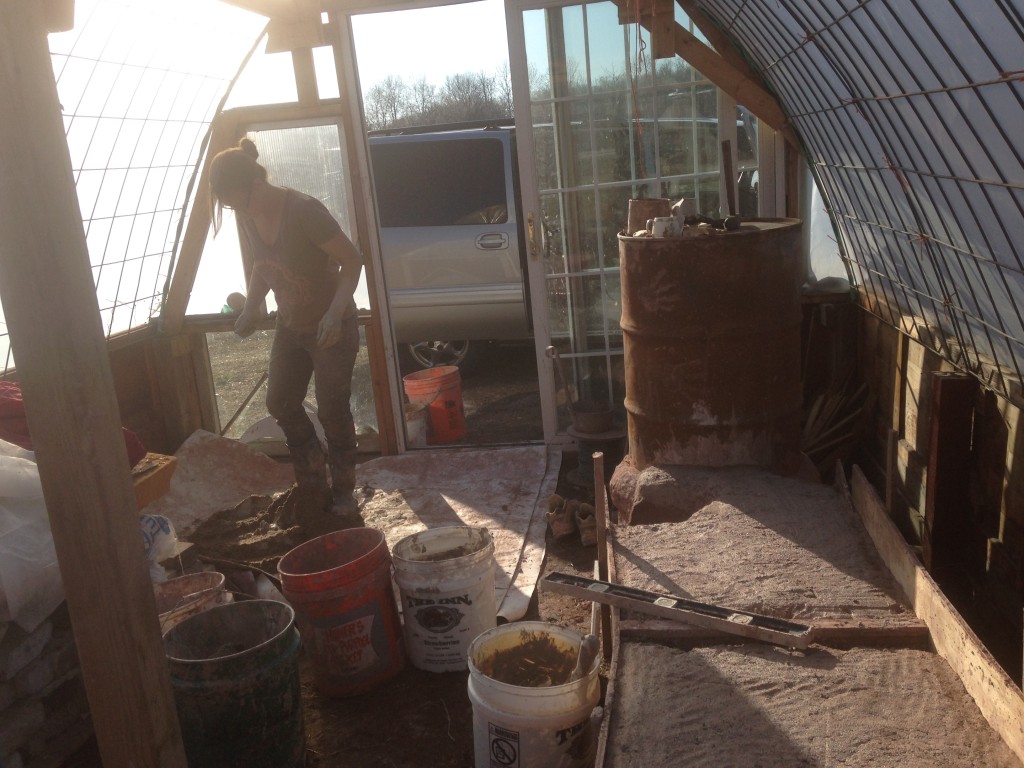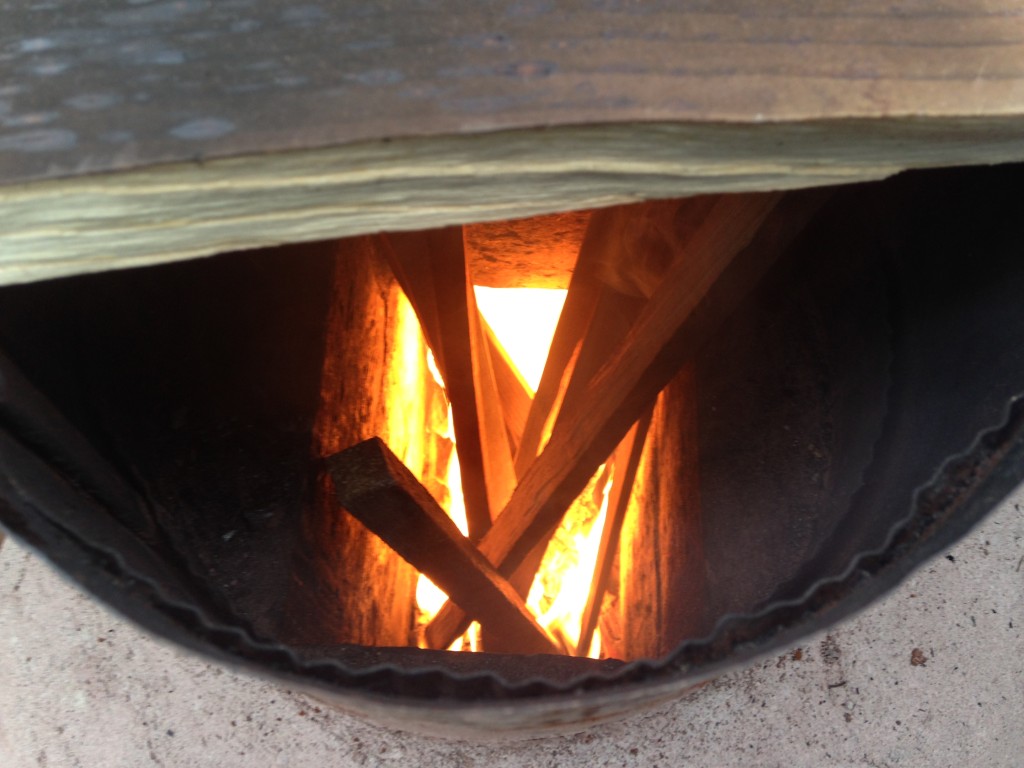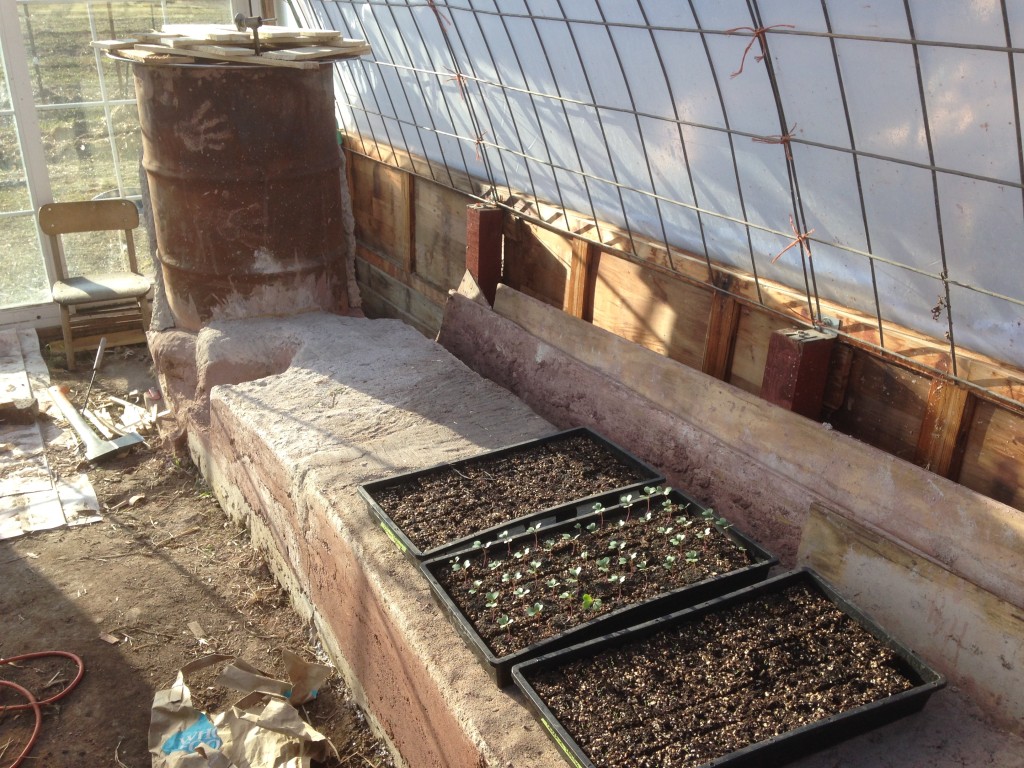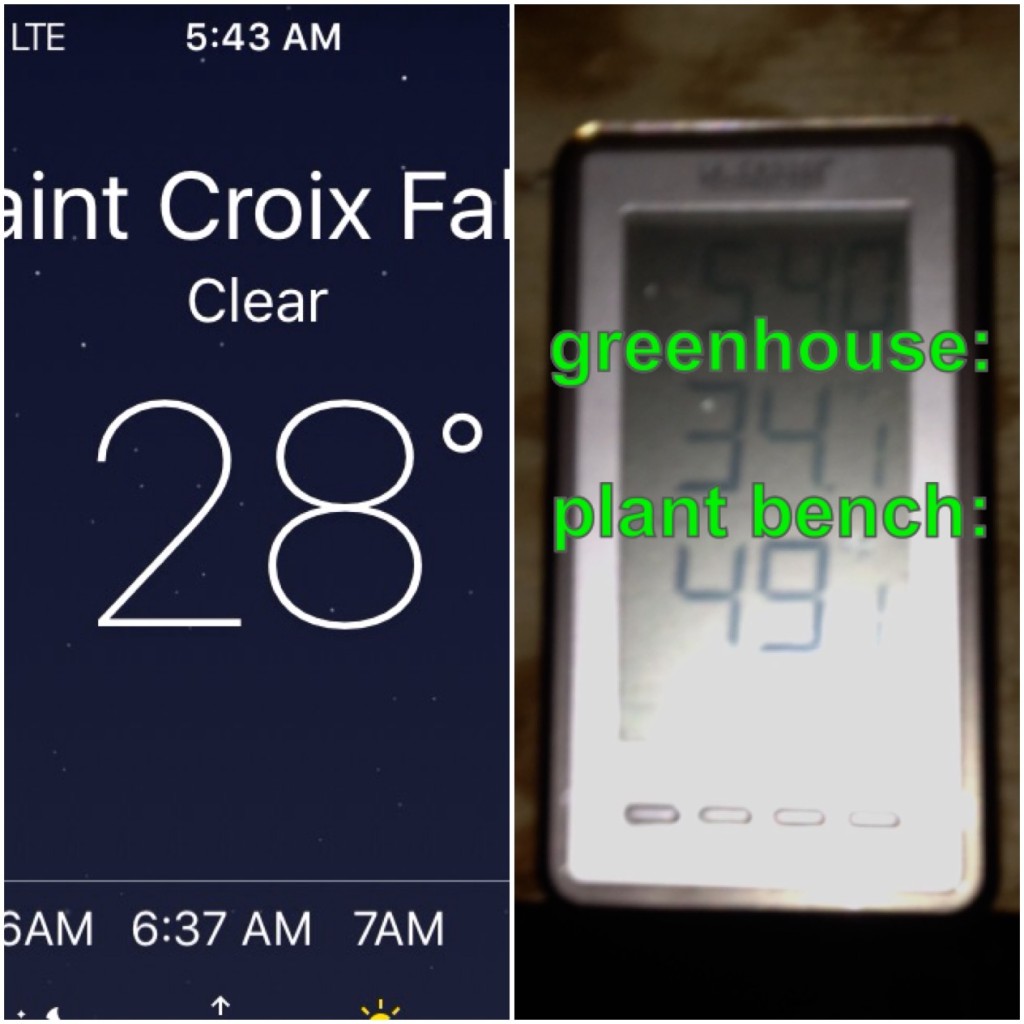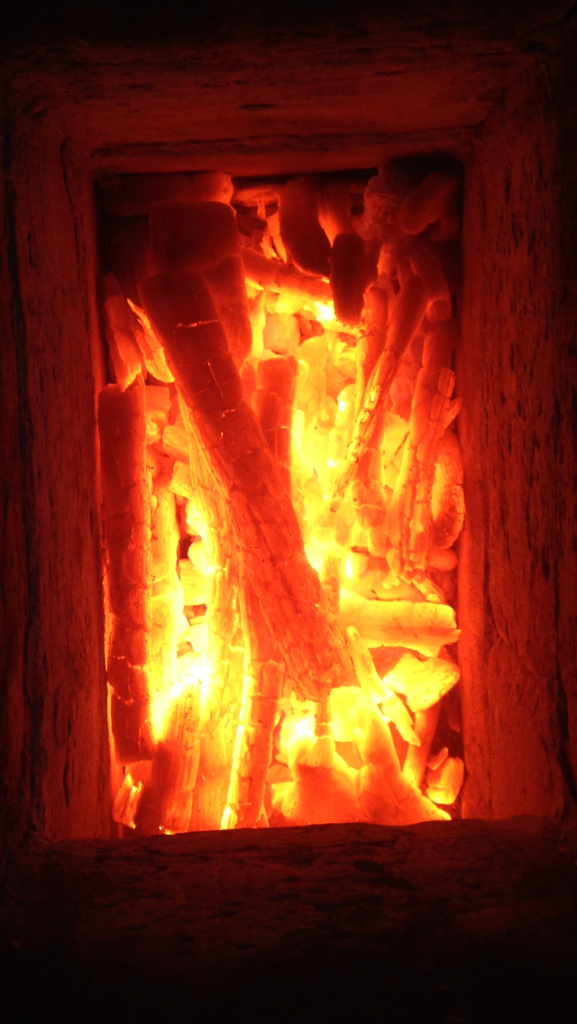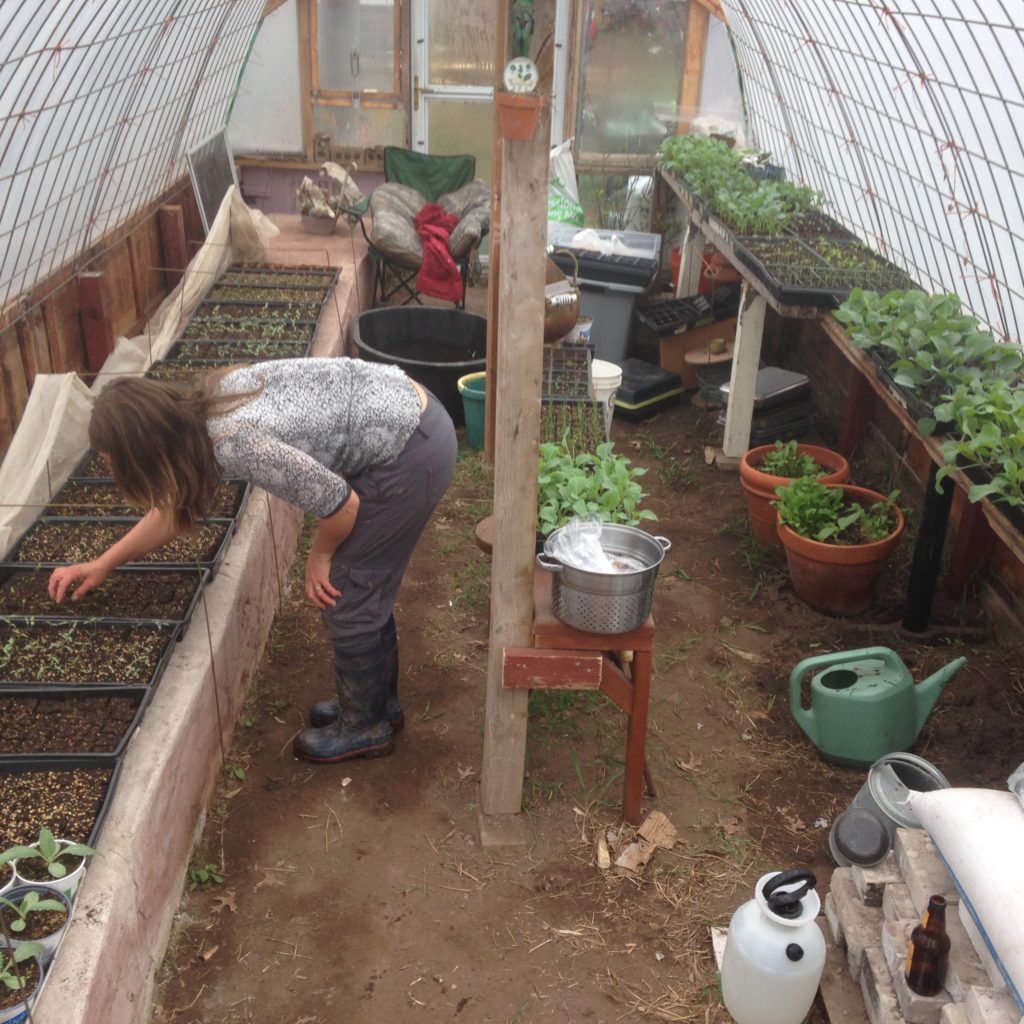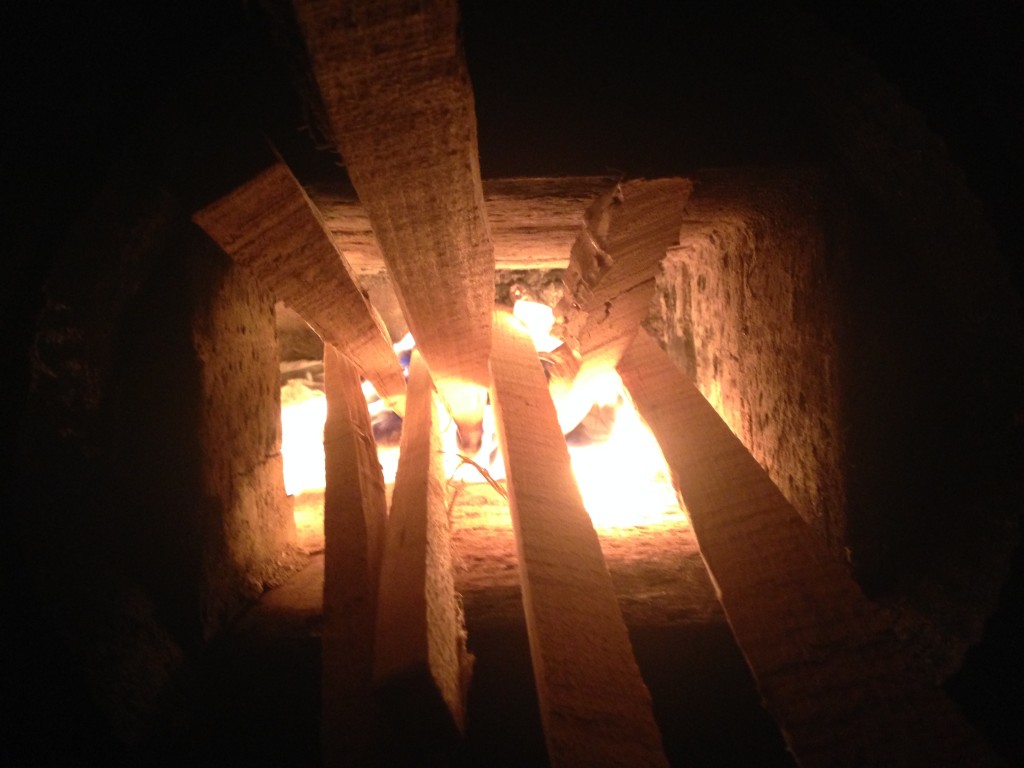WWOOFer “That Guy” Charlie’s iPhone snapshots – part of his Master’s Degree in Photojournalism final project, taken during their 2-week stay with us. Follow their journey and his photography here!
Category Archives: farming
May: It Rhymes With Hay
When I told WWOOFer Meg I was going to put up a blog post about recent weeks, she suggested it simply be the word “HAY!” It was tempting.
We’ve been busting out row after row of thick hay mulch, keeping the ravaging hordes of weeds suppressed while the crops get their feet under them; it holds moisture in the sandy soil, and eventually breaks down, adding nutrients and much needed organic matter for future crops. It’s not the most pleasant of tasks, especially for those of us with hay and mold allergies, but we’ve gotten some pretty good tactics down to make it easier; one person with a wheelbarrow per row to be mulched, doing relays back and forth, while one or two people rip up bales outside the field, and load up the wheelbarrows when they return, empty, to the fence.
This process has made things much more efficient, and since we’ve had a few WWOOFers helping, we’ve managed to get much more of the field under cover than previous years … which will mean happier crops and less weeding for the rest of the season.
In a similar vein, we found a free silage tarp the exact dimensions of our high tunnel greenhouse, while scavenging for useful items at the annual “Trash Days” in Bloomington MN (where folks put all manner of unwanted piles out on the curb for scavengers like us to pick through, prior to it all heading to a landfill). Although it hadn’t been the plan, the dimensional match seemed too meant to be to ignore, so we transformed the high tunnel into a plastic bubble for heat-loving plants.
It’s amusing since neither of us really ever wanted to grow using plastic, but it’s hard to argue with luck and with results – and it’s certain that such a ground cover is ideal for the sandy, weedy soils we contend with here, as well as for heat-loving plants. (The plants are watered by both driplines connected to the well, and by soaker hoses gravity-fed by various rainwater collection tanks around the farm.)
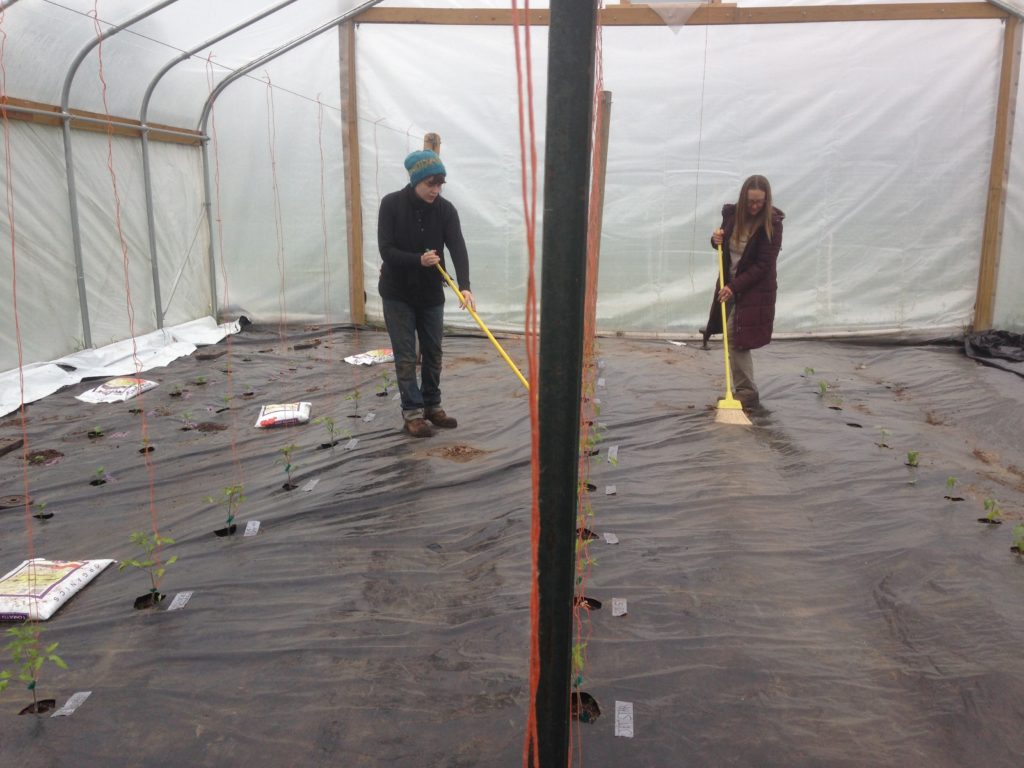
And speaking of rain – we’re finally getting nice amounts, after a nearly month-long dry spell, where we were having to run the generator/well irrigation daily to keep the seeds and transplants alive in the field. We’d watched storm after storm split apart on the radar and pass around us, leaving us dry … but finally, we were blessed with three inches over the course of a few day rainy spell (an amount that would have been problematic in less well-drained soil), and since then it’s been a lovely syncopation of sunshine and rain, alternating daily or even hourly.
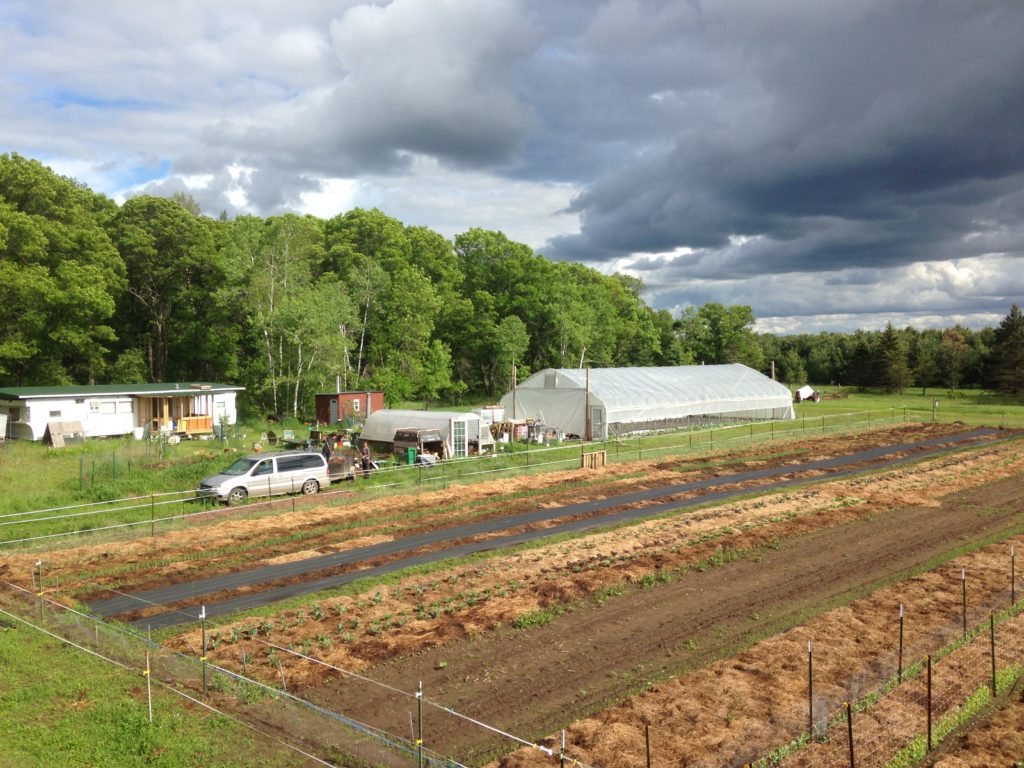
As I sit writing this on Monday morning, it’s going from full sun to downpour about every 10 minutes – the photo above is the sunny field with the next squall rolling in.
The crops love this rhythm, and are looking quite pleased with their lot in life.
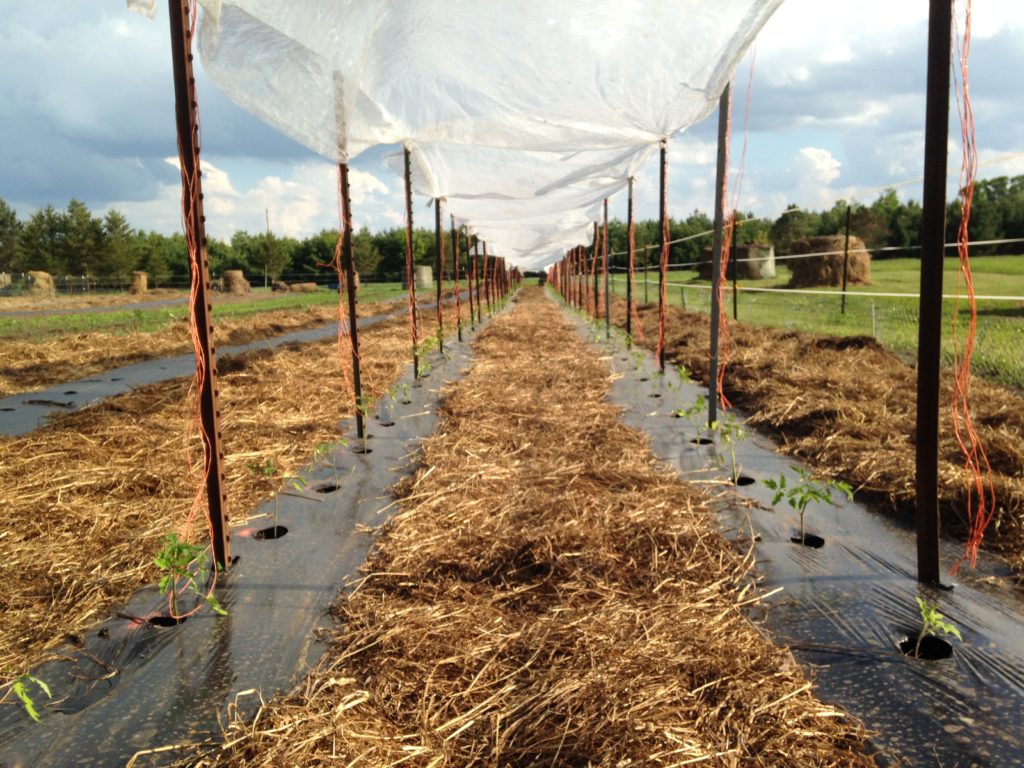
The mulch has unfortunately provided habitat for our population of tunneling colonial vegetarian rodent-monsters (aka voles), however we have been heartened by the influx of snakes around the field this spring – the hugelkultur mound, for example, had been nicknamed the “Vole Hotel” last year, as it was clear they’d infested the spaces between the buried branches and logs. When we got to work this spring, we noticed the holes into the mound seemed larger, and feared it meant even MORE voles … soon enough, however, we saw the huge gopher snakes cruising in and out, basking atop the mount in the sun, breeding in the grass, and hopefully striking terror and population control into the resident rodents.
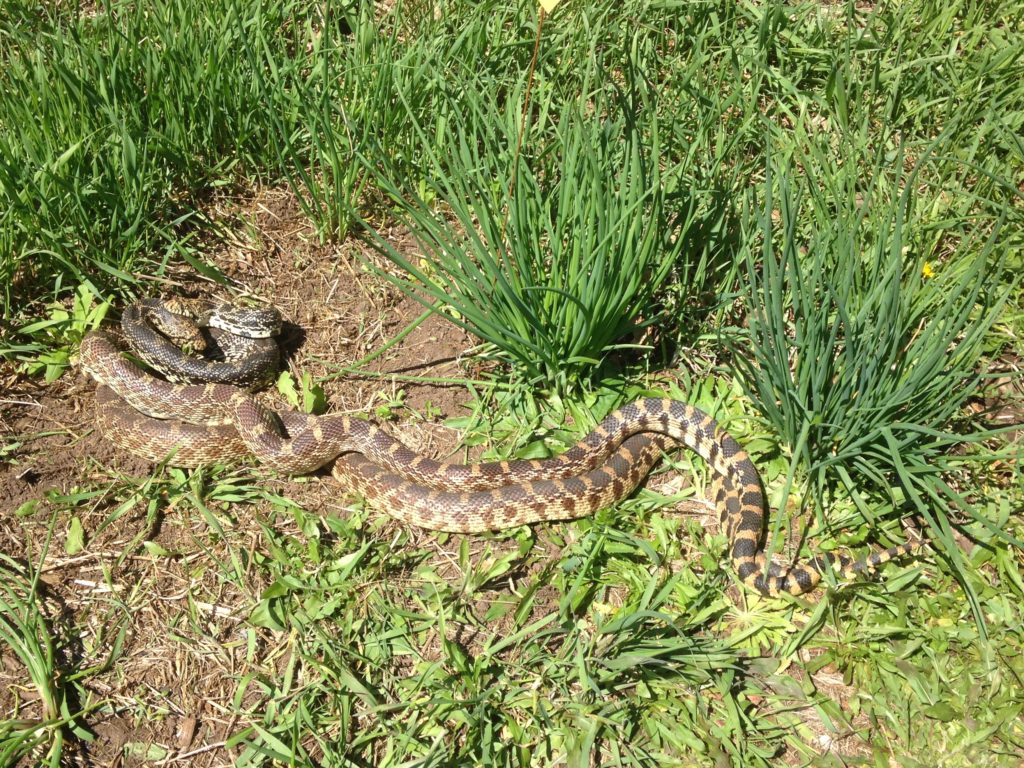
We’ve been reconnecting with our human network as well – spending plenty of time with our friends, supporters, and neighbors, the Marquardts, meeting up with local historian and author Russ Hanson (he gave us an old coal boiler that we’ve turned into a wood-fired water heater), and taking the poop pile from our new goat-mancer friends and CSA members at The Munch Bunch. And we’ll be starting to sell at the Saint Croix Falls Farmers’ Market in a week or two … a few weeks after the market begins, as usual.
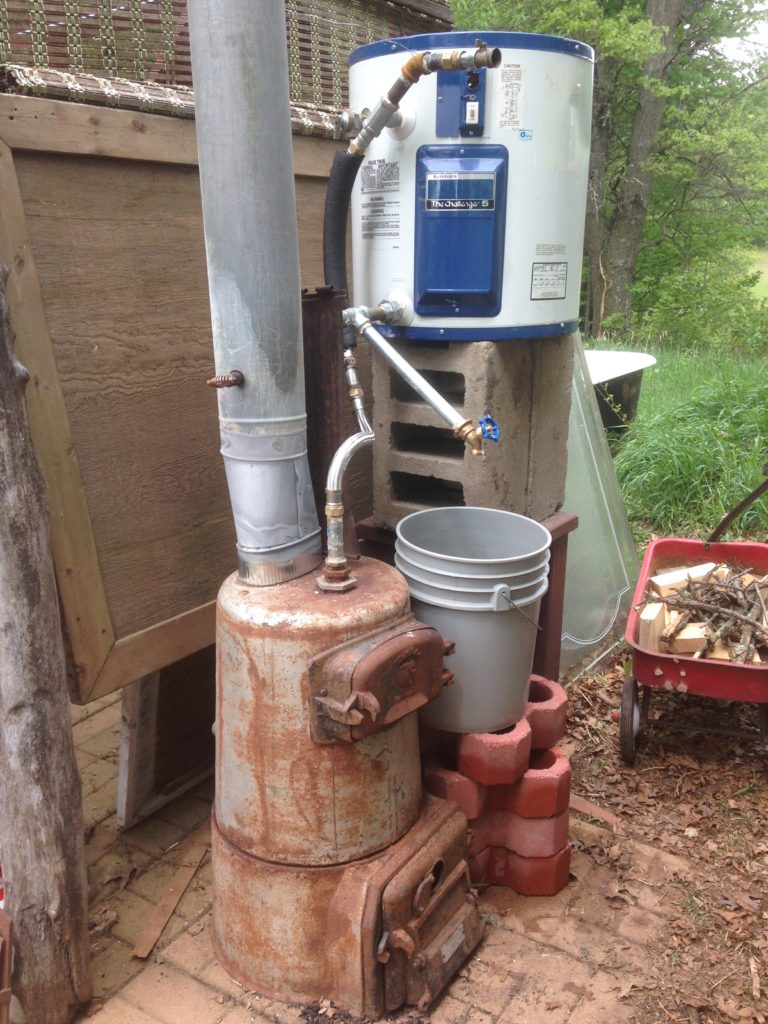
(We simply don’t have enough growing this early in the season for our attendance to make sense, especially alongside those coming in from south of here. Heck, we even have a slower start than other farms in the same township as us – the local historian let us know that his growing season, up the hill, is a full month longer than ours is, due to the way cold air settles into the wide glacial Saint Croix River valley where we grow!)
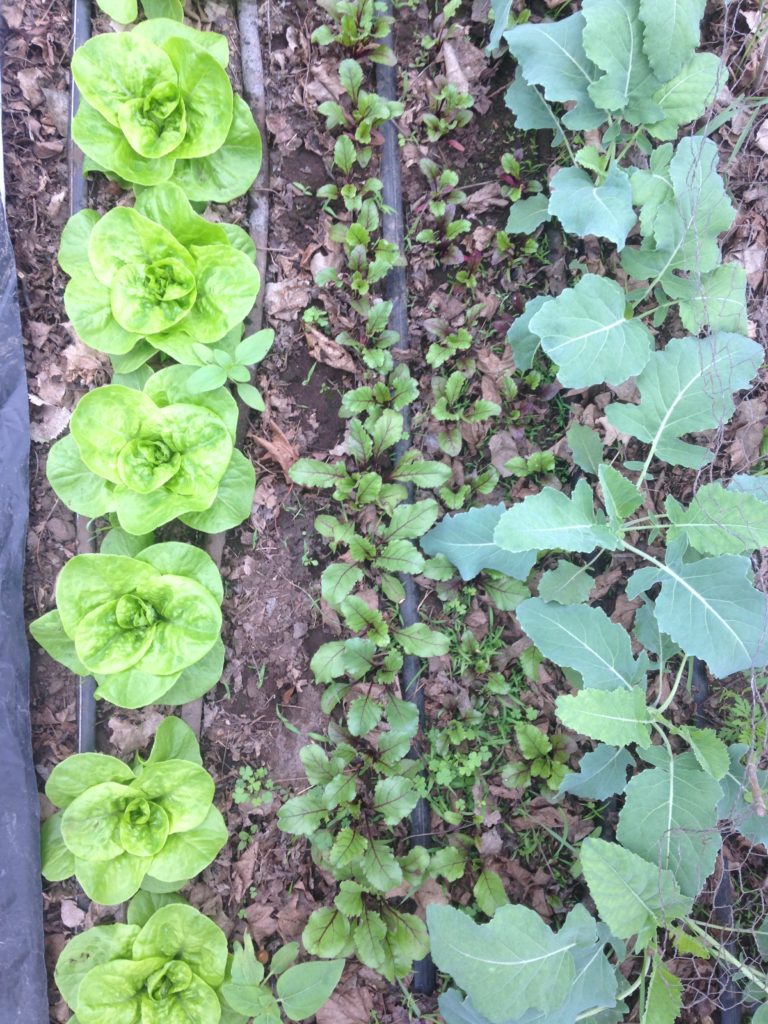
The biggest change afoot this spring is all around us, and it’s been a real test of our ability to “que sera, sera” with inevitable change – logging. Starting at 7 am, for weeks, we’ve been greeted by the sounds of the profit-driven logging machines devouring all the largest and oldest trees in the vicinity, and leaving arboreal carnage in their wake.
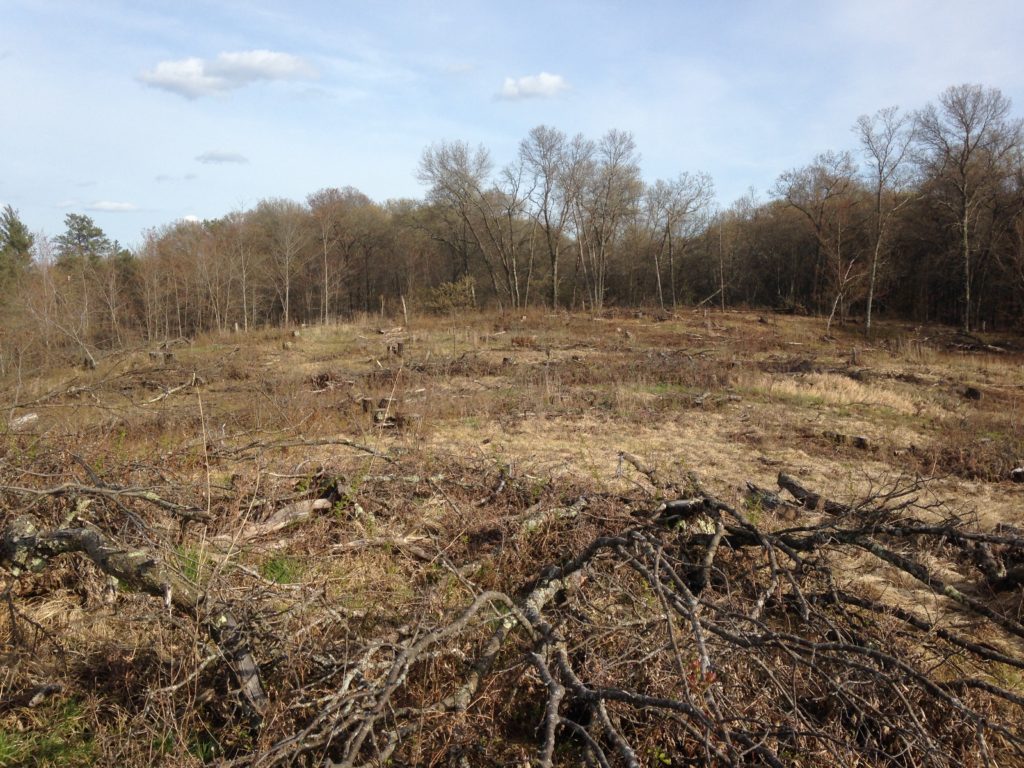
I could rant, here; there is much to be angry, sad, and disappointed by, seeing how callously these woods are turned into dollars for the Wisconsin General Fund … especially knowing that next year it will likely be the patch of woods right alongside our driveway that is razed.
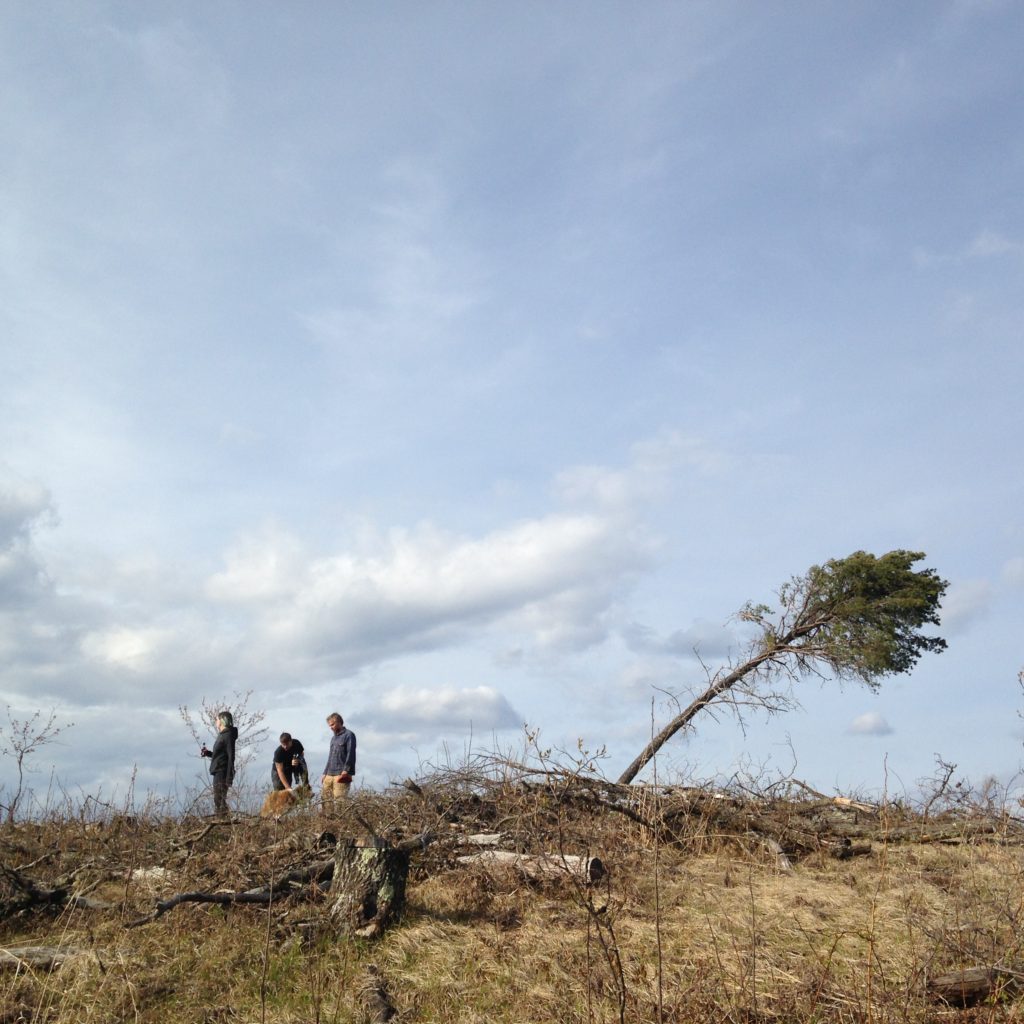
But I won’t rant. It’s one of those things that we cannot change, and must find peace with at minimum, and even better, silver linings. In this case, we will have ample access to the remnants the loggers leave behind, for use in our heating needs, and we expect that the suddenly-opened areas will allow understory fruit bushes to spring into productivity, producing wild raspberries, blackberries, and blueberries.
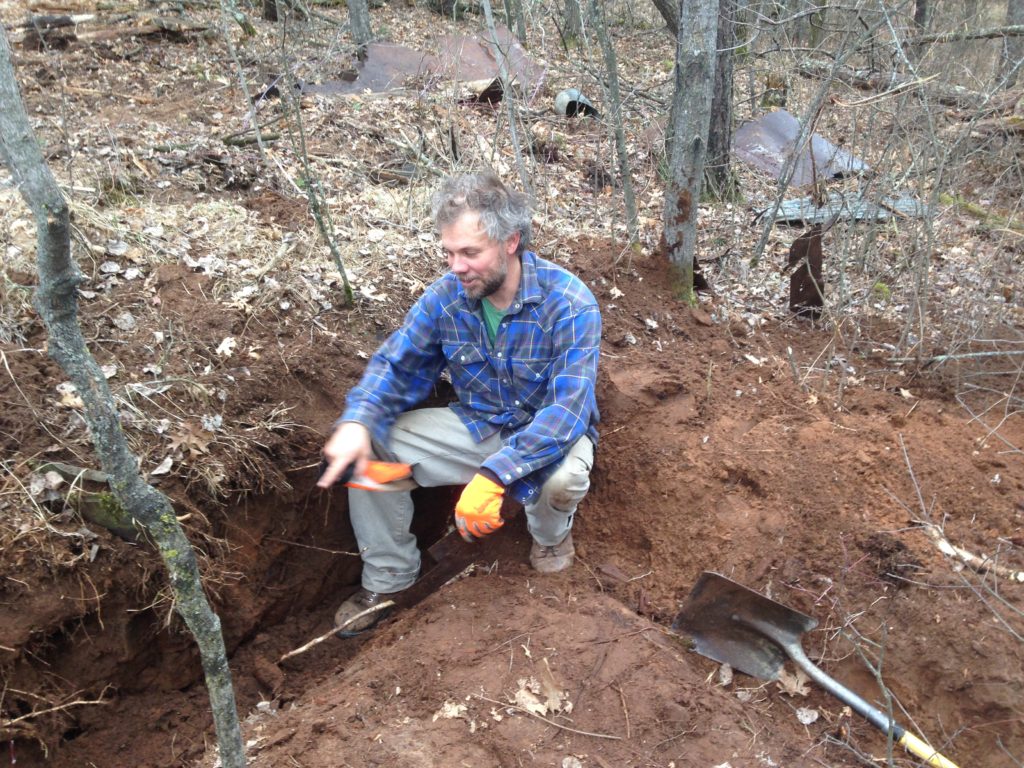
Another silver lining – although no one had told us, I had a hunch that the loggers were coming to the neighborhood – and launched a salvage expedition to recover the last of the old car body panels from the homestead ruins of “The Architect” … and just days later, the whole site was crushed by heavy machinery treads. Sad – but awesome that we salvaged the remains in the nick of time, to repurpose for future projects that have local historical roots, as well as powerful aesthetic appeal (to our eyes anyway!)
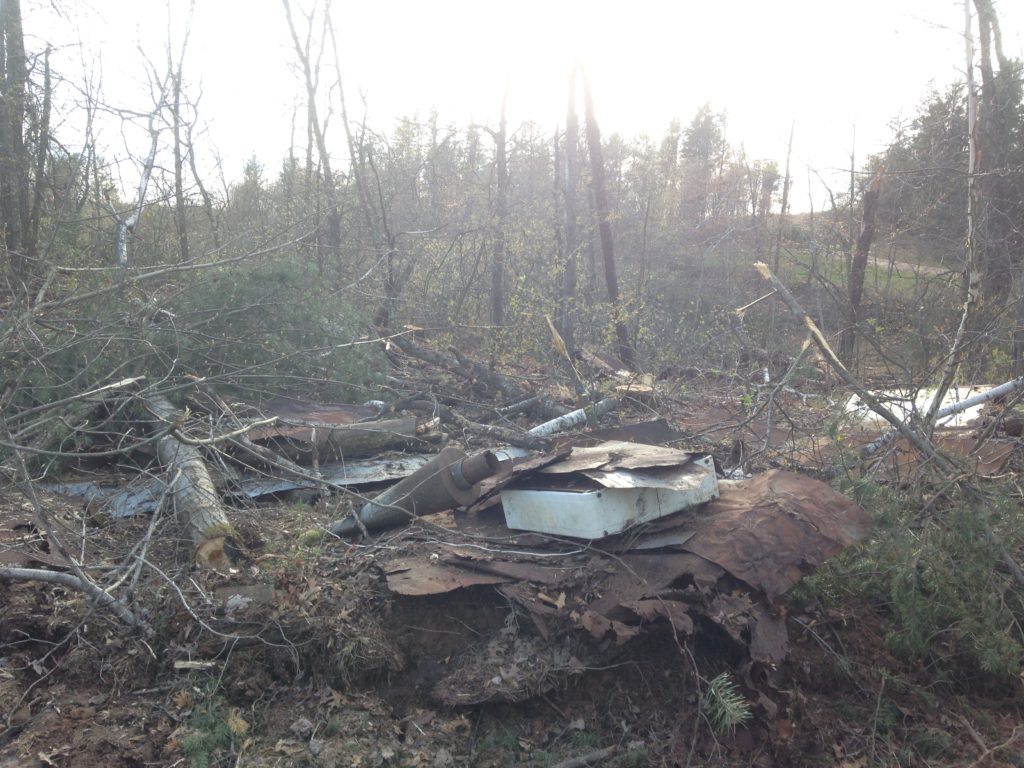
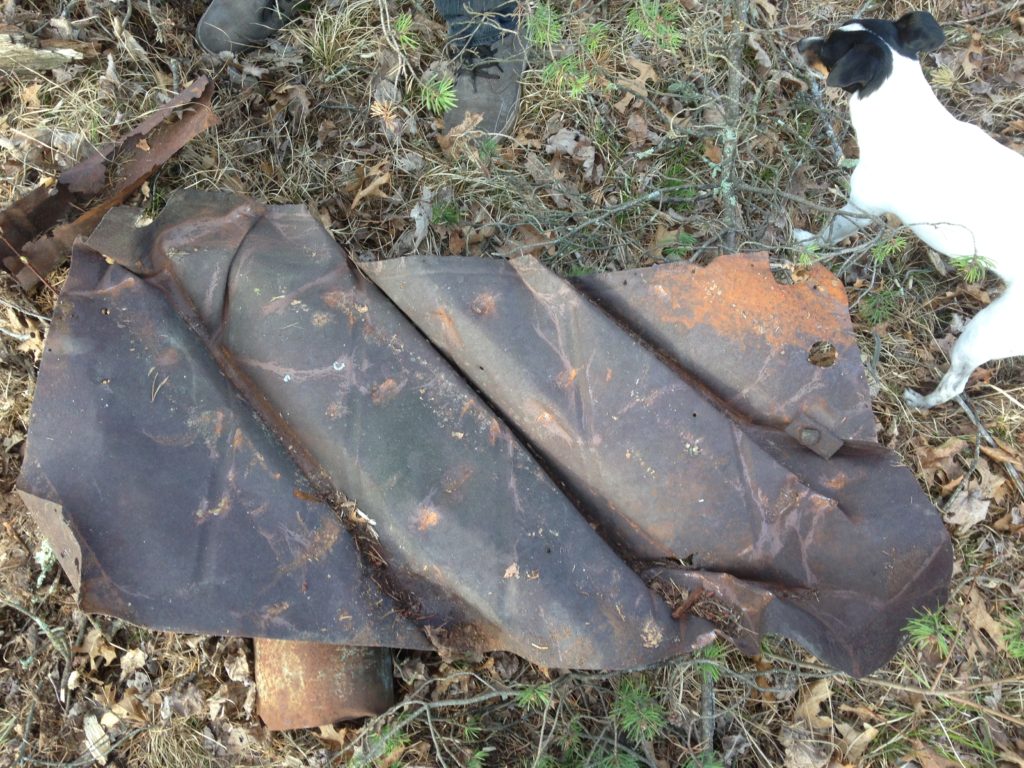
We’ve enjoyed feeling like we lived in a forest, but with the surrounding woods logged, we’ll be well-aware that we truly live in The Barrens, and we that we grow food in an area considered to be little more than a wasteland by many. Underappreciated, scruffy places on the outskirts of human civilization has long been our favored type of habitat, and that’s exactly where we are putting down our roots; deep tap roots that can draw sustenance from the most unpromising-looking sands.
No matter what, it’s going to be interesting, and interesting is our favorite thing.
So.
The first CSA box will be coming on June 6th … are you ready? We are!
See you soon,
Gabe & Kristin
HEY HAY MAY PICS
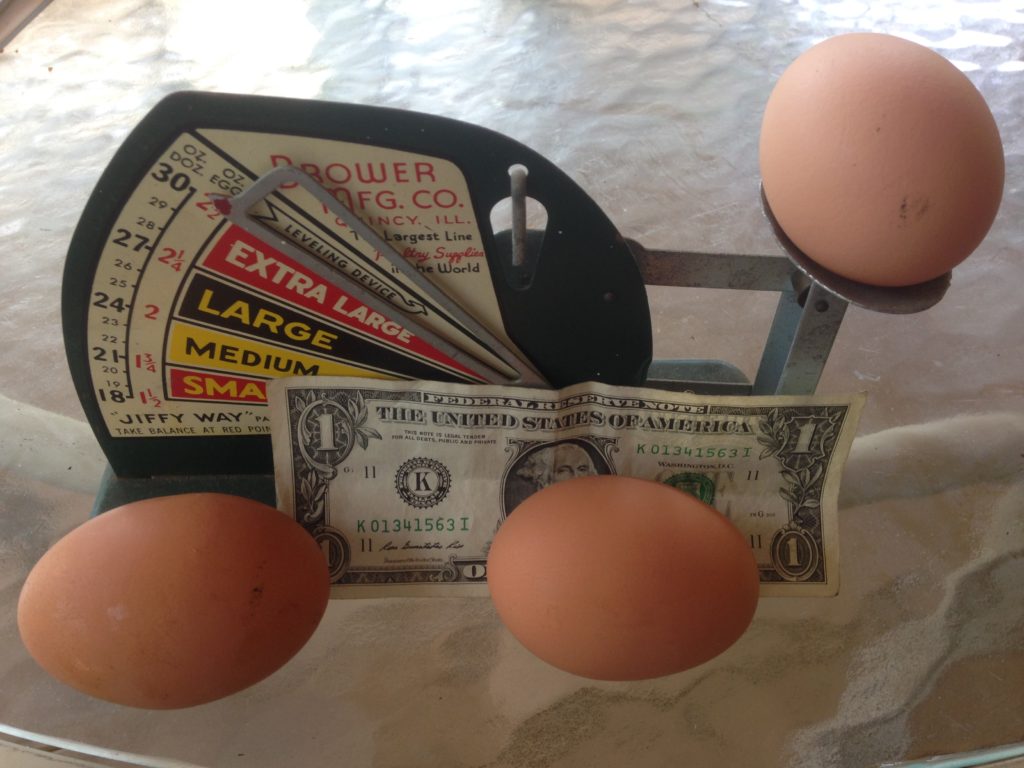
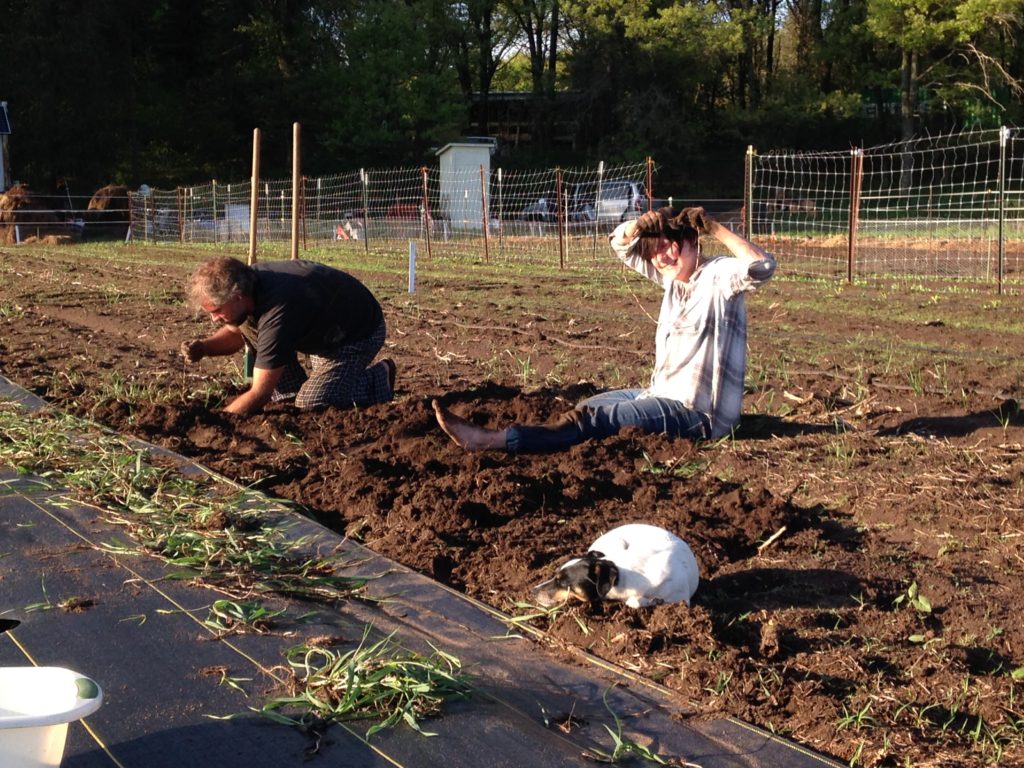

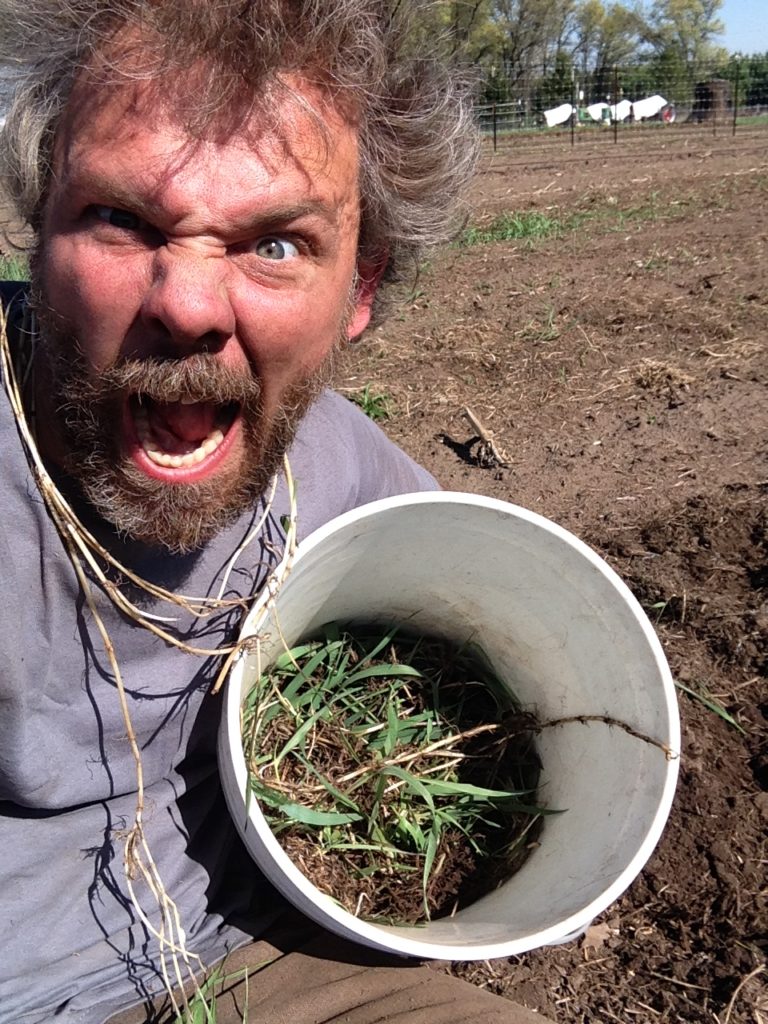
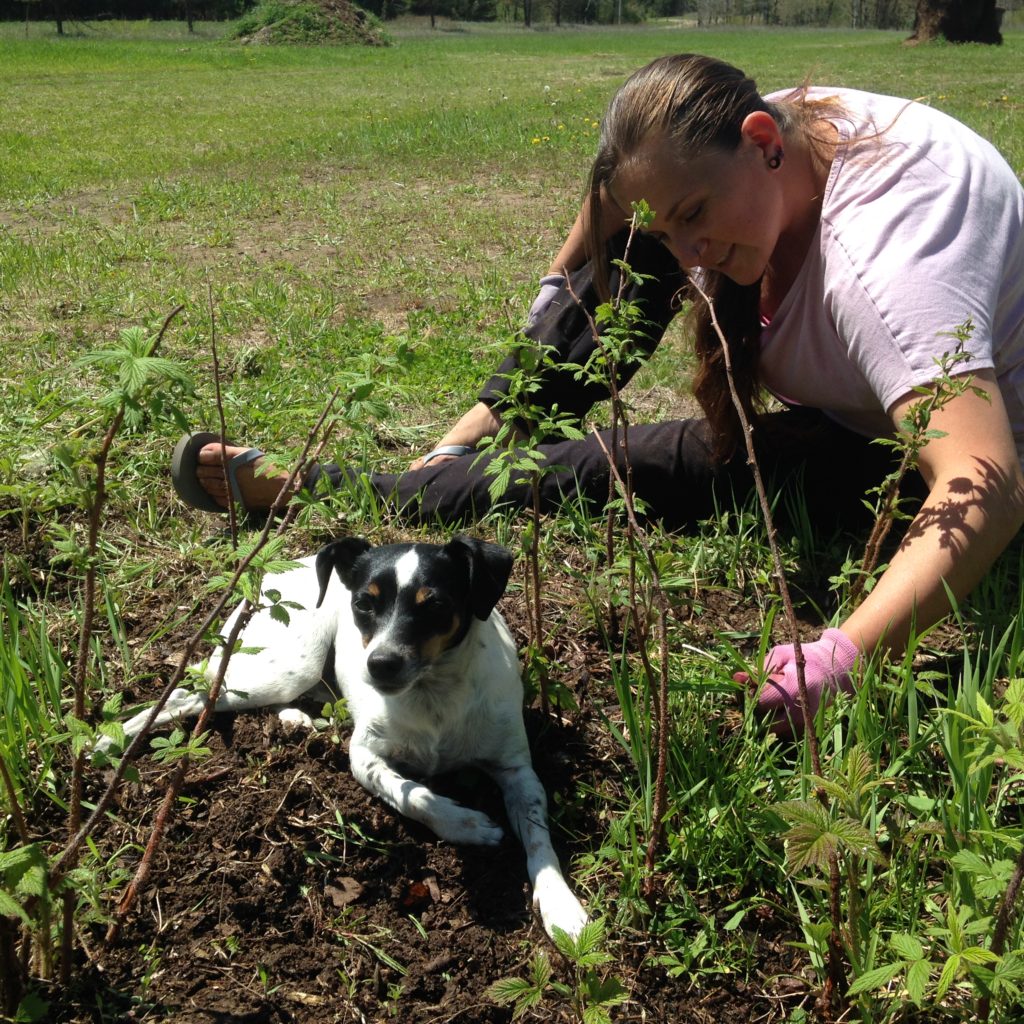

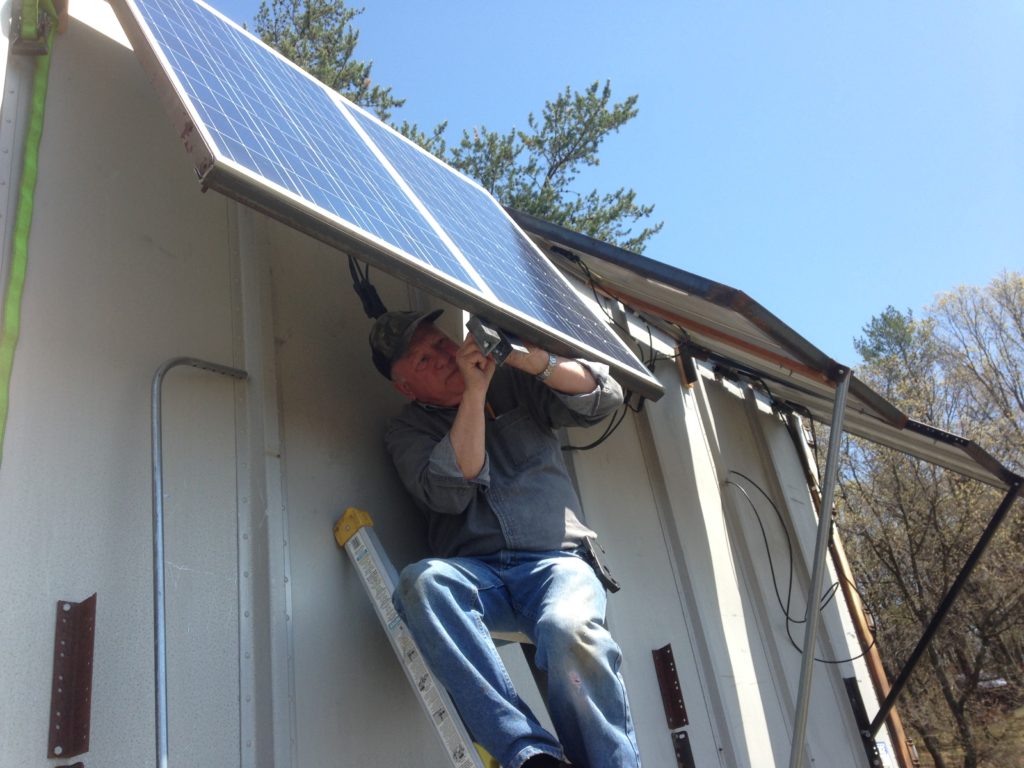
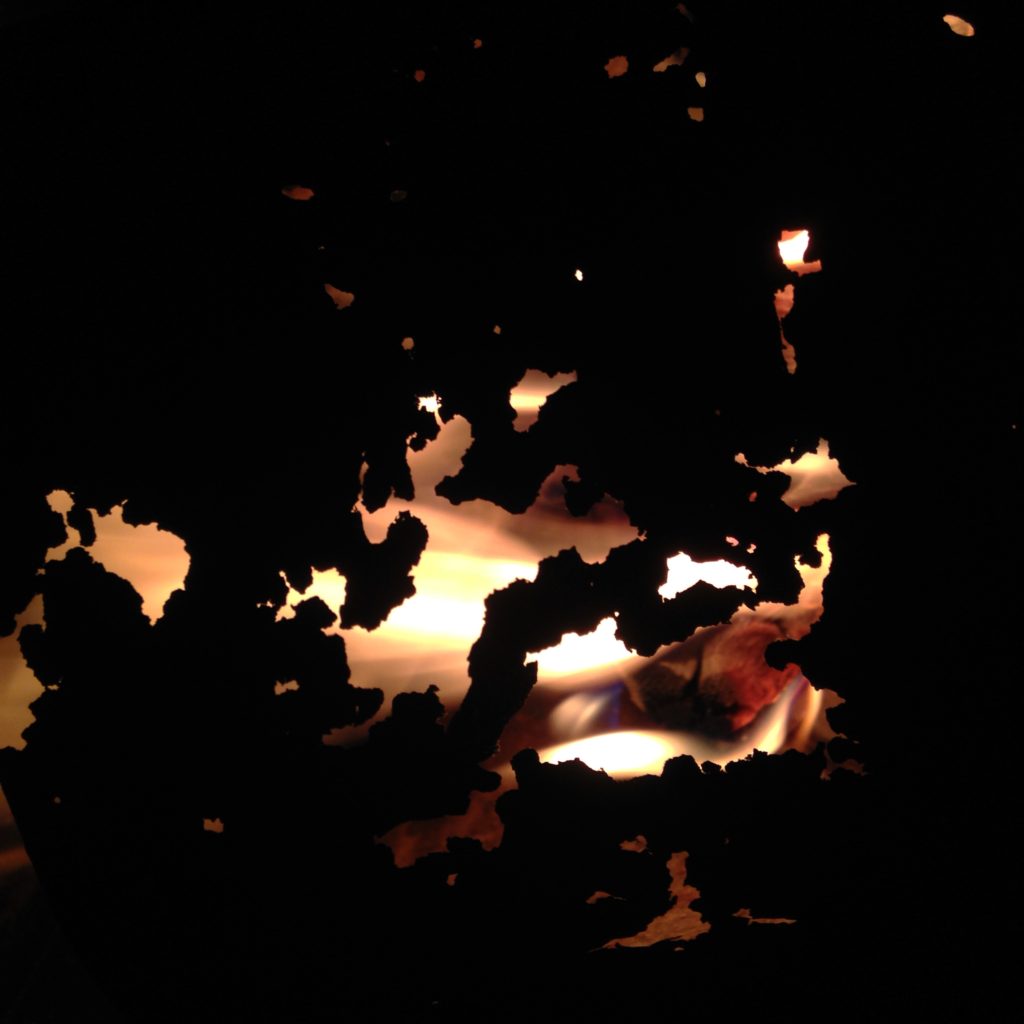
And finally, let’s cap May off with a few good versions of our farm’s theme song!
(High Keys is my current favorite version. The Lords version is awesome for the band’s dancing lol)
Hibernation to Germination 2017
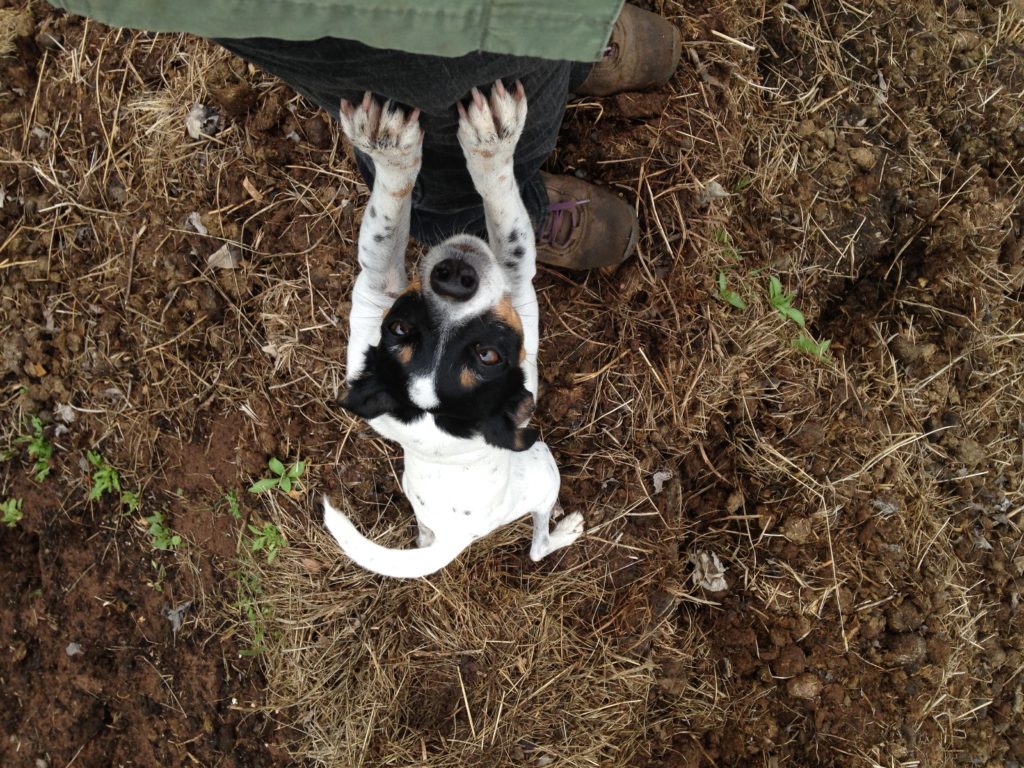
Three days ago, I packed up all my wool blend socks, sweaters, long underwear, and winter boots.

I was feeling optimistic, and perhaps hoping that by taking this step I would help do my part to ensure that winter goes away for the year. I’ve been premature in my Spring-faith before – even just earlier this month a wet, heavy snow took out the gutter I’d eagerly reinstalled on the side of our high tunnel greenhouse, hoping to collect some early rainwater for the first high tunnel crops.
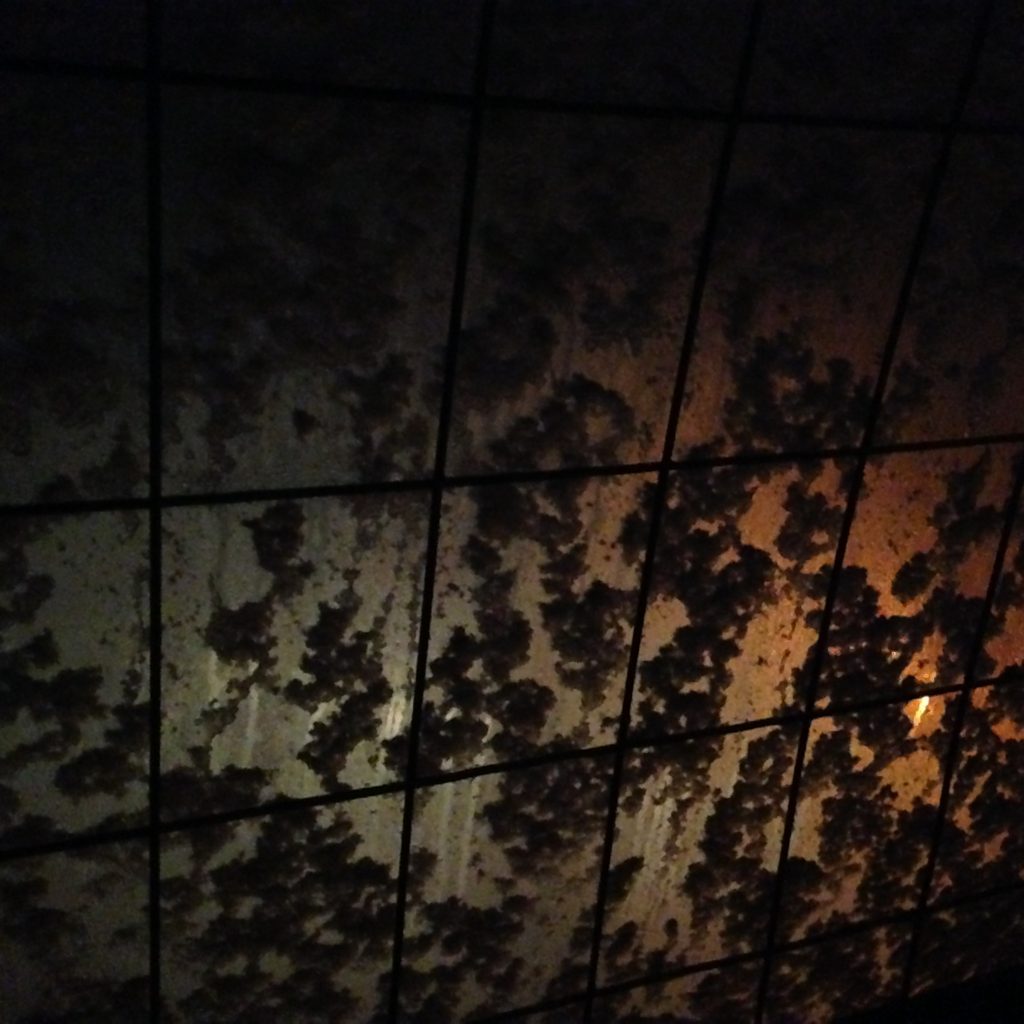
So I shouldn’t have been surprised when this cold snap hit – highs in the 30s, lows in the 20s. I just finished putting sheets and buckets over the raspberry canes, rhubarb, and asparagus, which are apparently just as foolishly optimistic as I.

But even with more snow and cold, it’s indubitably Spring, albeit USDA Zone 4a style. Nature’s signs are everywhere – the evening choruses of peepers have returned, the evil quack grass is lushly taunting me, we’ve had our first tick and mosquito bites, and the hungry black bears have begun their raids on the Neighbors’ birdhouses.

Robins are twitterpating, dandelions blooming, rhubarb and asparagus emerging from their subterranean winter slumber.

Human signs of Spring abound as well – we have the fence up around the field to defend against critters great and small, the loggers are back to ravaging the surround forests, and we joined the annual horde of scavengers to Bloomington’s Curbside Pickup days to get free materials for the farm.
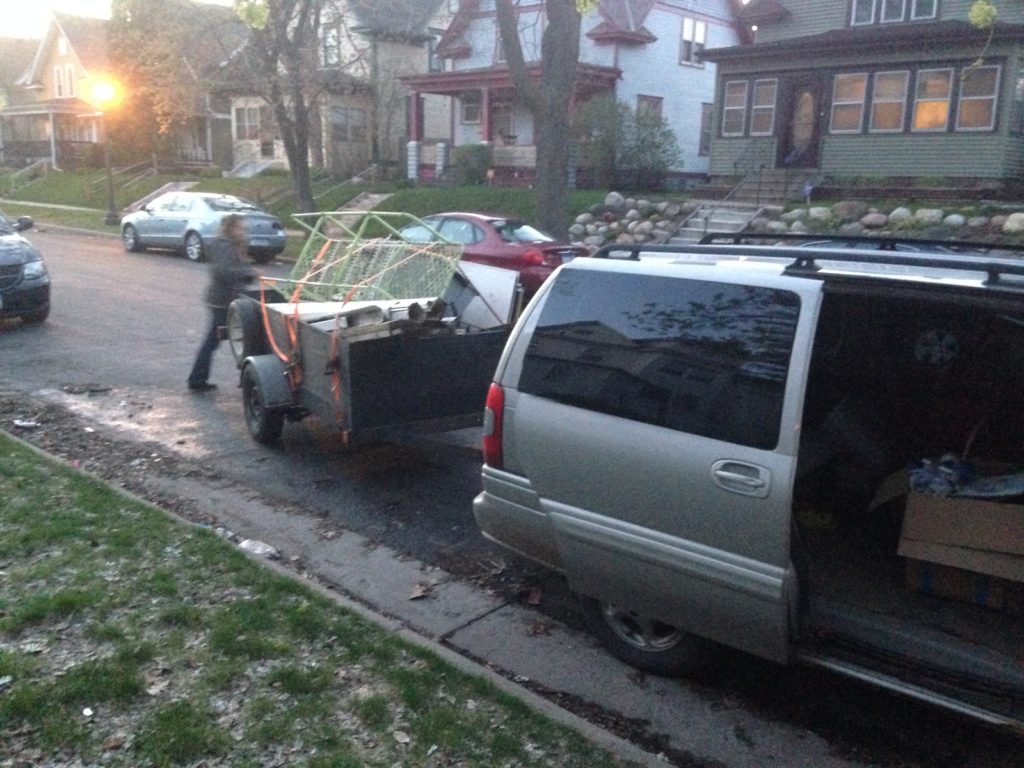
The first big push of seeds are all done germinating, and have now moved out of the trailer (where we kept them toasty near our woodstove), and into the greenhouse.
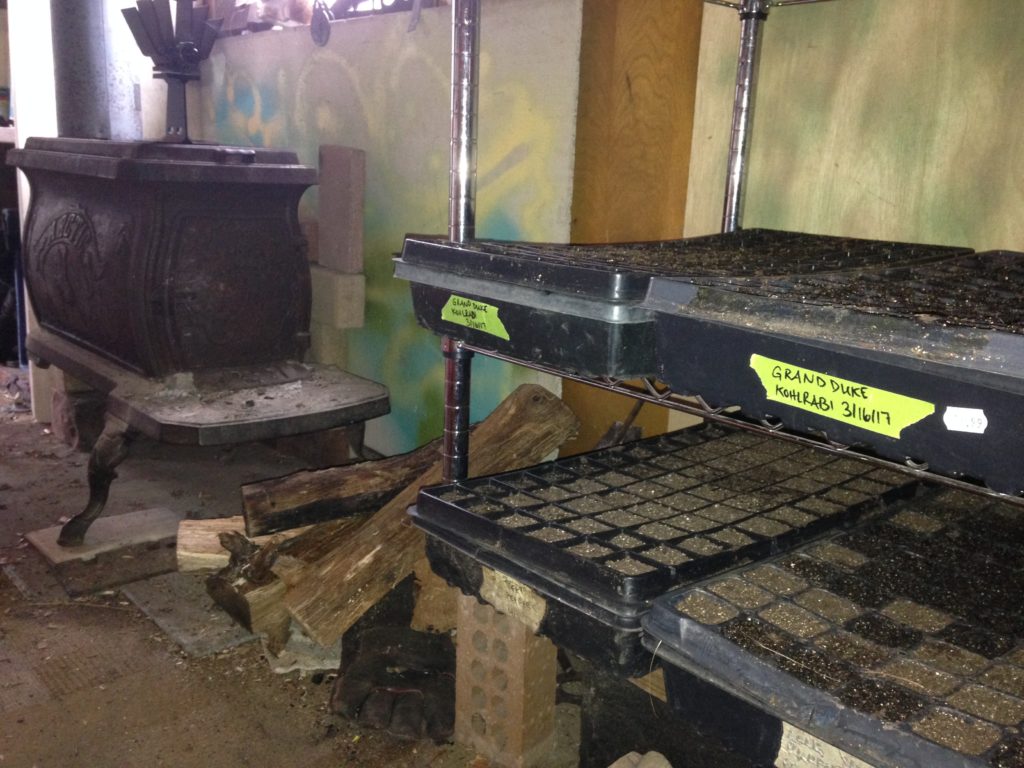
In there, the seedlings get ample sunlight during the days, and the hot weather plants (peppers, tomatoes, etc) stay warm overnights on the rocket-heater-warmed clay bench (we’ve improved our firing routine such that they’re enjoying temperatures around 30 degrees warmer than outside, all night long).
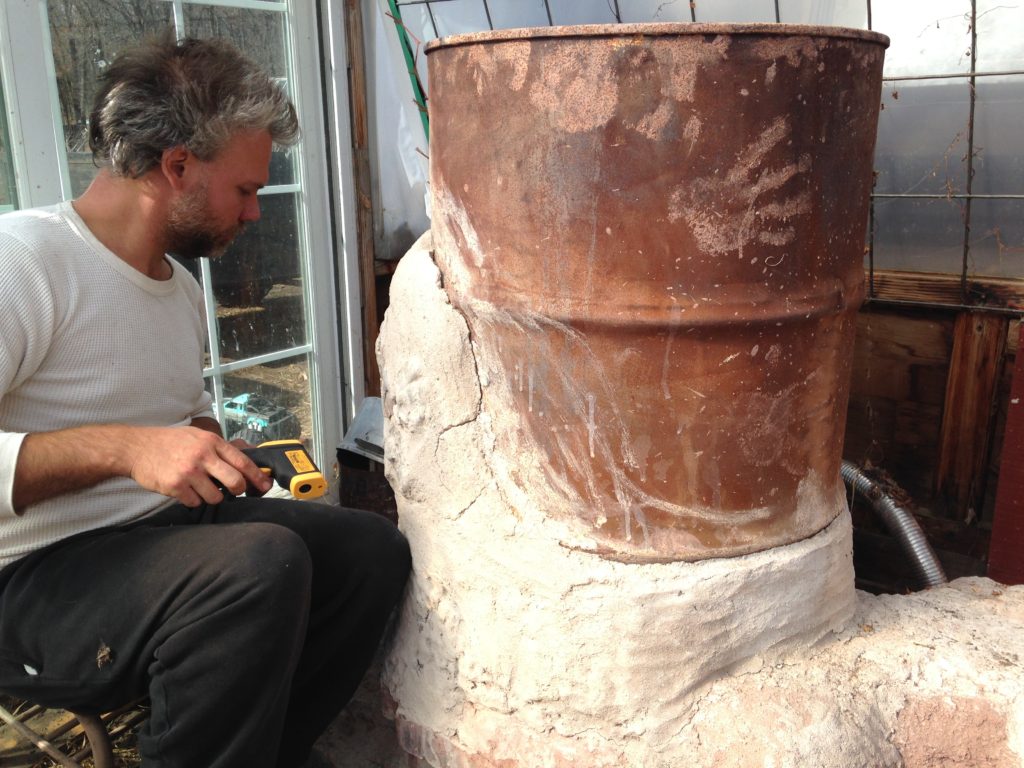
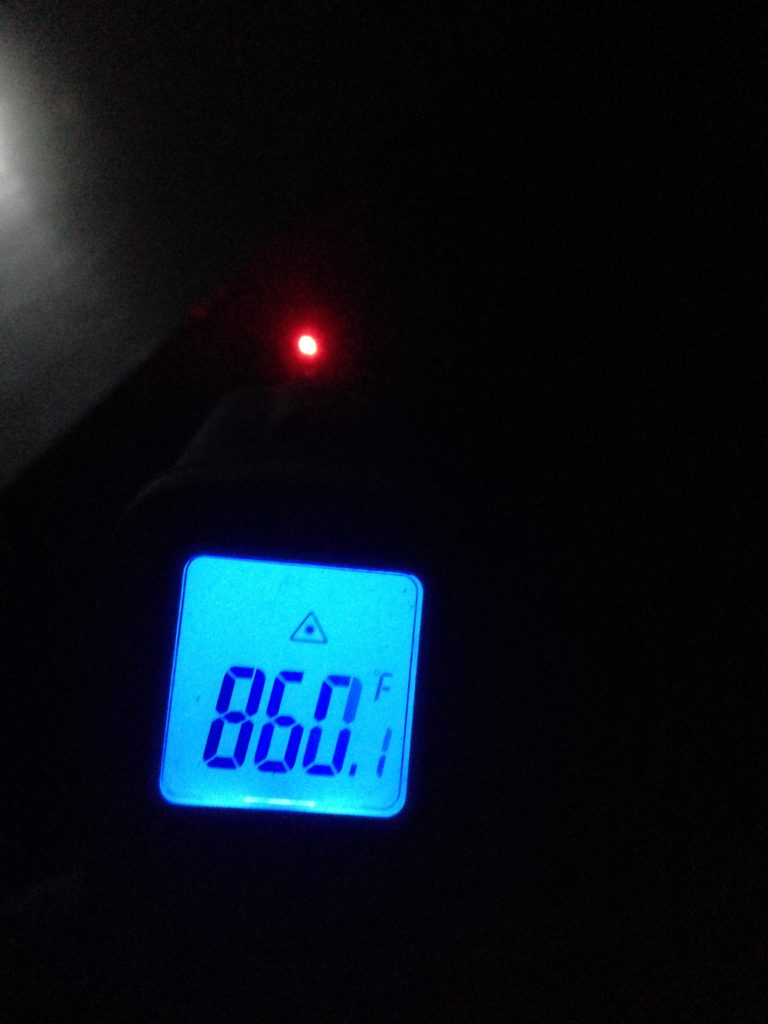
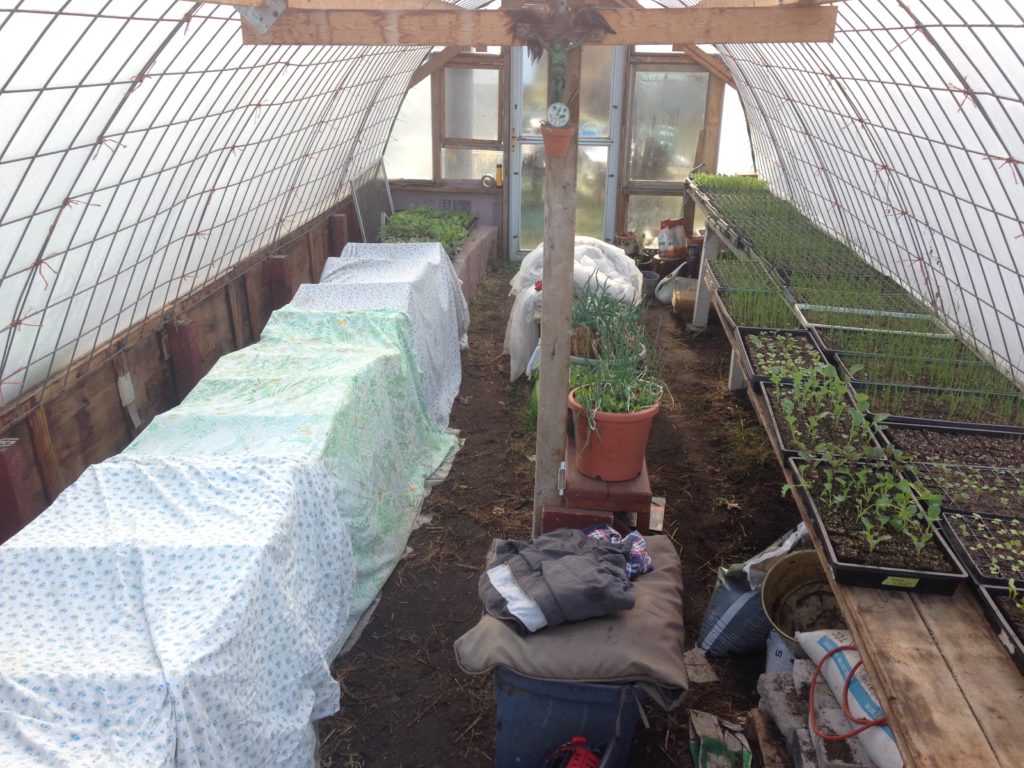
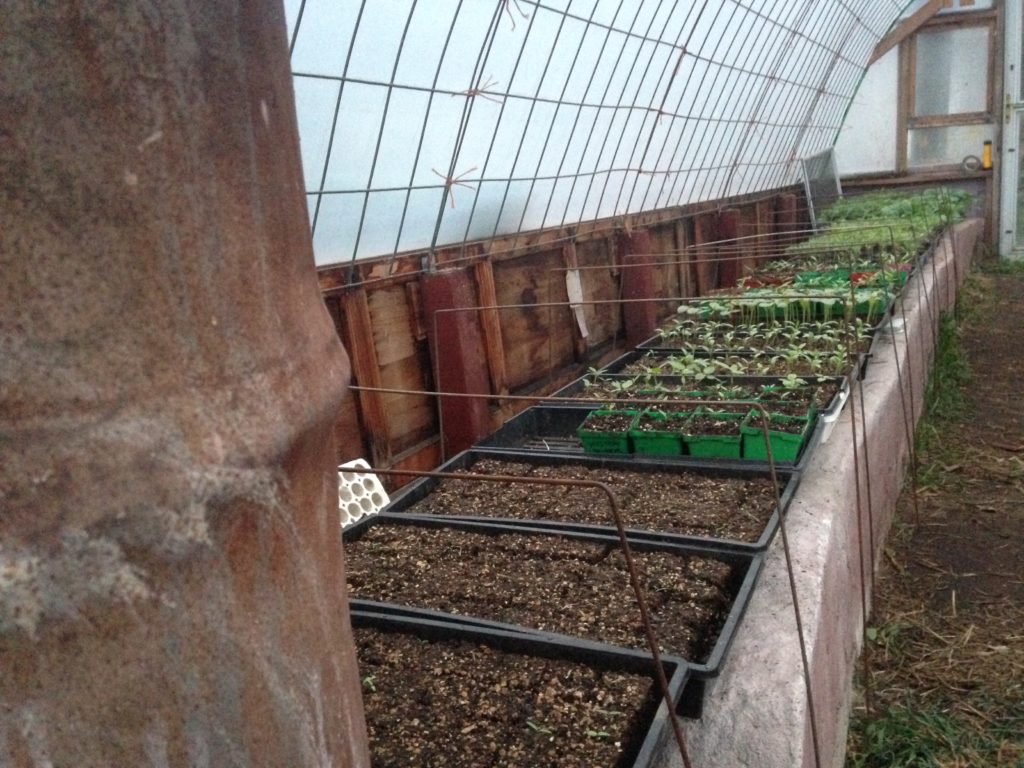
The first rows were planted in the high tunnel a couple of weeks ago – reluctantly, since we discovered that rabbits have been partying in there through the nights, and we feared devastation … but a combination of scent deterrents, homemade hot pepper spray, and wire fencing seems to have moved them on to less hostile environments.
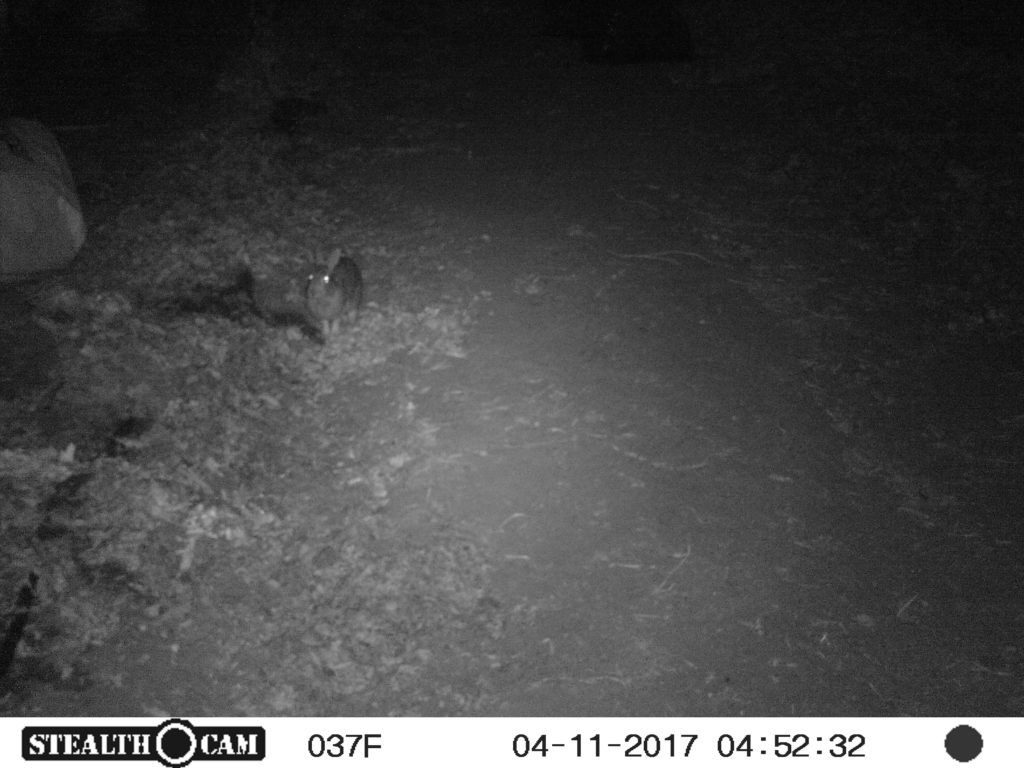
In the last couple of days, the first field plants went into the ground, ready to soak up the days of rain that followed – peas, salad mix, turnips, radishes.
In other news, we’ve doing lots of spring cleaning around the farm, building a larger screen porch in preparation for the annual mosquito blood- drive, clearing out a patch of large oak-wilted trees to make room to plant new fruit trees (and to make firewood of course), plugging new mushroom logs, using the chickens to break down our abundant piles of oak leaves for use in compost, and experimenting with controlled burns in the meadows and woods on the margins of the field.
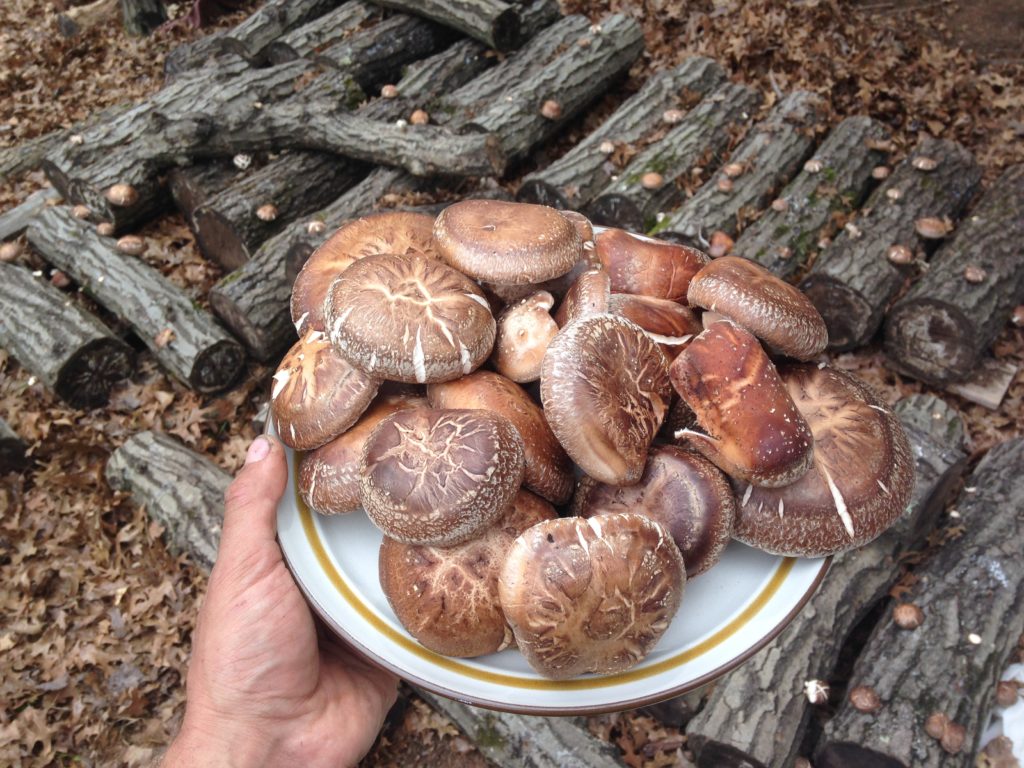
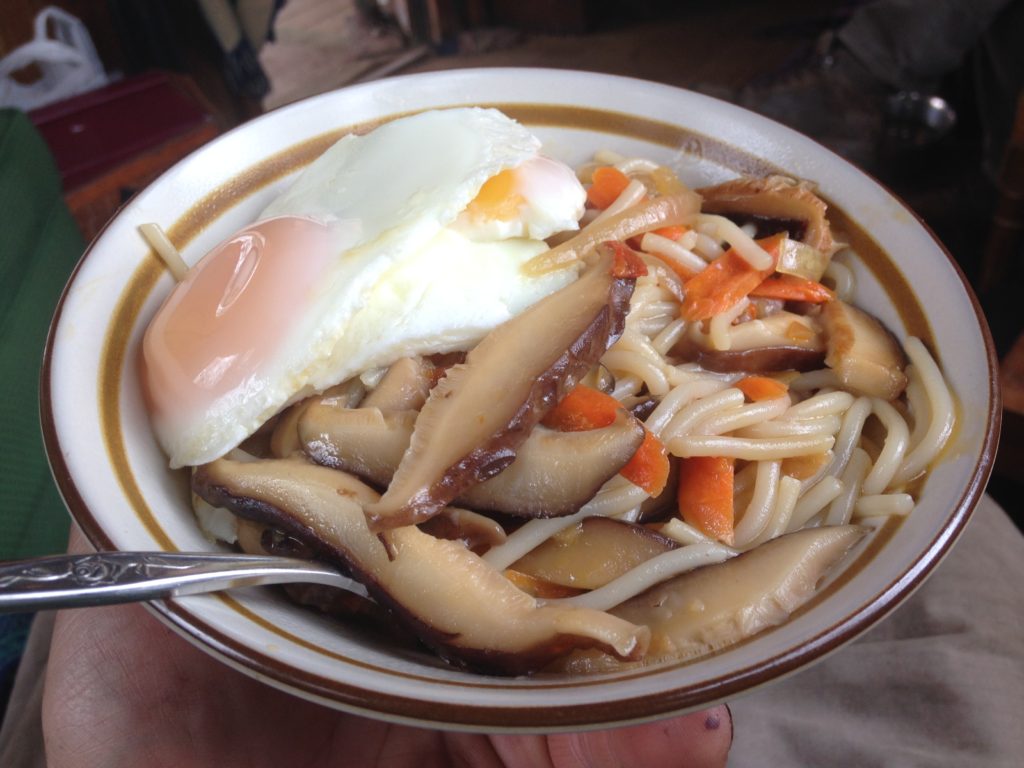
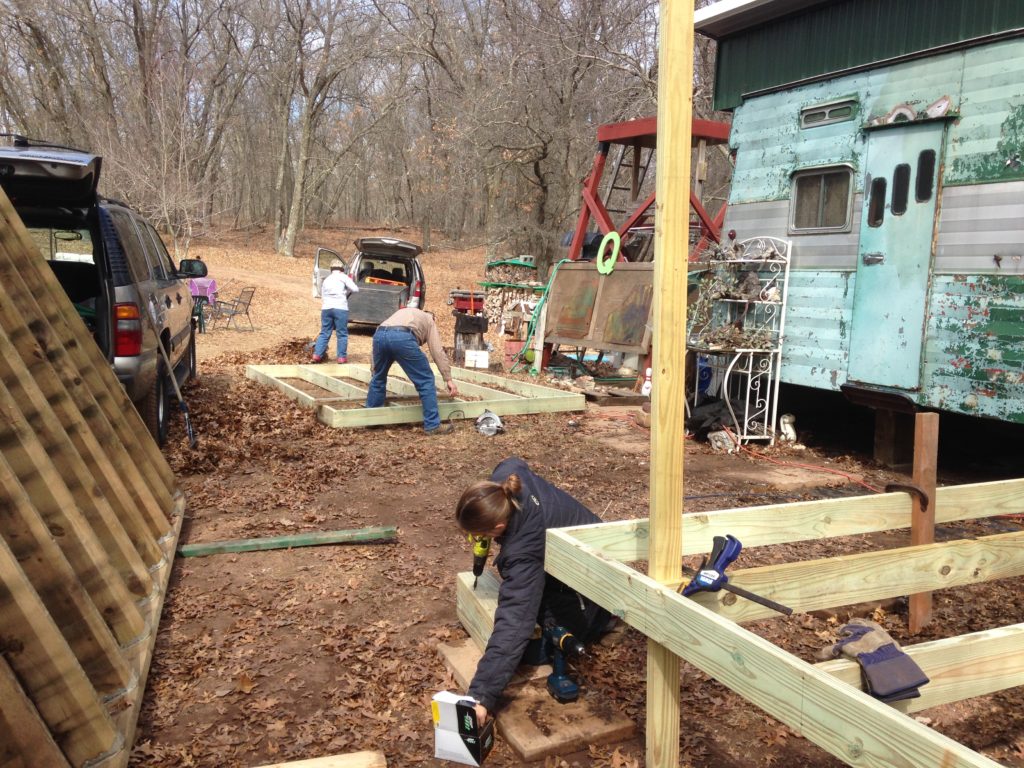
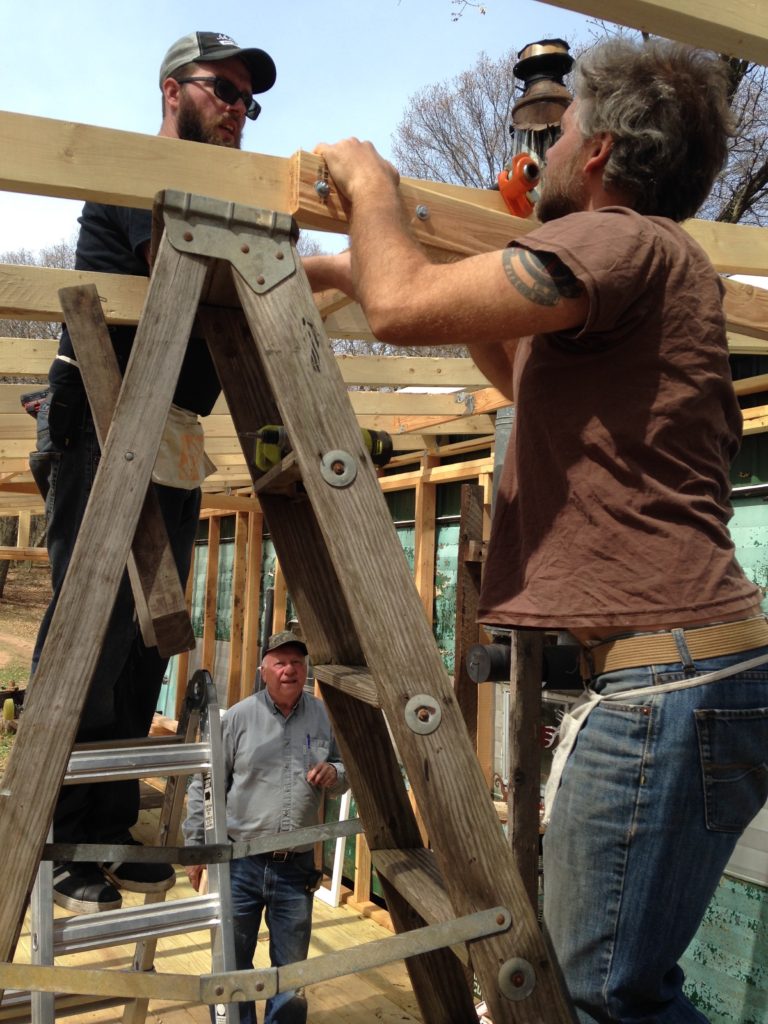
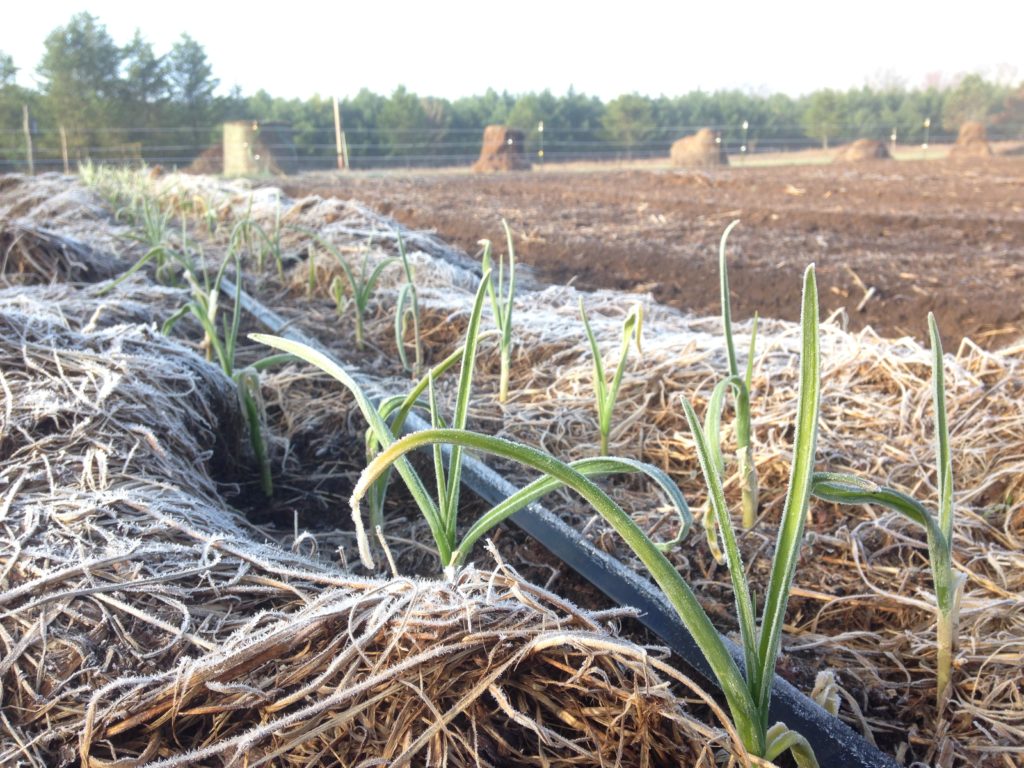
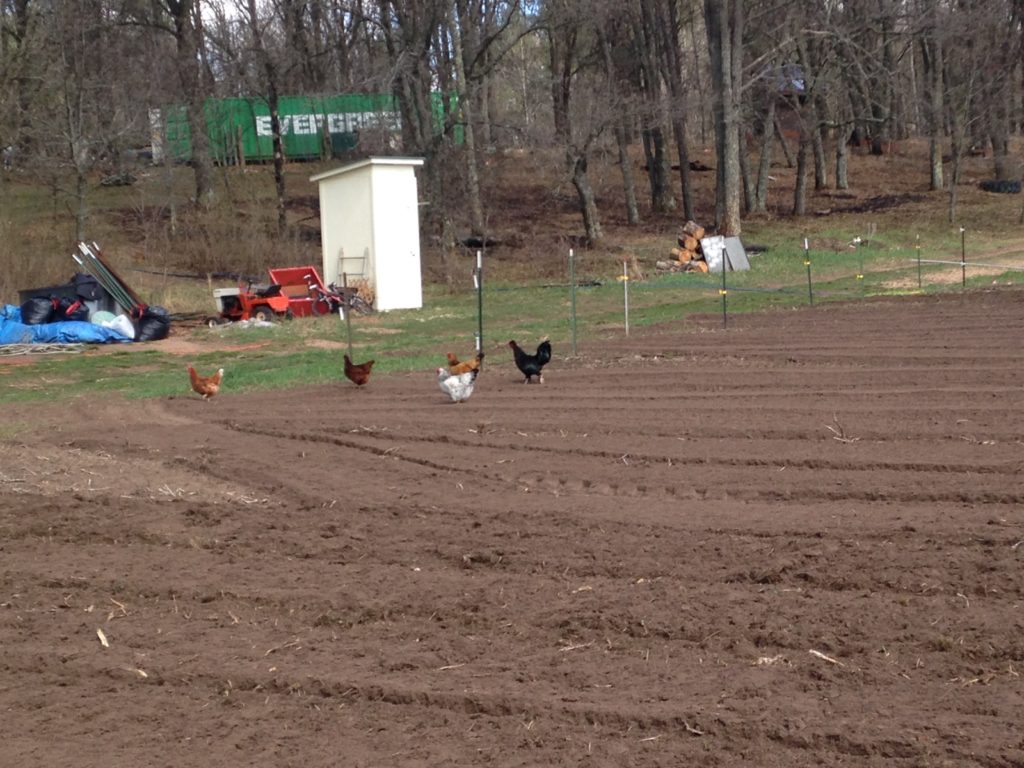
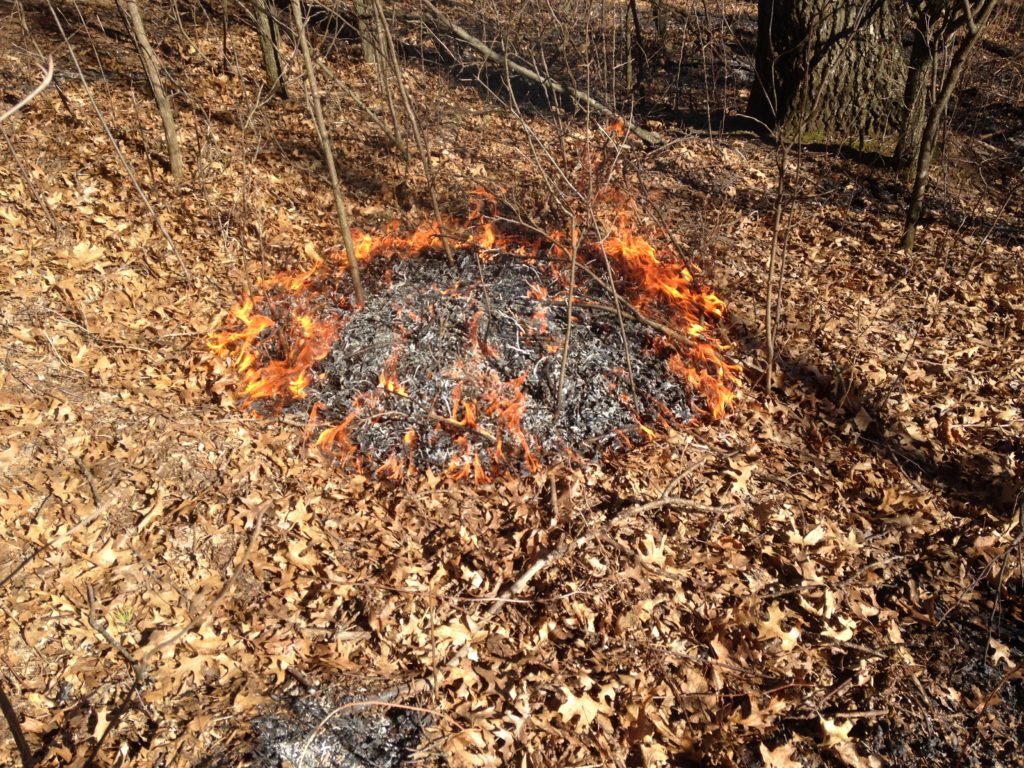
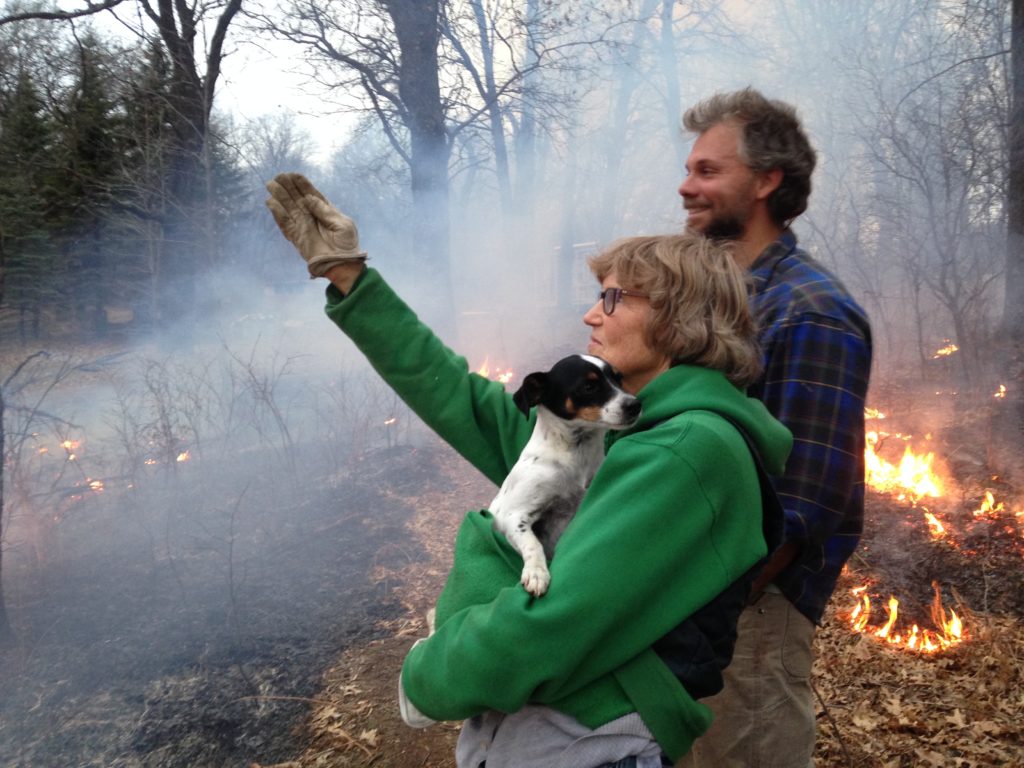
We’ve battled quack grass, spotted a fisher (a giant weasel basically), cursed the insanely-intelligent voles … and sat inside on a chilly gray day and finished this webpage update for you.
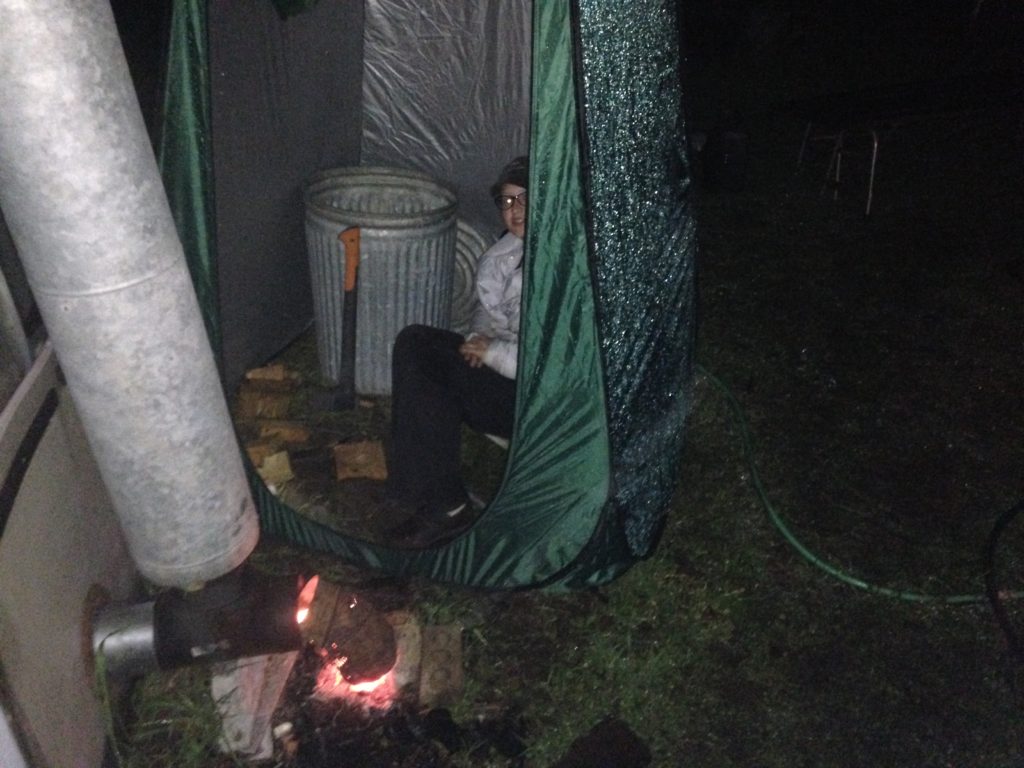
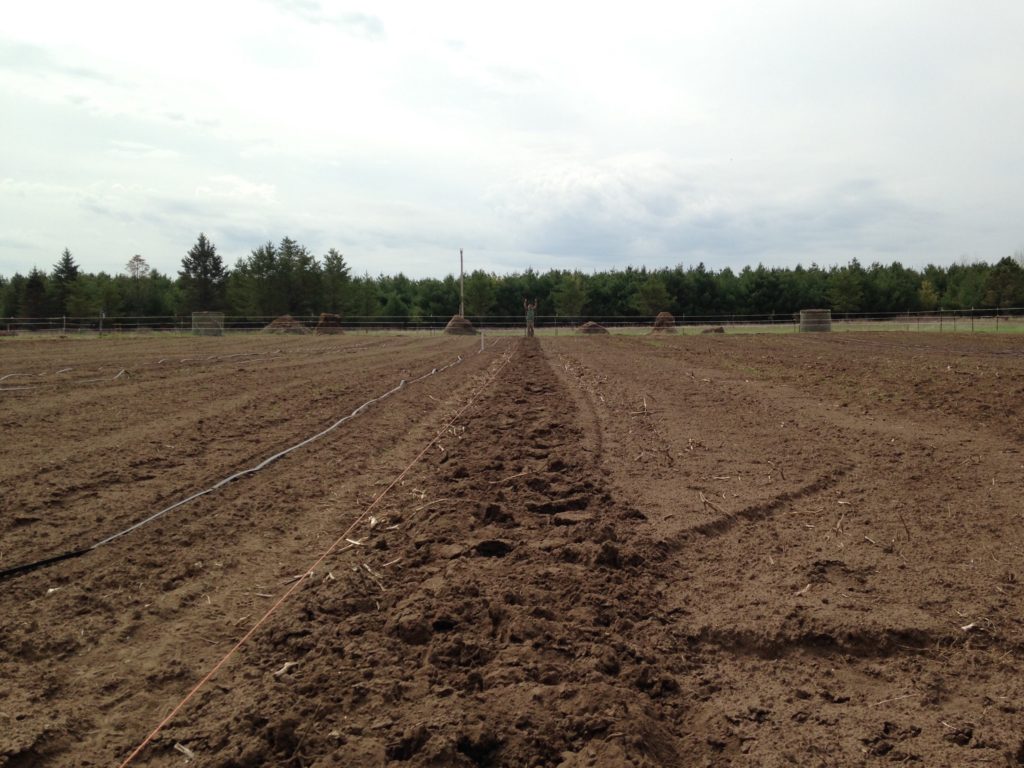

Hope you, too, are enjoying this slow, beautiful transformation from winter to spring! Life is strange and beautiful, and the struggle is the joy … we’re grateful to have such lucky abundance, such interesting problems. and such folks as you in our lives. Thanks!
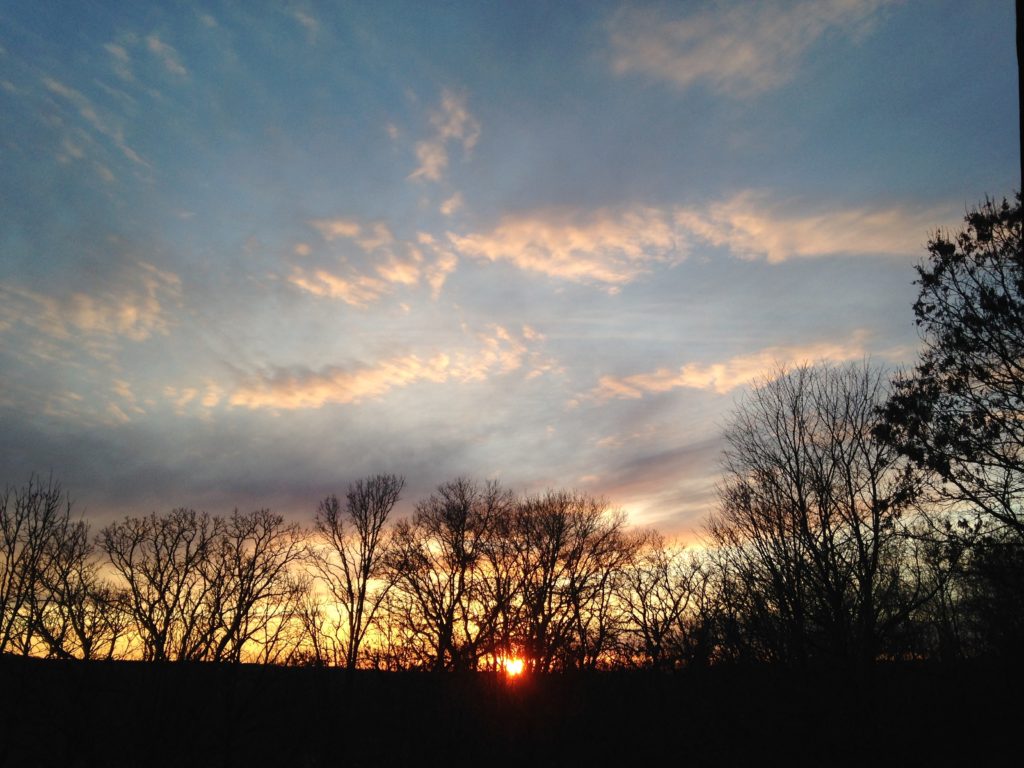
the Way to May – CSA Pre-Season Newsletter
Holy wow, it’s already well into May! Signs of the season surround us, reminding us just how lively this landscape is … greenery is bursting forth from every tree, every patch of earth.
Our apple and pear trees are blooming, as are the trillium, violets, and wild plum trees. The perennials are coming up – chives, rhubarb, raspberry, mint, lemon balm … and we ate our first fresh asparagus of the season last week.
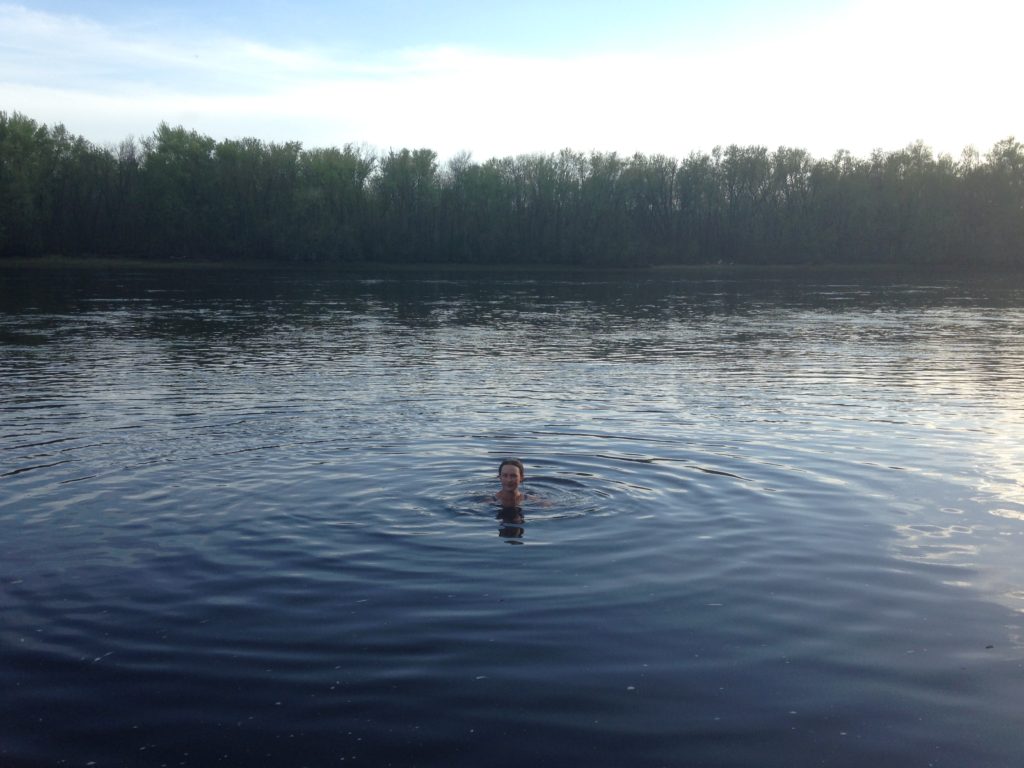
Throughout the nights, mystery critters crunch through the undergrowth or scramble across our trailer, coyotes caterwaul in chorus, barred owls demand to know “who cooks for you?“, and once in a while a fox or civet makes a freaky womanlike scream. My favorite night sound is the abundant whip-poor-wills – nocturnal bug-eating birds that I only hear here.
The black bears are out and about, scavenging for treats – a young male has been knocking over Neighbor Marcia’s birdfeeders, and the momma bear and her three cubs from last year were spotted in the woods behind us – the cubs are huge now, in their second year, and about ready to set out on their own.
As always, Spring has been an incredibly busy time, as we get everything ready for the season. My hands are stained black with soil, and feature a wound on each palm, from ignoring Kristin’s sage advice and pounding in a row of t-posts without gloves … which led to blisters that didn’t hold up well to the continued post-pounding I subjected them to.
Starting seeds, nurturing baby plants, preparing the field, keeping ourselves and the tender plants alive and warm through the chilly nights … it’s an intense time of the year, filled with all the opportunities for hope and fear that you could want!
The biggest change this year is the High Tunnel greenhouse we completed at the end of last autumn, thanks to a USDA grant.
It’s a powerful and complex 72×30′ tool that we’re learning to use. After the winter, we returned to find the ground inside it totally green with grass and weeds – a beautiful lively space to hang out in, while everything outside was barren and brown! But soon enough we had to till the green under to prepare the soil for planting.
We then laid out irrigation throughout – since no rain falls inside, all the plants’ water needs must be delivered by us. There are soaker hoses that are gravity-fed by our rainwater collection tanks up on the hill, and drip irrigation lines in each row, fed by the well. We’re also adding an experimental rainwater collection system on one edge … which should be able to collect over 600 gallons of water from a 1″ rainfall.
We primarily plan to grow hot weather crops inside, but to get things started while nights were still going below freezing we planted some salad mix and peas. They survived the cold nights just fine – but now the challenge is to keep them from overheating during the sunny days, when temperatures in the high tunnel can easily reach triple digits if we aren’t careful. To ventilate the high tunnel, we roll up the 70-foot long side panels, permitting a cross-breeze to move through. This works pretty well, however, if it’s not merely breezy but windy (basically anything over 10mph), then we have to close at least one side up to prevent damage to the structure. It’s been a learning experience trying to balance wind minimization with heat regulation – and it will get even more interesting when the hot, sunny days of summer are upon us. (We plan to add additional ventilation in the peaks on both sides to help move hot air out even when there is no breeze.)
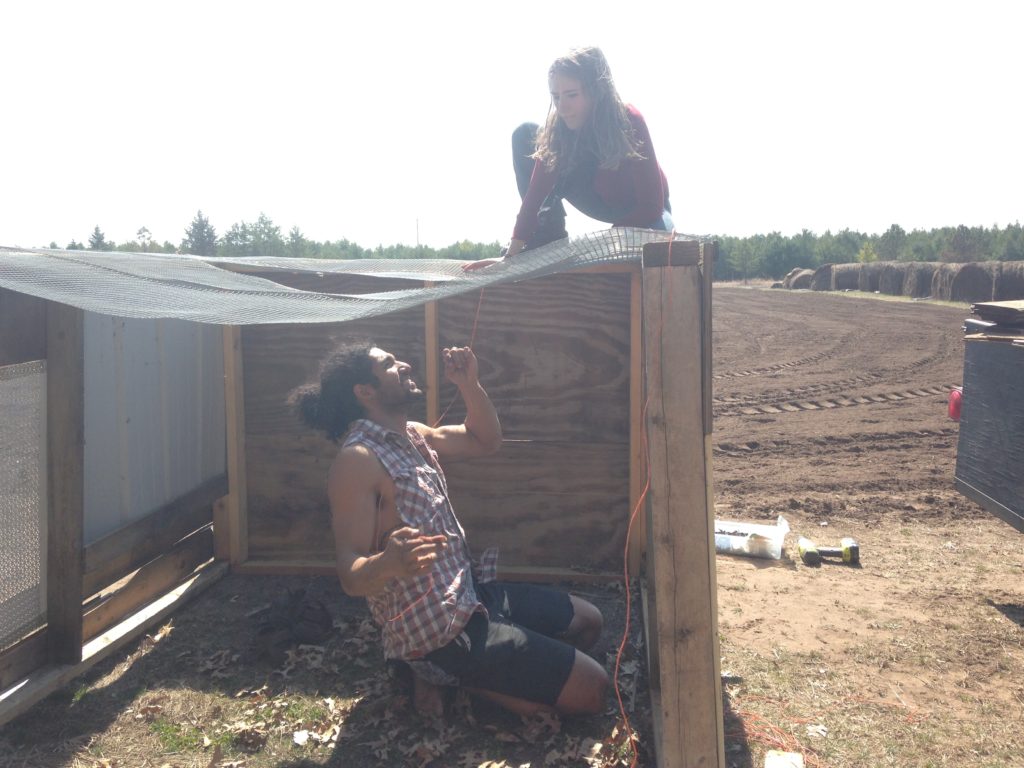
We’ve been very fortunate to have plenty of help this Spring. It would be a ridiculously long blog post if I tried to list it all, but I’ll try to hit some highlights …
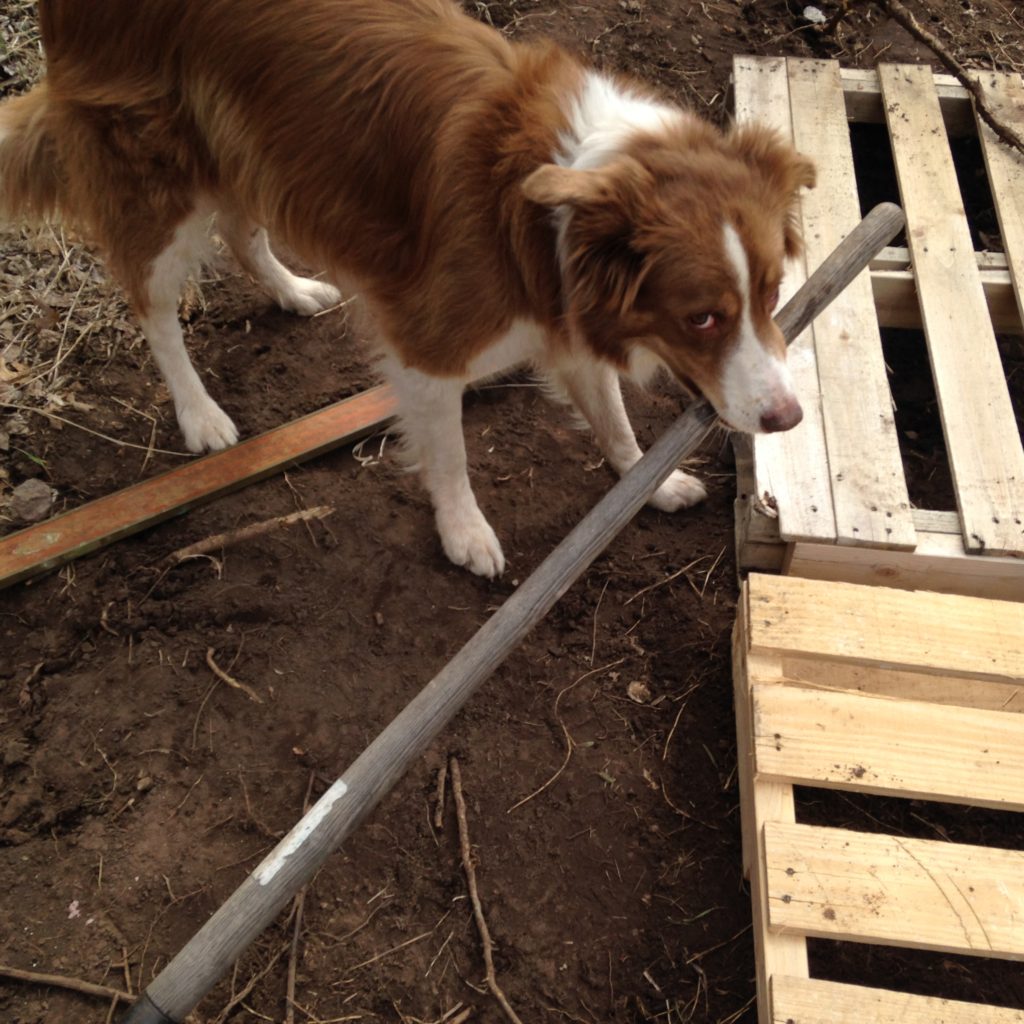
Kristin’s dad Patriarch Jim Sehr has been helping us out a ton with various construction and repair projects – he added a service door to the high tunnel for far easier access, engineered the rainwater collection on there, got the riding mower working, and plumbed in our new and improved well pressure tank. And Matriarch Deb Sehr came out to cut and plant potatoes – and even do some dishes so we can stay on top of the field and construction projects.
Neighbors Dave & Marcia kept our flock of hens happy throughout the winter, provided us with additional firewood to fuel both the greenhouse heater and the new WWOOFer cabin (more on that a bit), lent us gopher traps, tools, and best of all, their tractor!
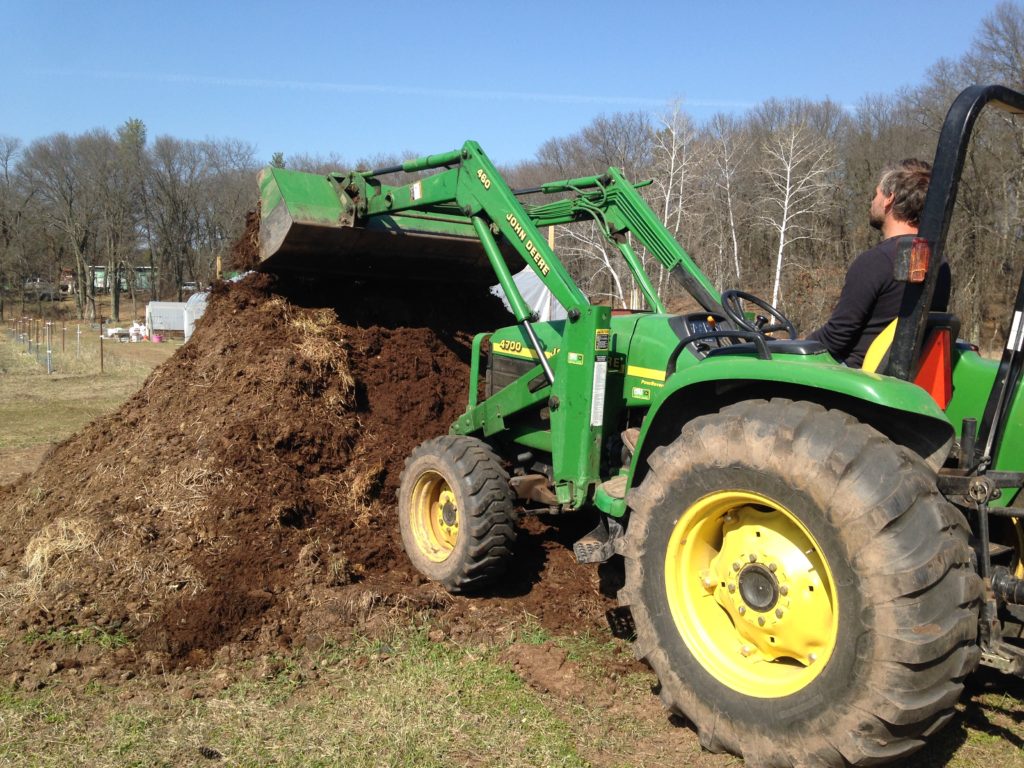
Plus, when I was despondent thinking I’d killed our well pump (it turned out to just be a flipped breaker in the generator), Marcia brought over rhubarb custard dessert and ice cream; I literally cannot imagine better neighbors to have.
Our friends from the Cities have come out to work with us (thanks Tyler, Amy, Steffan, & Eugene!) , and we’ve had lots of help from B & Nora – the WWOOFer/musician couple that worked here throughout the end of last season, and then returned early this spring. We got a free ice fishing shack off of Craigslist – insulated and complete with a little wood stove.
This turned out to be a perfect solution for them to sleep in throughout April – they helped us build it, and then made it their home – although they’d been prepared to just rough it under huge piles of blankets, the heated, insulated Fish House worked out much more pleasantly. Oh, and their Maine Coon cat, “Bucket,” is working with us too – keeping the vole population down.
The field still looks pretty empty, but the first wave of food is taking root out there – potatoes, peas, onions, radishes, turnips, and various salad greens have begun to stir, stretch, yawn, and emerge into the sunshine. And of course, there are many hundreds of plants growing in the greenhouse, awaiting suitable weather to be transplanted out.
The eternal battle with the evil quackgrass is back in full swing – we till or broadfork the soil of each row before planting, and then pull out as much of the tenacious, ropey, unkillable rhizomes as possible.
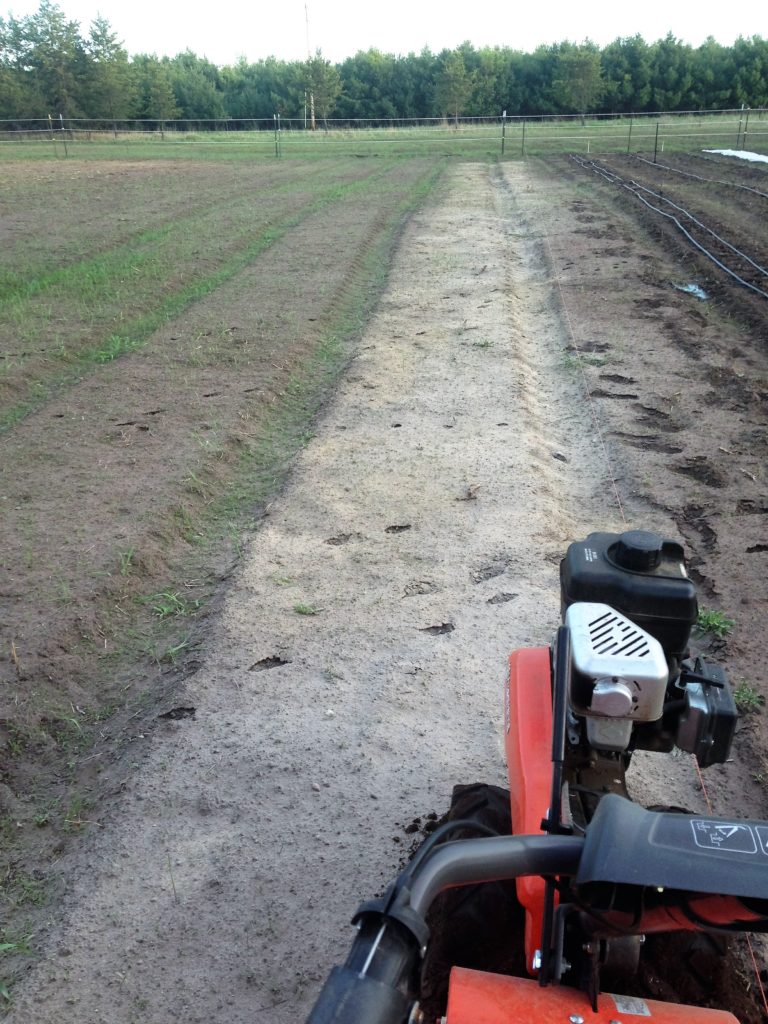
We’ll be using thick layers of mulch to slow down what doesn’t get pulled (it regrows from every tiny piece of root left behind) … it’s not a war that we ever really win, but we hold it at bay enough to get our crops for the year.
We give it the good fight and it reminds us that our farming here is not about efficiency … or even being reasonable.
Like all of life, it’s absurd and irrational – and we love it.
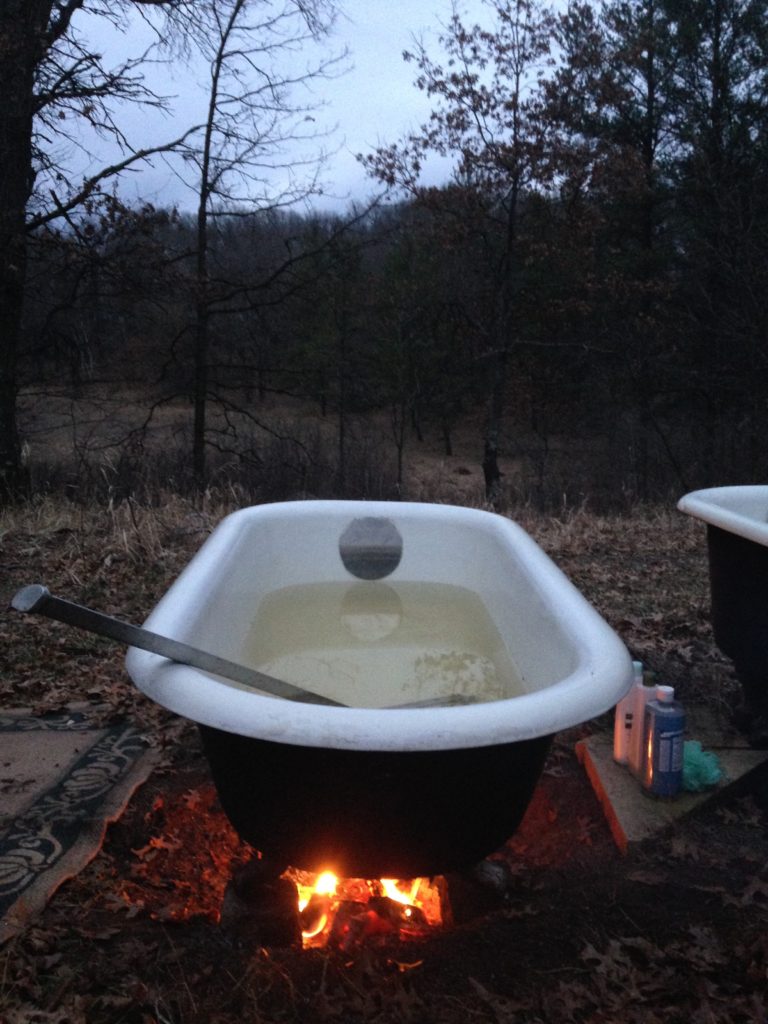
.
Thanks for joining us in the adventure!
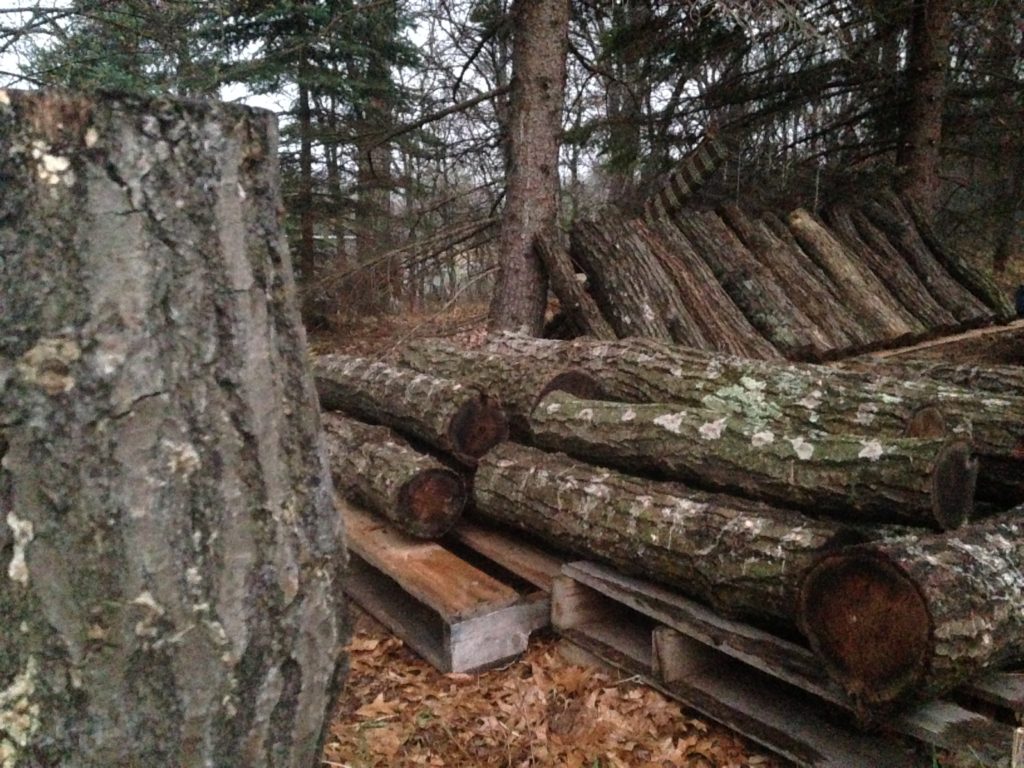
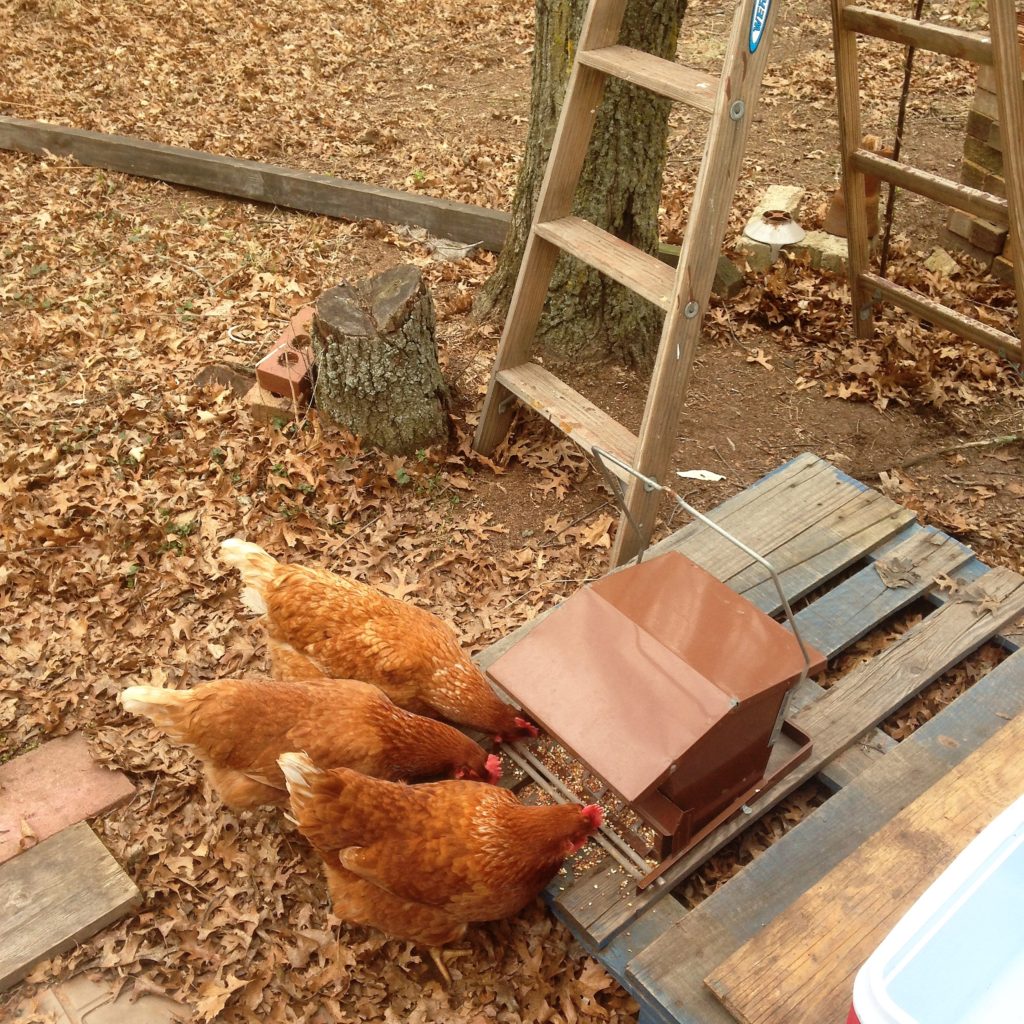
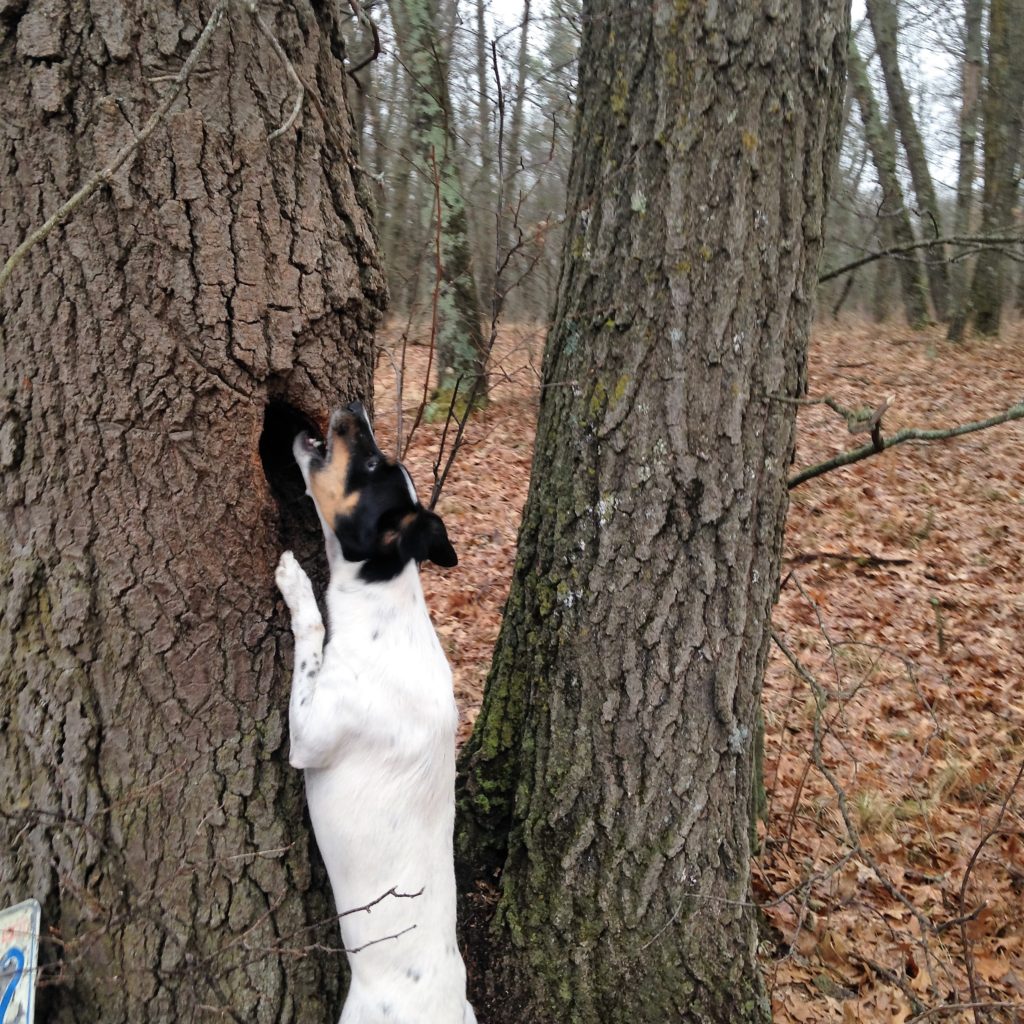
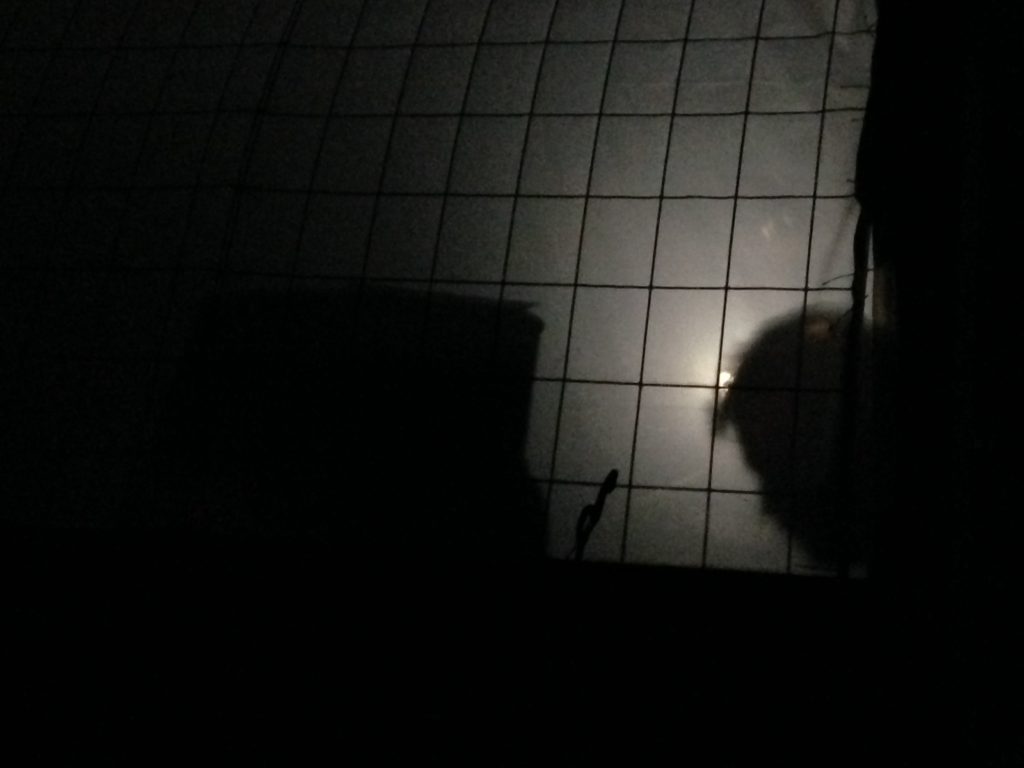
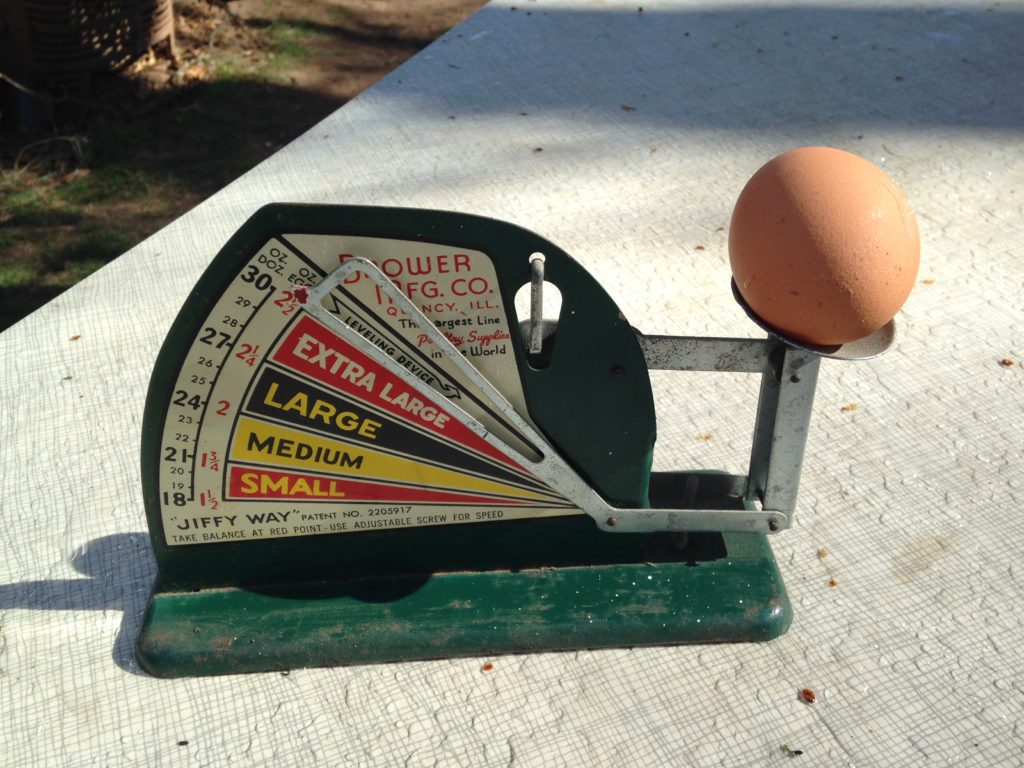
Quest for Fire: A Rocket Mass Heater for the Greenhouse
Being off grid (without utility hookups to water, gas, and electricity) is challenging even just for a dwelling – but even more so for a farm, especially in this climate. In the spring, we have to start our plants indoors, so they will be developed enough to produce before it gets too hot for the cool weather plants in summer, and before the killing frosts of fall take out the heat lovers. They all need to be kept warm day and night, especially when germinating from seeds – but they also need to be under good bright sunlight. The sunlight is great in the greenhouse, which also gets plenty warm most days if it’s not totally cloudy – but greenhouses lose heat quickly after sundown. We solved for this in previous years by nightly driving all the baby plants up to the trailer, where they slept toastily on floor-to-ceiling shelving next to the wood stove.
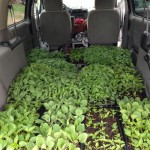
Then every morning just after dawn, we drove them all back down to the greenhouse for their daily sunshine. We worked out a good two-person method to get it done as efficiently as possible, but it was a time-consuming process – and we couldn’t have the lights on near the plants when they were inside (or they’d get leggy trying to get fed by the artificial lighting). Yeah, it worked … but we needed to come up with something better.
Heating the greenhouse at night was the obvious solution, but it seemed impossible – the plastic covering lost heat so quickly that it would cost us a fortune in propane … and we’d always be fearful that the tank was going to run out in the night, leaving all our crops to freeze to death. And of course our little solar power system was not capable of generating enough electric heat (which is inherently inefficient) to do the job. A wood stove like the one we use in the trailer would require repeated fueling throughout the night, and again, the heat would mostly be going to the roof and then out through the plastic film.
Research led us toward a possible solution – “rocket mass heaters,” which use small amounts of wood burned efficiently at high temperatures to heat up a thermal mass, which then slowly radiates the heat outward for many hours after the fire has gone out.
It would still be a challenge to heat the whole greenhouse with this method unless we built a prohibitively large heater, however. Hmmm.
Well, we’d already been experimenting with a technique that Elliot Coleman promotes, using row cover fabric to create a greenhouse-within-a-greenhouse – just putting the plants on the ground and covering them inside a low tunnel of fabric kept them warmer than the surrounding air, thanks to the day’s heat in the soil. That only got us a few degrees, but it was a crucial difference when temps might be just barely dipping below freezing.
What if we did the same thing atop a thermal mass? It seemed like a winning idea – so we decided to build a heated bench sized for seed trays, and put a cover over them at night to hold heat in.
For a year, we researched and gathered materials for the build – scavenged from garbage and the Free section of Craigslist; two trailer loads of clay from a retired sculptor, stove pipe of various diameters, a 55 gallon drum, river rocks from the neighbor’s pile they’d unearthed when building their house, cement board, and bricks – the best score of all was a huge free load of white “insulative firebricks,” which withstand high heat without heating up much themselves – ideal for our purposes.
Last fall, after the killing frost had come and the 2015 CSA was over, we got to work, starting to test combustion chamber designs the day after our CSA potluck.
There was a long period of trying out different brick layouts – the proportions of the combustion chamber are crucial to get right – for the rest of the fall, “CSA” ceased to mean “Community Supported Agriculture,” and became ‘Cross Sectional Area” – the entire system had to maintain the same CSA throughout the system, from fuel feed to exhaust, from rectangular tunnels to round pipes. I won’t bore you with all of the proportional rules that had to be followed, but know there was a lot of subtle and annoying math at this stage.
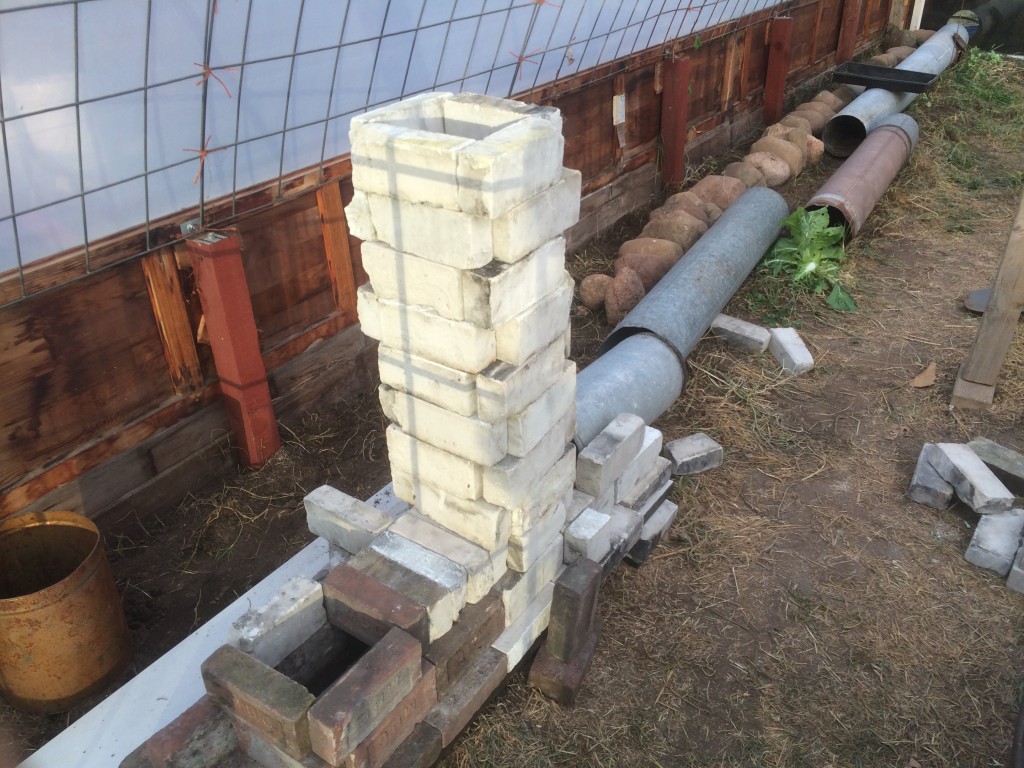
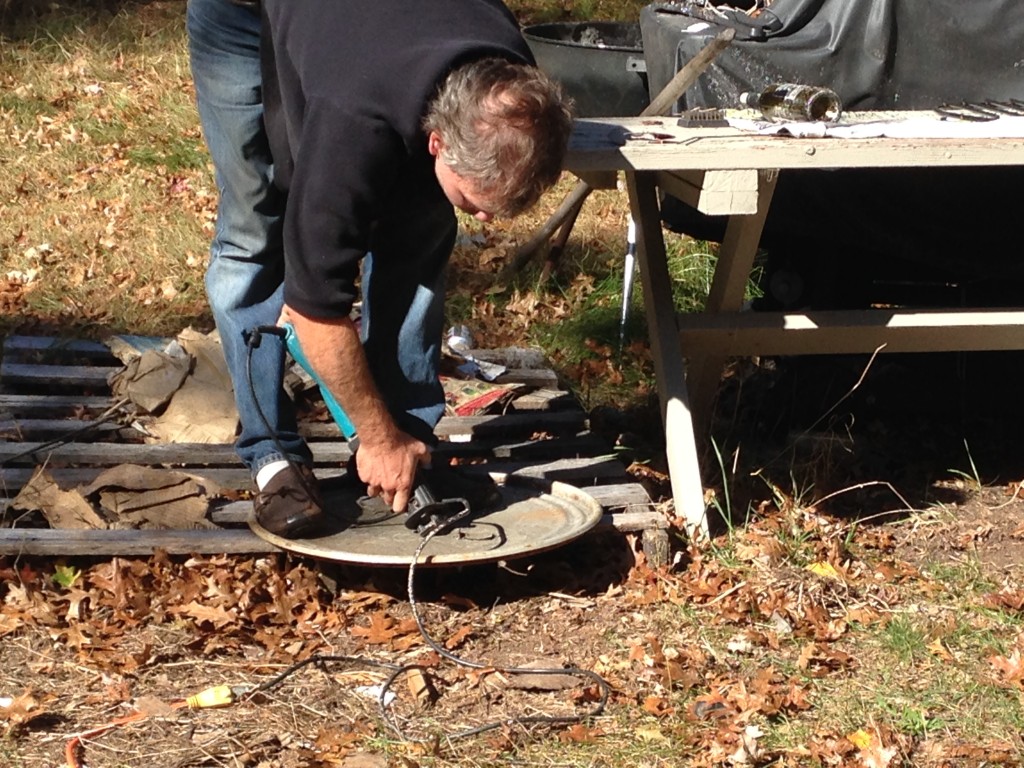
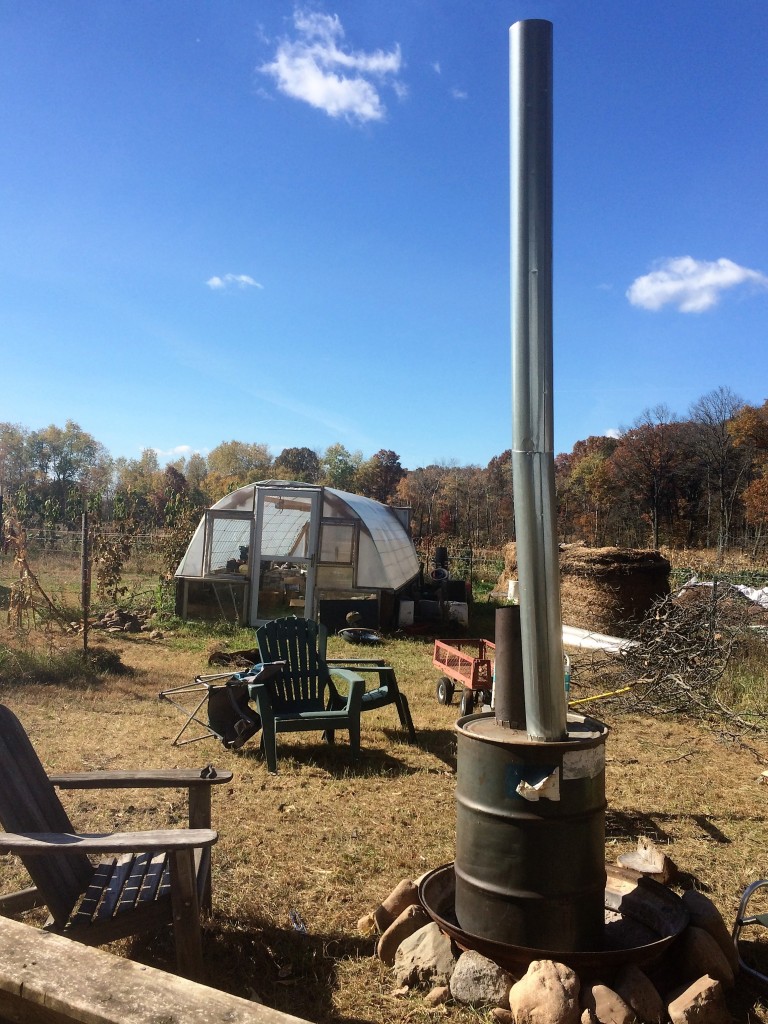
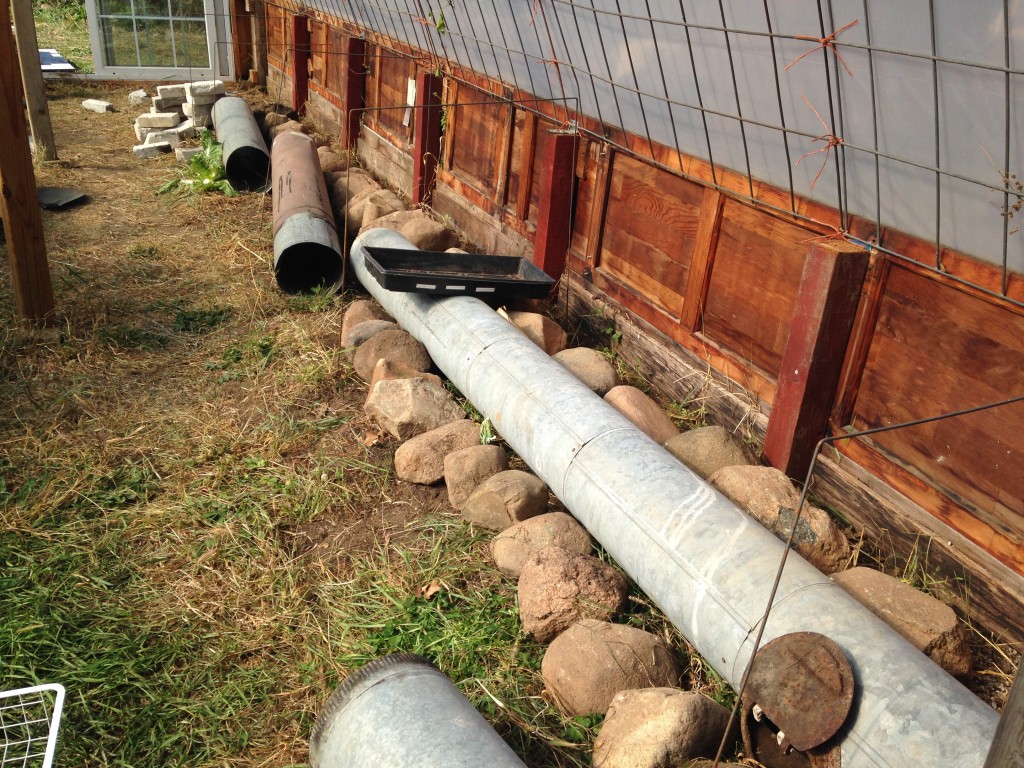
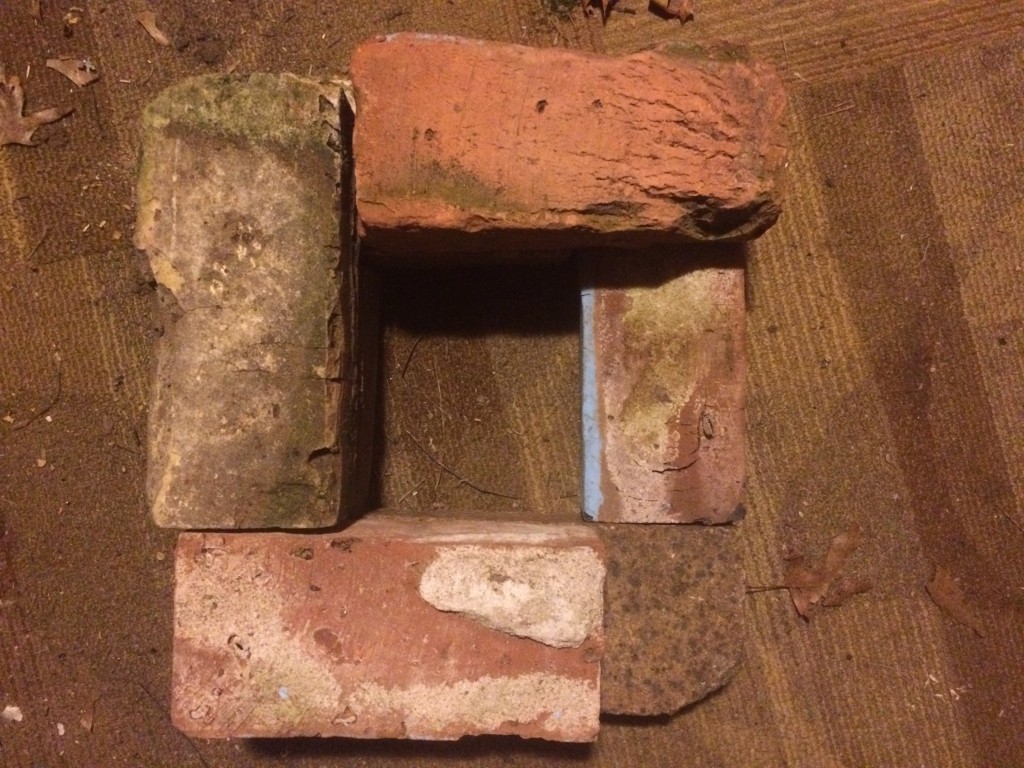
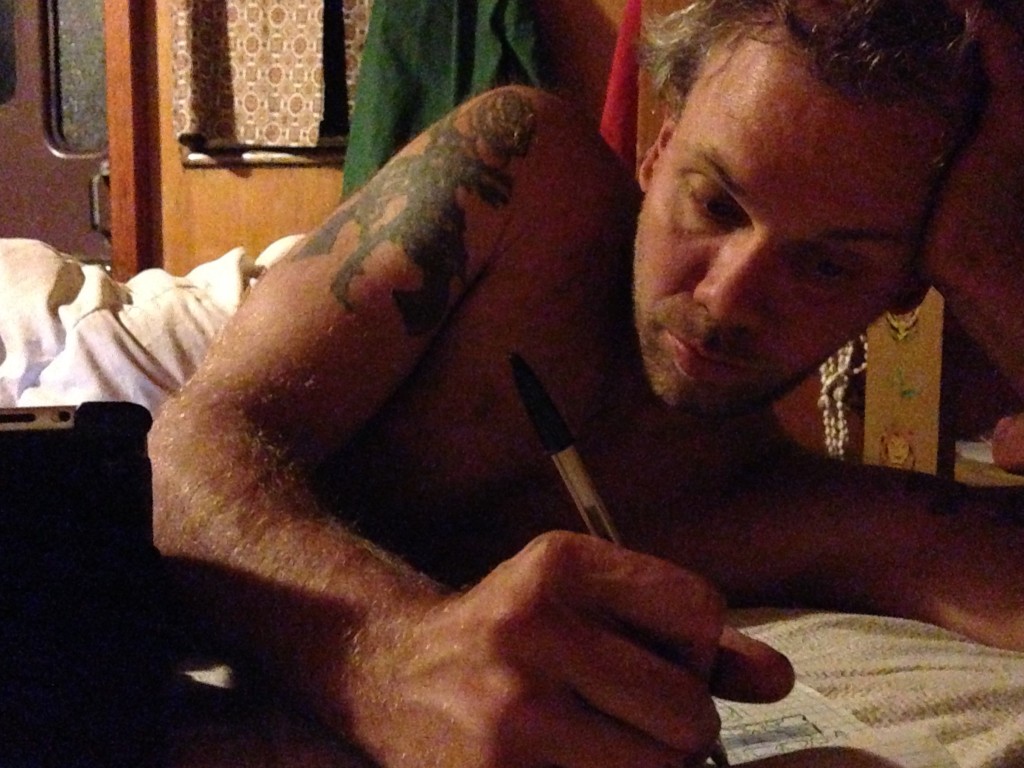
Many variations were tried out and discarded in the design process. The red bricks are used in the fuel feed for their durability, while the softer insulative bricks were used throughout the rest of the combustion system.
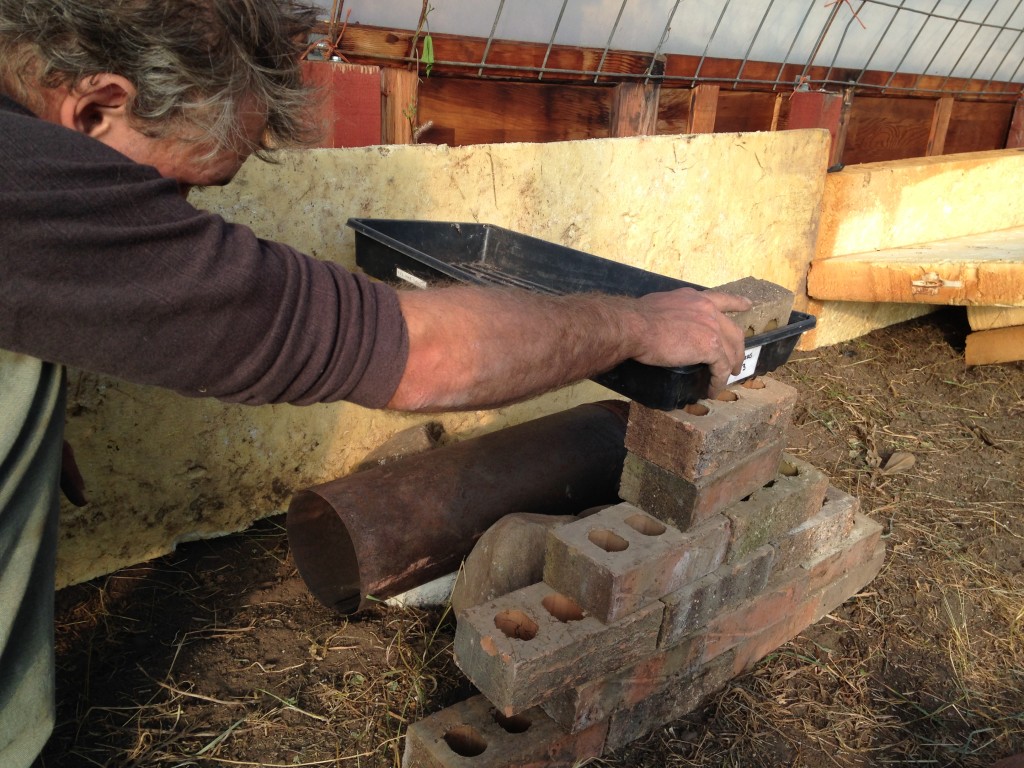
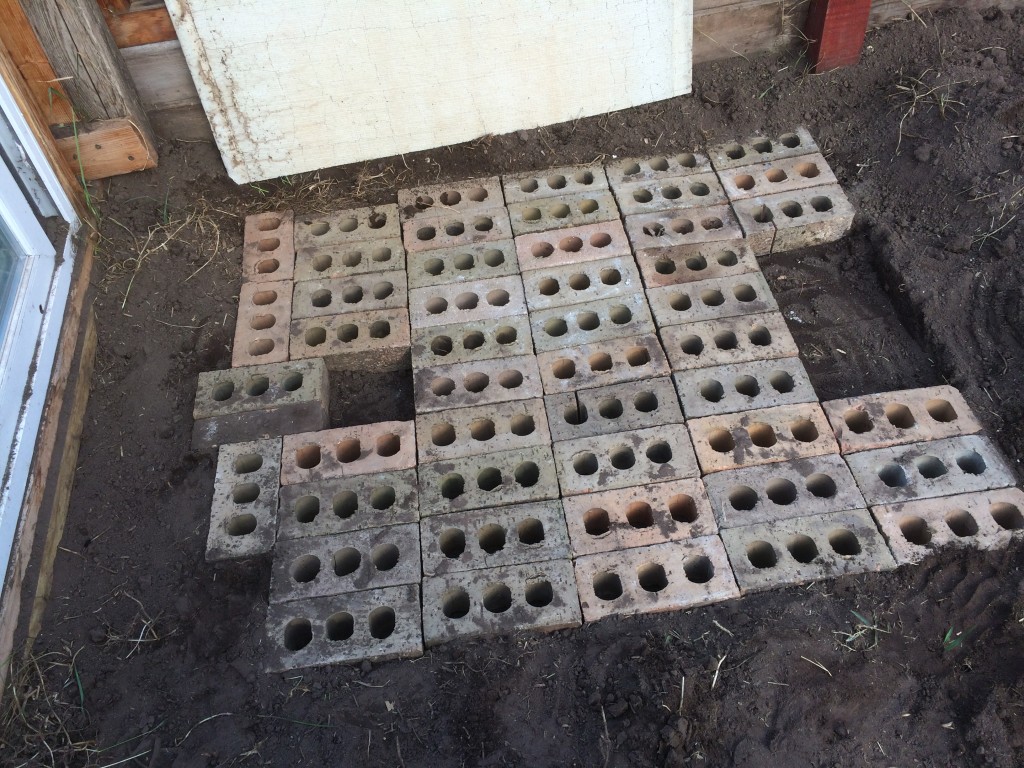
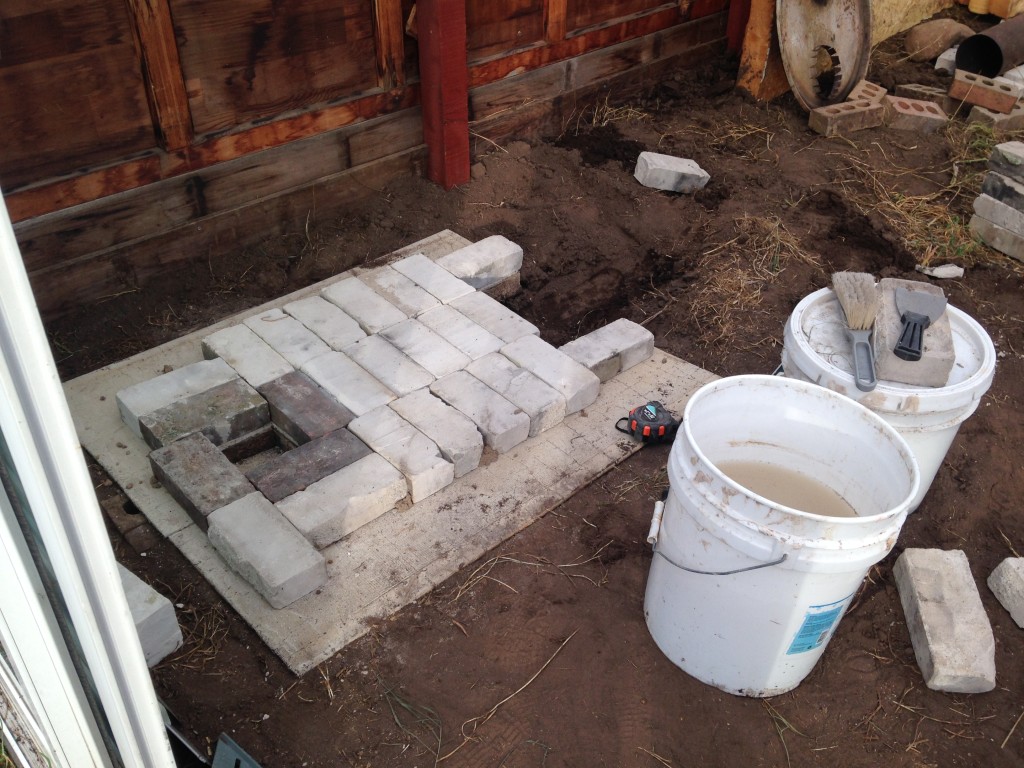
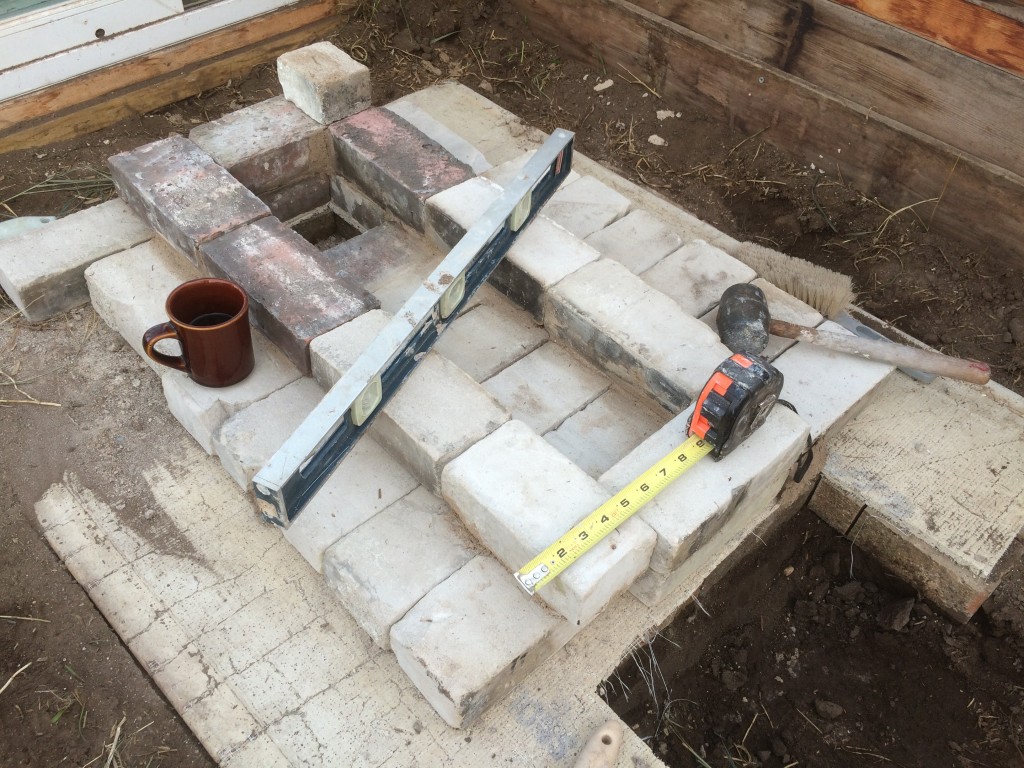
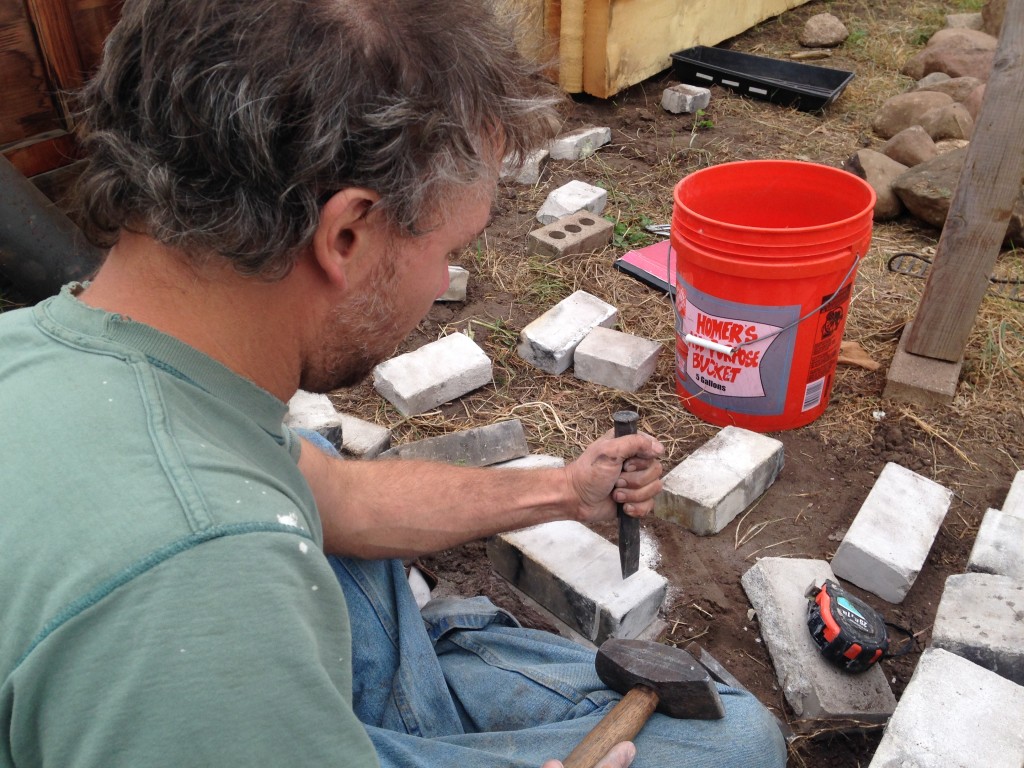
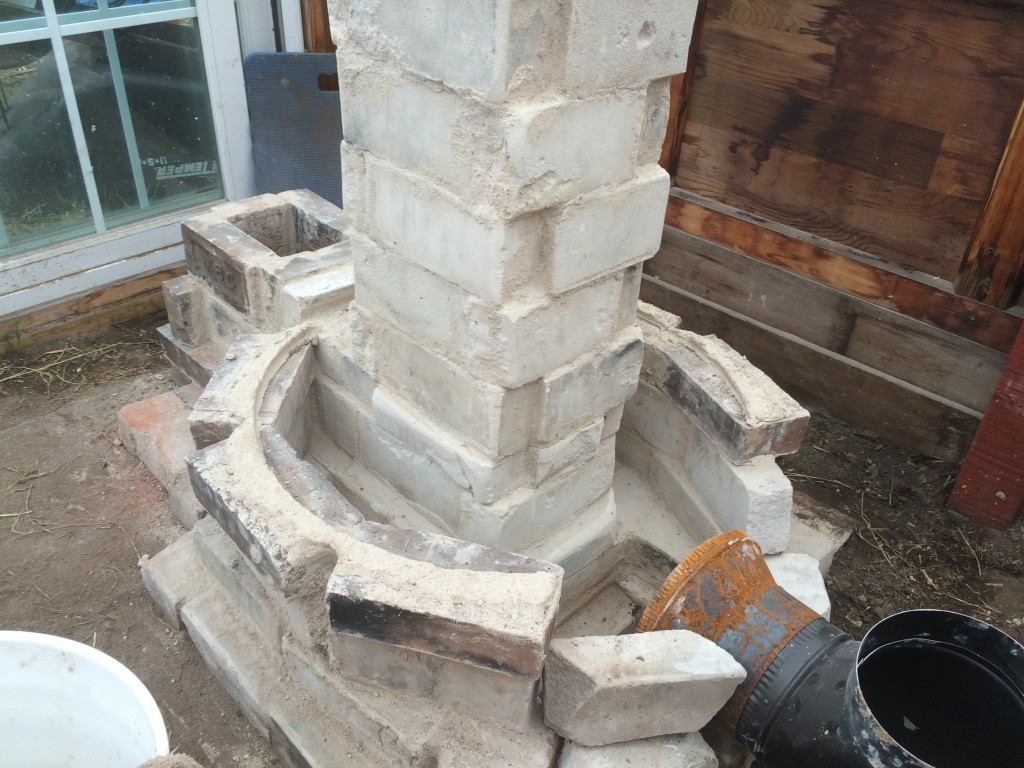
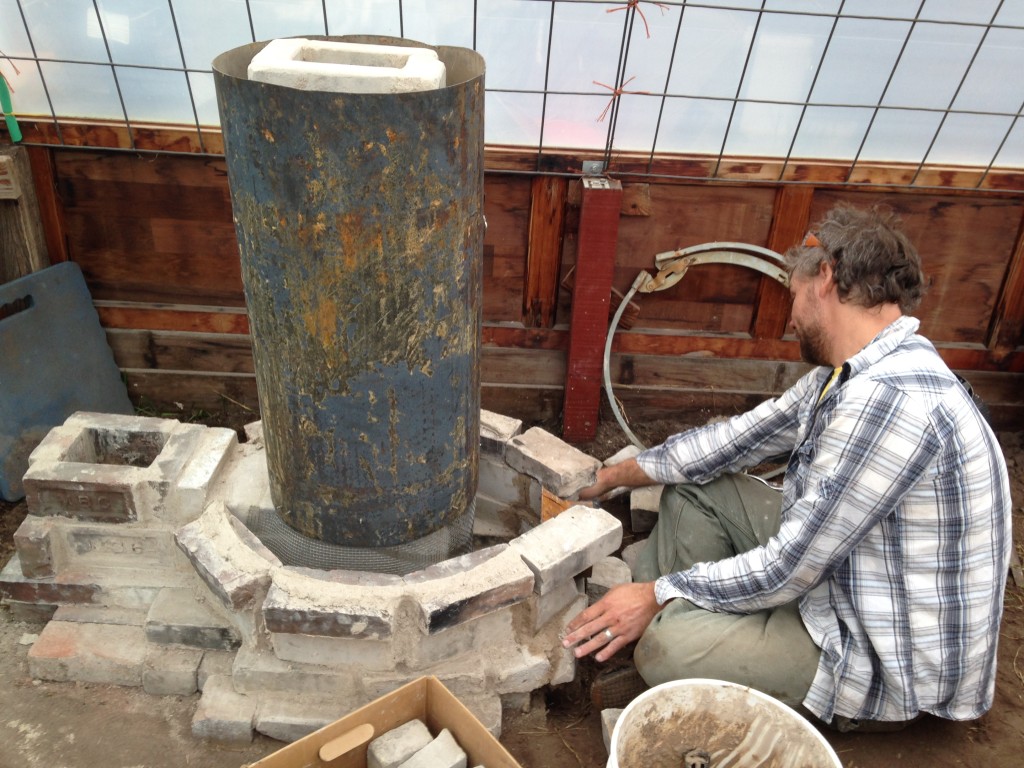
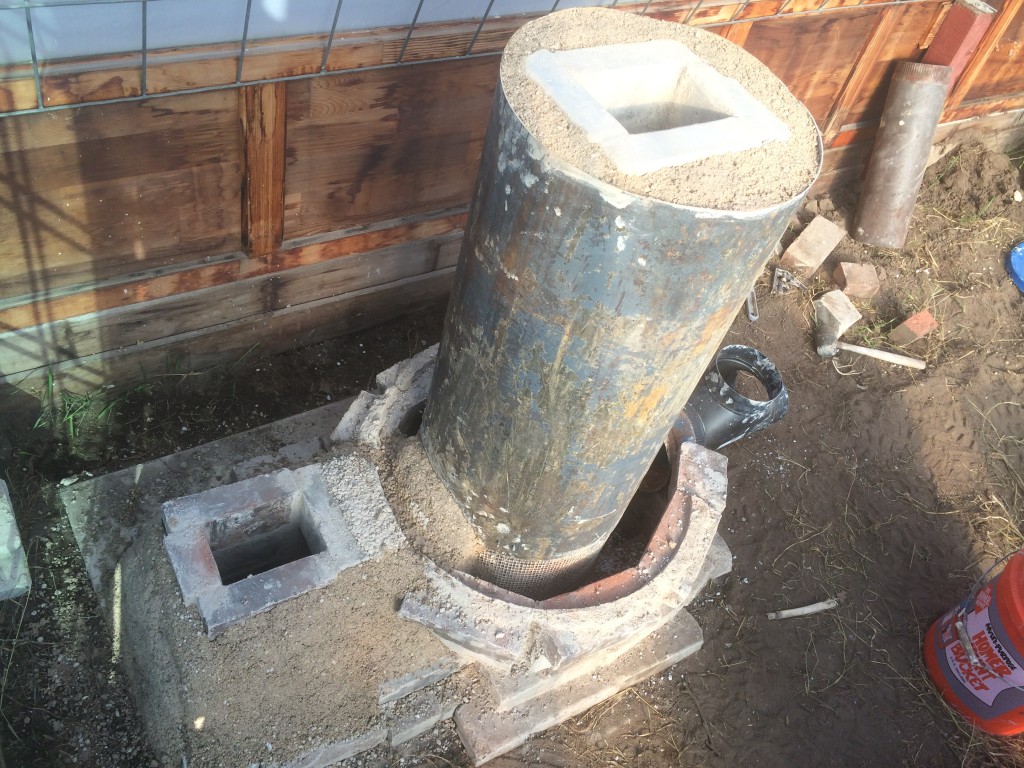
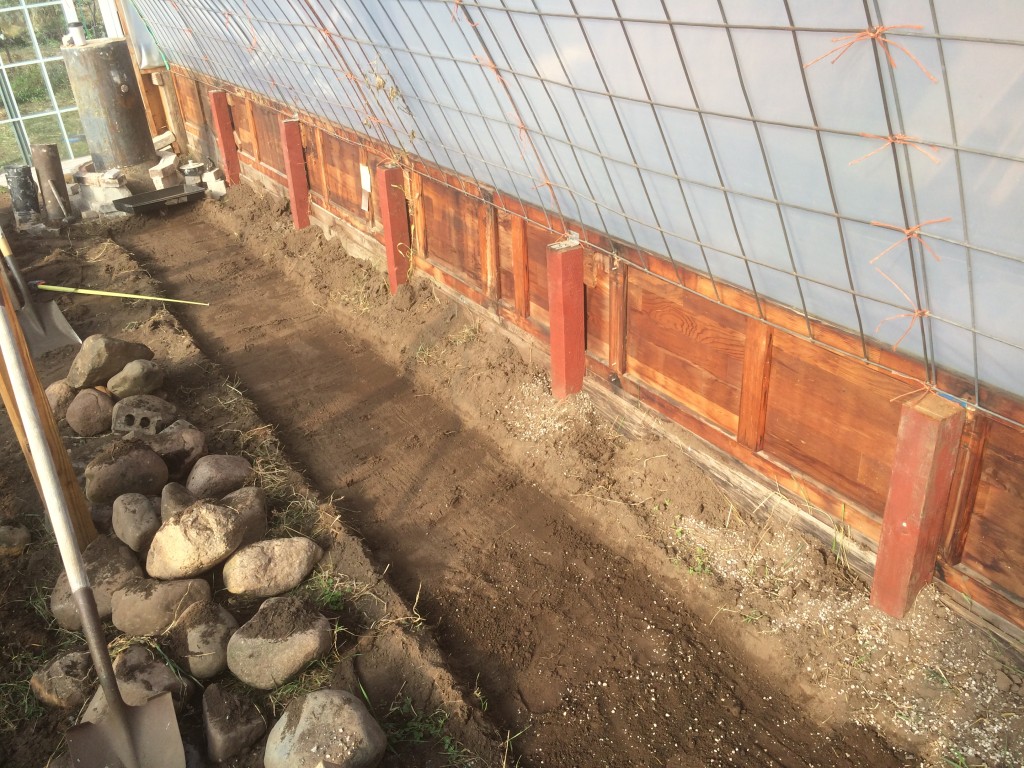
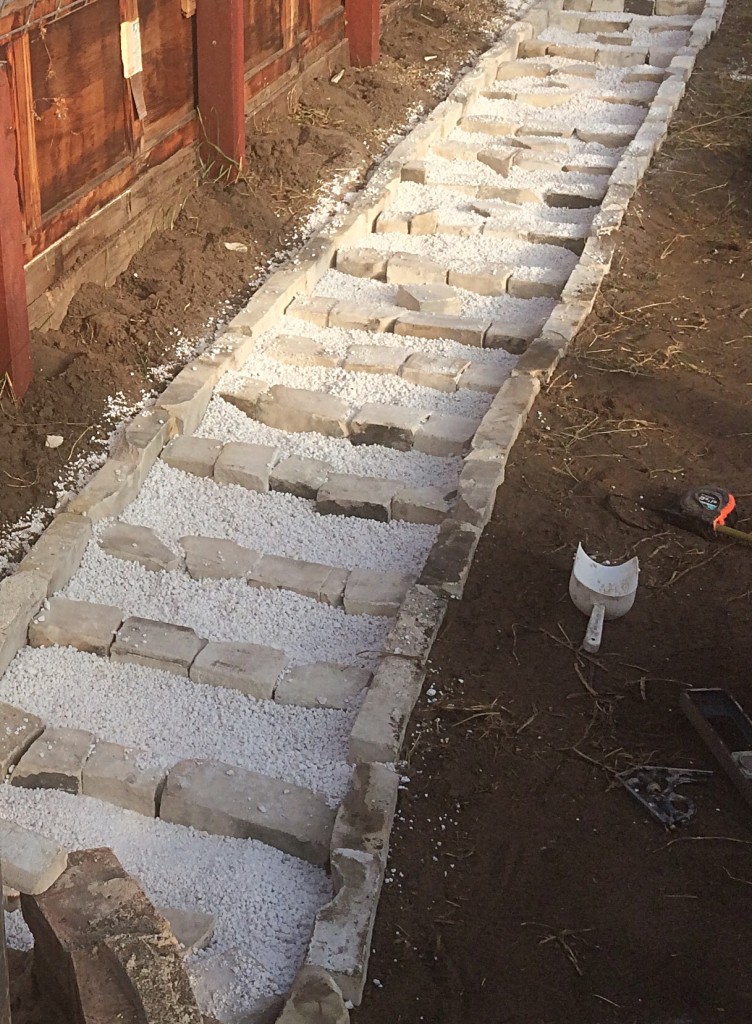
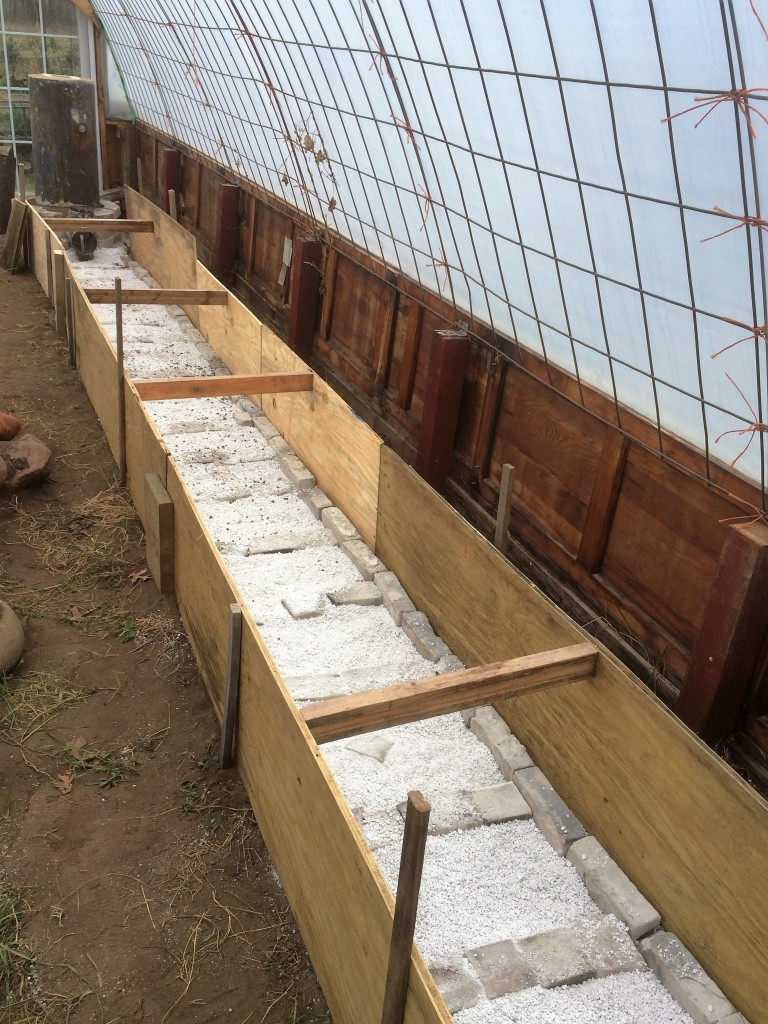
And then winter came, and we hit the road, leaving the wet clay of the combustion chamber to slowly dry out over the wintertime.
When we returned in March, we got to work on the thermal mass bench … which turned out to be a lot more work than we’d bargained for.
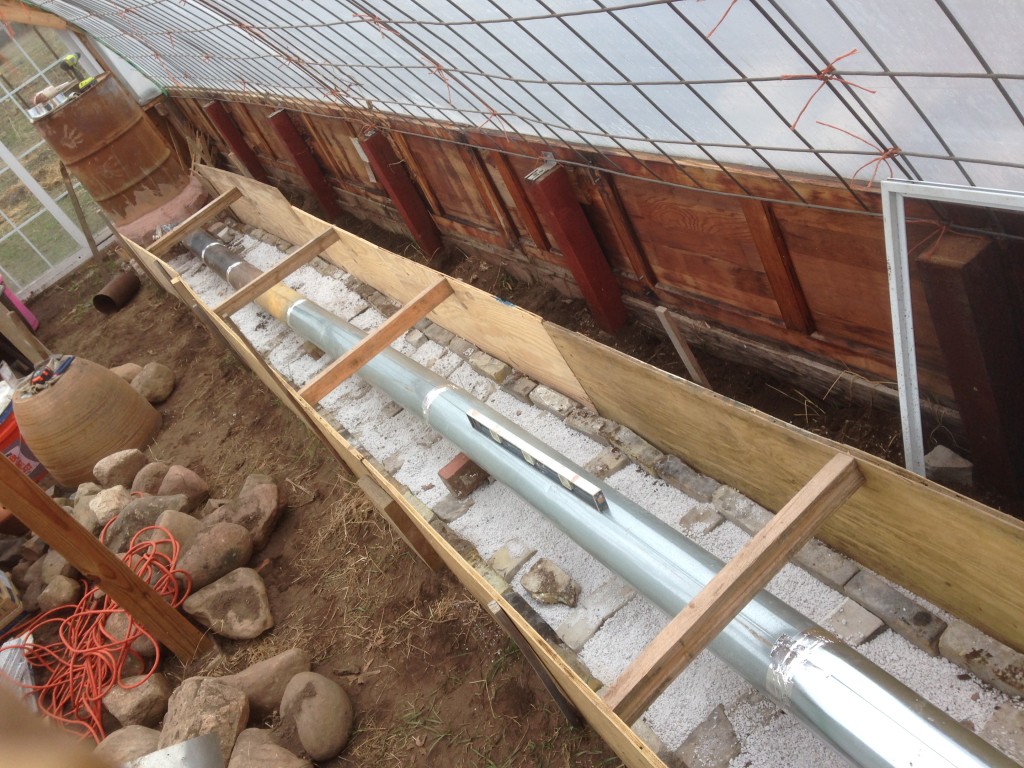
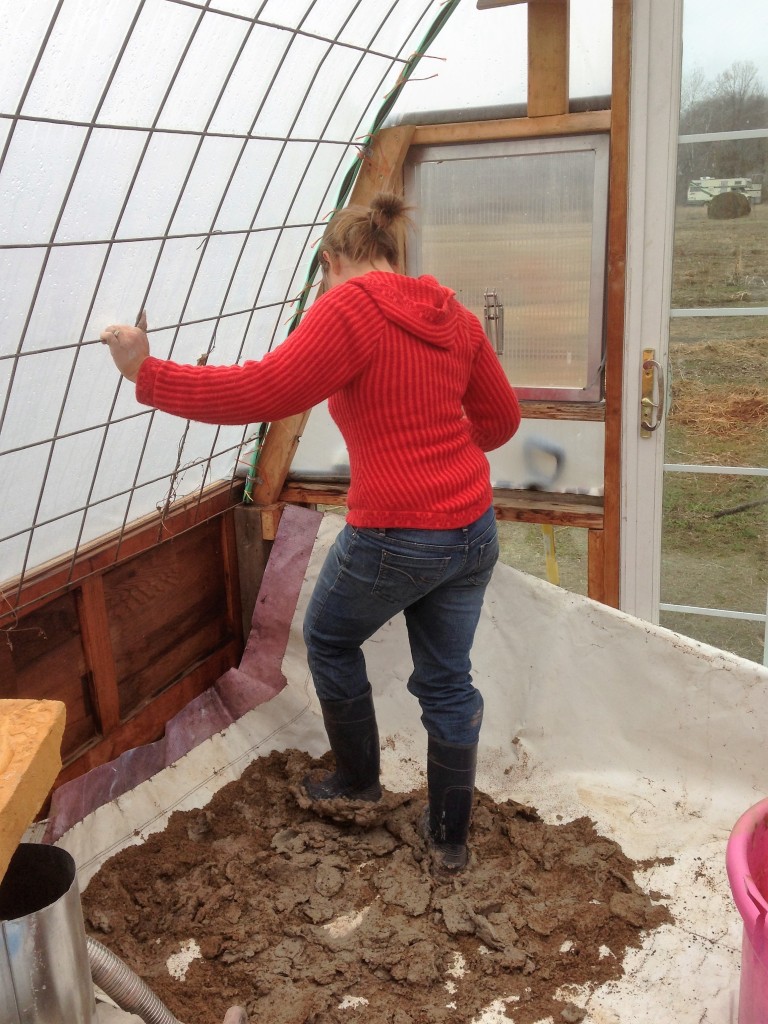
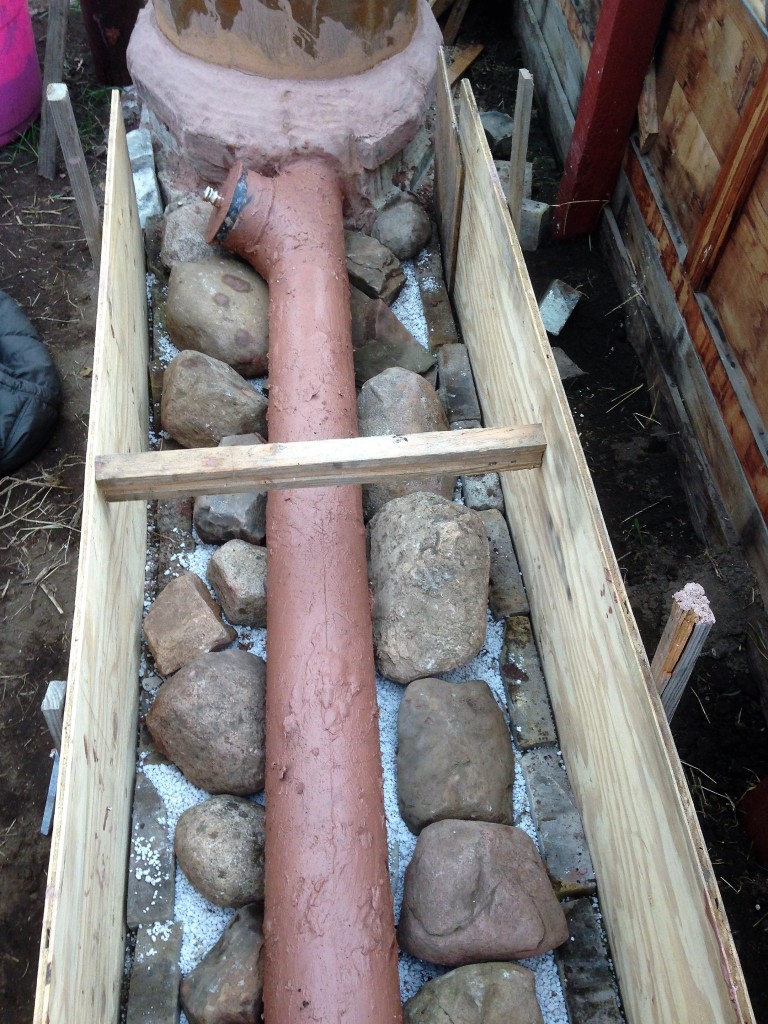
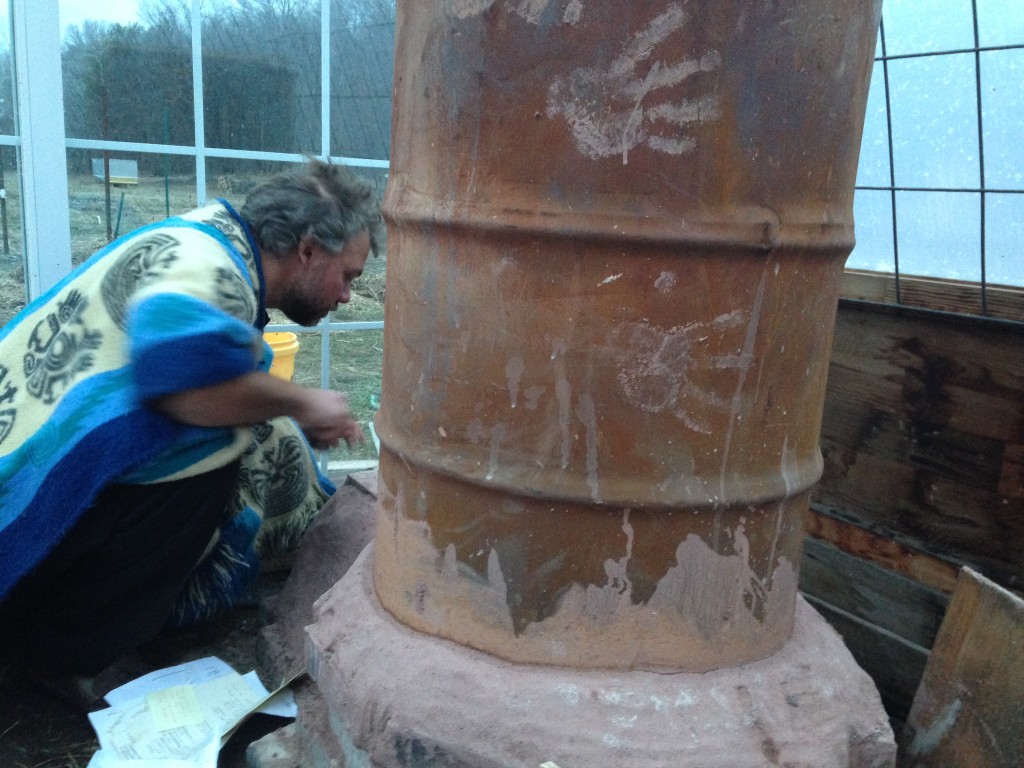
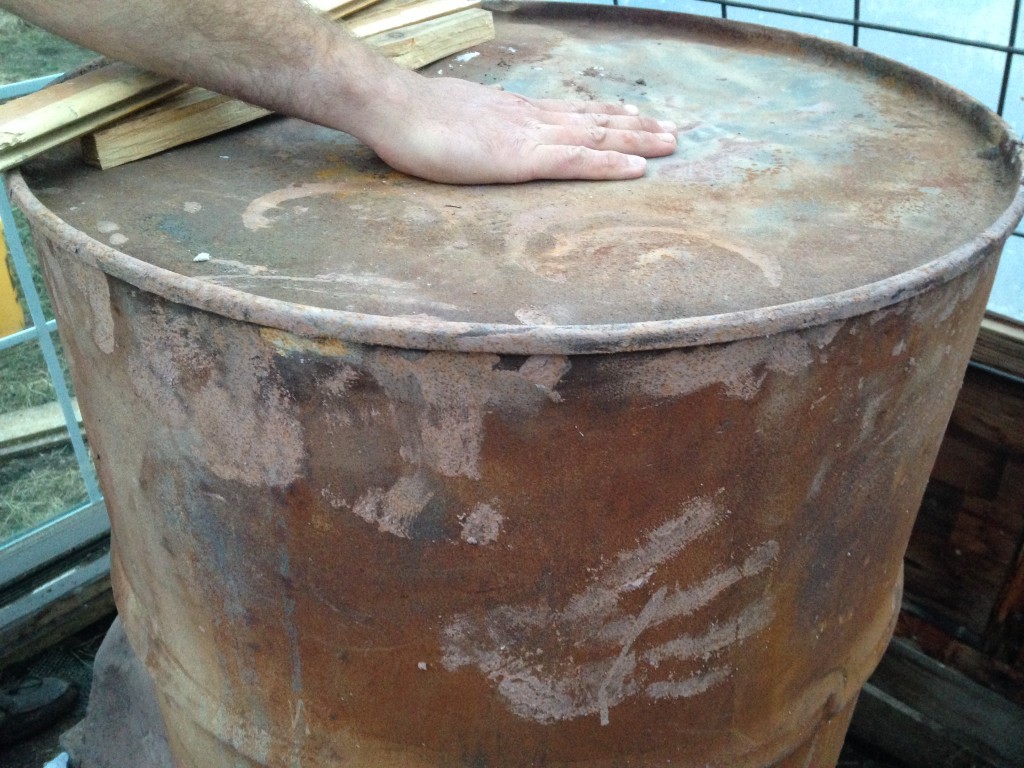
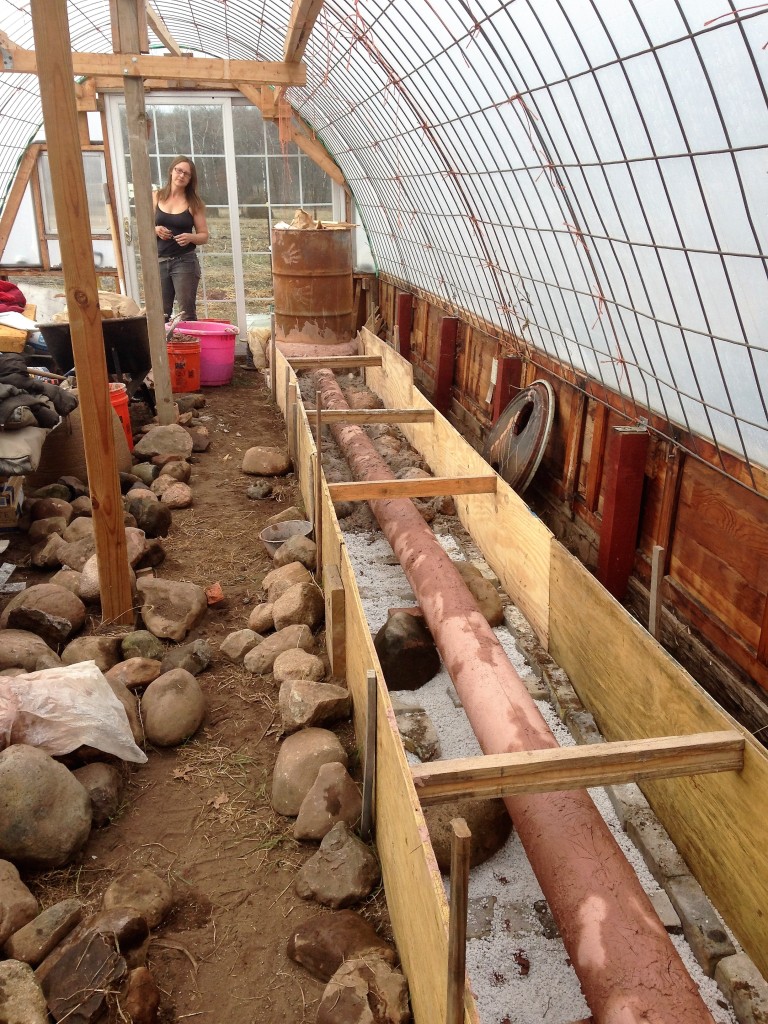
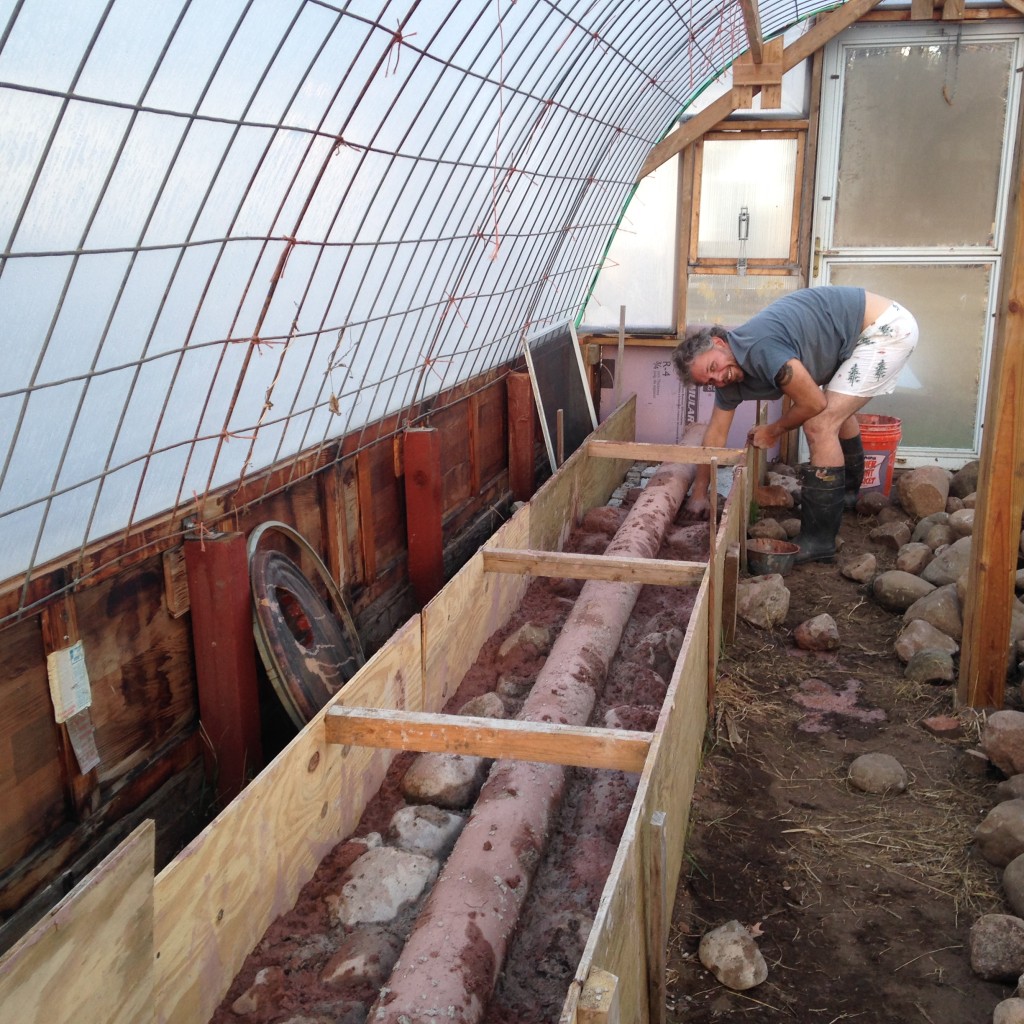
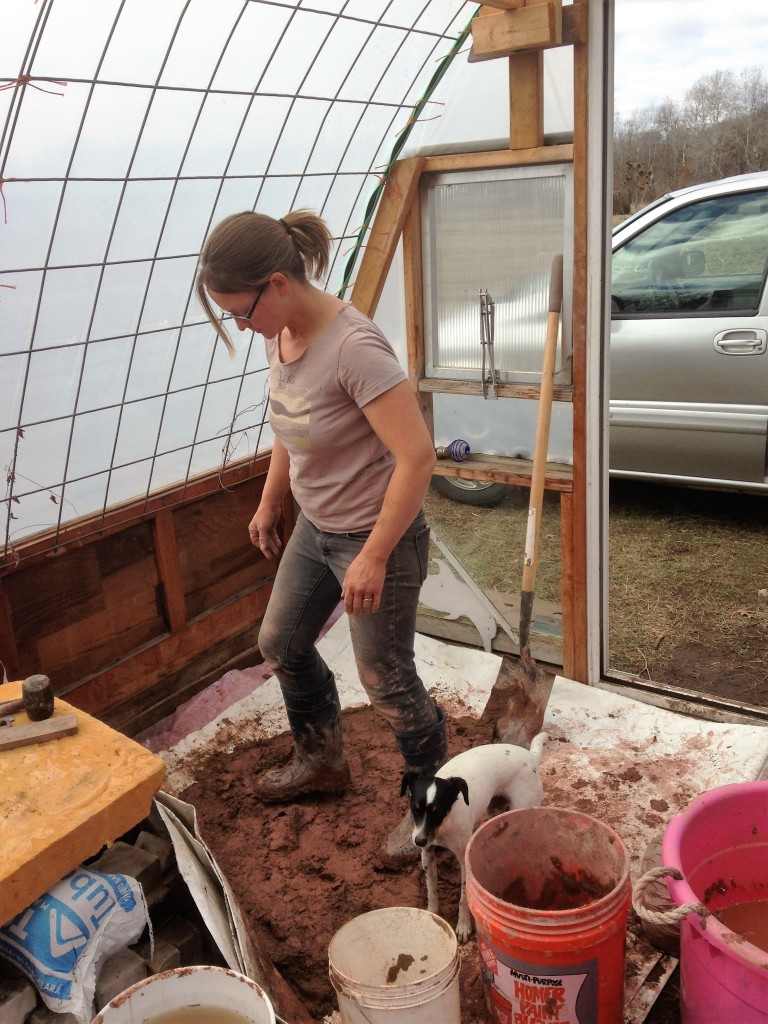
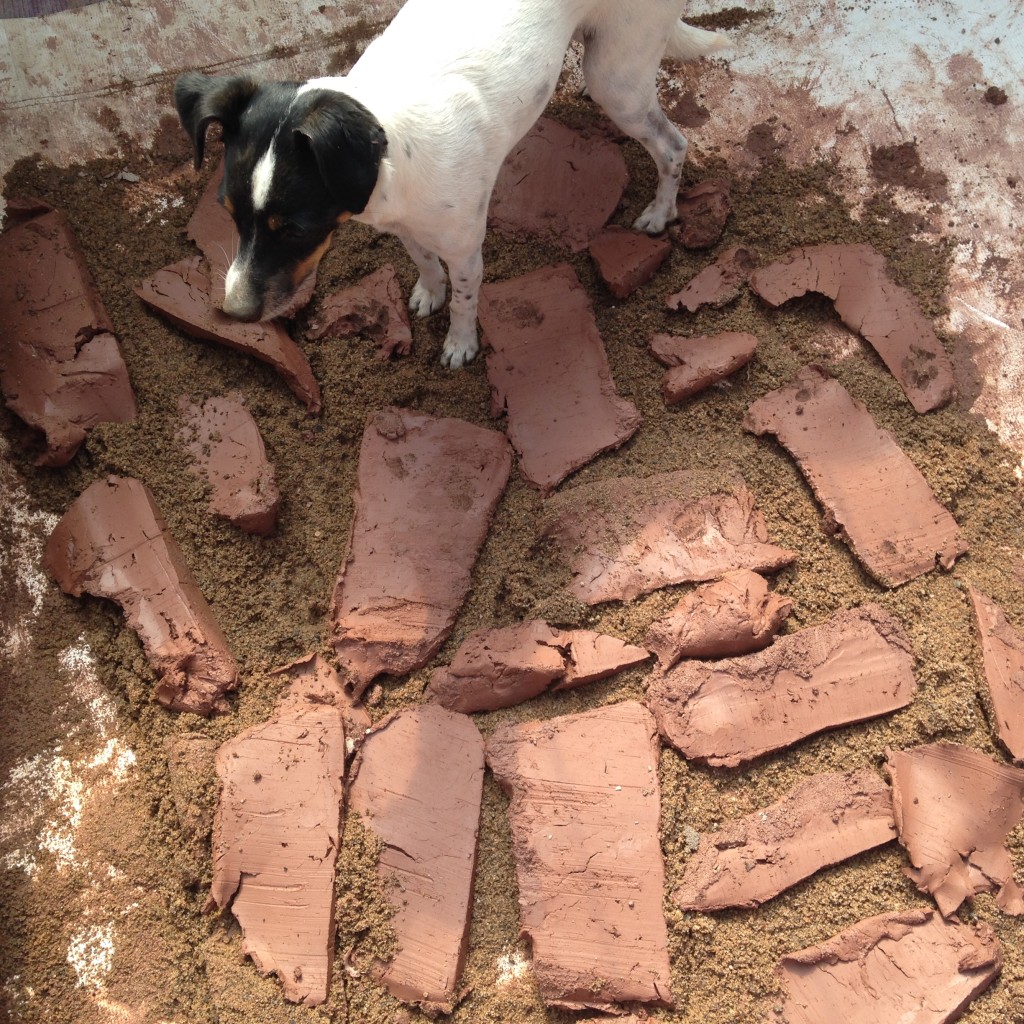
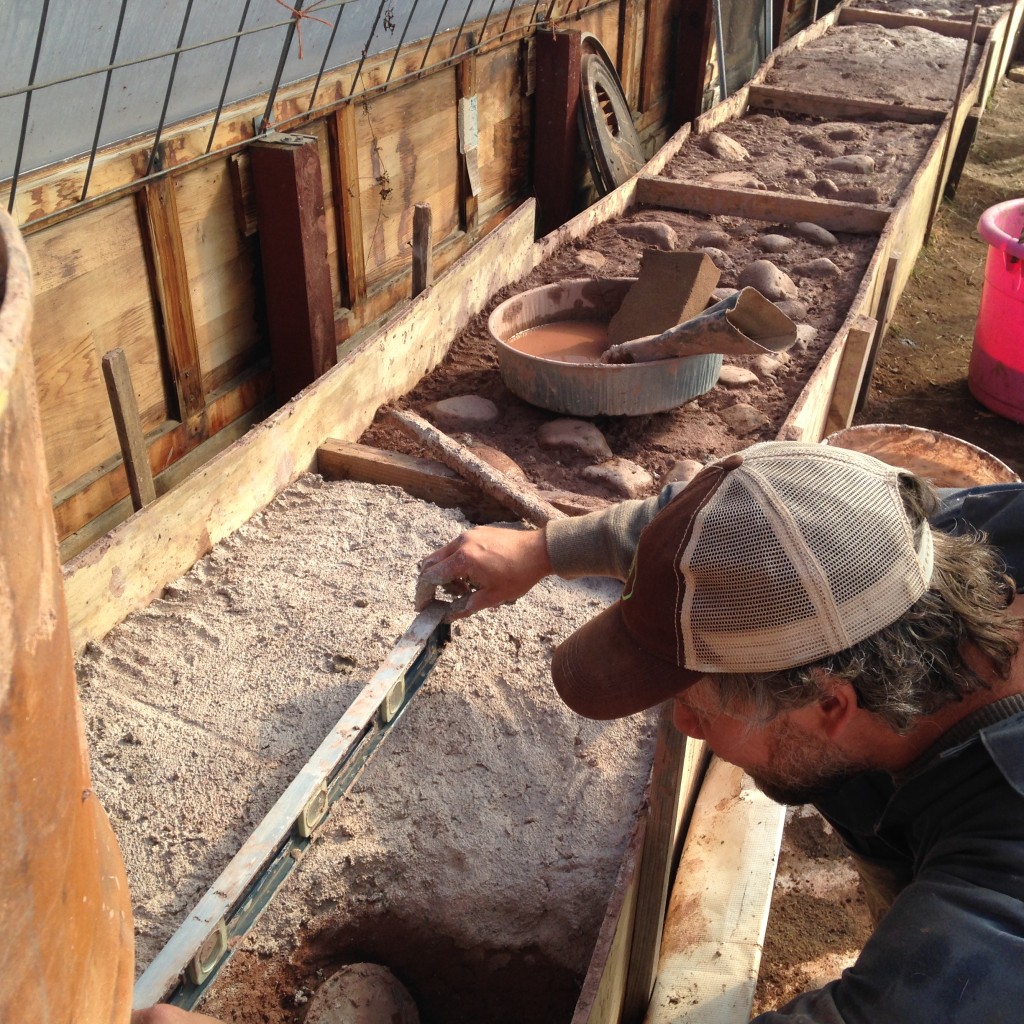
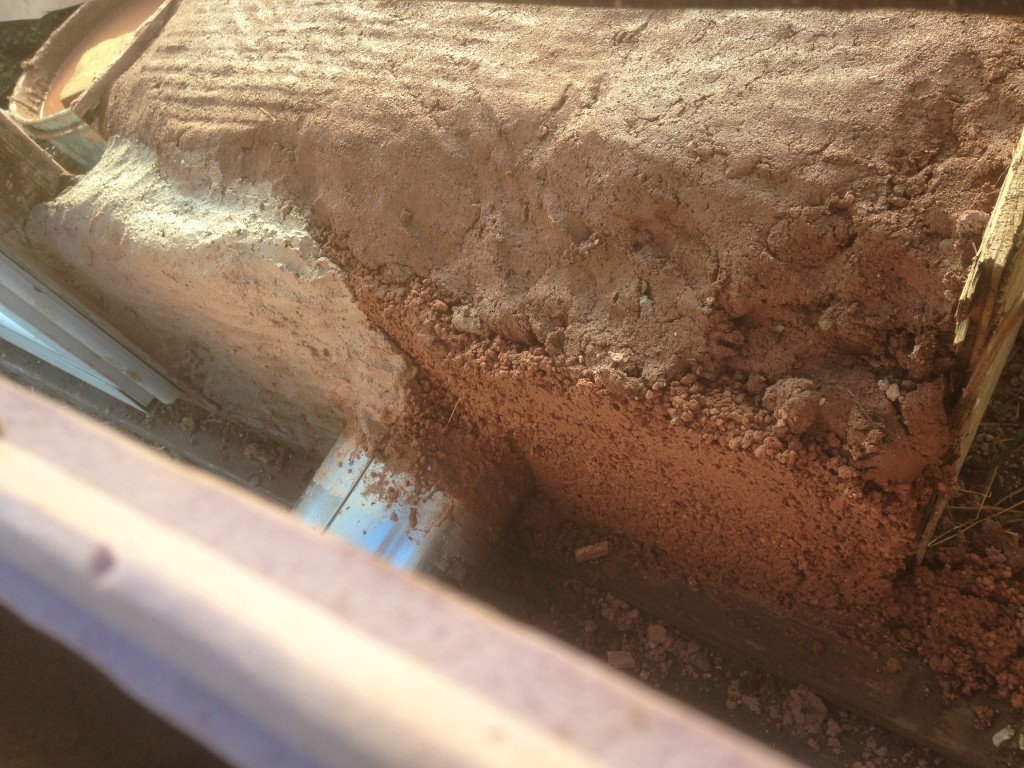
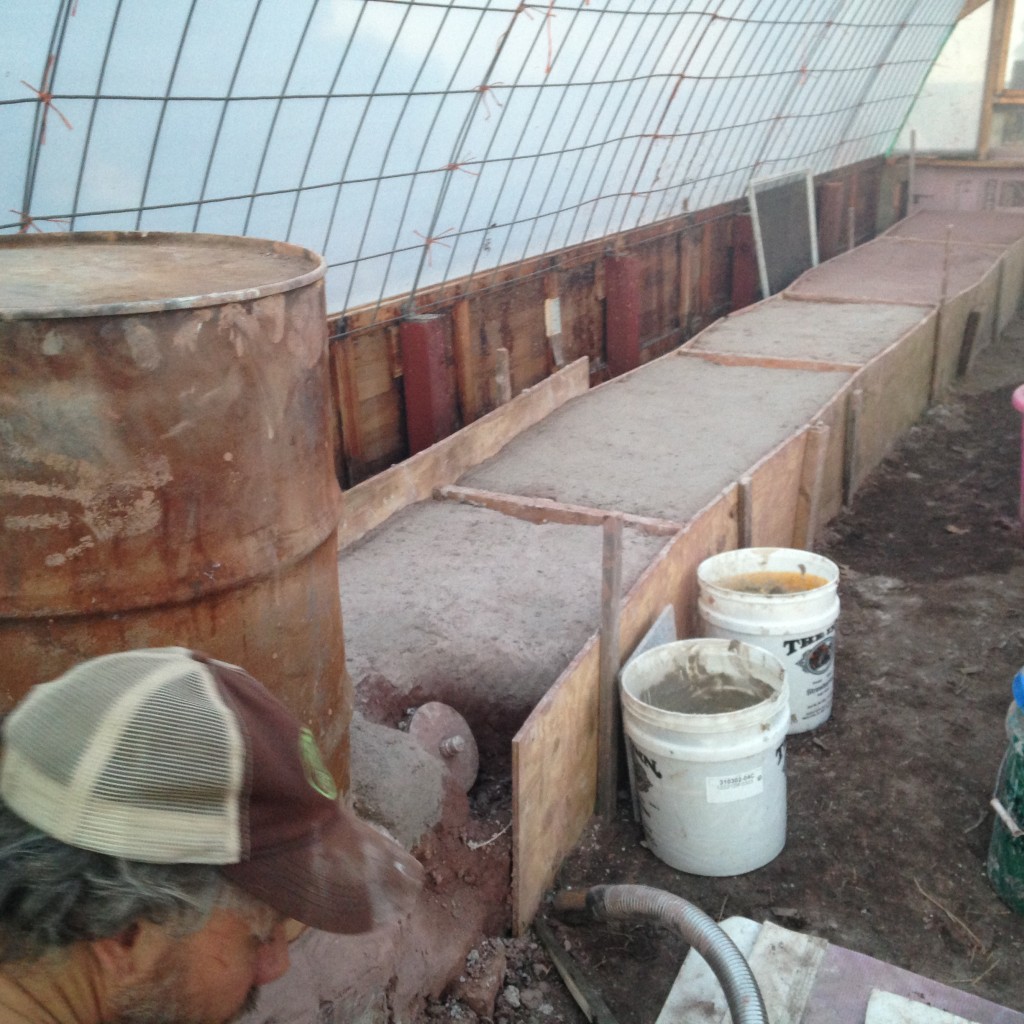
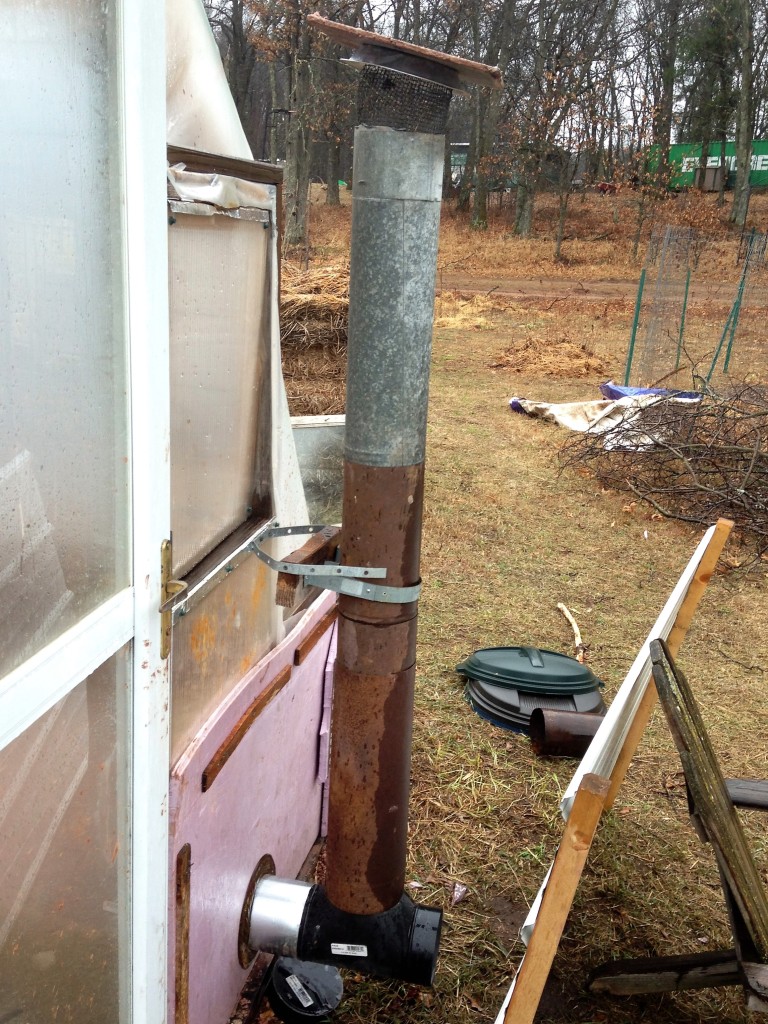
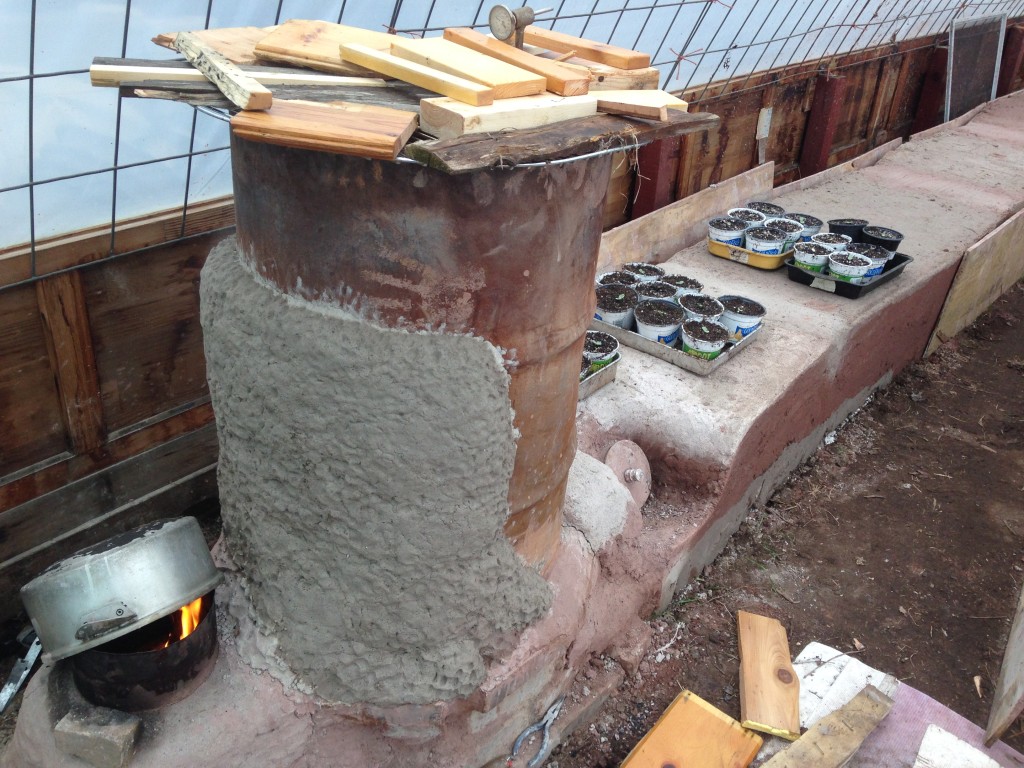
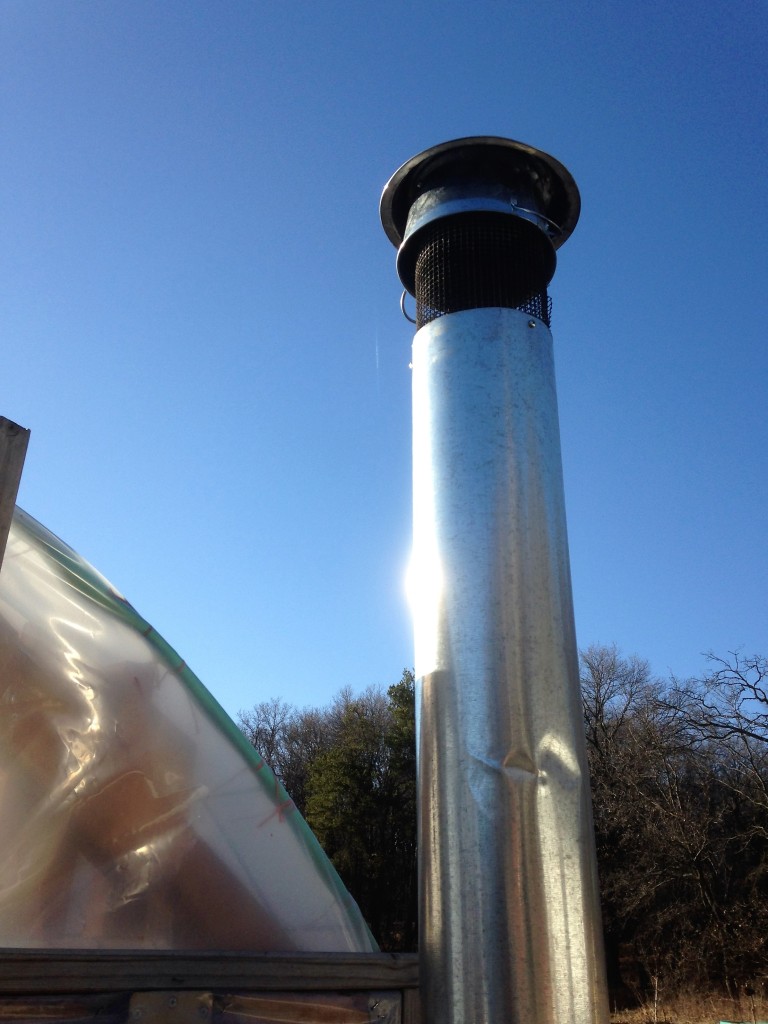
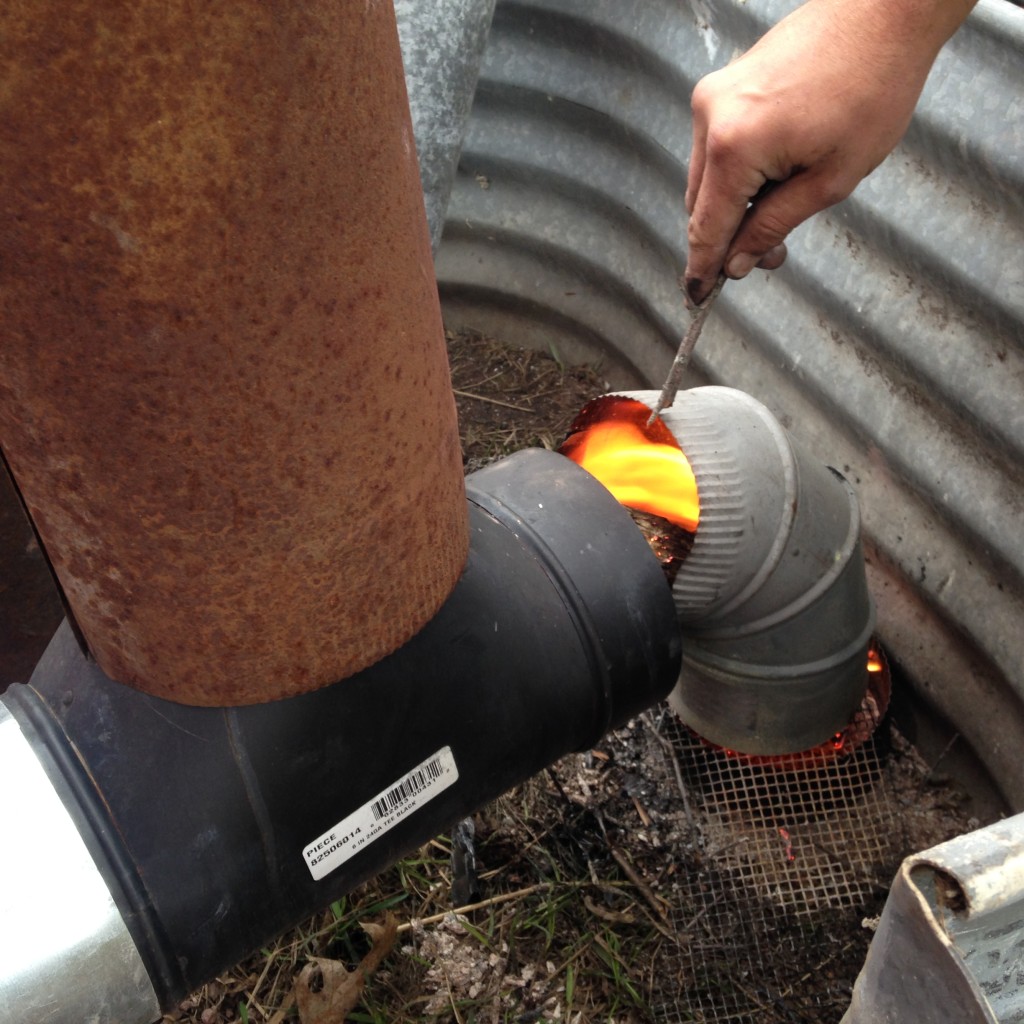
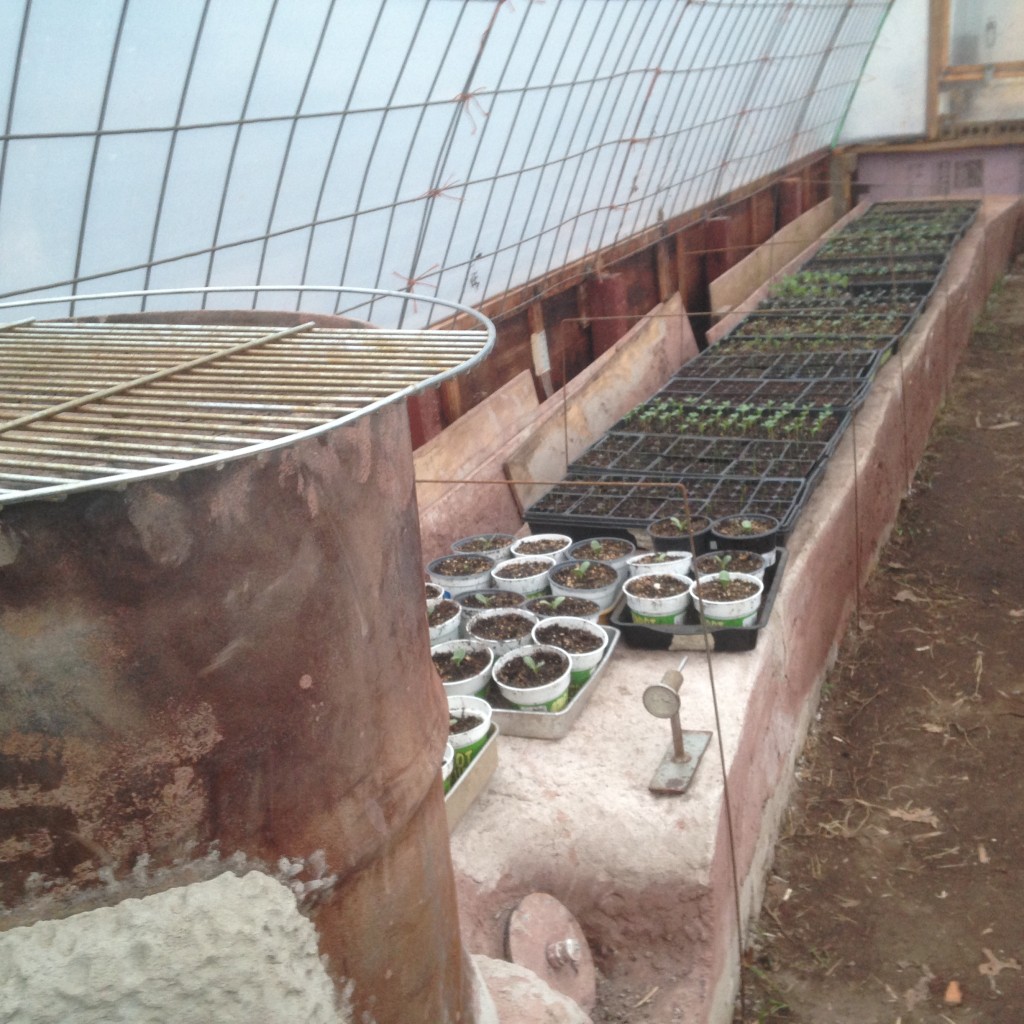
Before the chimney was upgraded further and before the thermal mass was fully dry – it was already working! Temperatures on the plant try bench stayed over 20 degrees warmer than outside, night after night – with no need to tend the fire after bedtime, and zero risk of the heat going out in the night – you can’t stop a warm giant rock from radiating! Plus it was warming the soil itself, and not just the air around the plants – great for happy, healthy root development.
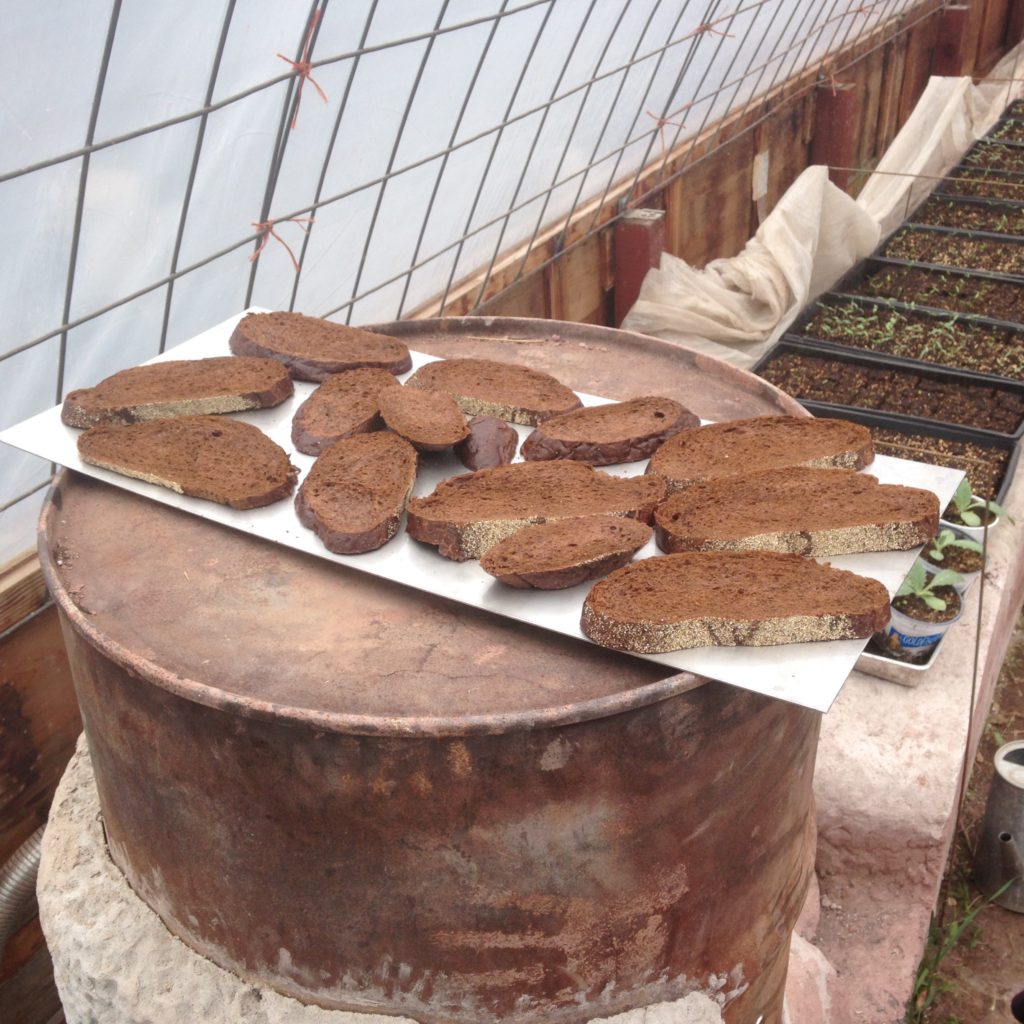
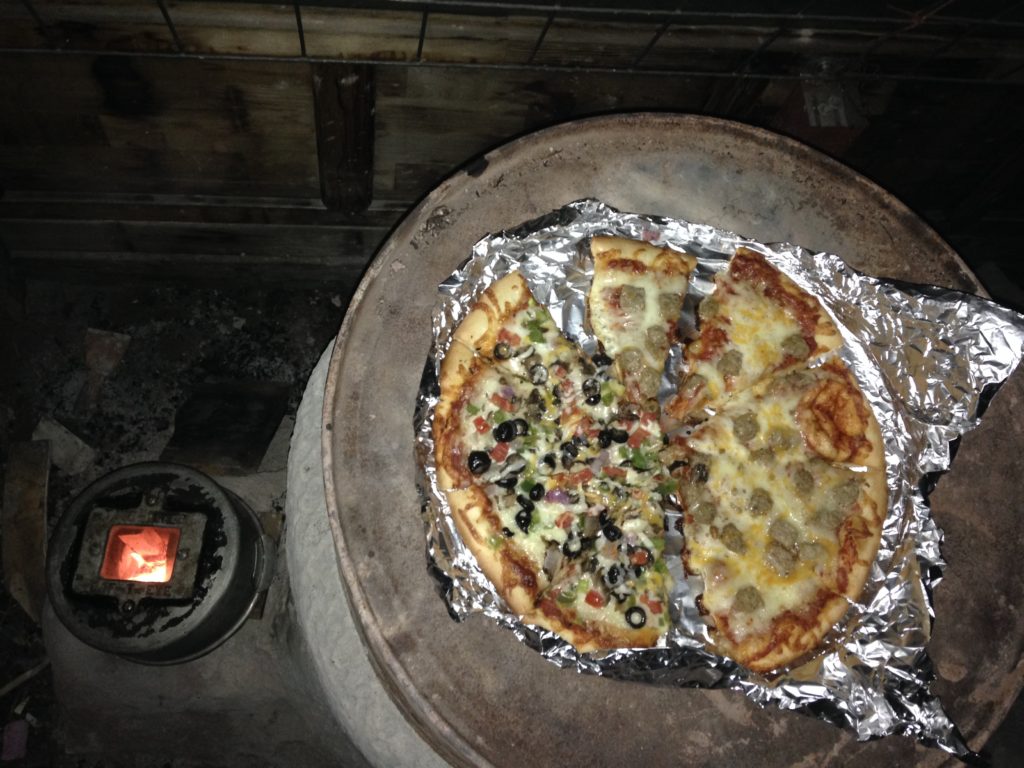
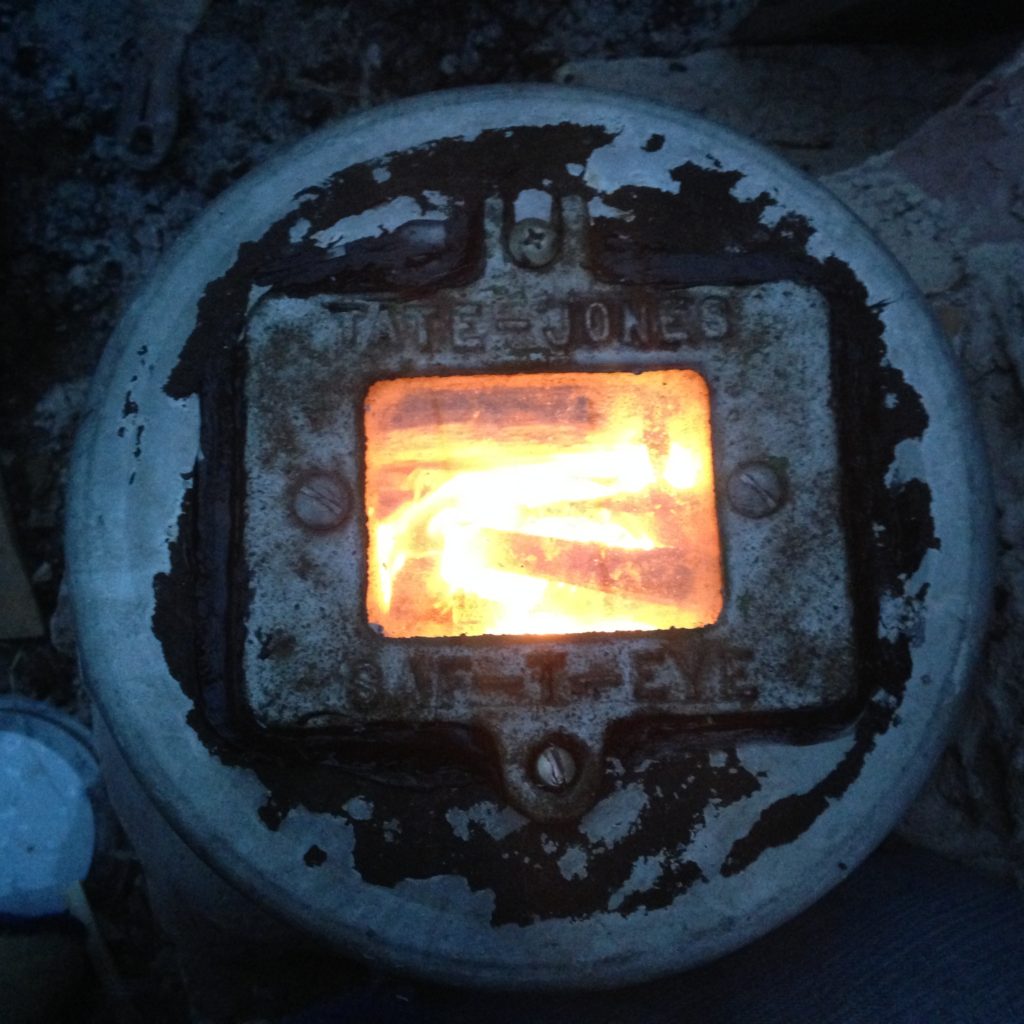
It’s been a success. In recent nights just below 40 degrees, it kept the hot weather plants happily over 60 all night – maintaining the same 20+ degree heat increase seen at lower temps. It feels great to have it finally done, and really working wonderfully for our needs. It was a lot of work, but it was absolutely worth it. Plus, now we have experience in mass heater construction, so a mass heater in a future home is definitely a possibility …

